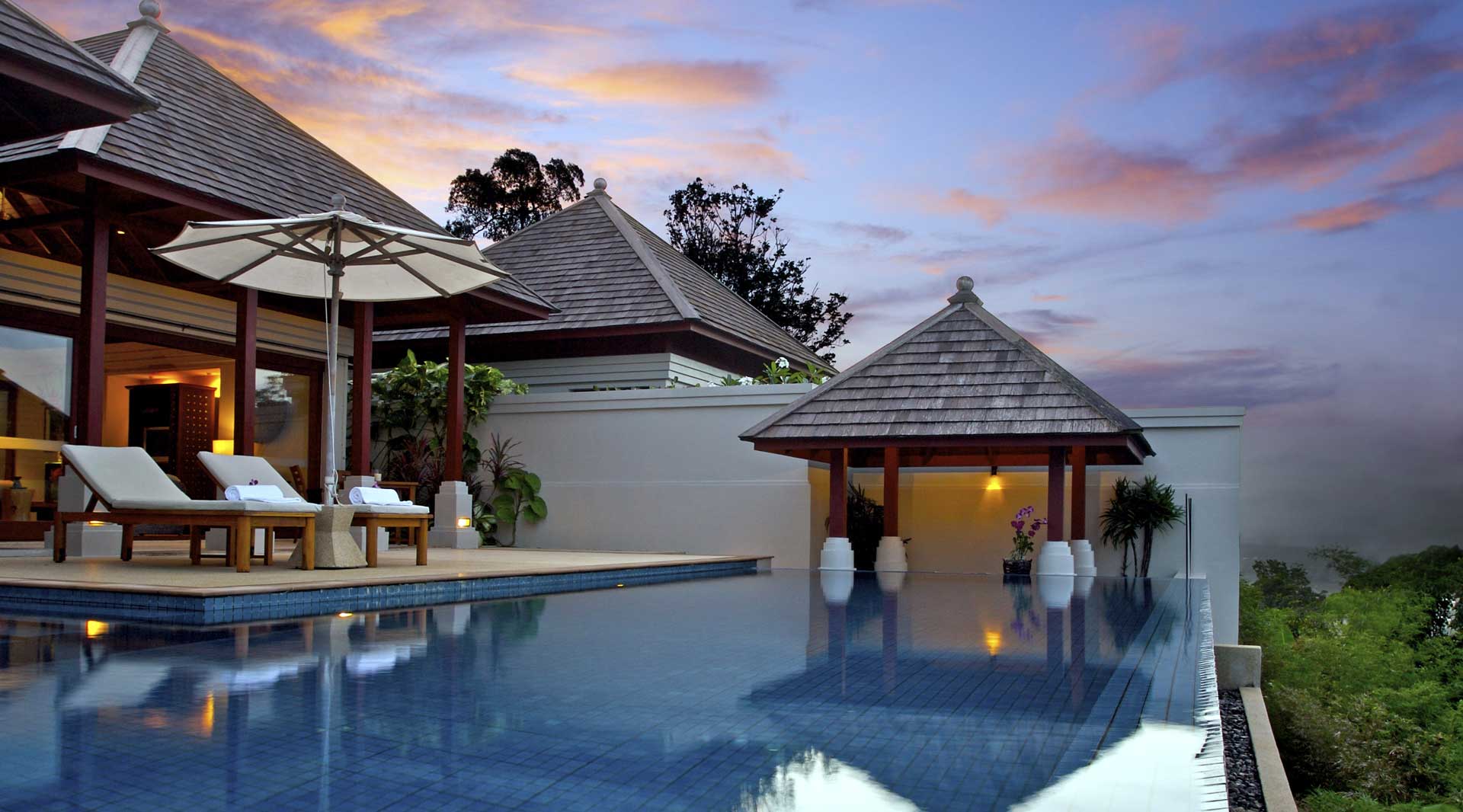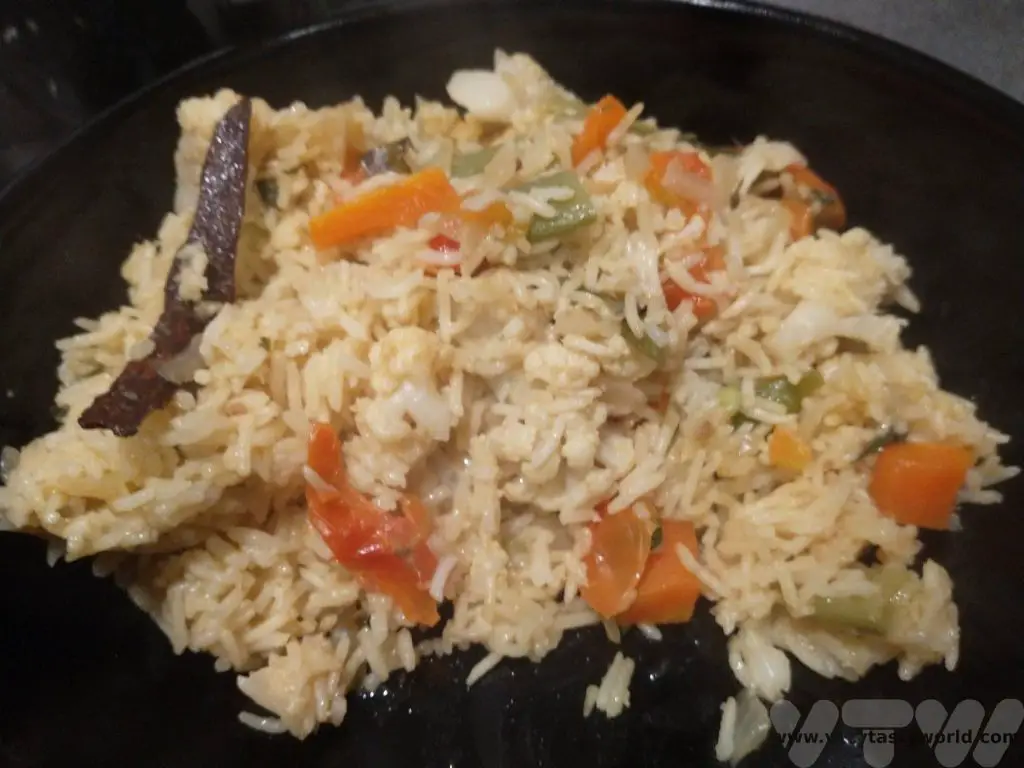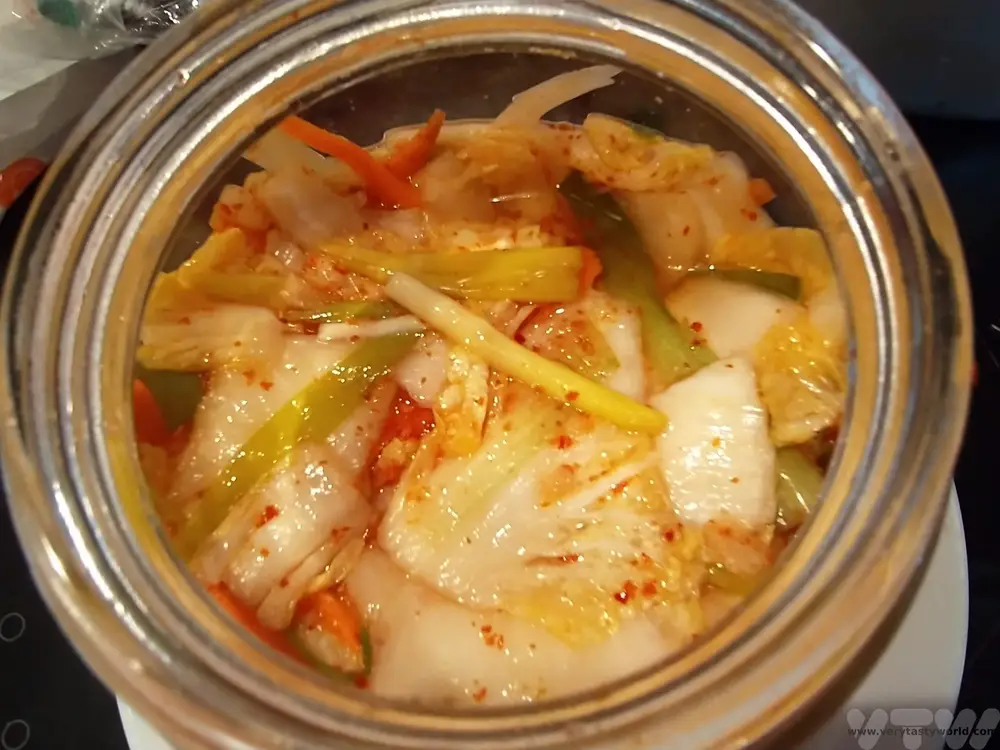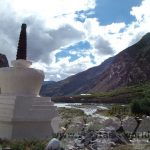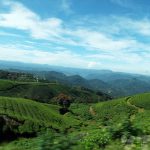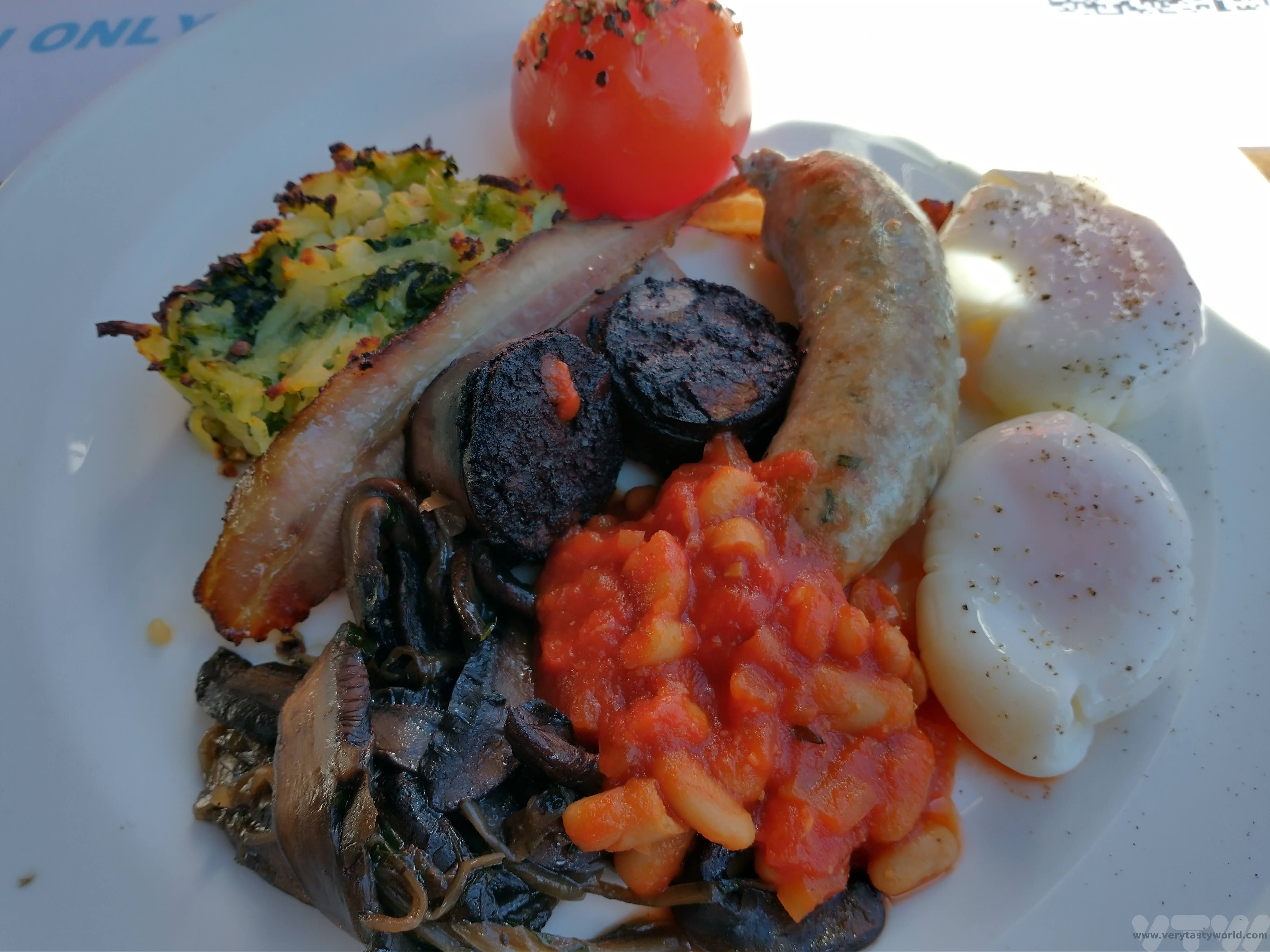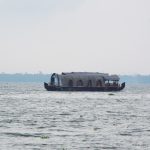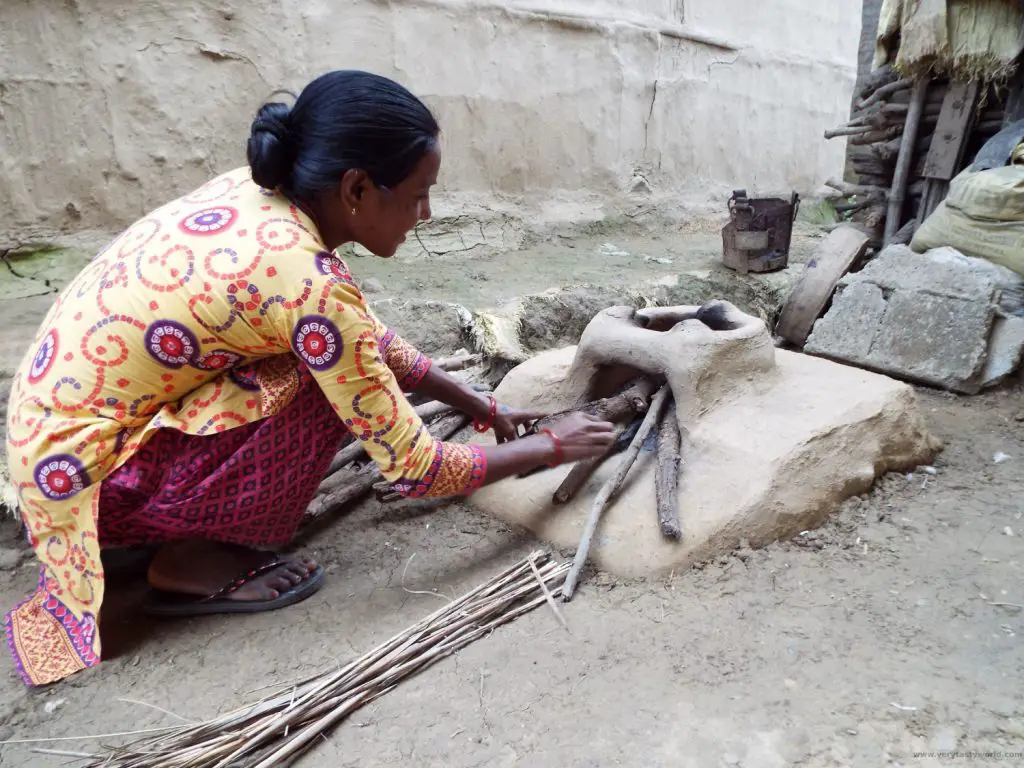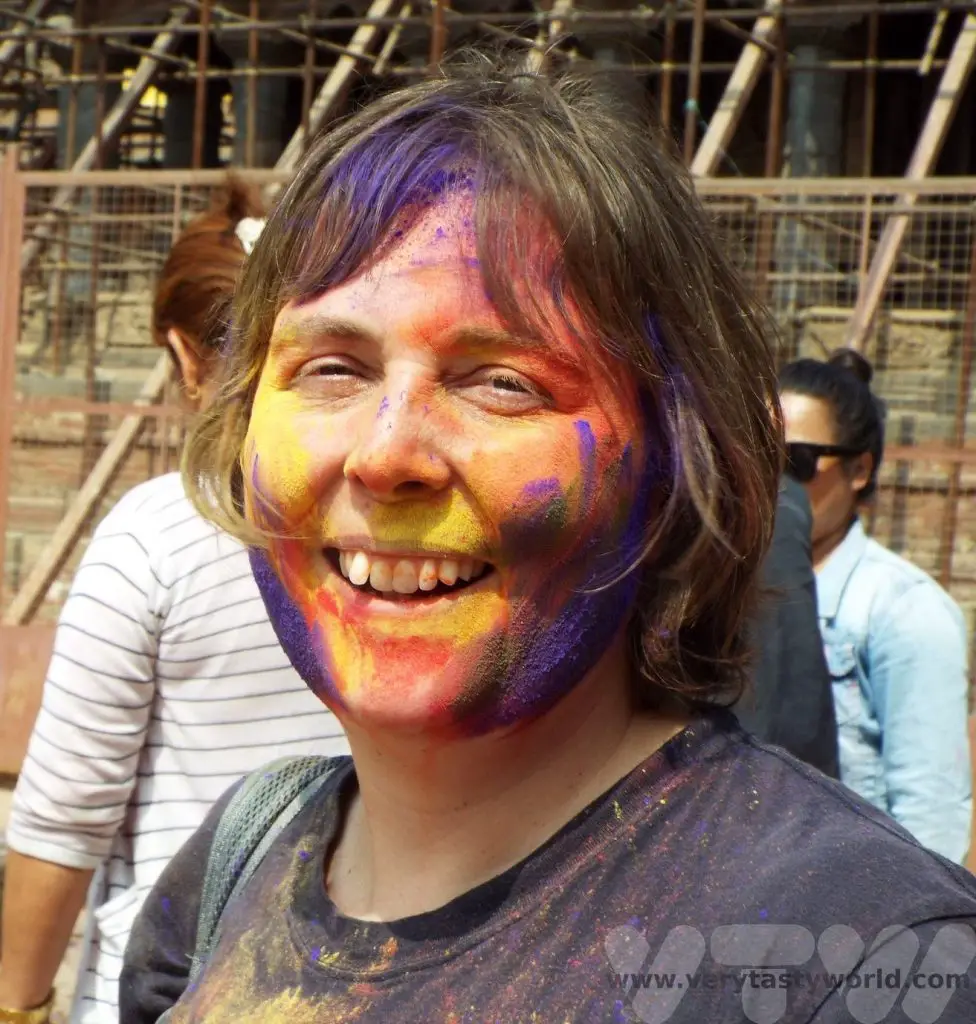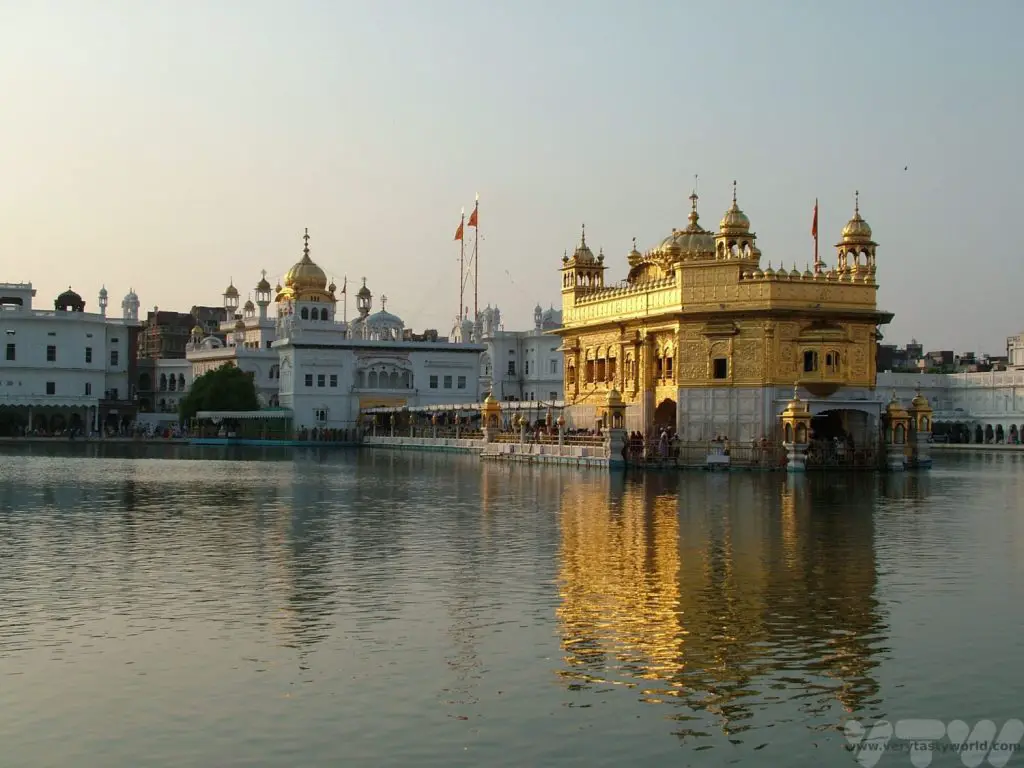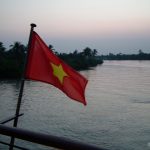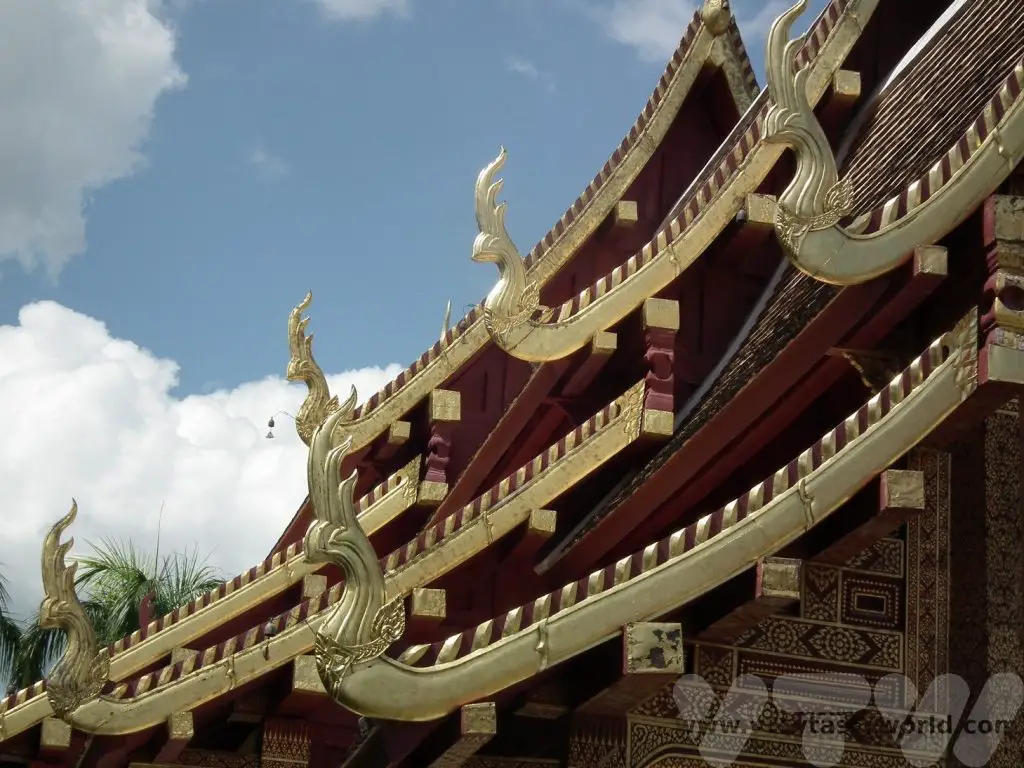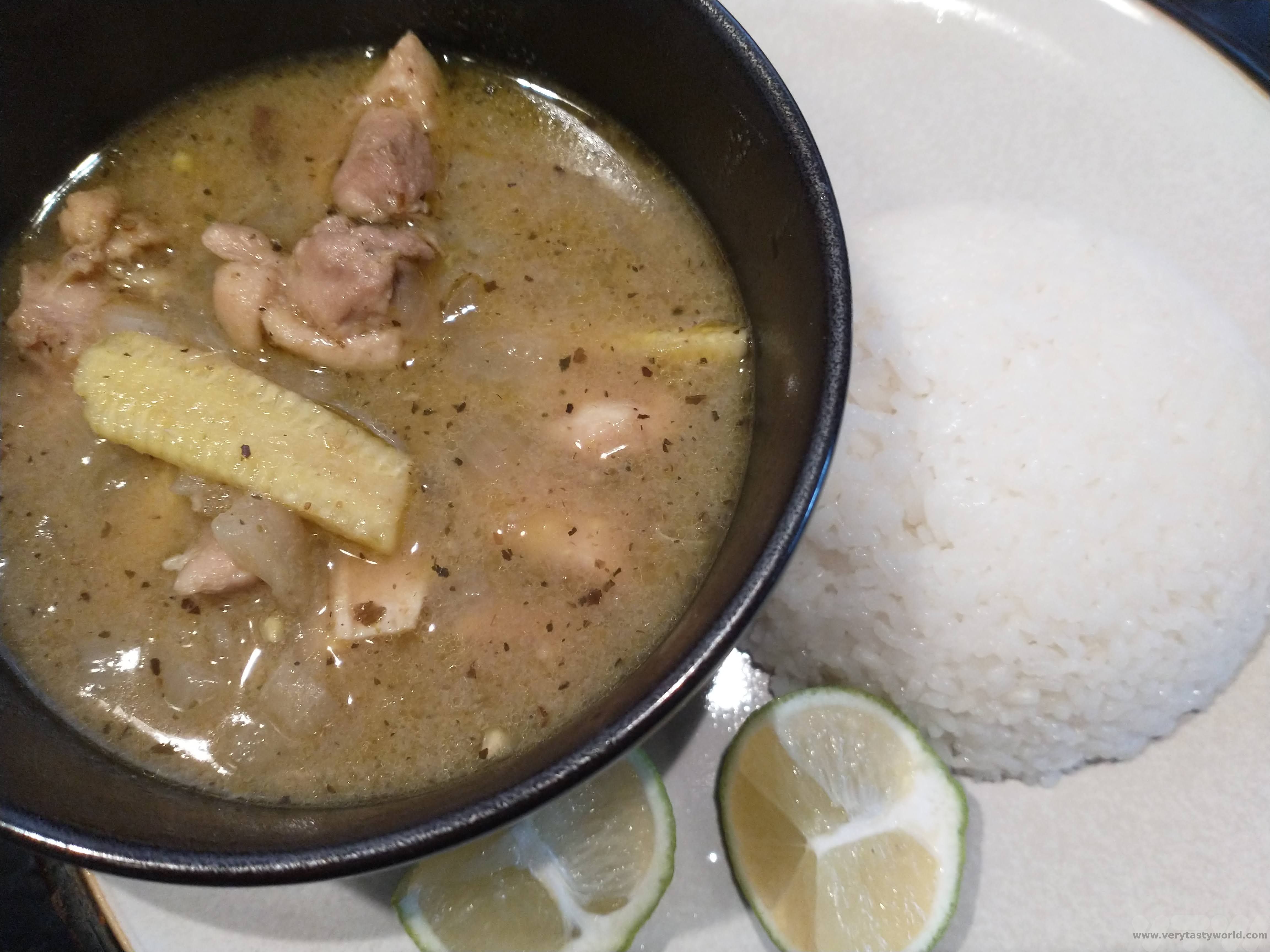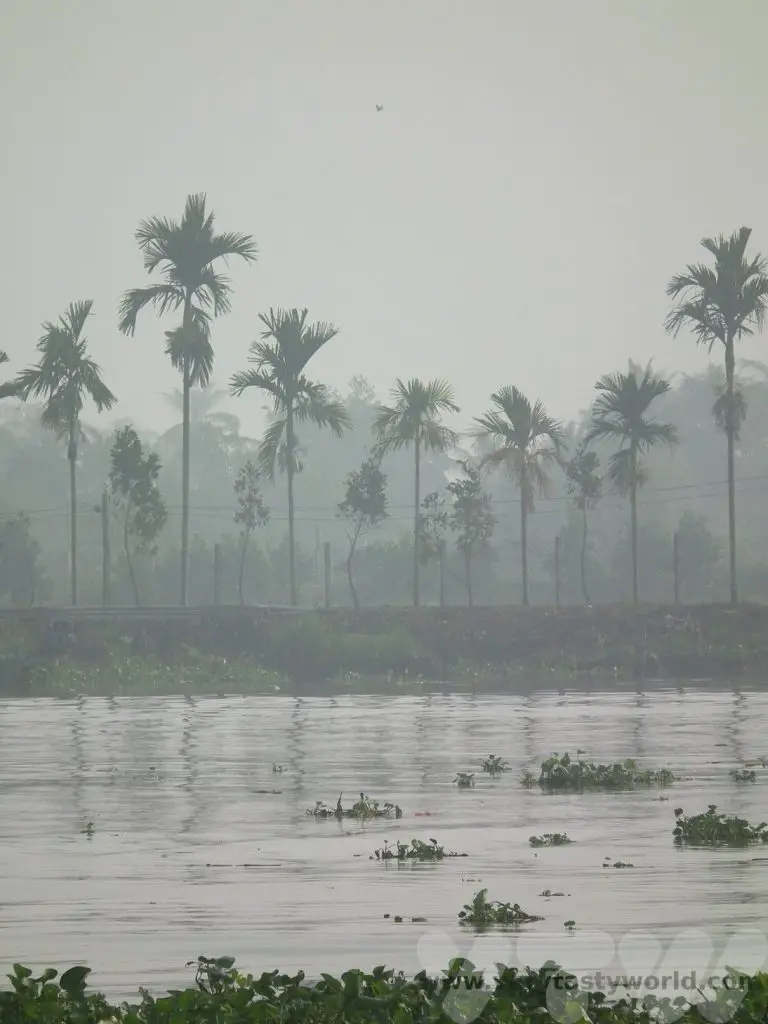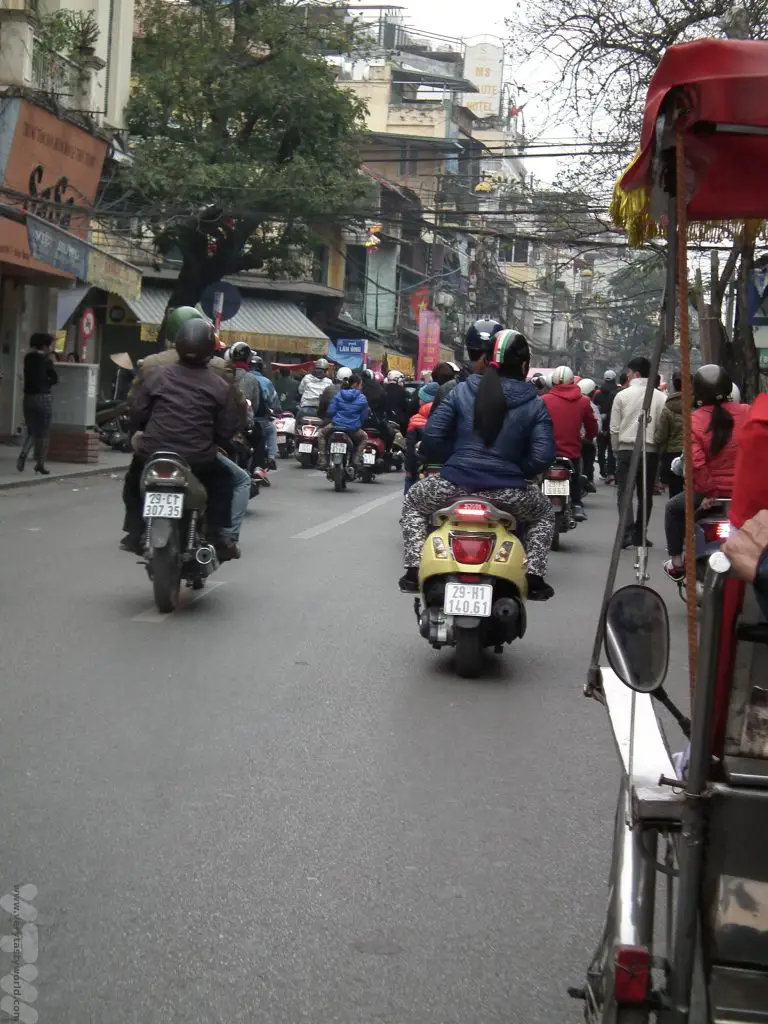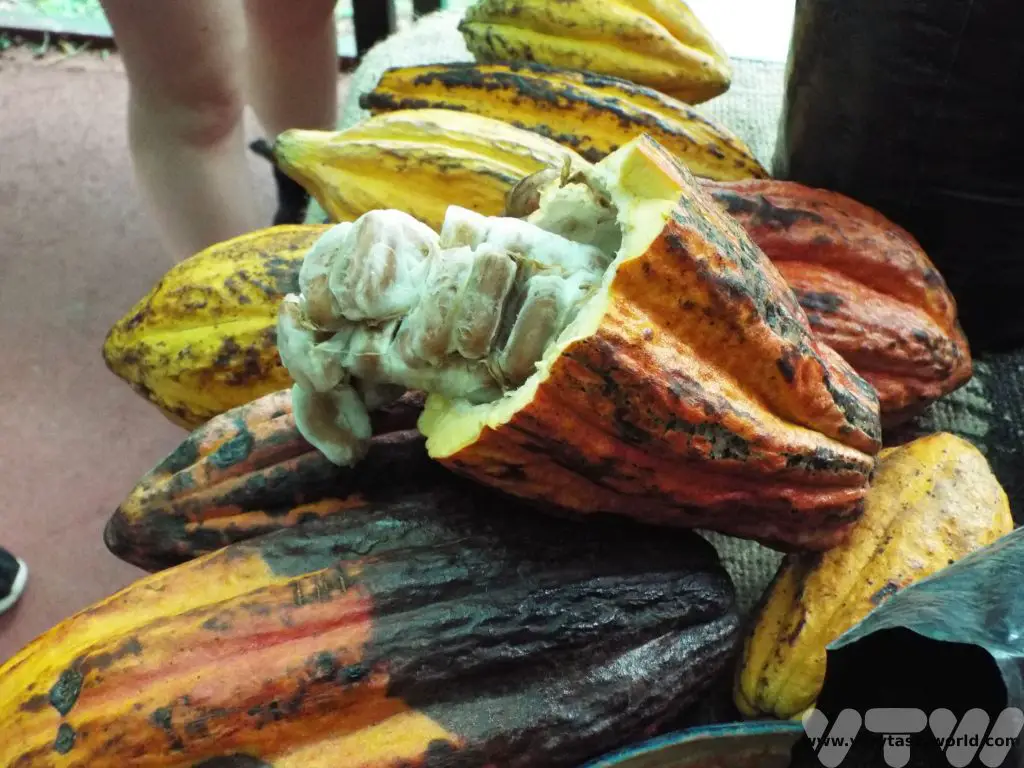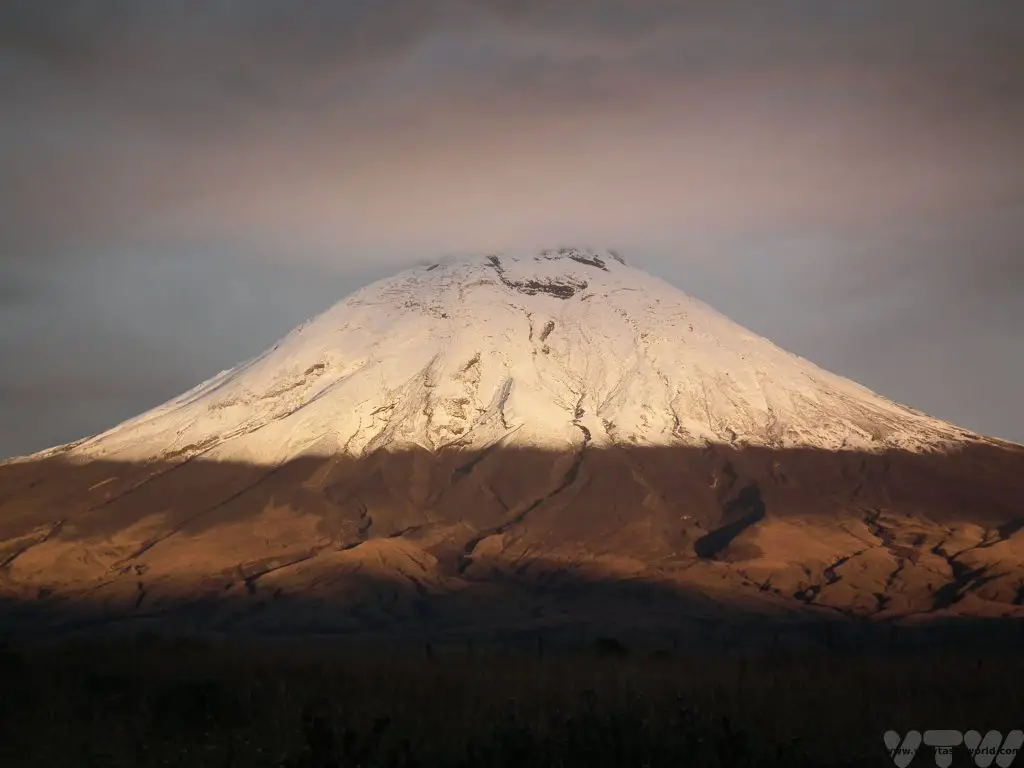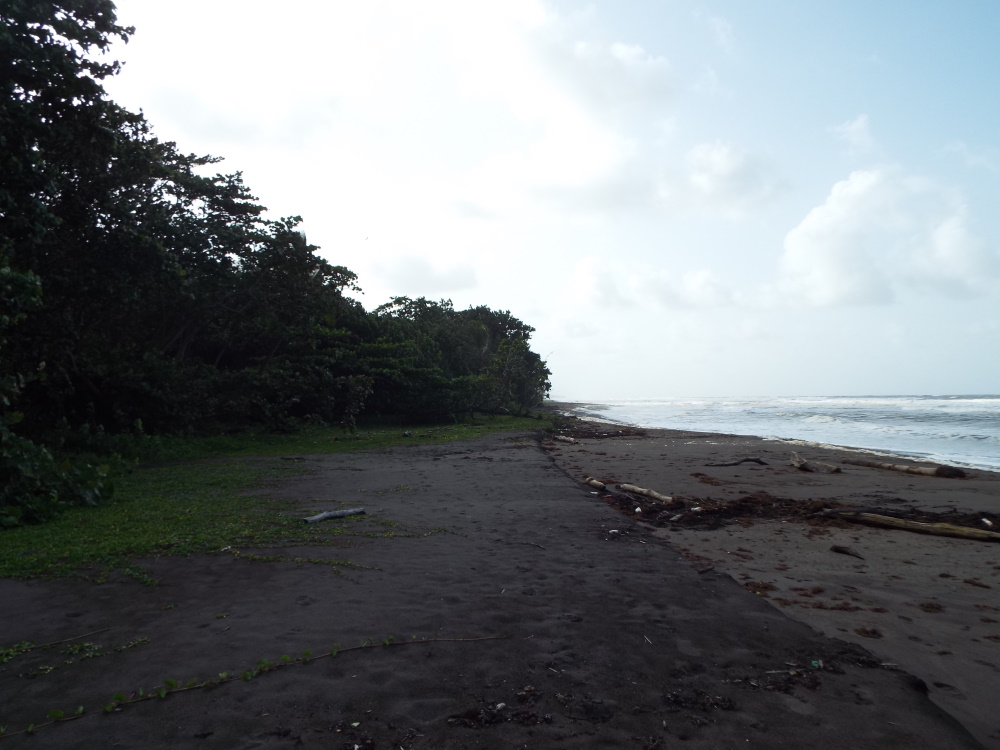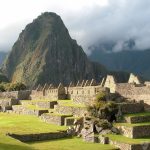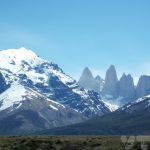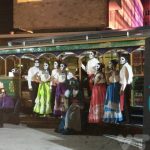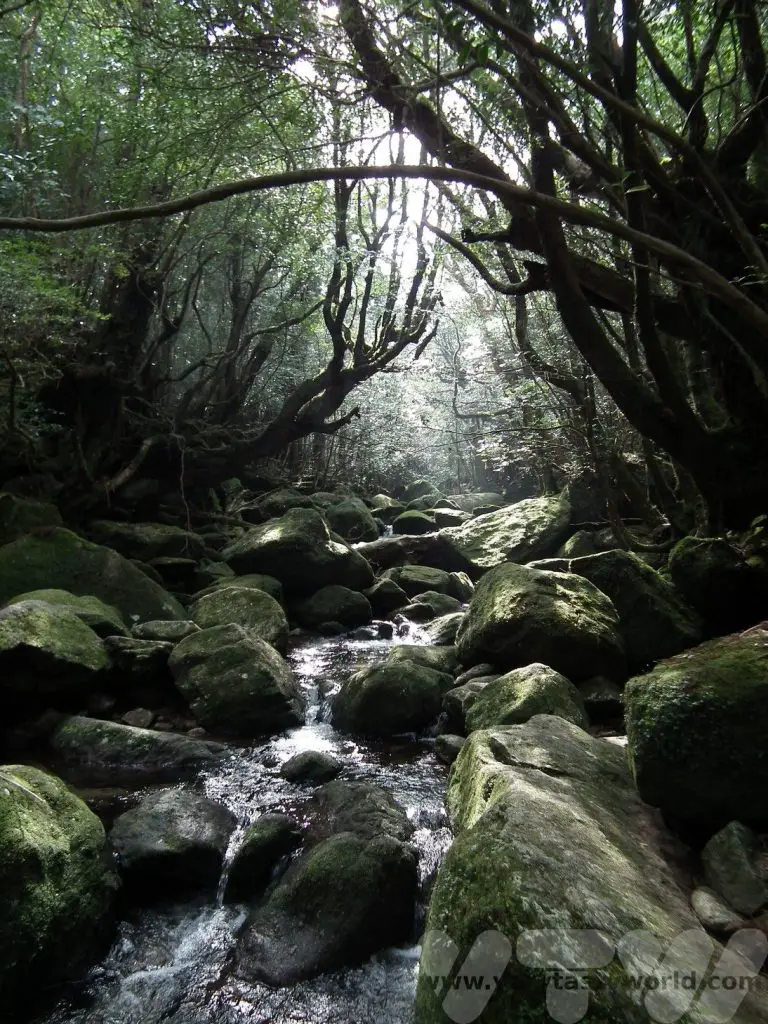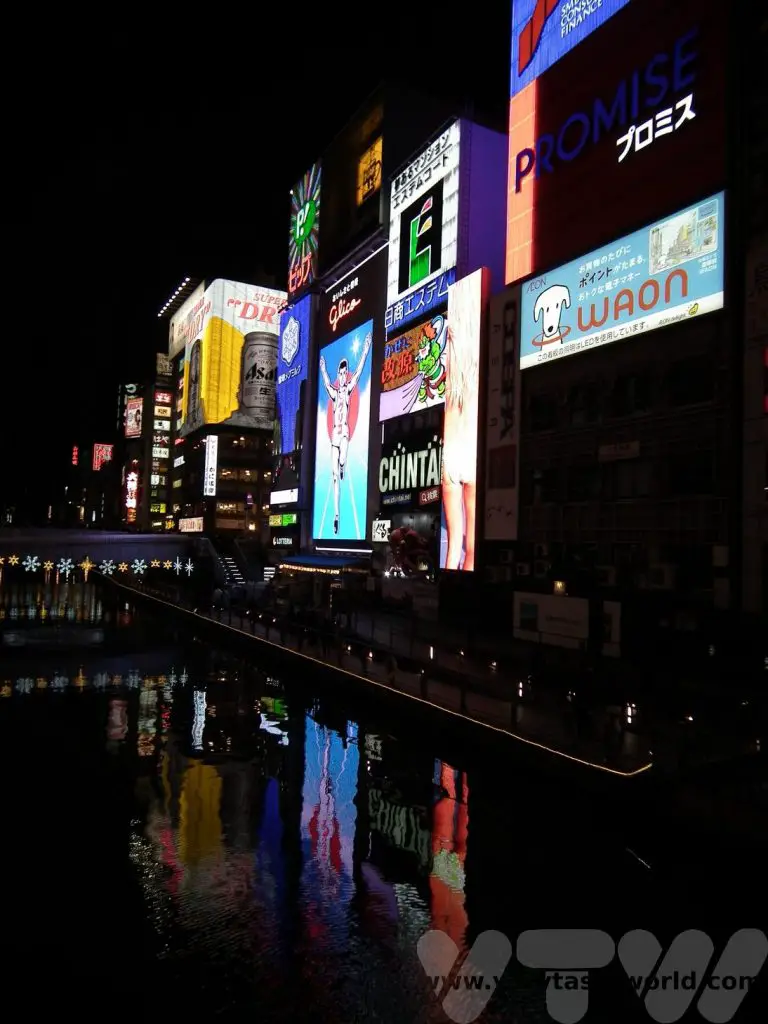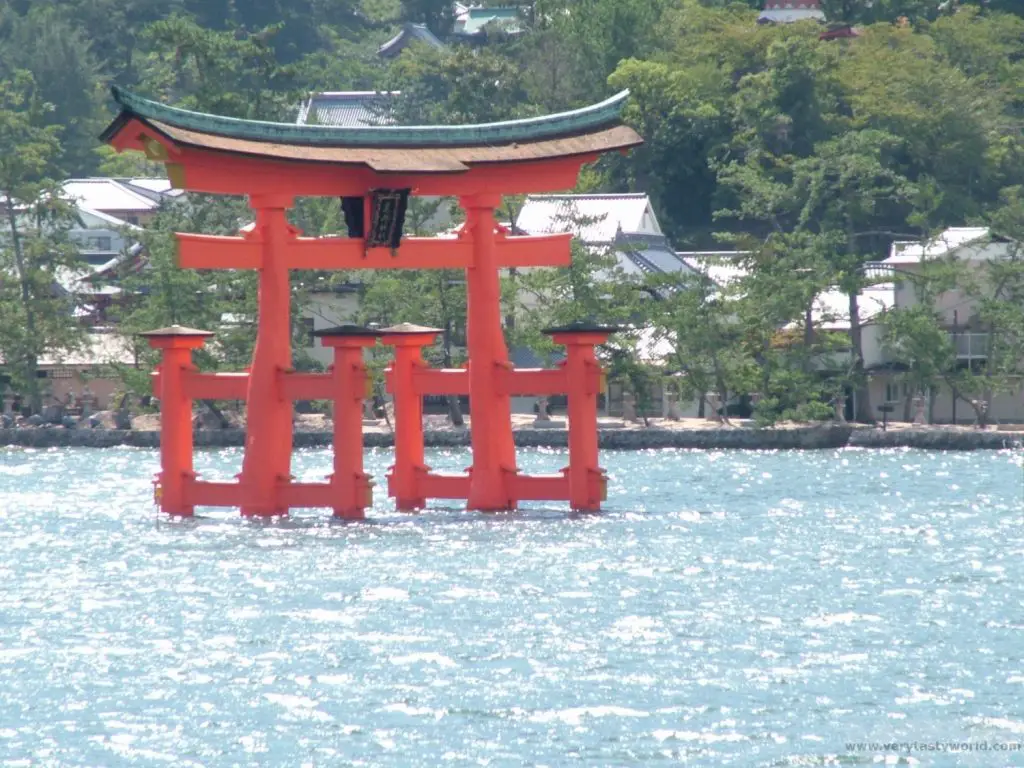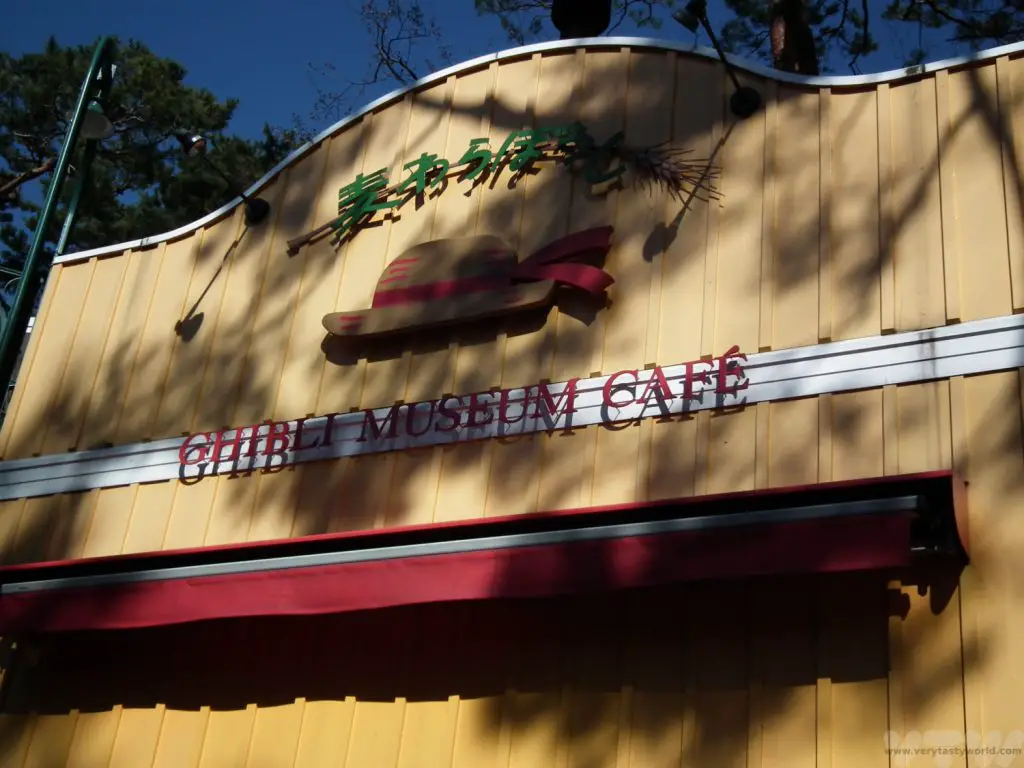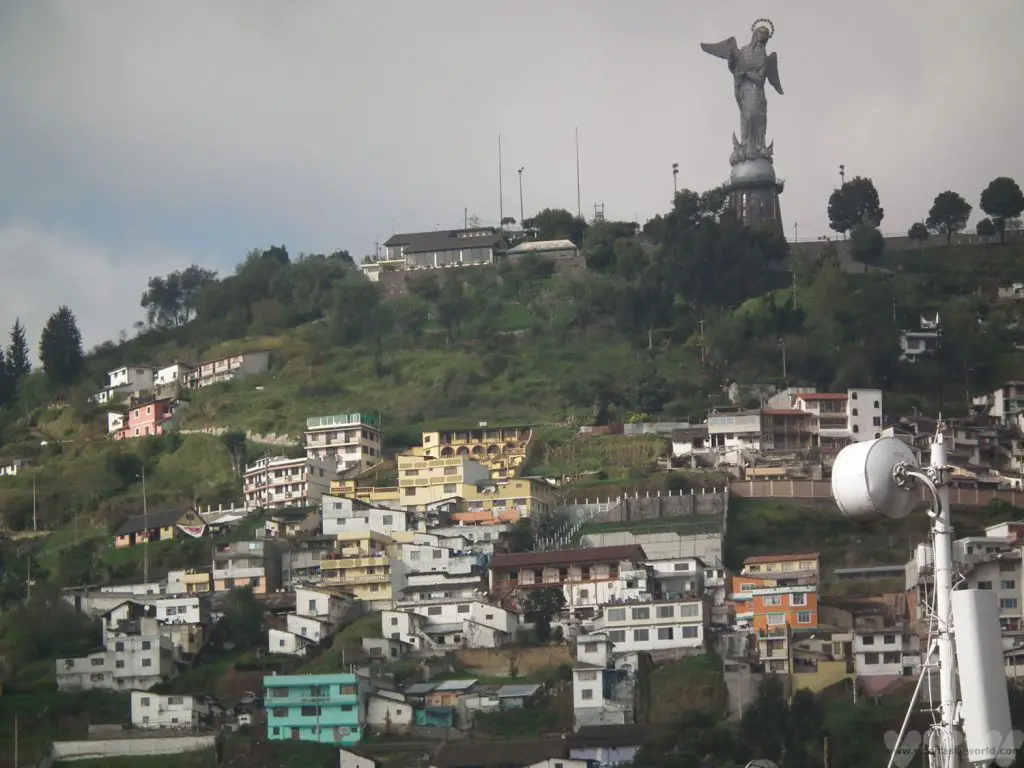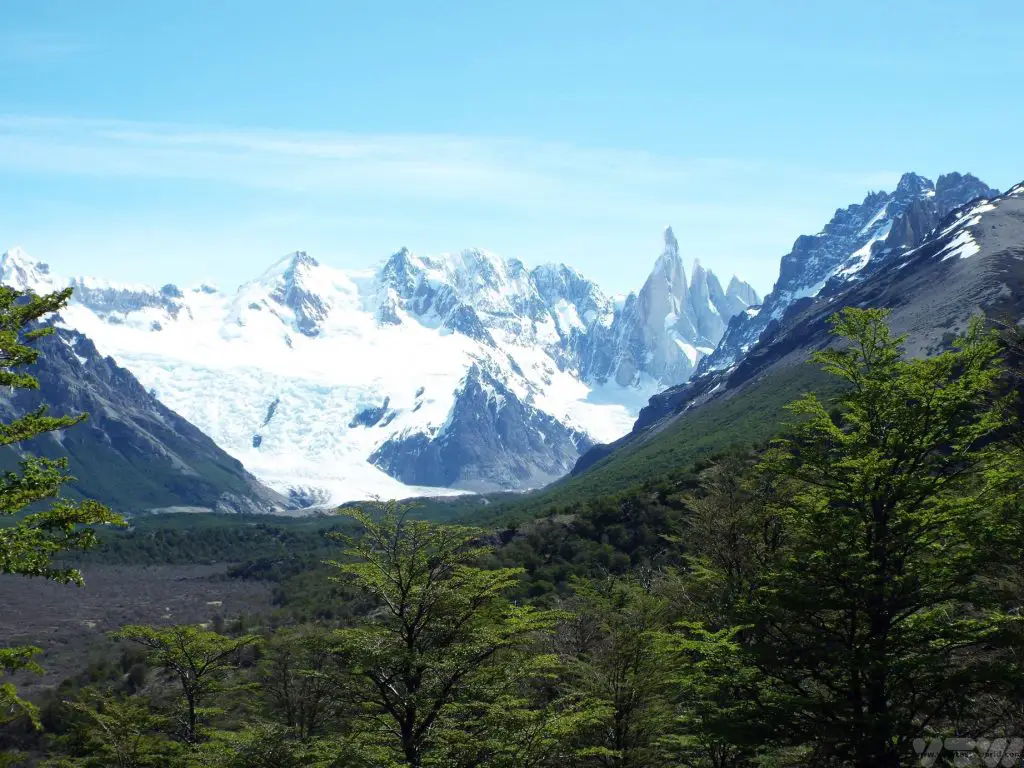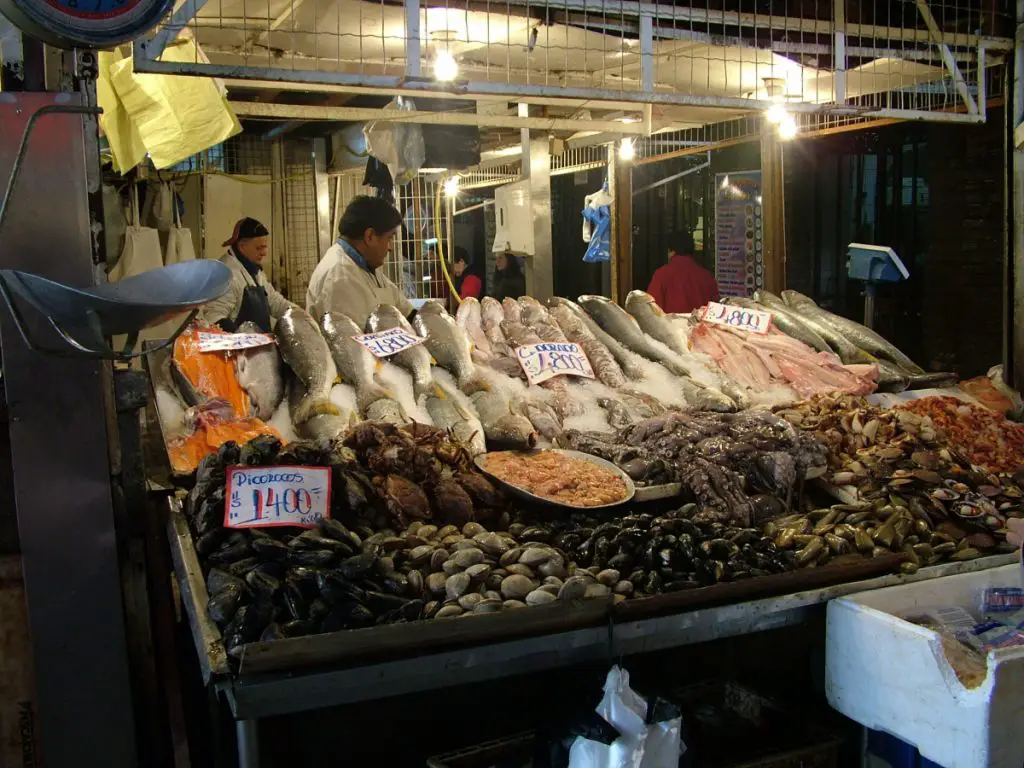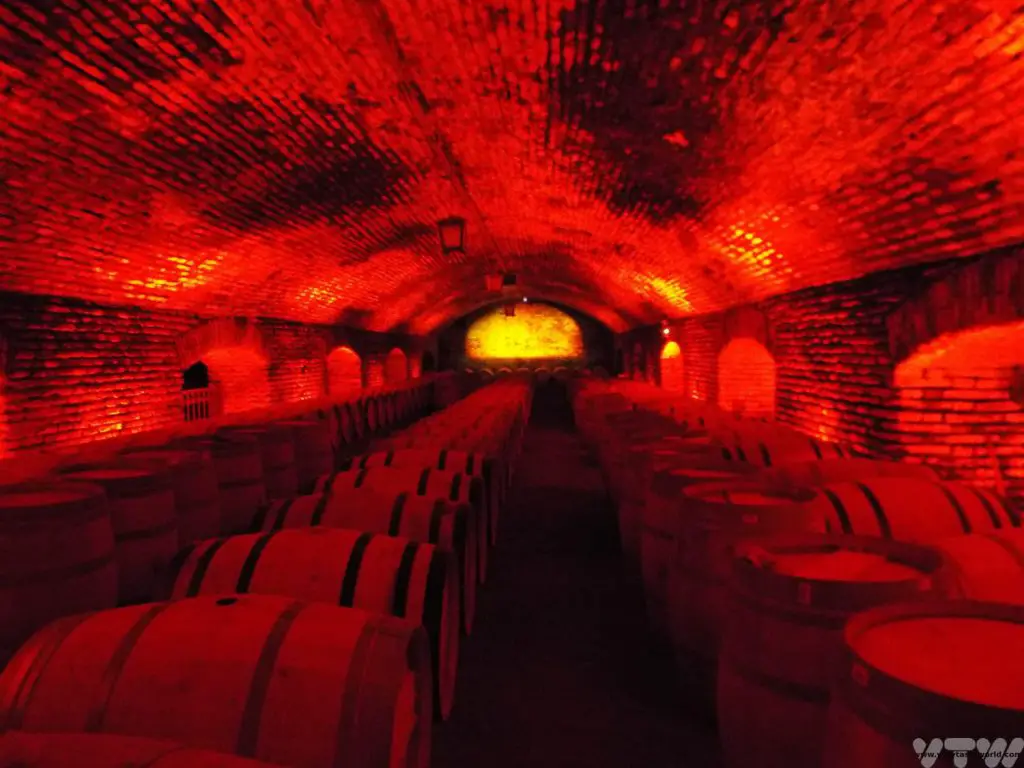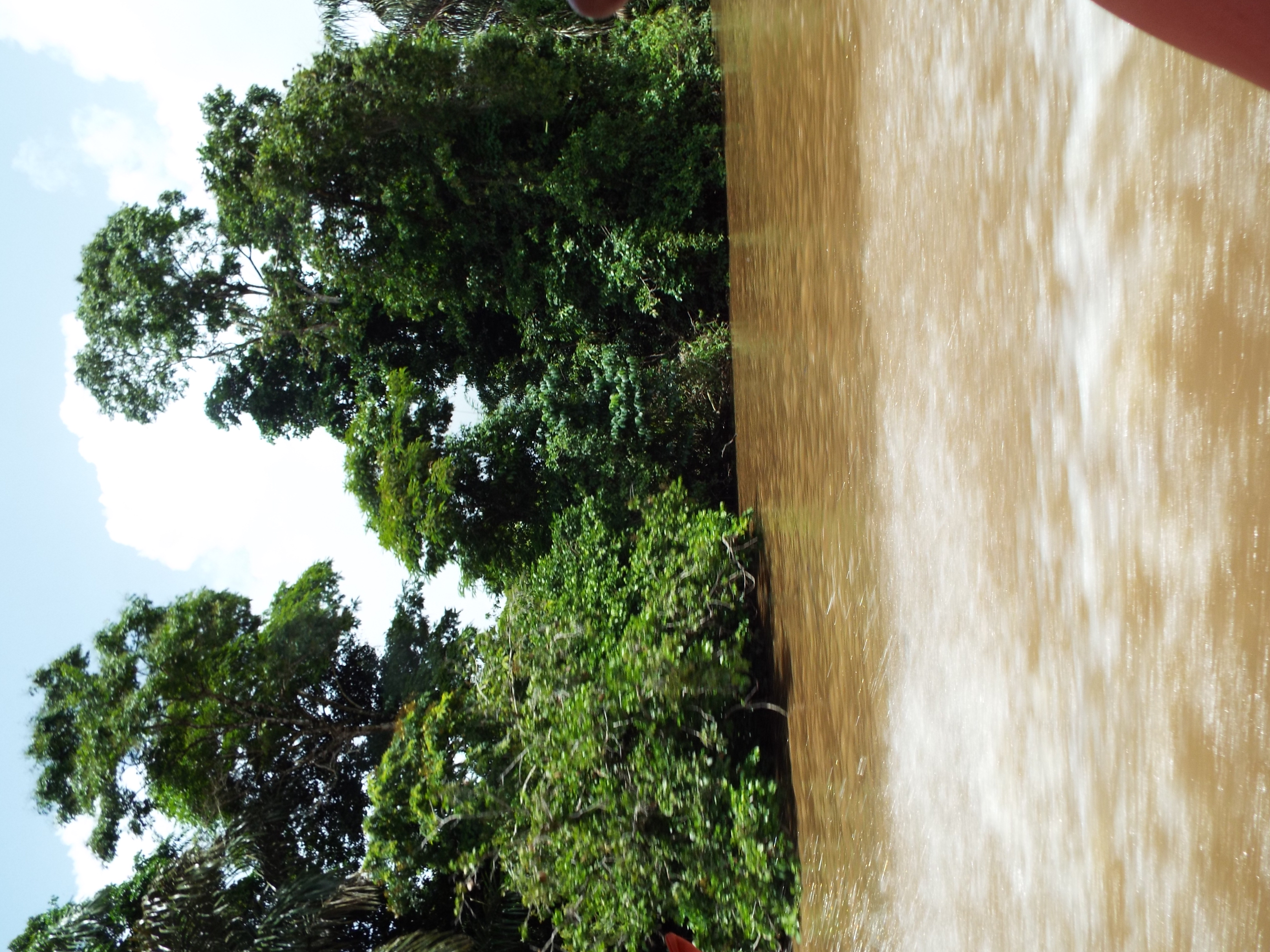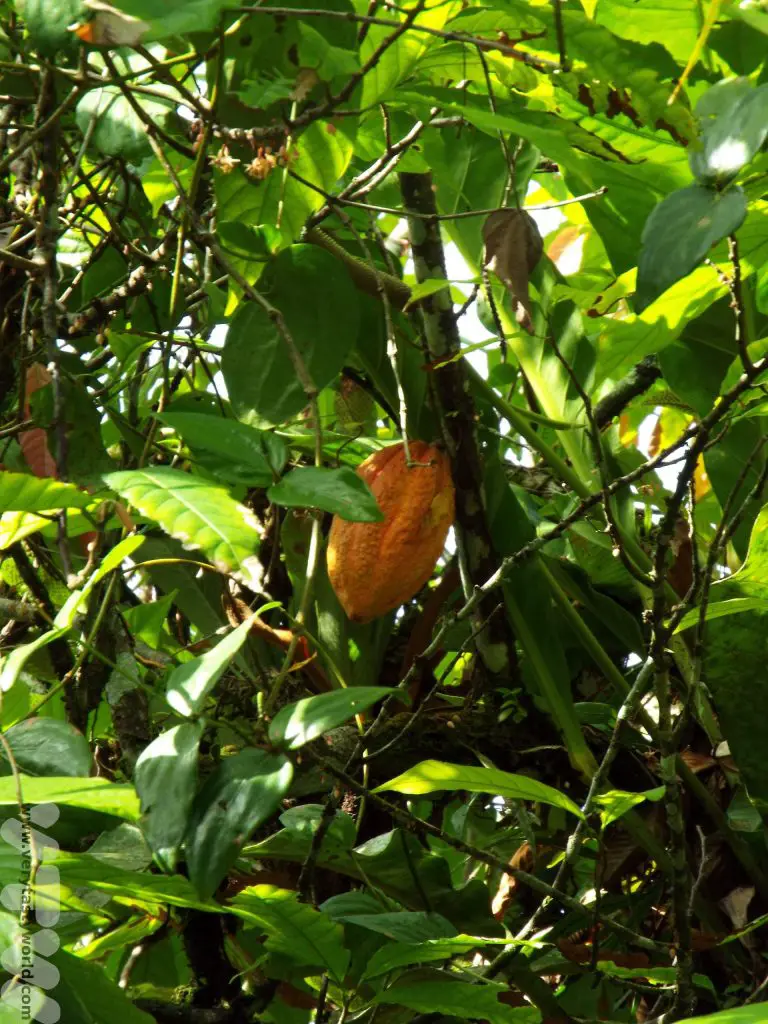Home » VTSub (Page 4)
Category Archives: VTSub
A Northern Ireland Road Trip
Northern Ireland is blessed with vibrant cities, beautiful countryside and a stunning coastline. We visited this lovely country as part of a road trip around much of the island of Ireland. We flew into Belfast airport and hired a car which gave us maximum flexibility to explore. Here’s a Northern Ireland road trip itinerary for spending two to three days in this lovely country. It can be extended or compressed, depending on how much time you have and how long you wish to spend at some of the attractions.
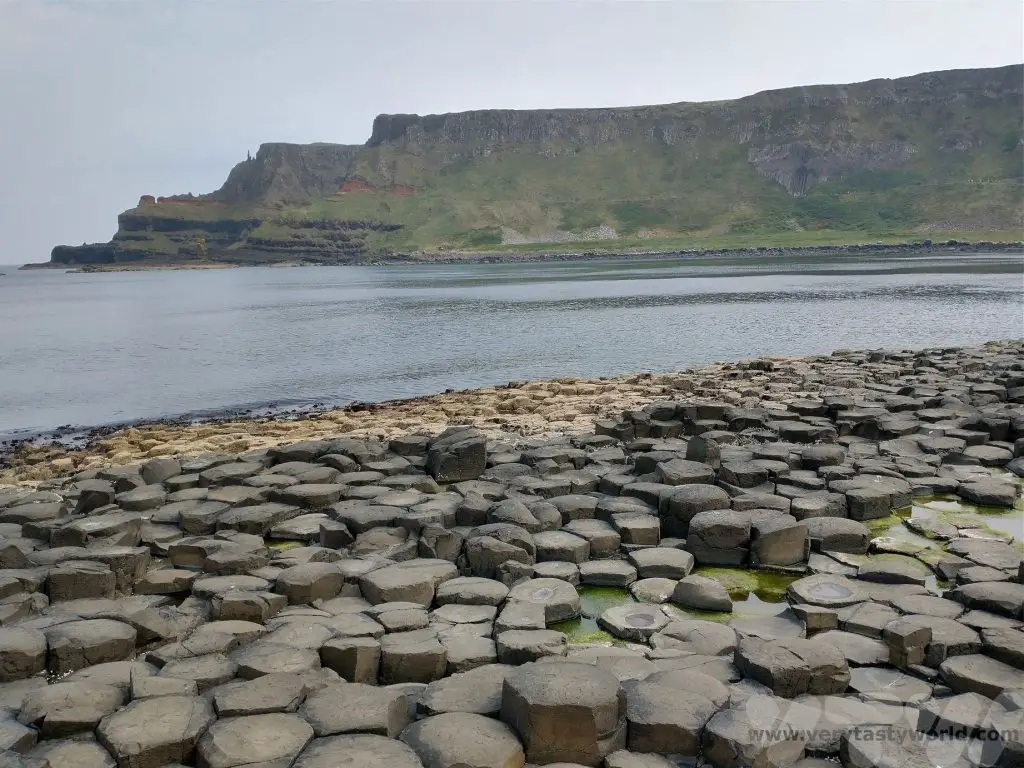
Belfast
Belfast is the capital city of Northern Ireland and is probably one of the liveliest places we’ve visited. The city’s name derives from Béal Feirste which means ‘mouth of the sandbar’. Although there have been settlements in the area since Neolithic times, Belfast town was established in the 17th century by Sir Arthur Chichester. It grew rapidly over the years as a trading centre and industrial hub. Most of Ireland seceded from British rule in 1921 to form the Irish Free State but six counties in the north of the island remained part of the UK and Belfast become the capital city of these.
Arriving in Belfast
We flew into Belfast airport, picked up our car and drove the short journey into the city. We arrived at at 4 pm on a Saturday evening, and the place was already throbbing – bars were full, and everyone was dressed up and ready to go out. A walk through the city was interspersed by raucous mobile bars filled by revellers and fuelled by boozy pedal power.

The following day we spent some time in the city. Belfast is a great place to explore on foot and has a number of impressive buildings:
The City Hall in Donegall Square council building is the civic building of Belfast City Council.
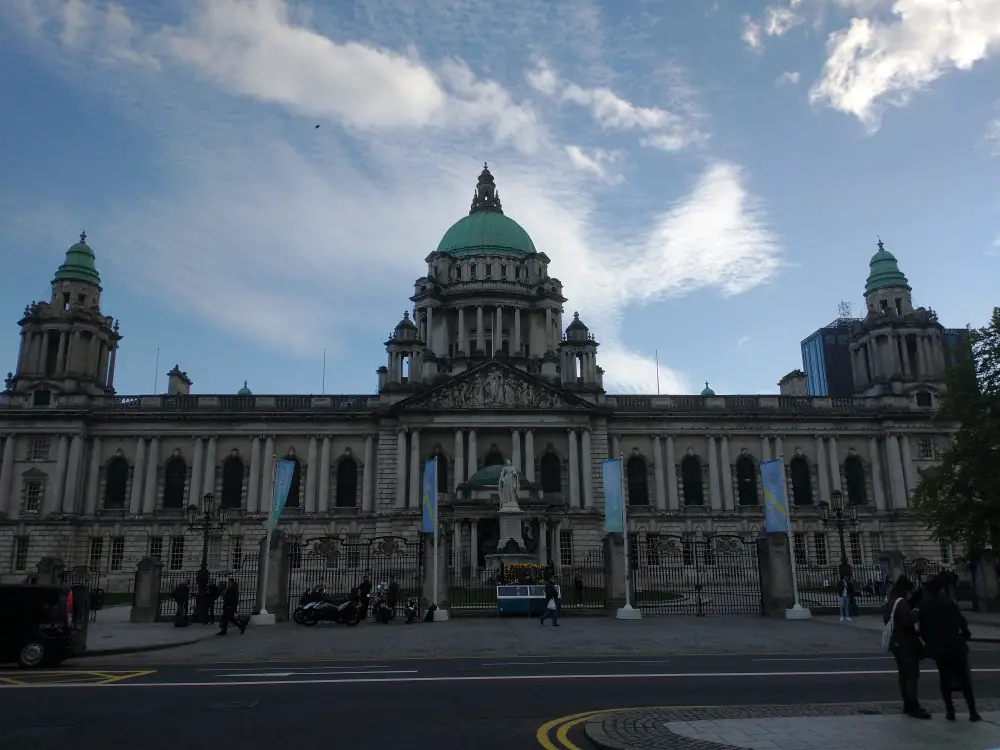
Belfast Cathedral, the Cathedral Church of St Anne, dates from 1899. In the background of the picture below you can see a very thin spire. It’s so slim it looks like a spike. It’s called the Spire of Hope and was designed to be extremely lightweight because the cathedral is suffering from subsidence into the silty mud it was built upon. Hence, with no chance of it having a full spire or bell tower, this elegant, svelte and minimalist spire was installed in 2007.
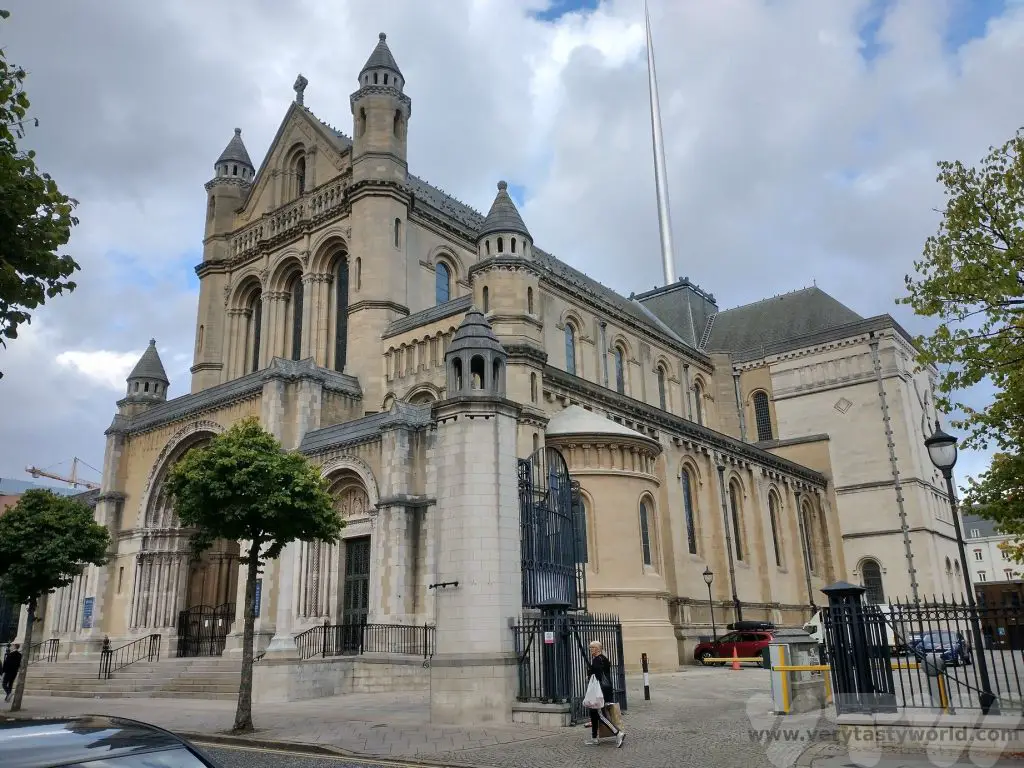
The Albert Memorial Clock Tower was built in 1869. It was designed by WJ Barre who won a competition to design a memorial to Queen Victoria’s late husband, Albert the prince consort.
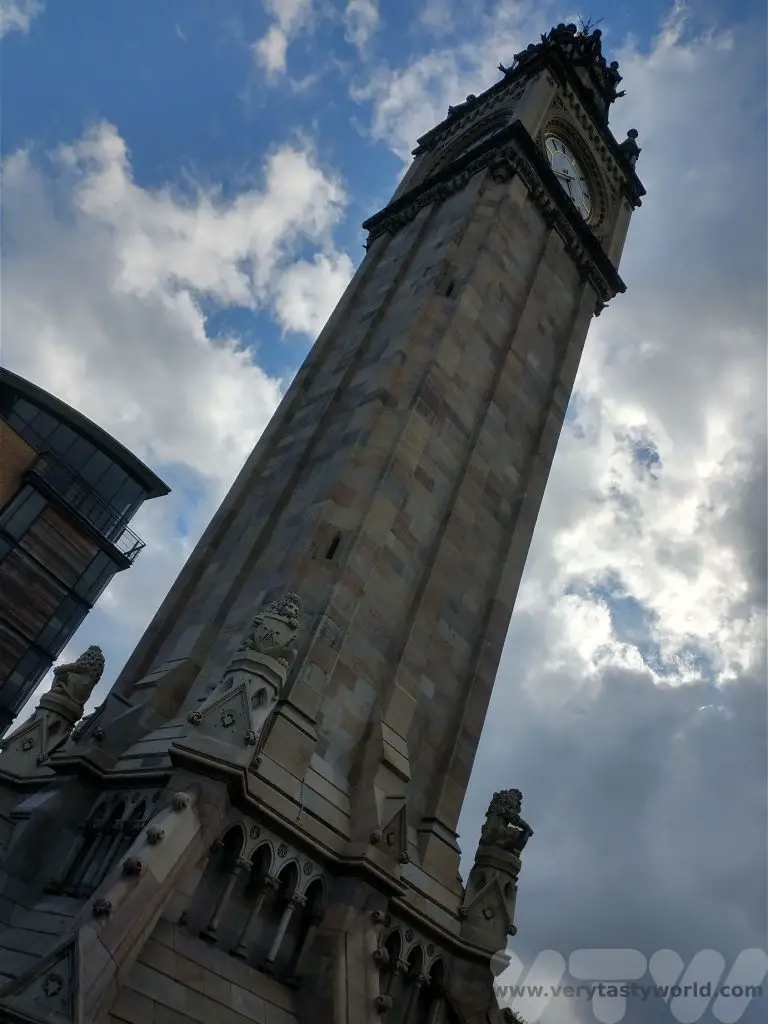
Belfast also has an impressive street art scene.

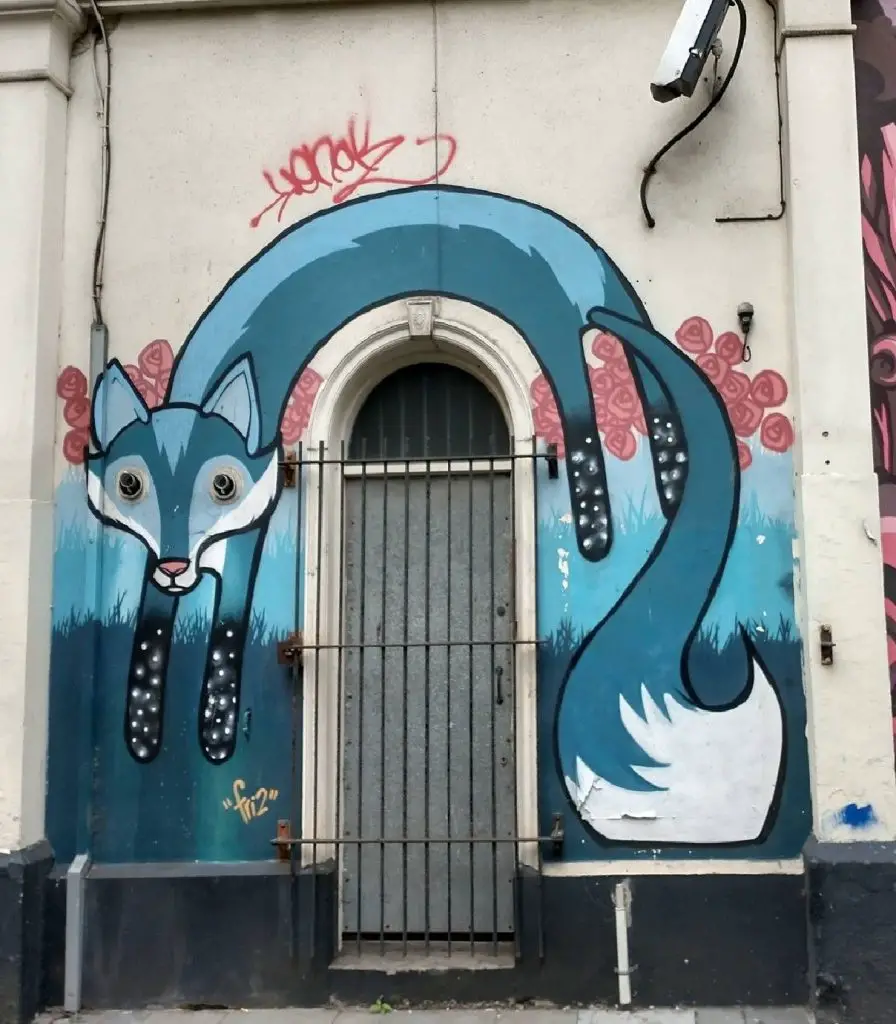
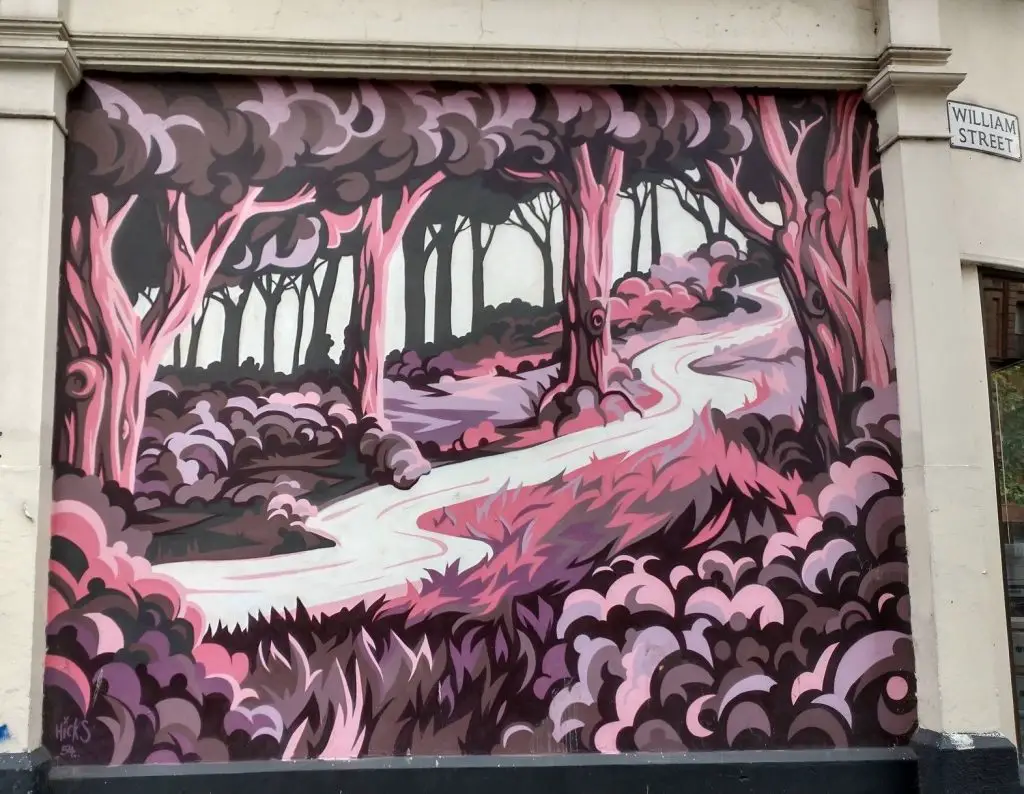
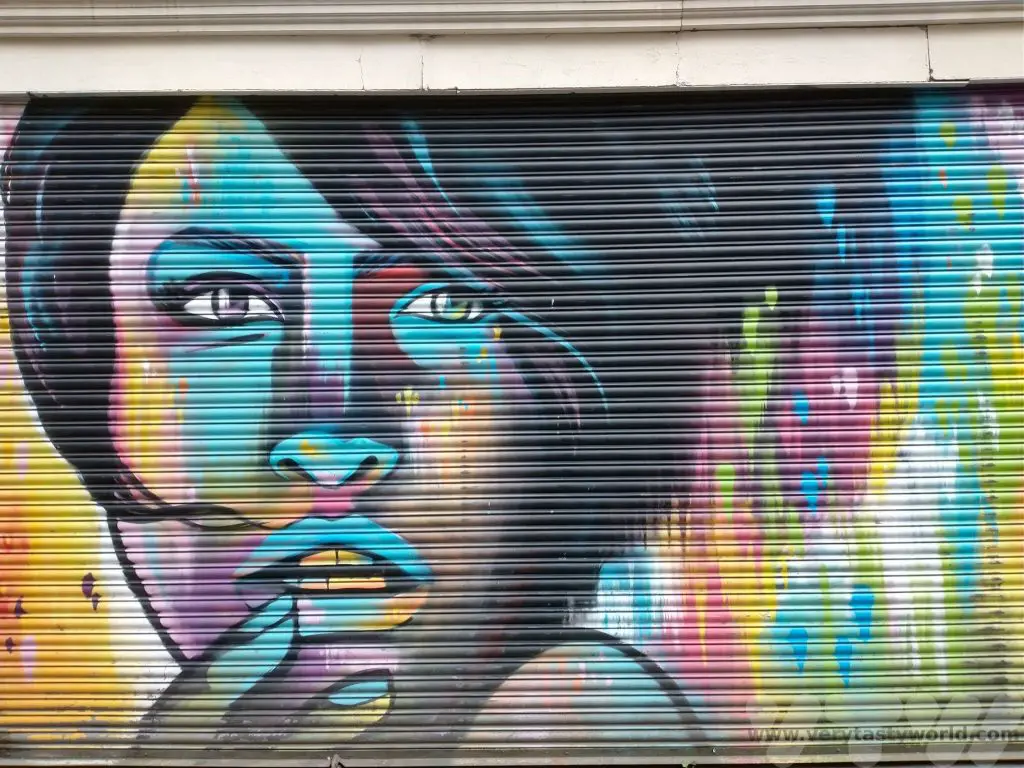
Things to Do in Belfast
The Titanic Experience is Belfast’s most popular tourist attraction. It’s worth setting aside a few hours to spend in this area.

Housed in a gargantuan building located in the Titanic Quarter on the site of the former Harland & Wolff shipyard, visitors can embark on an extensive and highly interactive tour which shows the history of possibly the world’s most famous ship.
The tour depicts the story of the ship from its conception to the discovery of the wreck in its watery grave. It sets the narrative in the social context of Belfast’s history, notably its industries and particularly its shipyards. It also shows the construction process and includes a gentle theme park style ride through a mock-up of the shipyard.
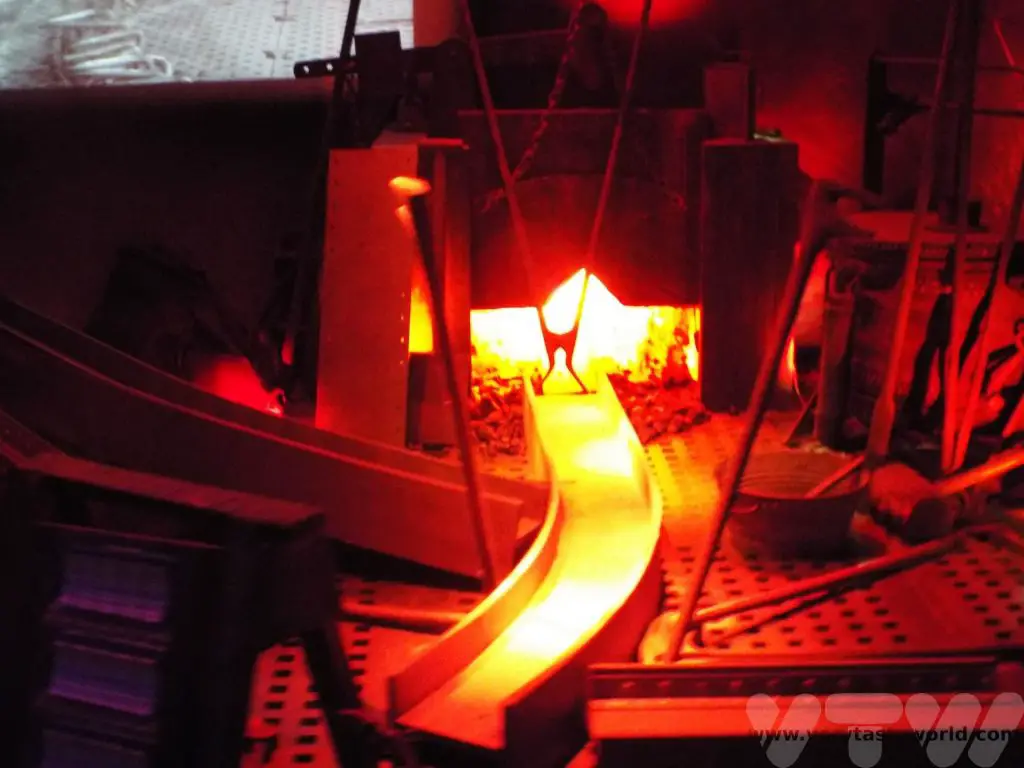
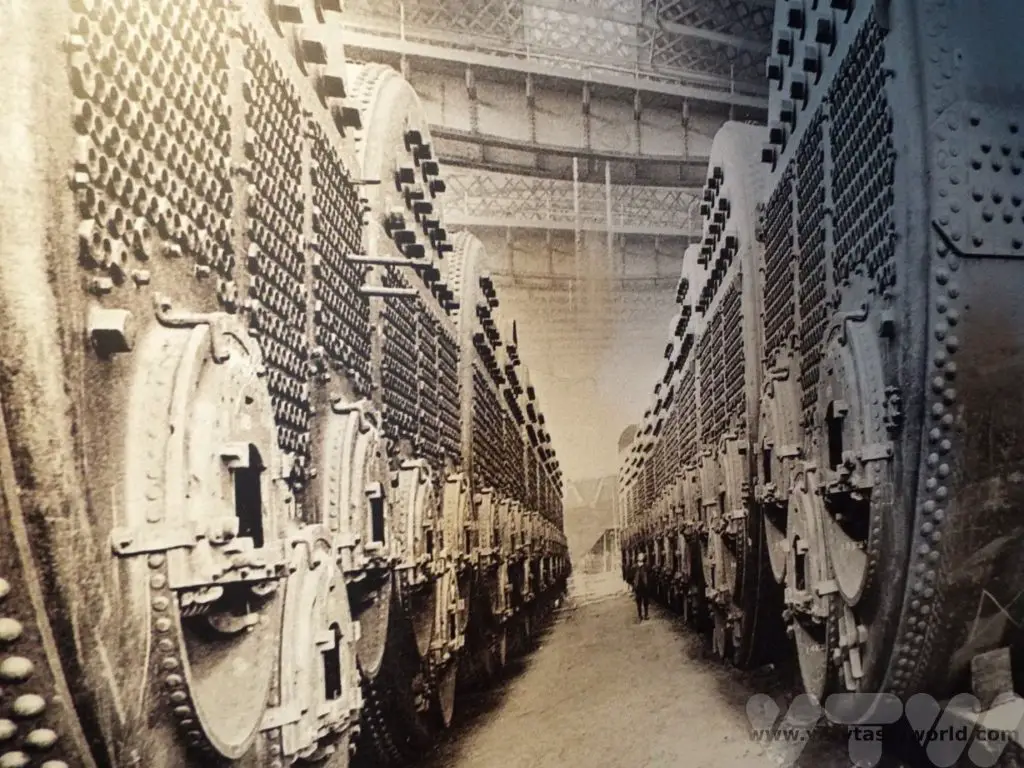
There are detailed displays showing how the ship was fitted out. It was interesting to learn about the facilities that were available for the different classes of passenger.
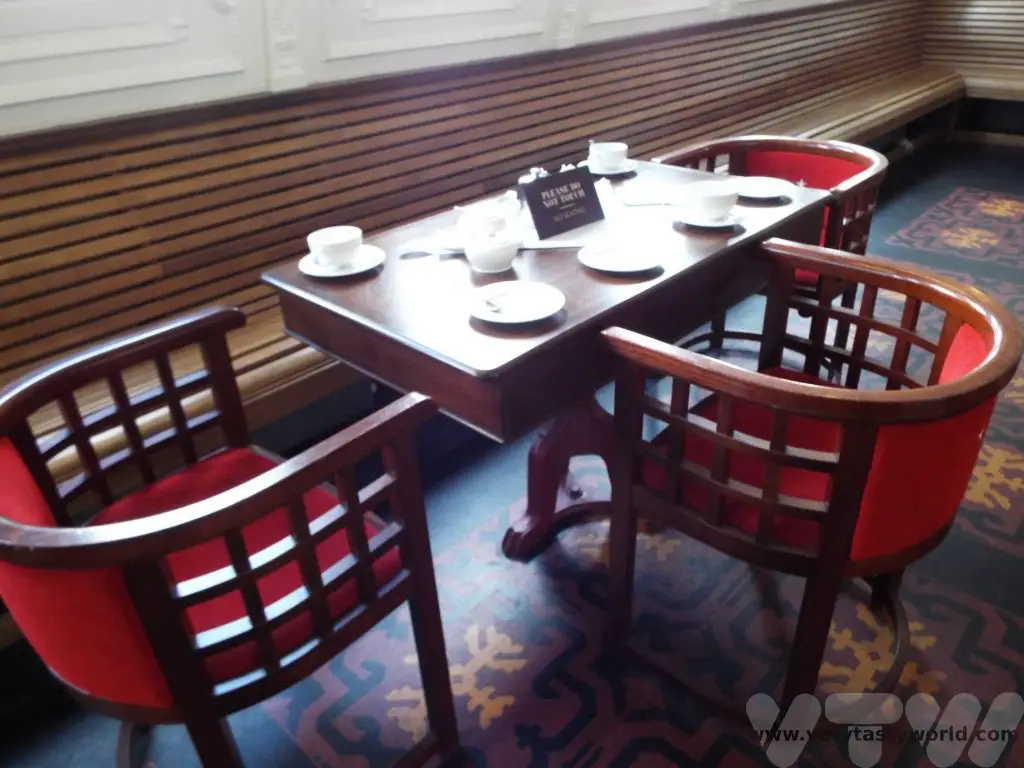
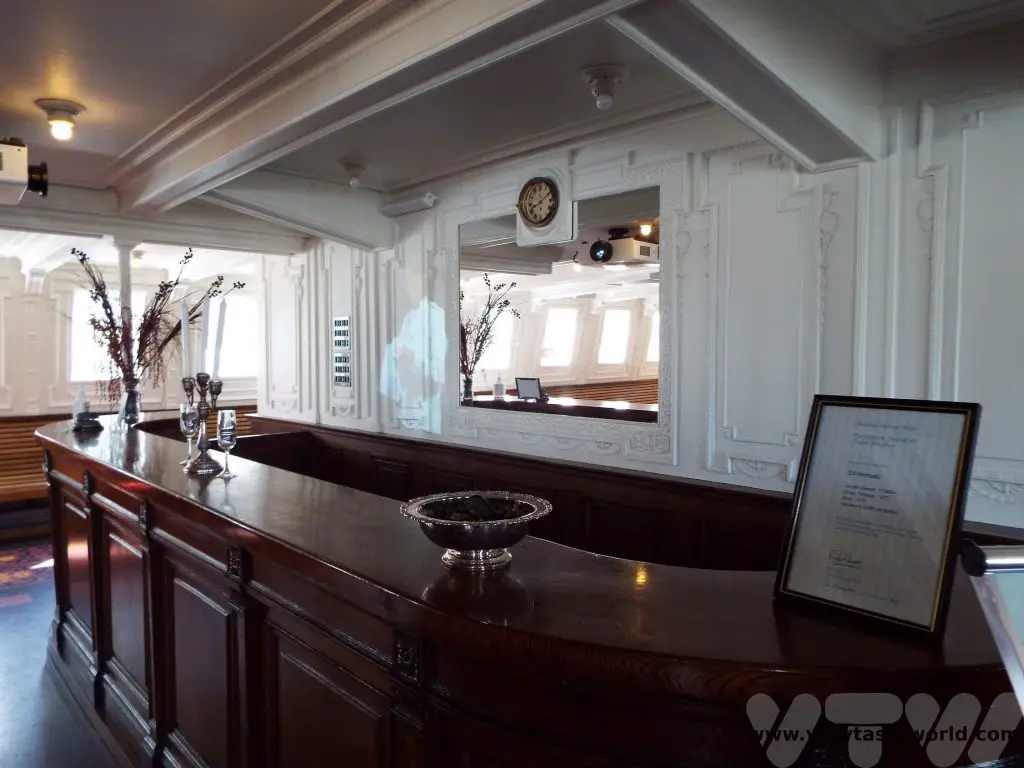
It provides information about the launch and the Titanic’s disastrous maiden voyage as well as the search for the elusive wreck, which was discovered many decades later, and the depiction of the disaster in the media and on film.
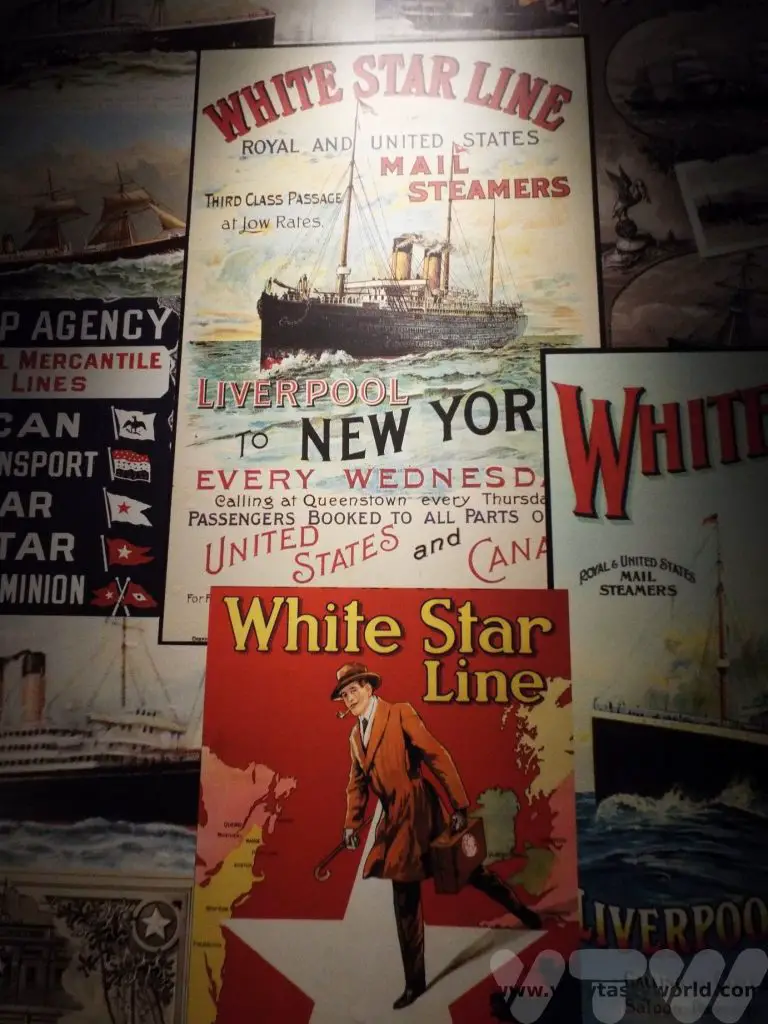

Included in our ticket price was a visit to the SS Nomadic which is located in a dry dock outside the main building. This was another White Star Line ship (the last surviving in the world), built at the same time as the Titanic but exactly one quarter of the size.
She was the tender ship which transferred passengers from the docks in Cherbourg to the Titanic. Because of its size the Titanic itself was moored in deep water away from the shore.
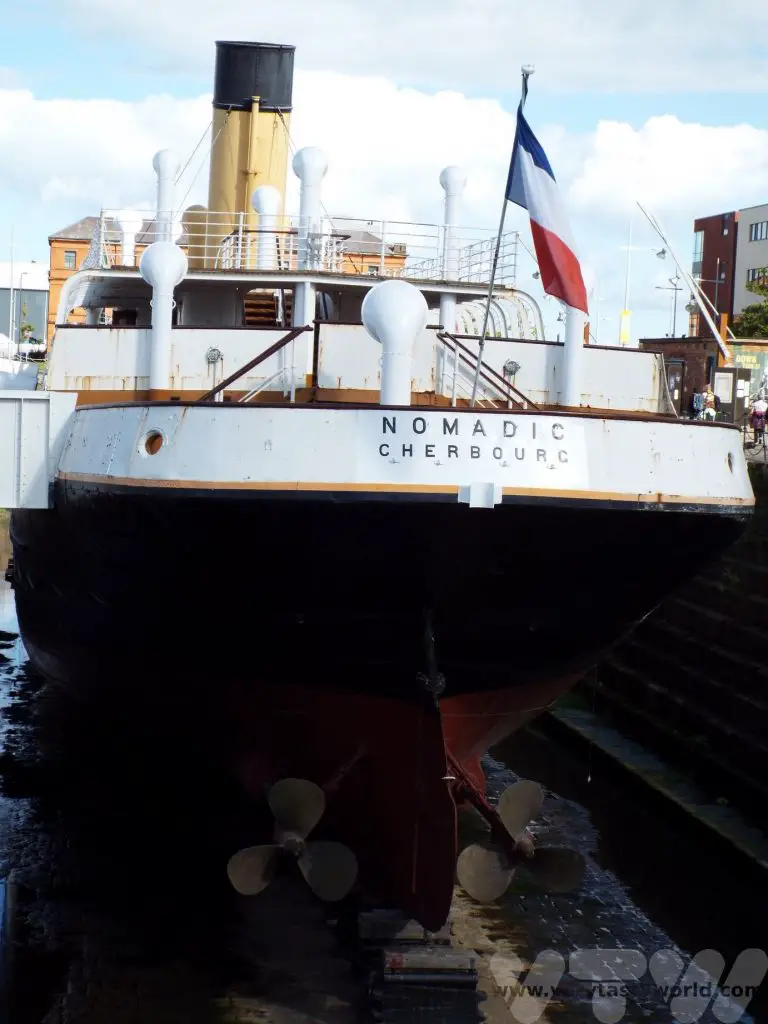
Since our visit, the Titanic Experience has been revamped and the reimagined experience, with an emphasis on telling the story of many of the people involved with the Titanic, launched in March 2023.
While you’re in the area, the Maritime Mile on the waterfront has a lot to discover, from historic attractions showcasing the area’s maritime history, art installations and a bunch of restaurants and shops.
Other Belfast attractions include the Crumlin Road Gaol, a prison that was operational between 1845 and 1996. It has been renovated and is now open to visitors.
Ulster Museum offers an extensive collection of artefacts, covering history, science and the natural world, as well as an art gallery.
Game of Thrones
With so many beautiful locations, it’s easy to see why this country has a thriving film and television industry. Northern Ireland offered one of the primary settings for the filming of the popular TV series Game of Thrones. Producers HBO hired Titanic Studios, a building located just behind the Titanic Experience, for much of the filming and they also used exterior locations dotted all over Northern Ireland.
If you are looking to see all the Game of Thrones locations there are several tours available in Belfast or, if you are driving yourself, you will spot loads of brown tourist signs on the roads indicating where to visit. Just south of Belfast is the Game of Thrones studio tour for fans of the show.
The Titanic Quarter has some Game of Thrones stained glass windows located along the waterfront as a tribute to the series.
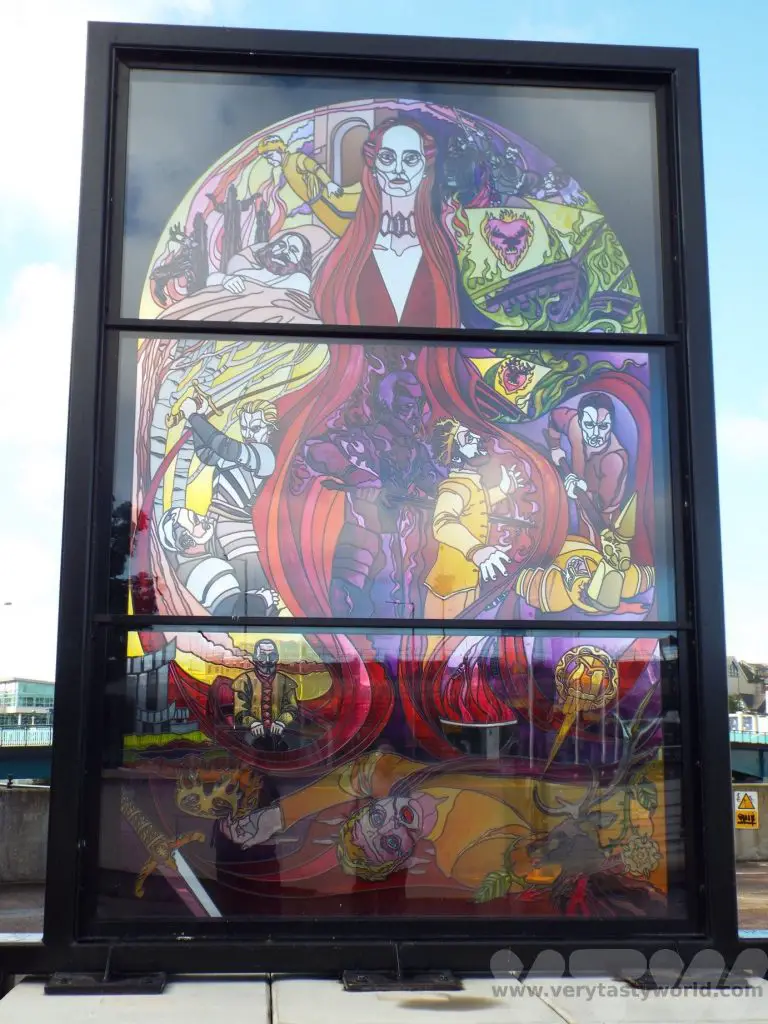
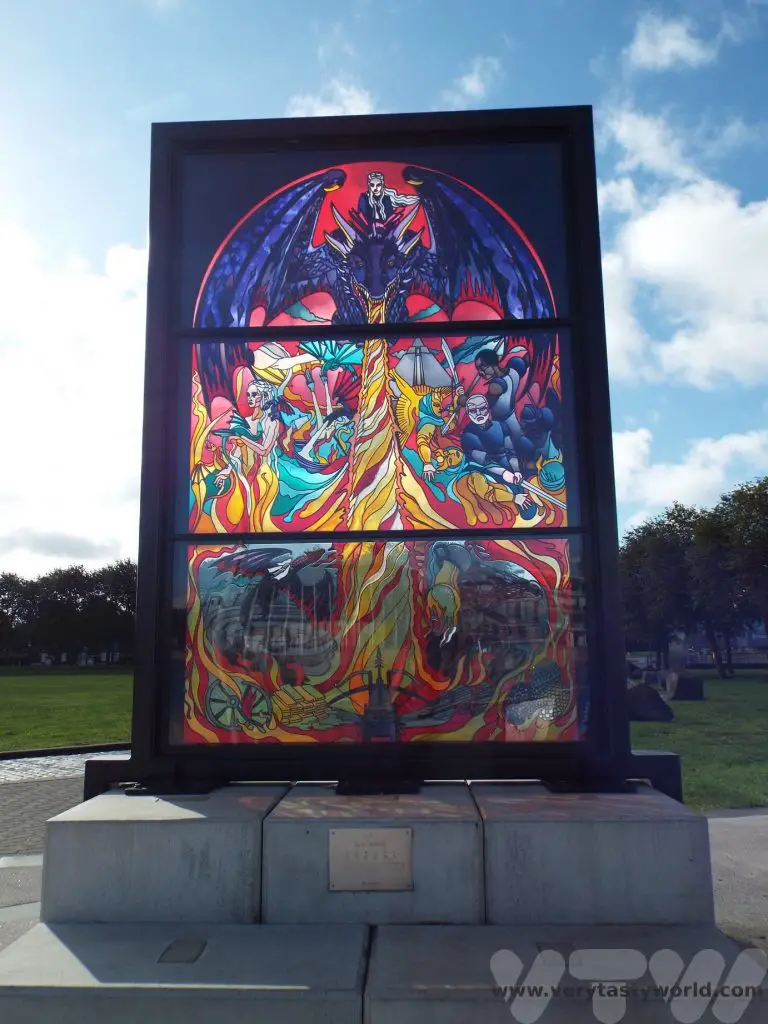
Driving To The Antrim Coast
We decided to spend a day on our Northern Ireland road trip driving from Belfast to Derry visiting many attractions along with way.
We headed out from Belfast to the Antrim coast, taking a quick detour to the Dark Hedges. This is an avenue of gnarled and twisted beech trees which were planted in the 18th century, one of many locations made famous by Game of Thrones. The trees are located on the Bregagh Road, Stranocum – follow the brown road signs to a car park which is very close by.
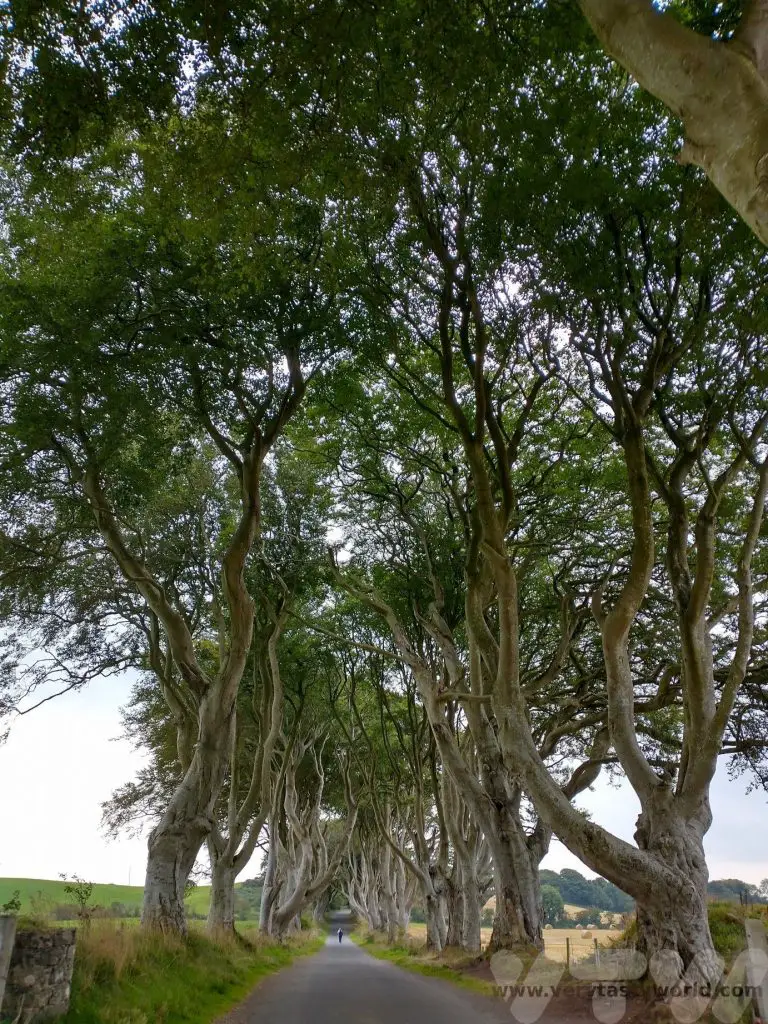
The Antrim Coastline is a place of great beauty and it’s a pleasure to drive along it. There are two locations that are unmissable.
Carrick-A-Rede Rope Bridge
The Carrick-A-Rede rope bridge was originally constructed by salmon fishermen over 350 years ago, it links the mainland with the teeny island of Carrickarede. The bridge has been rebuilt several times over the years. The current bridge is 20 metres across and is at a height of 30m above the sea.
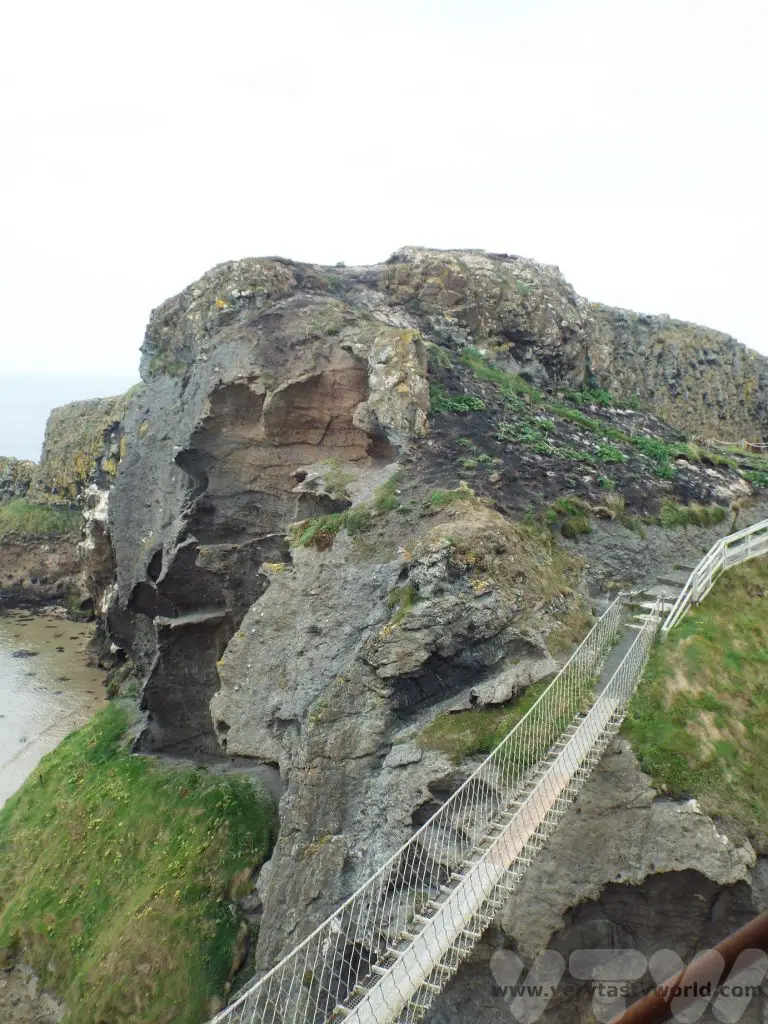
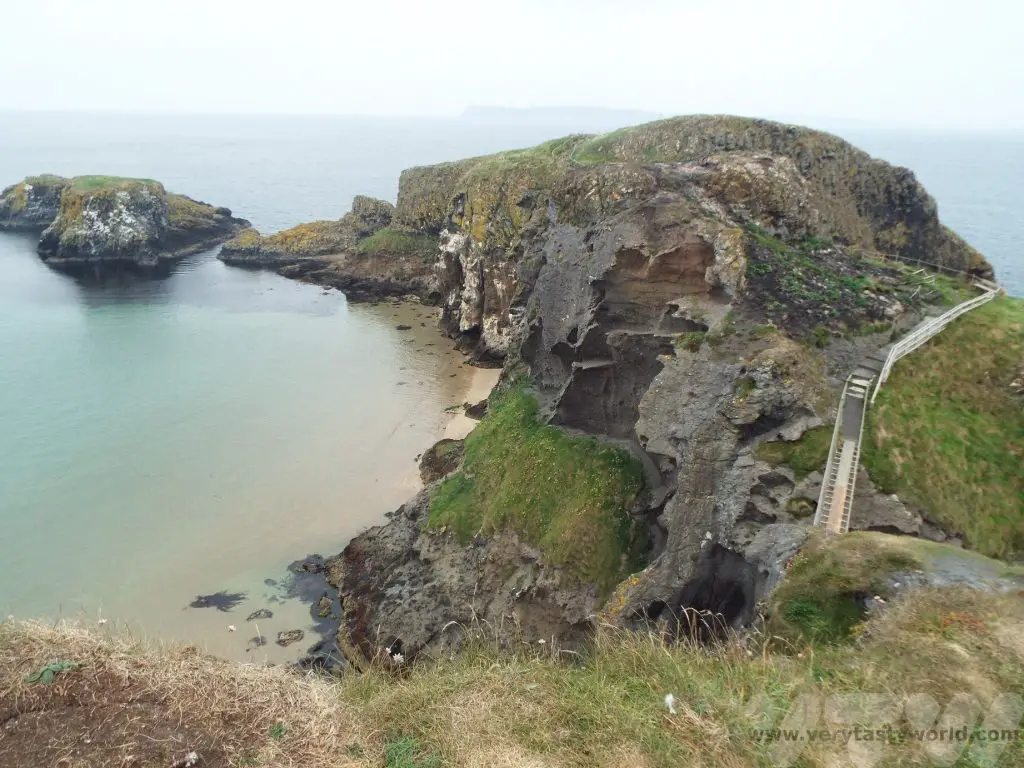
The car park is located on the North Antrim Coastal Path, just under a kilometre from Ballintoy village. Visitors need to prebook in order to cross the bridge. There is a car park (a fee applies) and the island is located along a coastal path – just follow the signs.
Sometimes the bridge is closed so it’s worth checking the National Trust website before visiting. Even if you can’t use the bridge it’s a stunningly beautiful walk along the coastline.
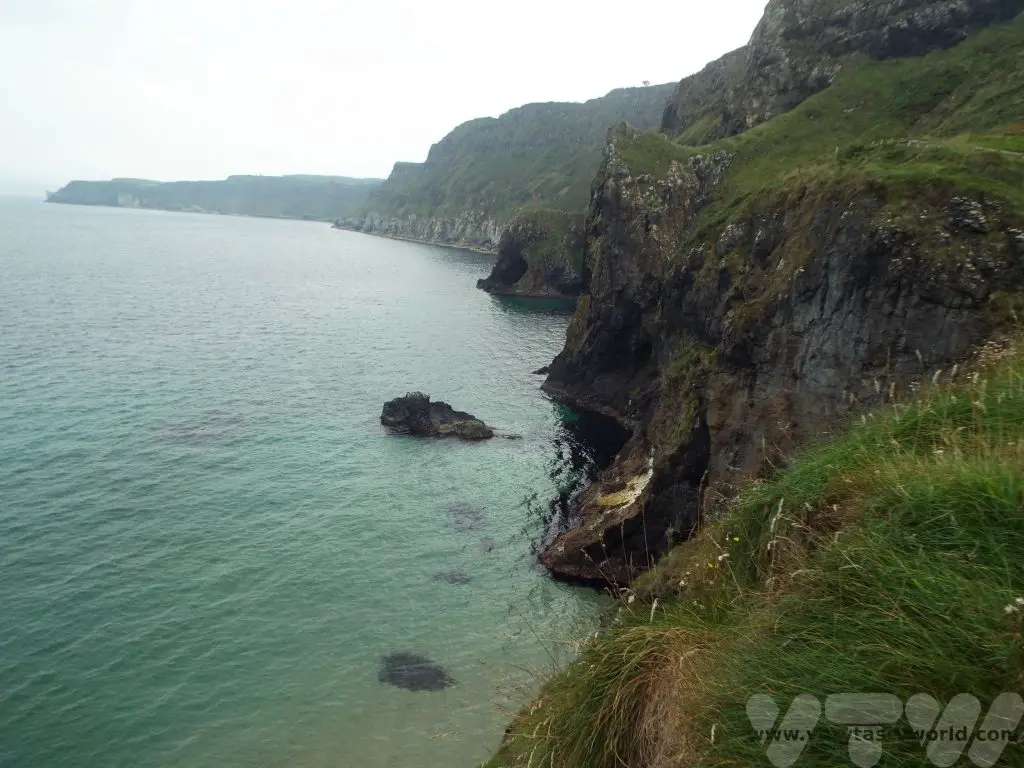
Giant’s Causeway
Around 11km along the coast from Carrick-A-Rede, the Giant’s Causeway was one of the attractions we had most wanted to visit on our trip. Mitch’s Geography A-level is entirely to blame, as it has been for all sorts of geographical attractions that we’ve visited over the years, from glaciers to oxbow lakes. Northern Ireland’s only UNESCO heritage site, the Giant’s Causeway is a wonder of nature.

It comprises some 40,000 basalt columns, largely in hexagonal shapes, that all interlock. They formed over 60 million years ago following volcanic eruptions which forced the layers of molten basalt to develop and then solidify on the chalk beds. As the lava cooled it contracted to form the columns, the relatively even rate of cooling determining that the liquid basalt settled into the characteristic shapes. But the cooling wasn’t totally uniform, so while most of the columns on the causeway are hexagonal, there are a few with more sides.
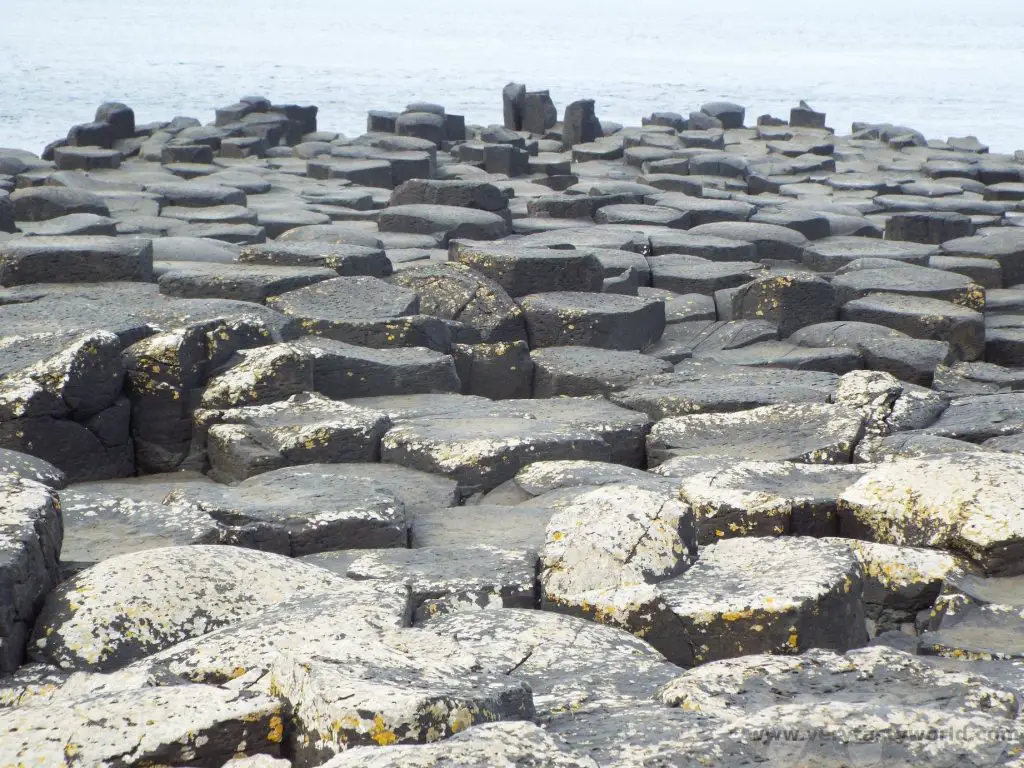
The causeway really is marvellous and, unsurprisingly, this is the most Instagrammed spot in Ireland. It’s possible to walk on the basalt columns themselves and there are a number of short hikes in the area that will take you to and from the visitor’s centre. Make sure you wear suitable walking shoes, the causeway can get slippery.
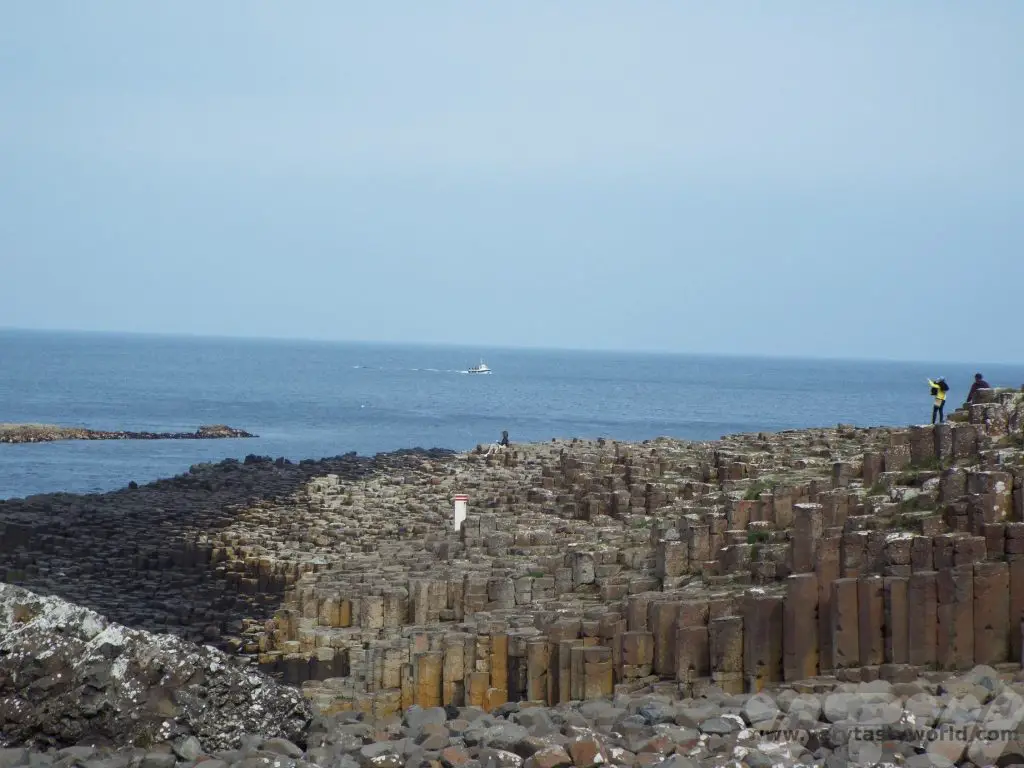
But alongside the geological wonder lies a legend. The giant of the eponymous causeway is Finn Macool who built it in order to take on rival giant Benandonner from Scotland. But Macool later learned that Benandonner was a much larger giant and would have presented a real challenge in a battle. So Finn’s wife had a very clever idea.
When they heard about the imminent visit from his rival she wrapped Finn up in baby clothes and placed him in a giant cradle. Benandonner arrived and was informed that Finn was not at home. And he was so shocked at the size of a ‘baby’ giant, he figured that the adult Macool must be enormous so he fled Ireland, destroying the causeway behind him to ensure that Finn wouldn’t follow.
Further Finn Legends
Finn was also the giant reputed to have scooped out a large portion of soil in Northern Ireland to chuck at his Scottish rival. Unfortunately he missed and it ended up in the sea, forming either the Isle of Man or Ailsa Craig. The scooped out hole in the earth became Lough Neagh.
There are all sorts of other legends about the various rock formations in the area. Finn’s giant camel, which was apparently his only form of transport when he wanted to cover long distances, can be seen on the approach to the causeway. Sadly it was turned to stone. There is most definitely a camel-shaped rock in the picture below.
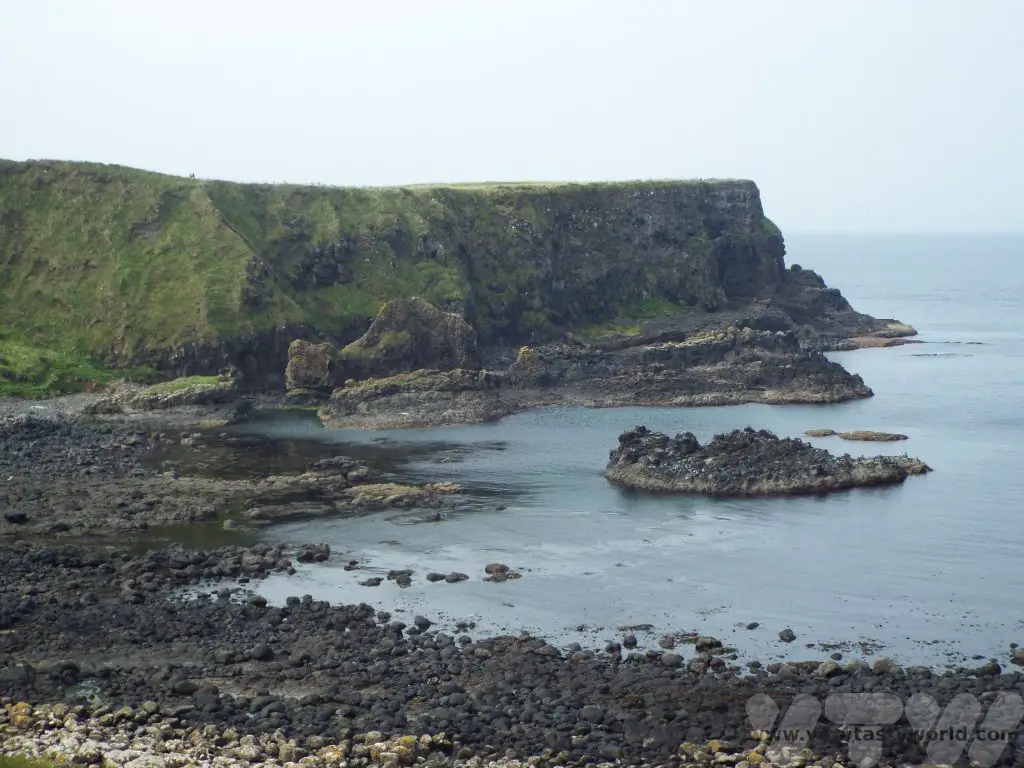
And apparently he used to play the organ – there are organ pipes on the headland overlooking the causeway, which are also basalt stacks.
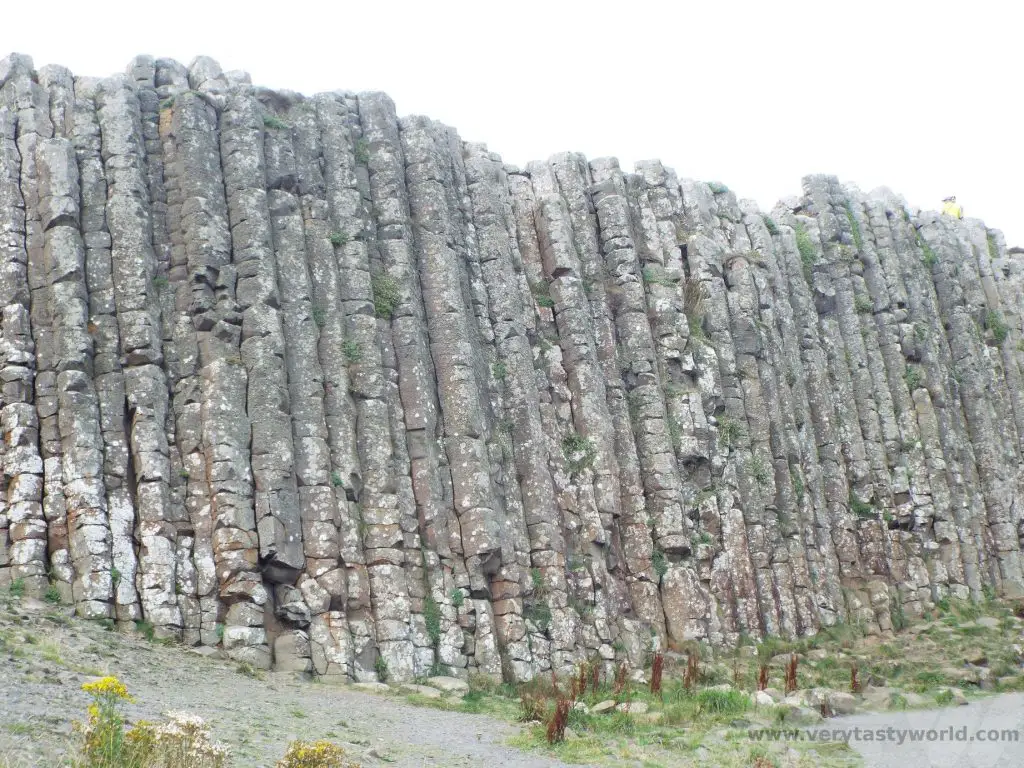
The Giant’s Causeway is a National Trust site, so members can visit and park for free. It’s advisable to pre-book tickets online, especially if you want a space at the local car park if travelling by car. The visitor’s centre has lots of information about the site and runs free guided walks for visitors – you are provided with a headset, because it can get very windy, and this ensures you can hear the commentary. We recommend a tour as the guides provide loads of geological information as well as stories of the giant’s legends.
Bushmill’s Distillery
Moving inland, Bushmill’s is Northern Ireland’s best known whiskey distillery and the oldest working distillery in the world. It dates from 1608 when King James granted a licence and is named for all the mills located on the nearby River Bush. It offers distillery tours and tastings.
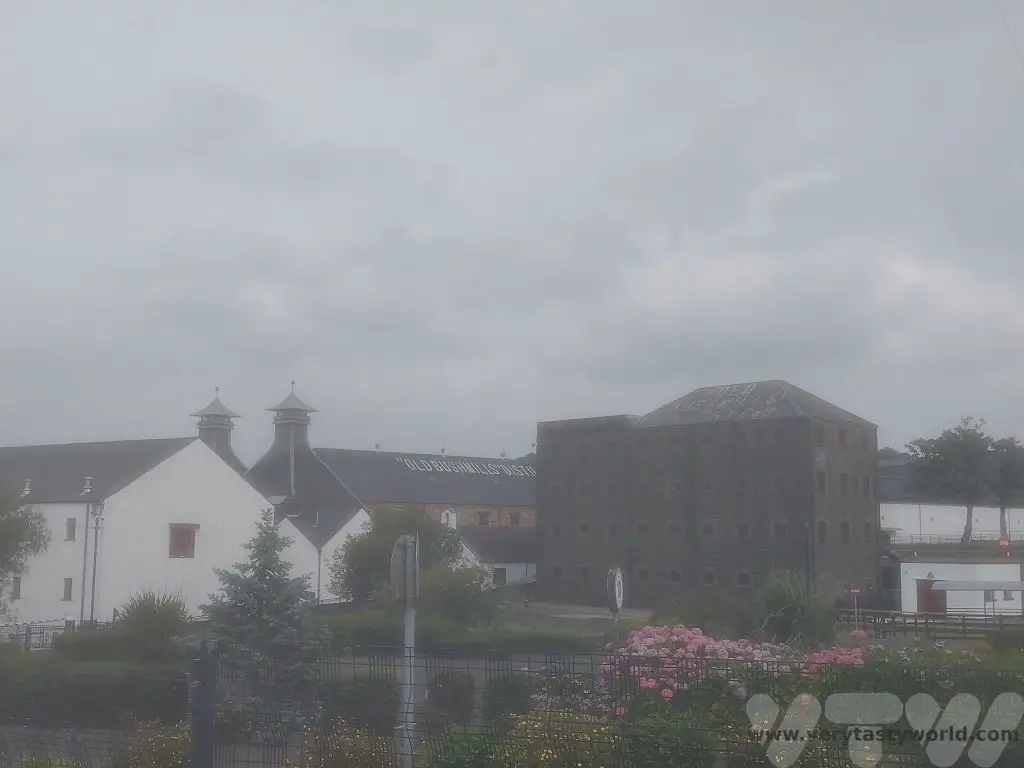
Old-Fashioned Seaside
If you’re looking for a bit of beach time, head back to the coast and then travel west to Portstewart or Portrush which are both popular locations. Portrush offers amusement parks and arcades whereas Portstewart enjoys a long beach with promenade. Portstewart also boasts Morelli’s ice cream parlour, established in 1927, which has a fantastic reputation for really good ice cream.
Derry
Continuing in a westerly direction we arrived at Derry – also known as Londonderry. It is the second largest city in Northern Ireland.
This is the only city in Ireland to have retained its original walls and is considered to be amongst the best walled cities in Europe. Walking the city walls is an essential activity in Derry.
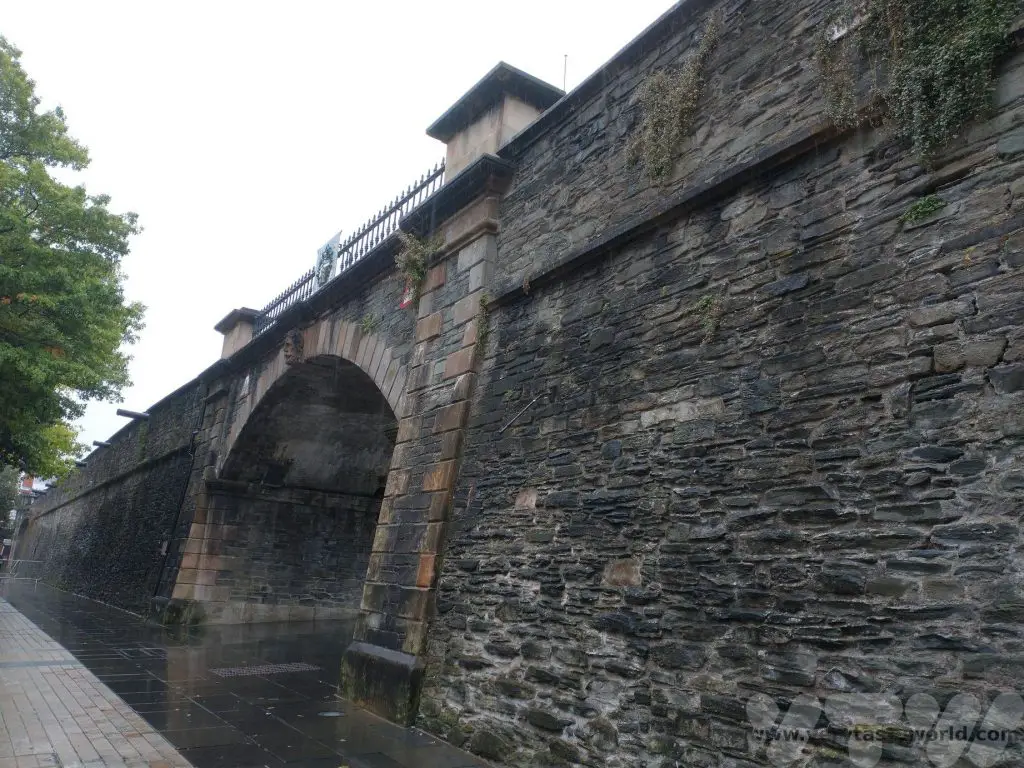
The walls were built in the 17th century by the Irish Society in order to protect the city from English and Scottish settlers. The Siege of Derry started in 1689 when apprentices locked the gates against invading forces loyal to James II. Eventually, the king himself arrived to demand a surrender but the citizens refused. The siege lasted several months and the walls were never breached – ships on the river Foyle eventually managed to get supplies to the hungry but stubborn Derry folk.
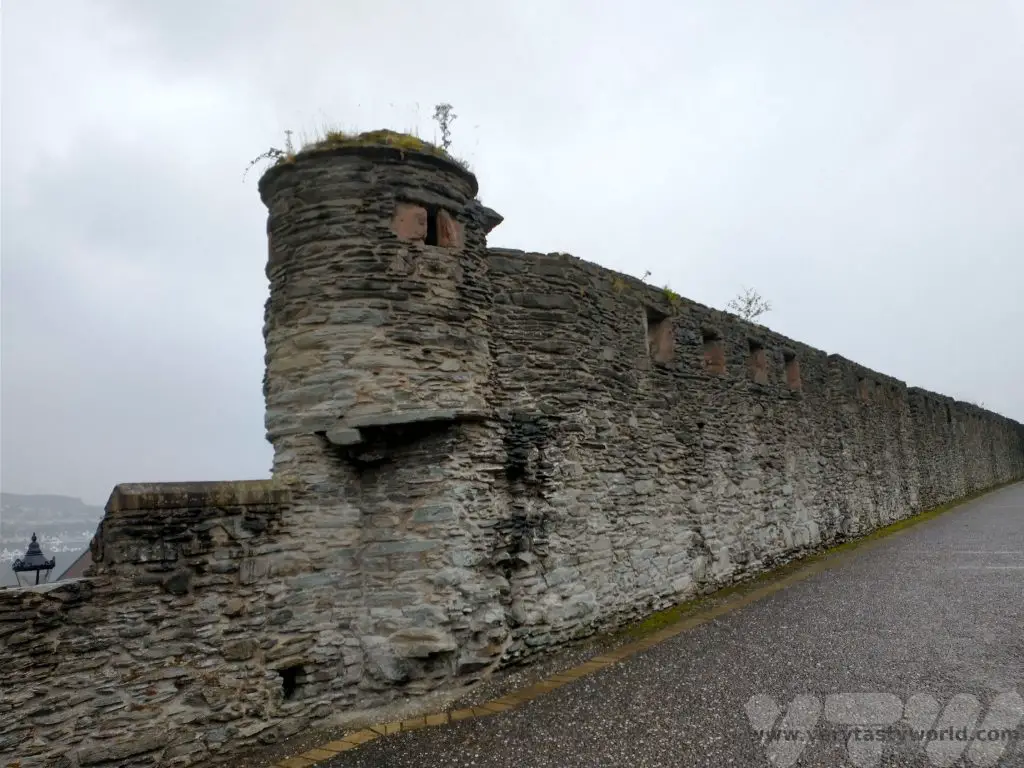
The city walls are around 1.5km in length and take around 20-30 mins to walk around. There are seven gates: Shipquay Gate, Butcher Gate, Bishop’s Gate and Ferryquay Gate are the four original gates, with New Gate, Castle Gate and Magazine Gate being added later. Many defensive cannon can still be seen.
St Columb’s cathedral is is dedicated to Saint Columba who was an Irish monk who set up a Christian settlement to the area and then brought Christianity to Scotland after being exiled from Ireland. Construction on the cathedral started in 1628 and it is the first cathedral to have been built following the Reformation in the UK.
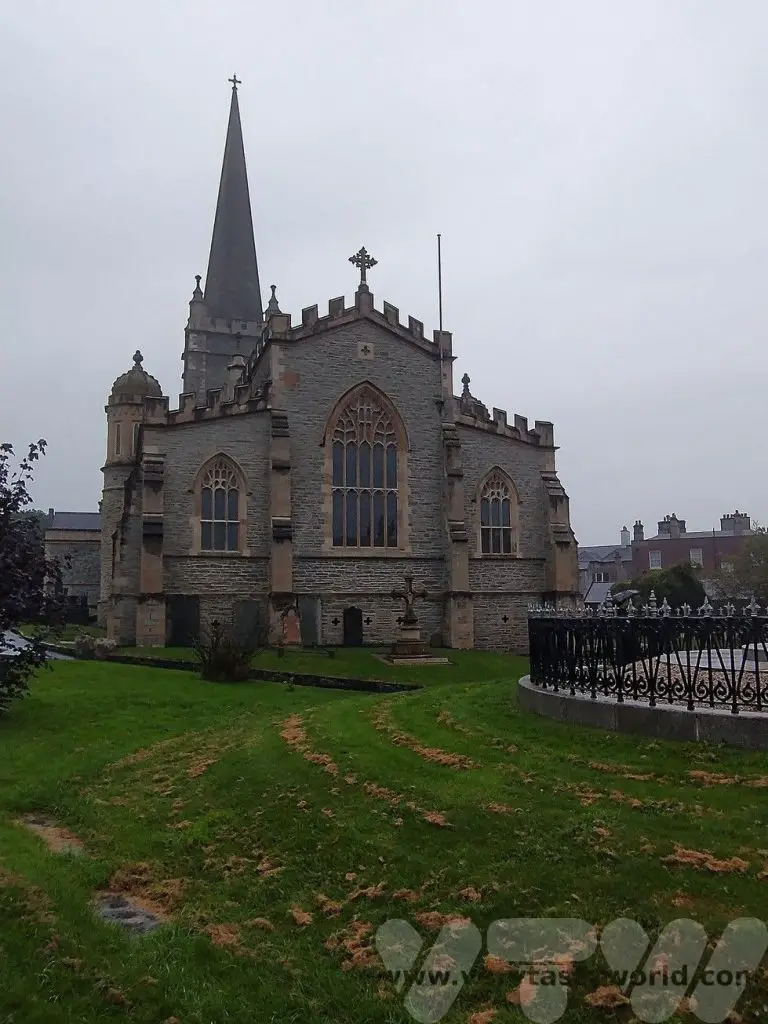
Derry’s beautiful Guildhall is where the city council meet. Completed in 1890 the design of the distinctive clock tower was influenced by the Elizabeth Tower in London, more commonly known as Big Ben (which is actually the bell of the great clock).
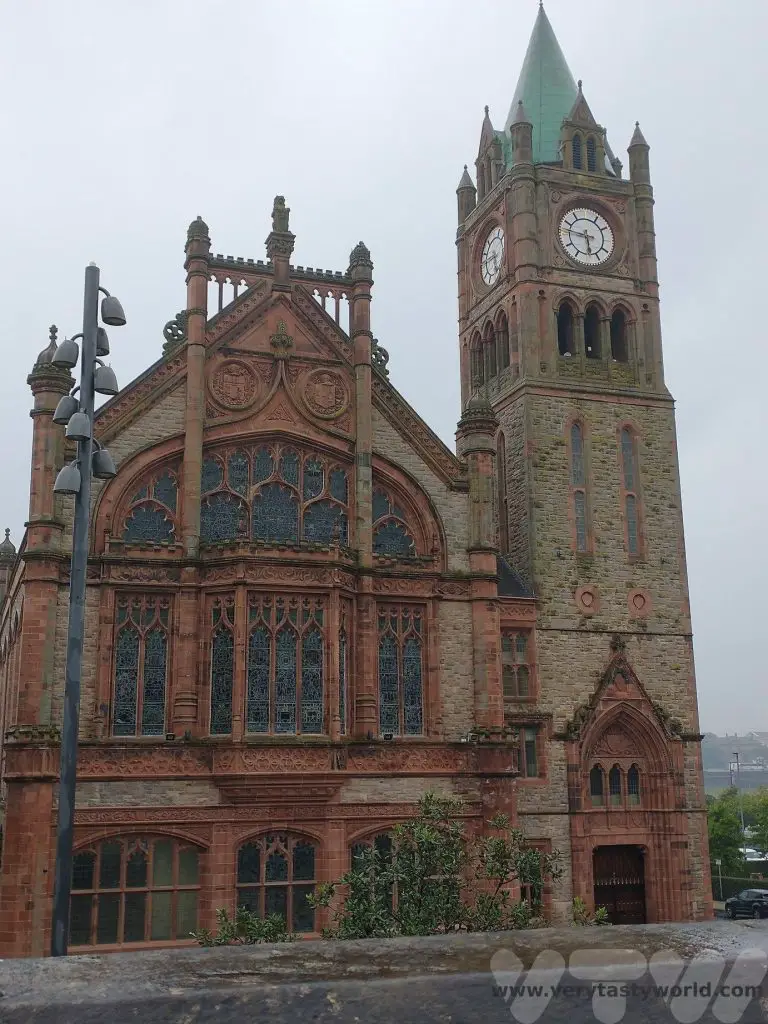
Derry has a history of sectarian tension and is the place where the conflict known as the Troubles began. The Battle of the Bogside took place in 1969 and this area was also the location of the Bloody Sunday incident in 1972. The Museum of Free Derry is dedicated to the struggle for civil rights in the region in the context of the creation of Free Derry in the 1960s and 1970s.
The street art has a political edge.
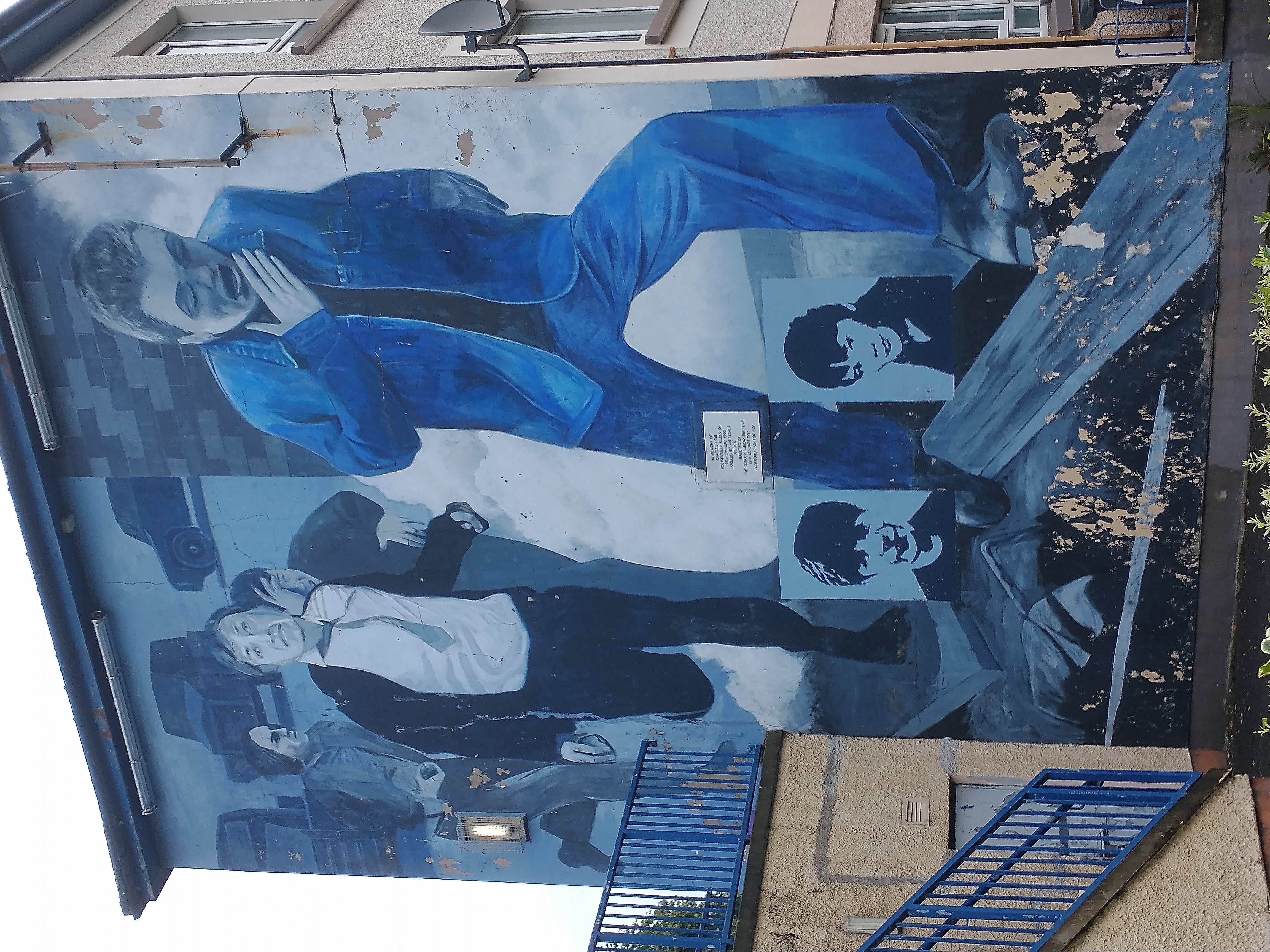


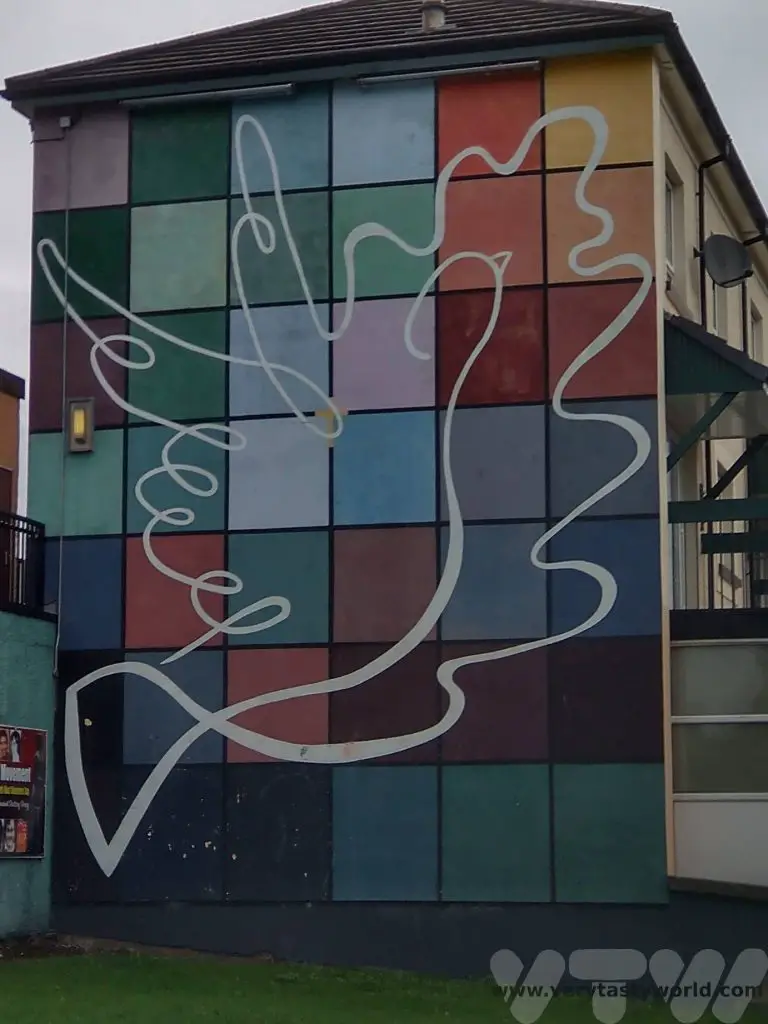
Free Derry corner is a landmark in the Bogside area where nationalists declared an autonomous area in the 1960s and 70s. Originally graffiti on the gable wall of a terraced house, the houses were demolished in later years but the wall remains.

The Good Friday Agreement in 1998 ended a significant amount of the violence associated with the Troubles. It acknowledged that that the majority of the people of Northern Ireland wished to remain a part of the United Kingdom and that a substantial section of the people of Northern Ireland, and the majority of the people of the island of Ireland, wished to bring about a united Ireland.
The Derry Peace Bridge was opened in 2011. It’s a bicycle and footbridge which crosses the River Foyle and links the Waterside area, which is mainly unionist, with Cityside, which is largely nationalist.
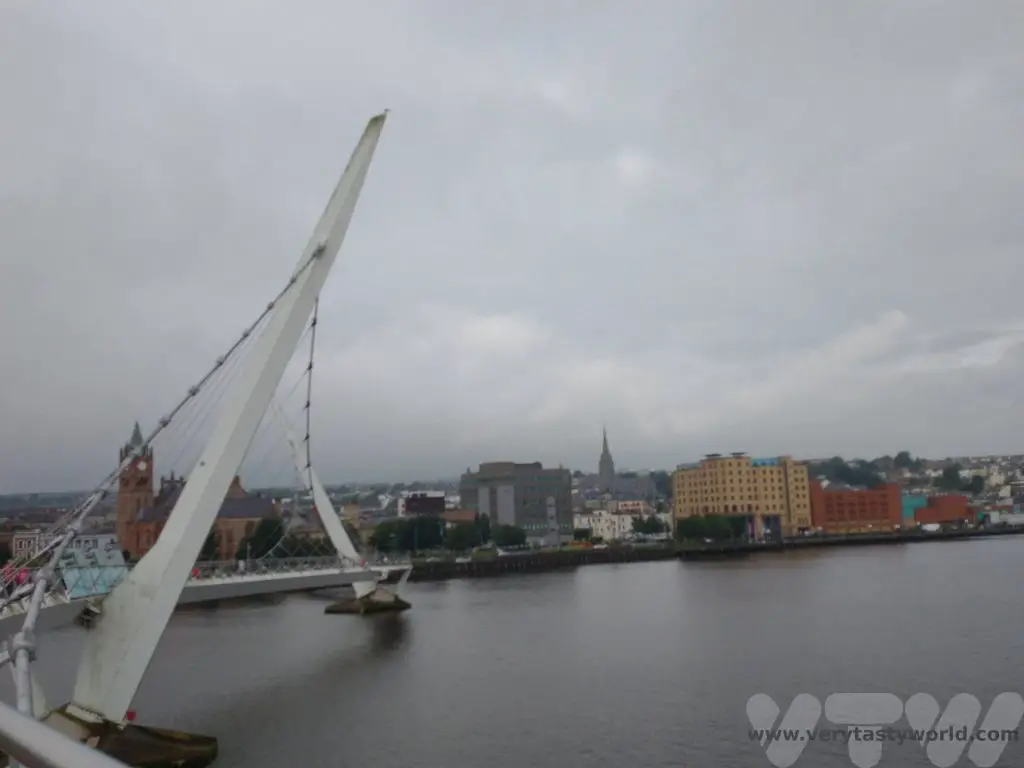
Browns in Town
A recommendation for foodies is Browns in Town, a sister restaurant to the fine dining establishment Browns Bonds Hill, a Michelin-starred restaurant with an excellent reputation. Located on Strand Rd, Browns in Town offers modern Irish cuisine – fine dining at exceptional prices. We enjoyed pan seared scallops with smoked beef, celeriac and a red wine jus, a pork wellington with jus, and pressed beef, served with a side order of champ – an Irish dish comprising creamy mashed potato with spring onion (and lashings of delicious butter).
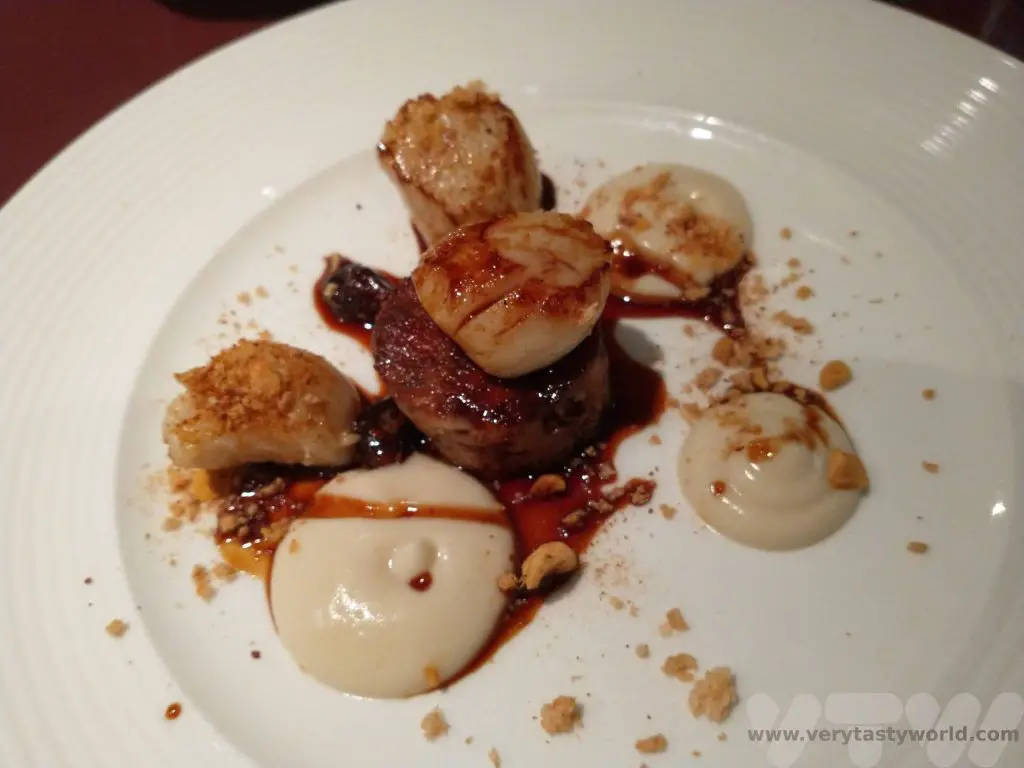
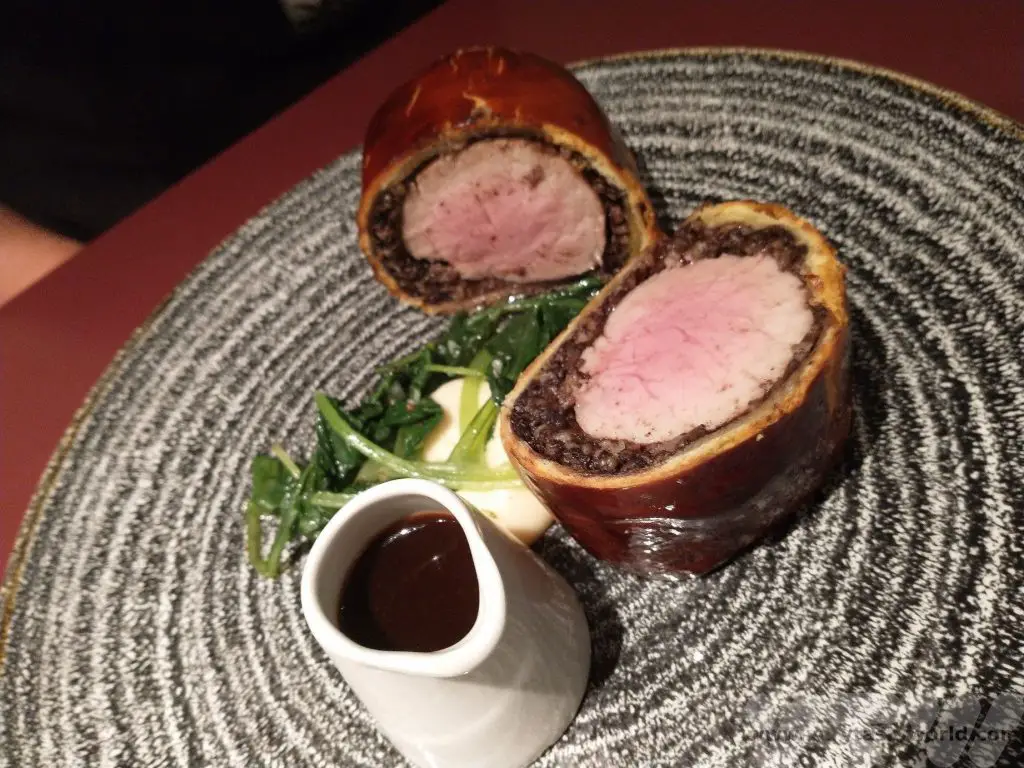
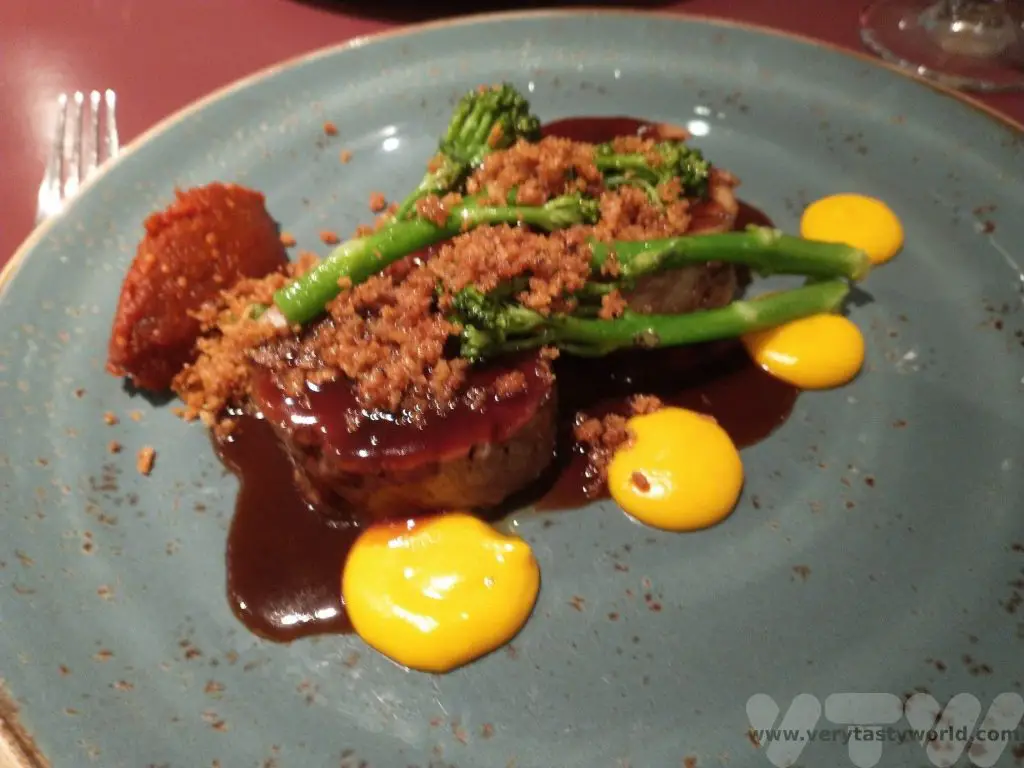
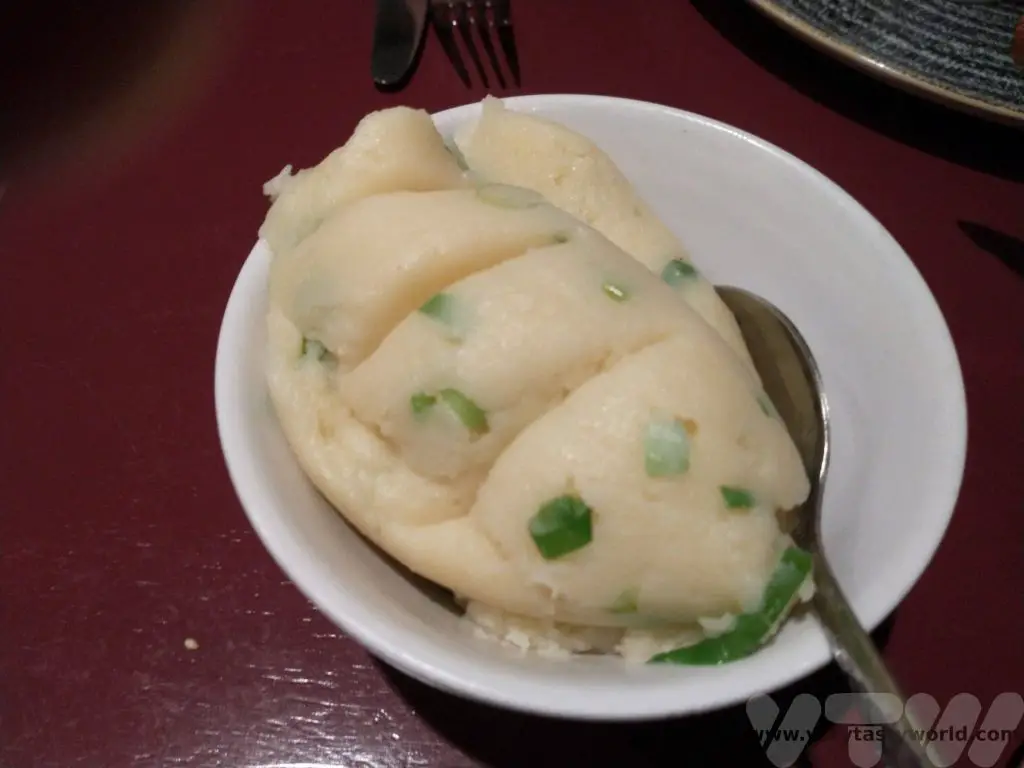
We visited Northern Ireland as part of a longer road trip where we also followed much of the Wild Atlantic Way in the Republic of Ireland. We can highly recommend this beautiful area with its very friendly people as a great place to enjoy a few days.
Belfast is just a couple of hours’ drive from Dublin. This blog post by faheyjamestravel has a list of things you can do there.

RECIPE: Biryani Raita Recipe
There are many cuisines around the world that use yoghurt-based dips or sauces to accompany particular dishes. Tzatziki is a Greek dish which incorporates cucumber and herbs into a Greek yoghurt. Salatat Khyar is an Arabic salad which is similar to tzakziki in that it uses cucumber and mint with the yoghurt but can be eaten as a standalone salad. And then there’s raita, often used in Indian cuisine as an accompaniment to ‘cool’ the spiciness of a main dish. This biryani raita recipe is simplicity itself to make and really delicious.
Yogurt is ideal to counteract the heat of chillies in any dish it accompanies. There’s a protein called casein which is found in dairy products. It binds to the active component of chillies which is called capsaicin and is the main cause of the burning sensation in the mouth. The casein helps soothe the burn. If you eat a spicy chilli, a drink of milk will help quash the heat far better than water.
(The combination of chilli and cheese in Bhutan’s national dish is cleverly designed to be spicy but the intense heat is tempered by the cheese.)
Raita uses cucumber but it can also have other vegetables such as onion and carrot, often diced. This dish can easily be adapted to incorporate different vegetables or even spices. If you wanted to add a warm earthiness, chuck in a teaspoon of cumin. Or add a touch of fire with a teaspoon of chilli or paprika. Harissa is a nice addition for a Middle Eastern dish. Similarly, you can vary the herbs – mint is a lovely alternative to the coriander or you can just add both in.
Our biryani raita is fantastically flexible in accompanying so many different types of dish.
Biryani Raita Recipe
Ingredients
3 heaped tbs plain natural yoghurt
2 garlic cloves (use 1 if you’re not so keen on garlic or are planning on kissing someone later on in the day)
Juice of half a lemon
Half a cucumber
2 spring onions (green onions)
Bunch of coriander/cilantro (mint also works really wall, or combine the two)
Pinch of salt. We particularly like crystal salt rather than table salt
Method
Grate the cucumber.
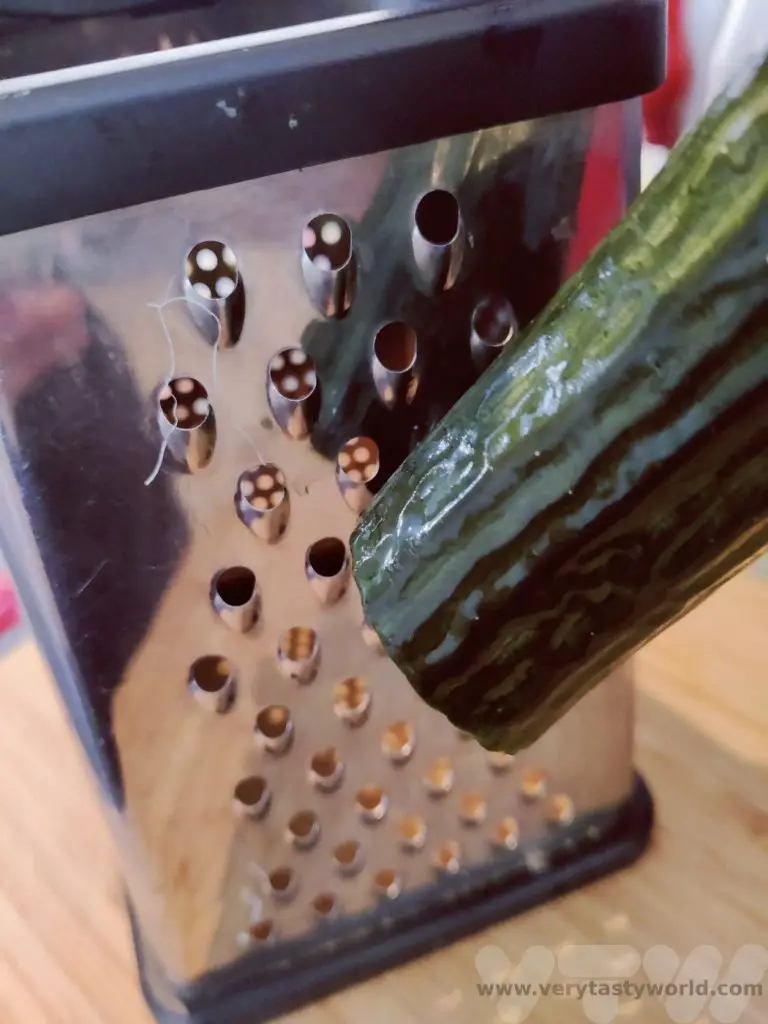
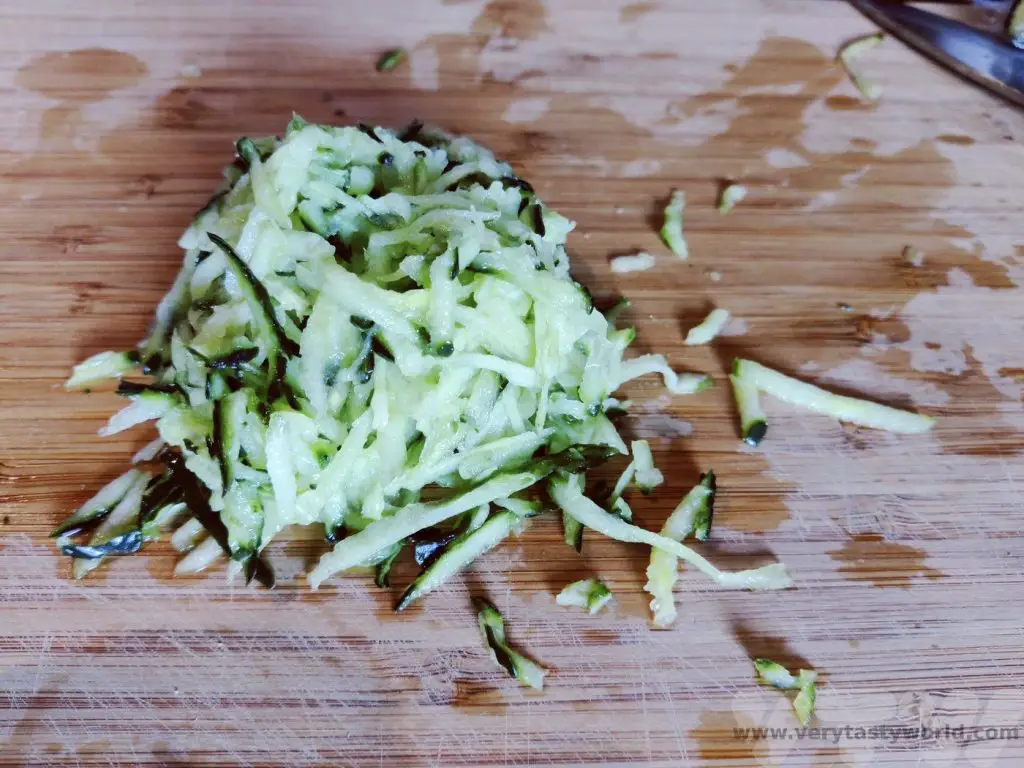
Gather up grated cucumber and squeeze the water out.
If you wish you can wrap the grated cucumber in a tea towel to absorb the rest of the water. It’s important to get as much water out of the cucumber as possible to avoid the raita becoming watery.
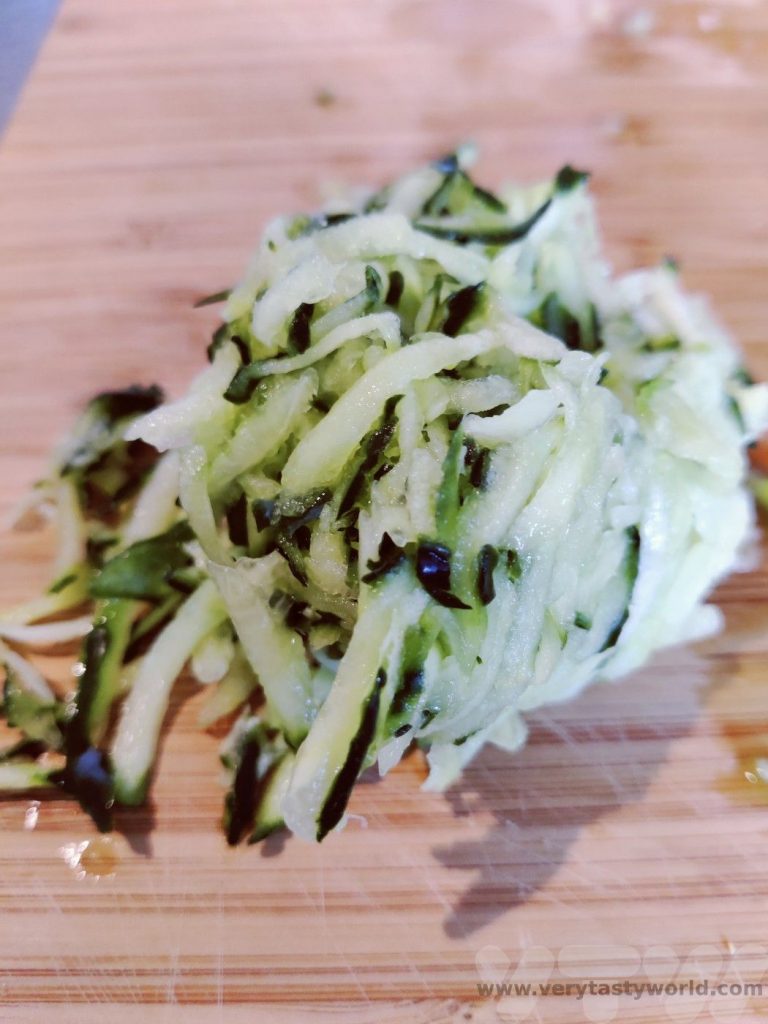
Finely chop the spring onions and coriander.
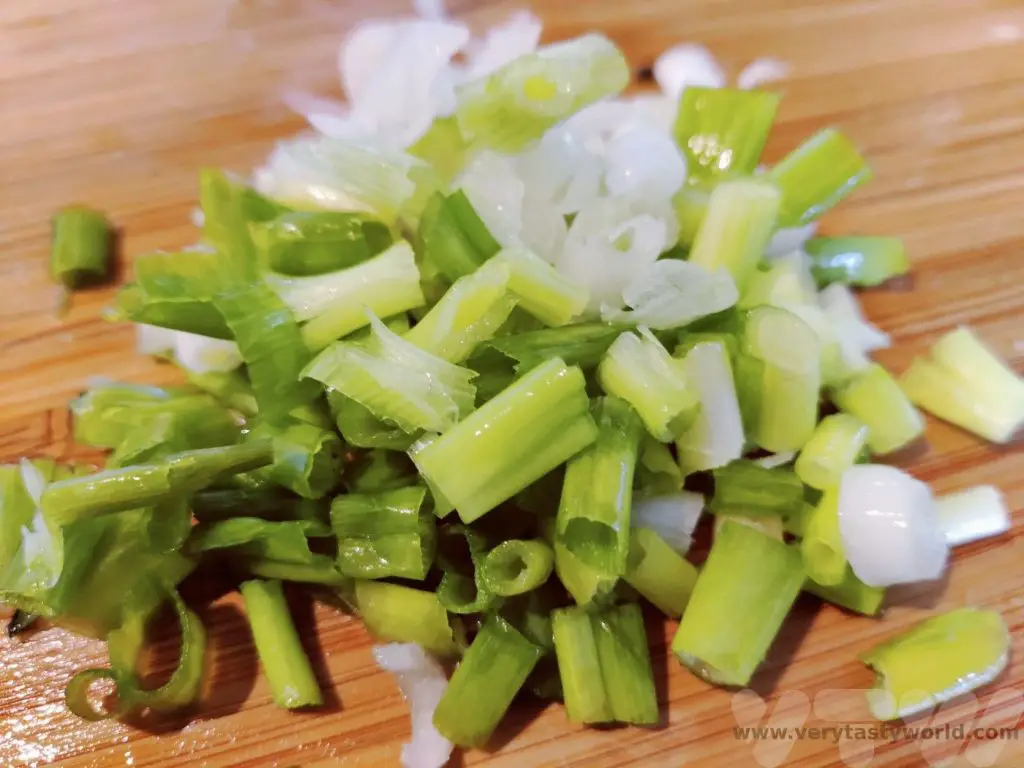
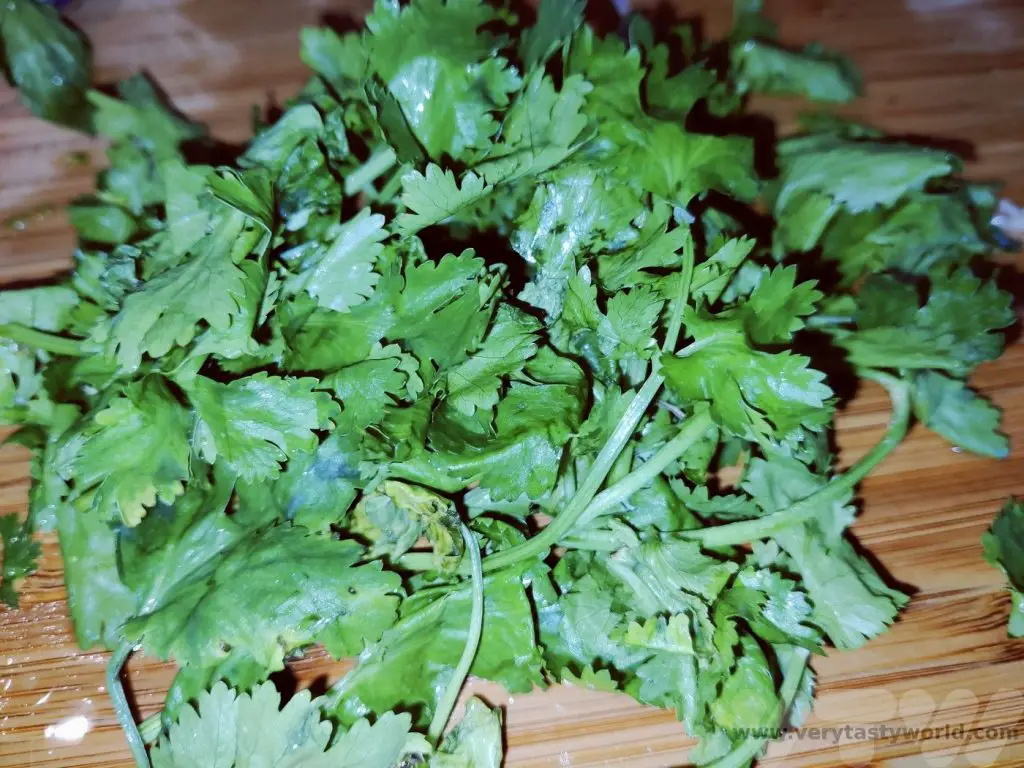
Place yoghurt in a bowl. Add the cucumber, spring onions and coriander.
Grate the garlic into the bowl – we find that a microplane grater is perfect for this. Our you could use a standard garlic press.
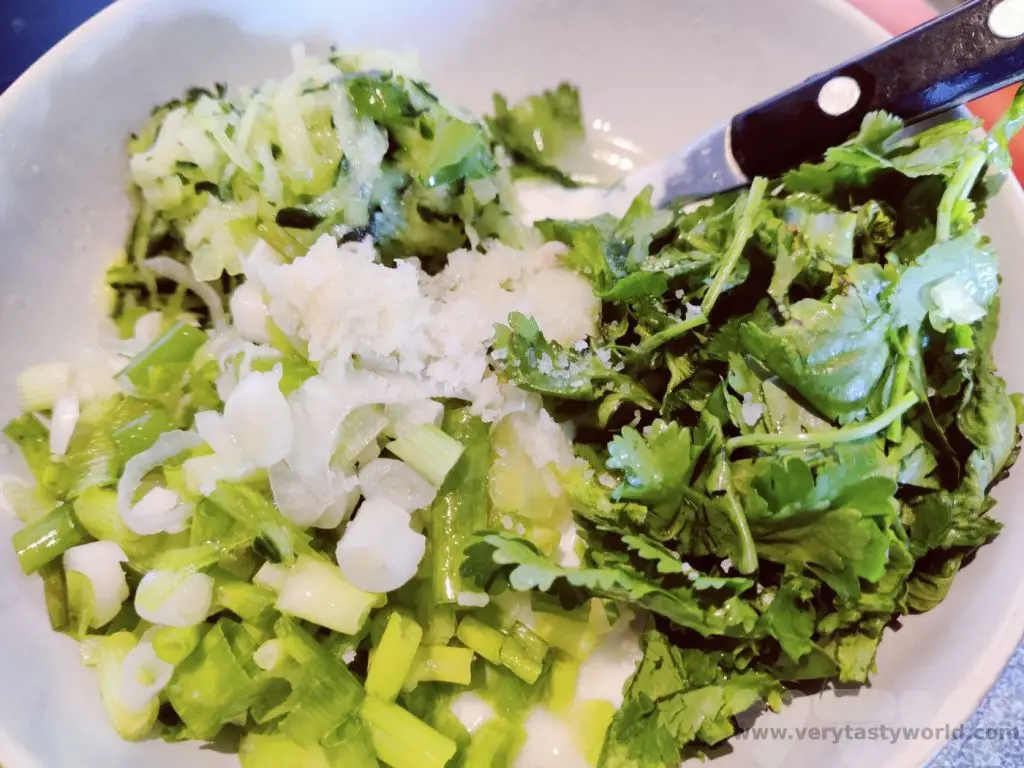
Squeeze the lemon to extract its juice, making sure that none of the pips end up in the mixture, and add the salt.
Mix together.
Ready to serve.
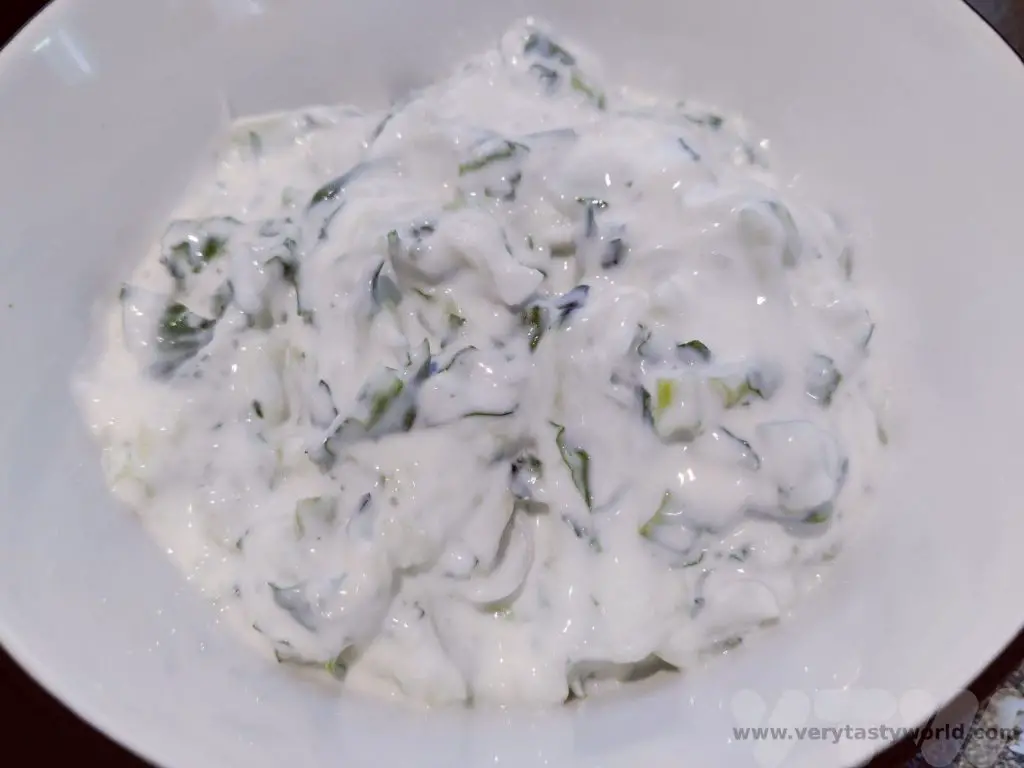
This works brilliantly to accompany a biryani, and cool it down if it’s particularly chilli hot.

Or a delicious dollop as a great accompaniment to felafel in a wrap.
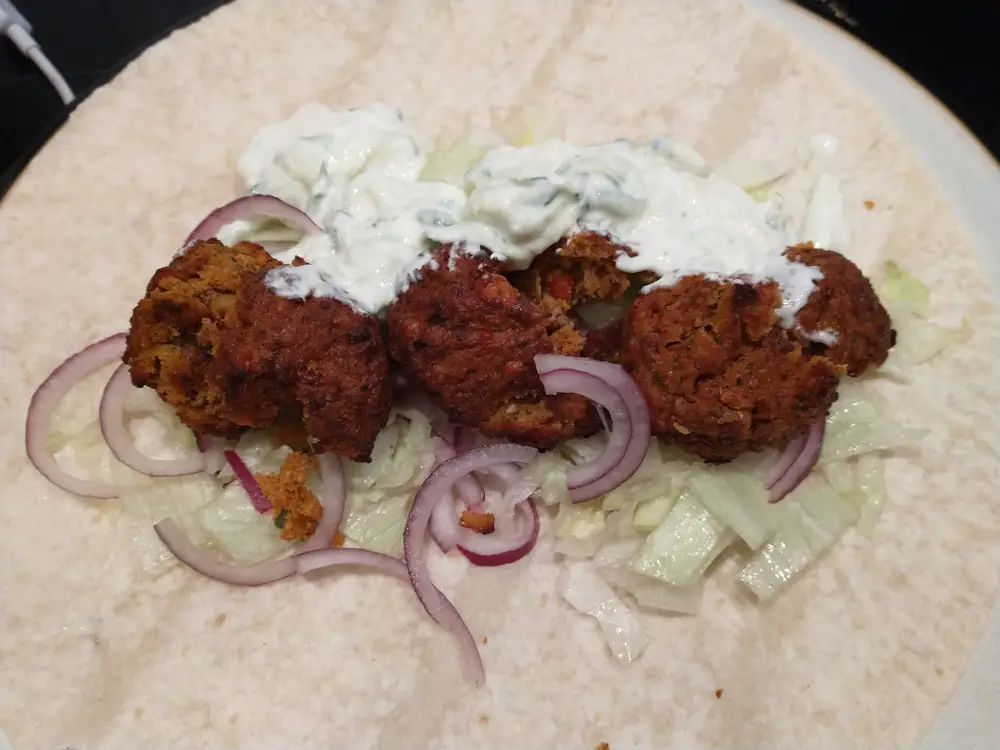
Or to accompany a Middle Eastern mezze. Here with home-made dolma (stuffed vine leaves), baba ganoush (aubergine dip) and tabbouleh (cous cous herb salad).
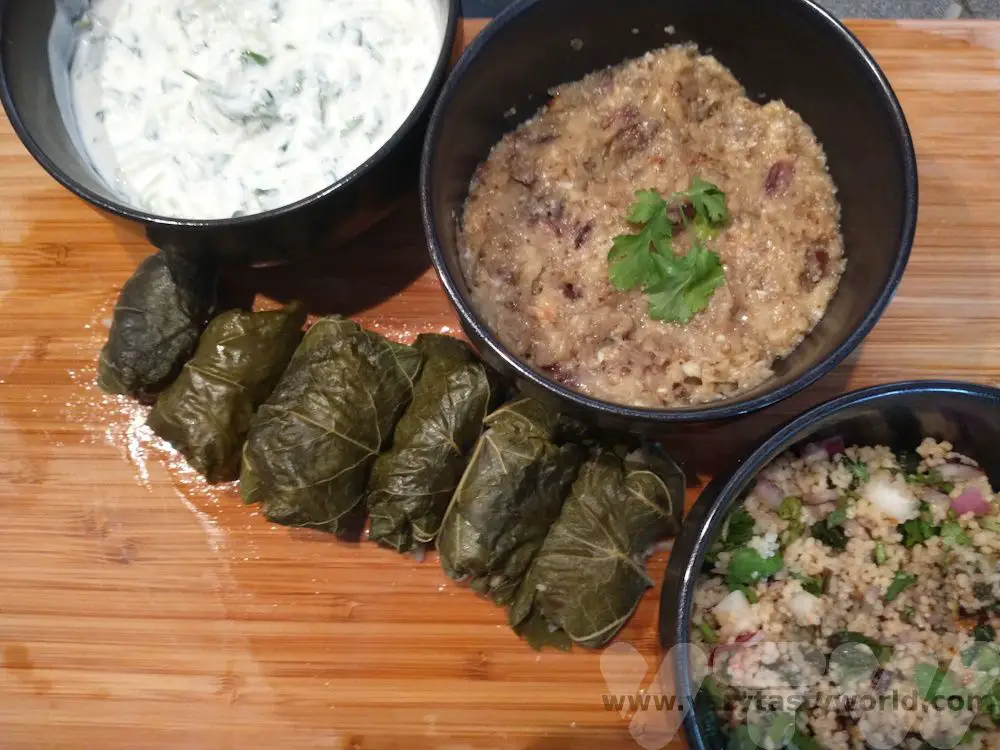
Related Posts You May Enjoy

- RECIPE Oyakodon Donburi
- Zero Waste Recipes Before Your Holiday
- RECIPE: Vegetable Biryani Tamil Nadu Style
- RECIPE: Vegan Wild Garlic Pesto
- Recipe: Venetian Pasta Sauce
- RECIPE: Biryani Raita Recipe
- RECIPE: How to Make Costa Rica’s Gallo Pinto
- Recipe: Japanese Simmered Pork Belly – Buta no Kakuni
- RECIPE: How to Make Umeboshi

A Visit to Bhutan’s Punakha Dzong
Punakha Dzong is both the second oldest and second largest dzong in Bhutan and is of huge historic and cultural importance to the Bhutanese people. It was the site of the former capital of Bhutan before the administrative centre moved to Thimphu in 1955. It is the location for one of the many festivals in Bhutan that are held throughout the year.
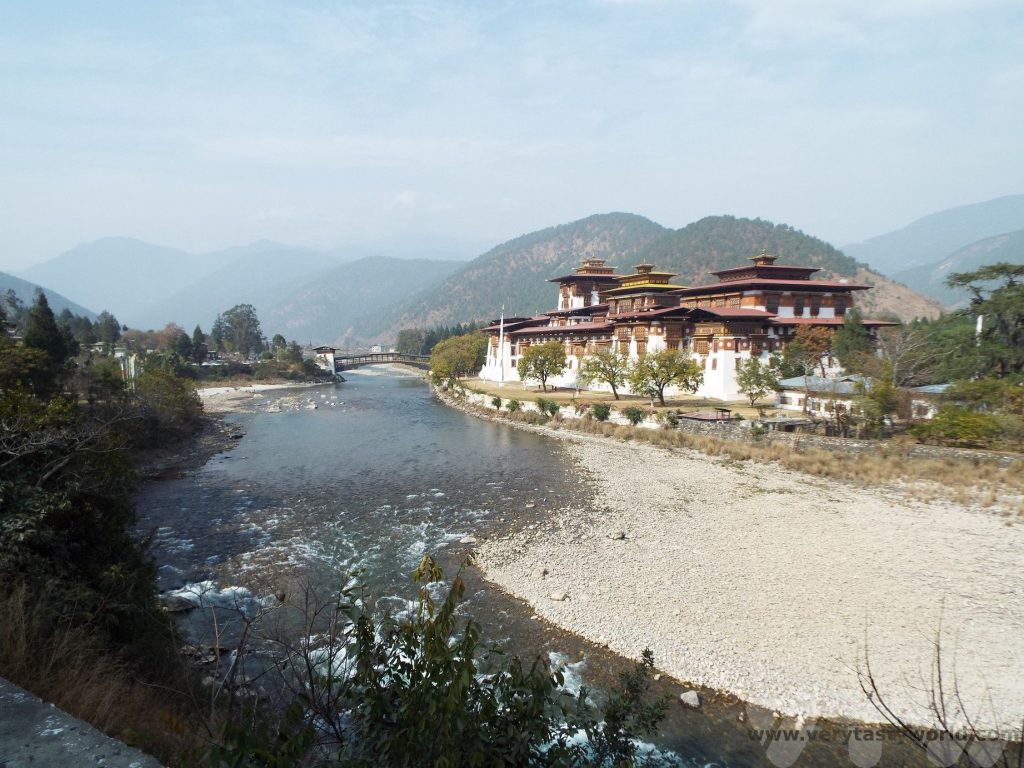
Getting to Punakha
When travelling in Bhutan independent travel is not encouraged and the government set a minimum daily price for visitors. When we visited there was a high season and low season and prices varied accordingly. The costs included transportation, accommodation, a driver and guide, and meals. Some of the money raised is used by the government as part of a sustainable development fund for education and healthcare for the Bhutanese people.
However, since Bhutan opened up following the pandemic, the minimum price has increased significantly, and the tourism fee is charged on top of the travelling expenses.
We were shown this amazing country by our delightful guide Dawa and driver-extraordinaire Tring. Punakha is located east of Bhutan’s capital and it takes around three hours to drive from Thimphu.
One thing that you get used to about driving through Bhutan is that the roads are rarely straight – they will wind their way up the mountain passes through multiple hairpin bends and then wind their way down. It’s a lovely way to travel although we were told that some visitors can occasionally suffer a degree of travel sickness.
On the way we crossed the Dochula Pass, at an altitude of 3100m, which offered wonderful views of the surrounding mountains.
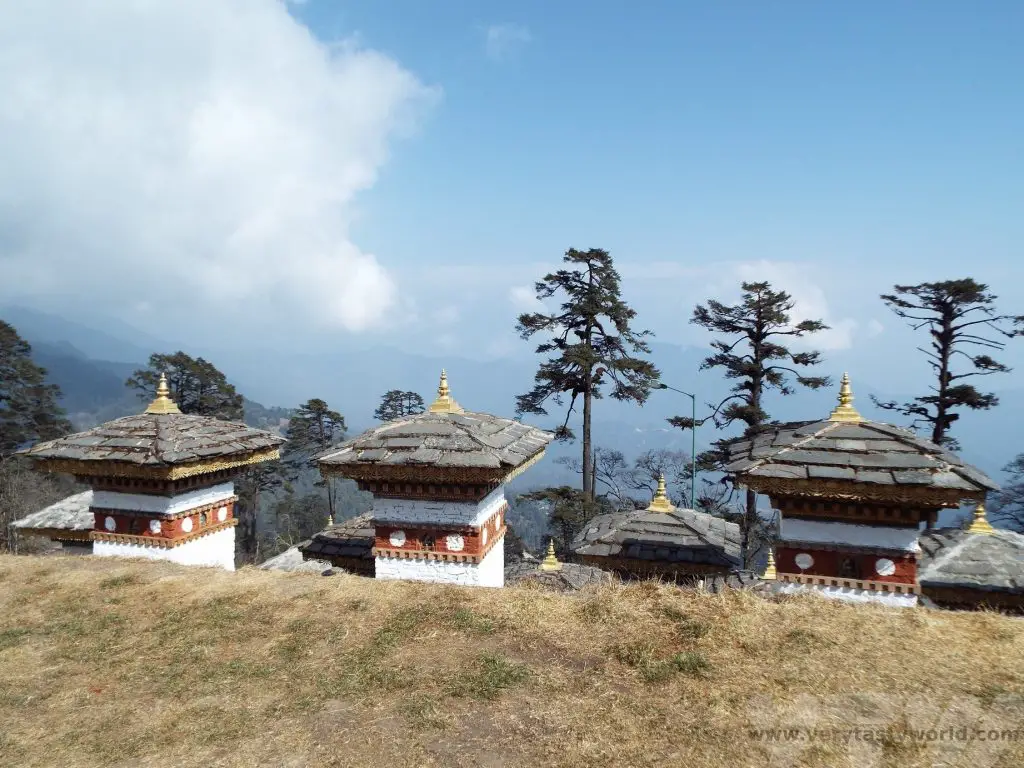
The pass is noted for the 108 Druk Wangyal Khang Zhang Chortens (also known as stupas) which are located on a hill beside the road. They are a memorial to Bhutanese soldiers killed in a battle between Bhutan and Assam insurgents in 2003.
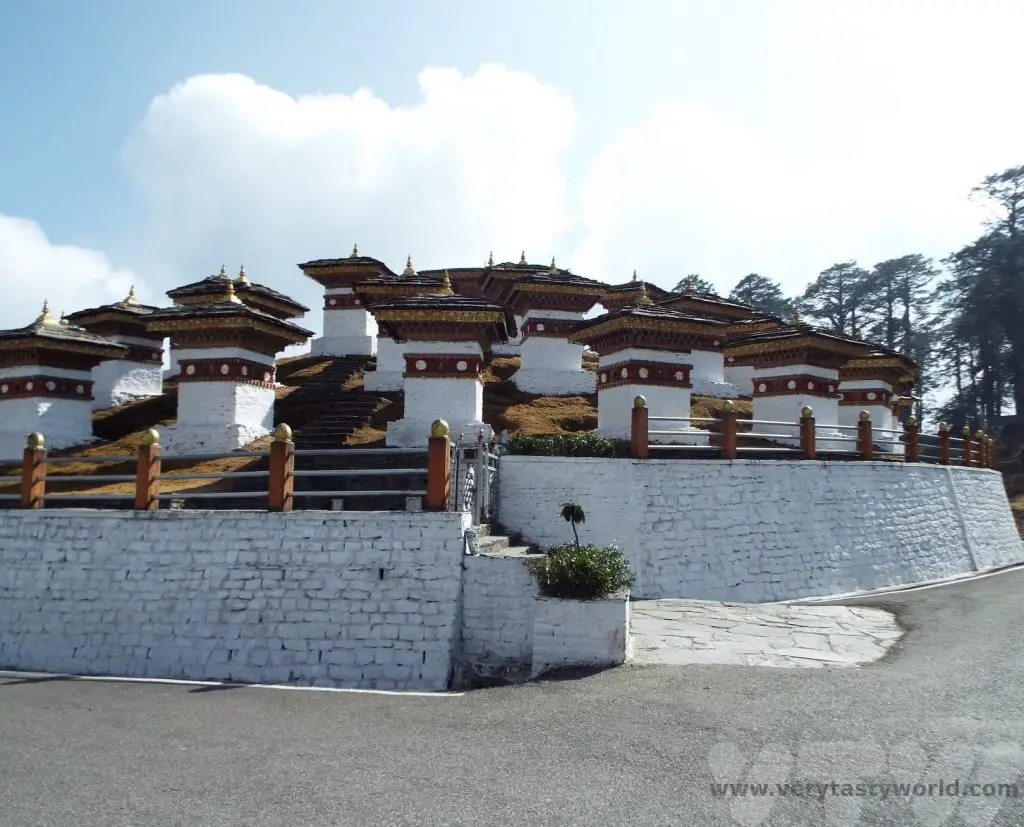
Visiting Punakha Dzong
Punakha Dzong is located at the confluence of the crystal-clear Pho Chu and Mo Chu rivers, respectively the male and female rivers, which join to form the Puna Tsang chu or Sankosh river. A dzong is a fortified monastery and its architecture is typical of this region.
One of the lovely things about Bhutan is that the country has a happiness index, created by the 4th King of Bhutan, who declared that ‘Gross National Happiness is more important than Gross Domestic Product.’ He was absolutely right. Punakha Dzong has another name: Pungthang Dewa chhenbi Phodrang which means ‘palace of great happiness’.
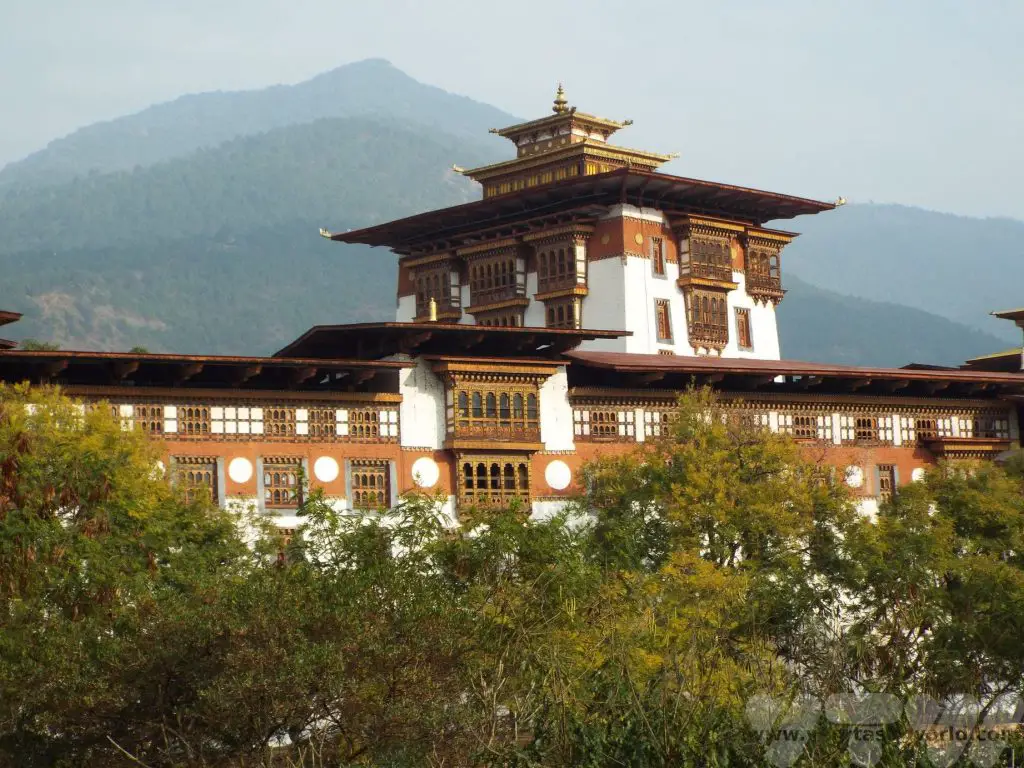
The dzhong was built in 1637-38, conceived by Ngawang Namgyal, 1st Zhabdrung Rinpoche, the Buddhist lama who unified Bhutan as a nation state. There is a legend that the architect had a vision, inspired by Zhabdrung, which encouraged him to design and construct the building.
The main central tower, the utse, is a hugely impressive piece of architecture. It is a fortress as much as monastery and as such has defensive walls all around. The entrance is defined by a very steep staircase and a huge wooden door. The interior is filled with beautiful murals depicting the life of Buddha as well as three large gilded statues – of the Buddha, Ngawang Namgyal and Guru Rinpoche, the most important saint in Bhutan, credited with bringing Buddhism to the country. He is also known as Padmasambhava, which means ‘born from lotus flower.’
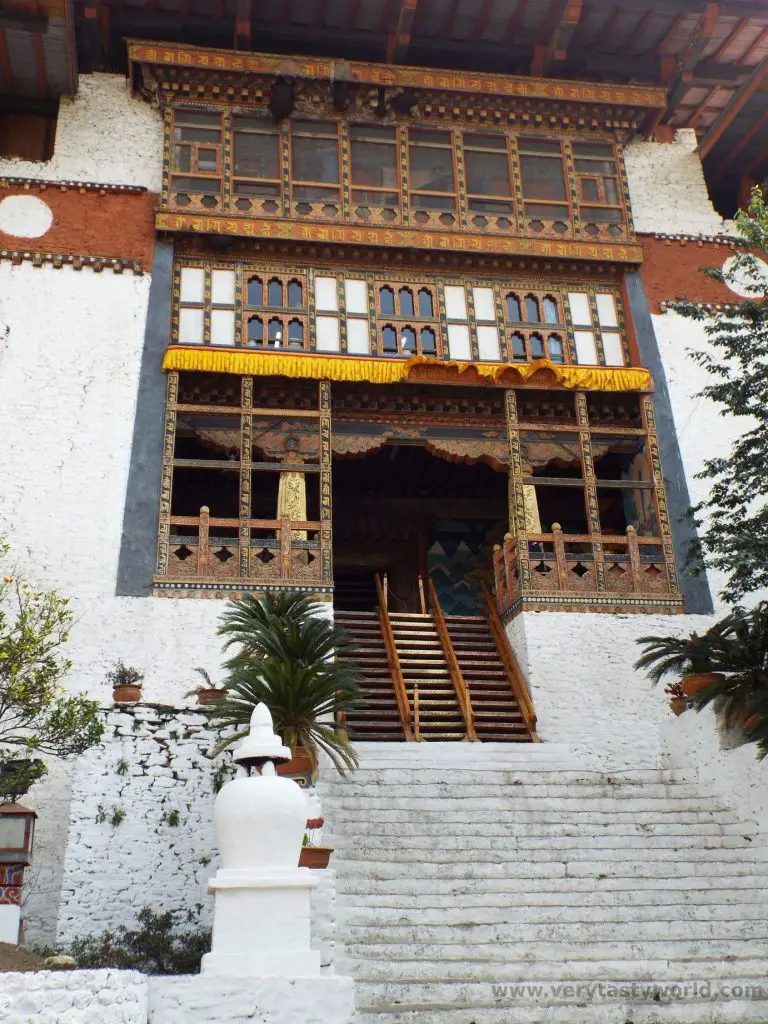
There are three courtyards within the dzhong, known as dochey. and these are surrounded by administrative offices and a bodhi tree, a sacred fig, which is hugely revered in Buddhism.
The last courtyard is home to the Nag Yul Bum Temple. National treasures such as the embalmed body of Zhabdrung and the original Kanjur, the holy book, are stored here. No one is allowed to enter besides the king and the chief abbot.
The dzhong also has a covered wooden bridge which crosses the clear blue waters of the Mo Chu. The original bridge was built in the 17th century but was destroyed during a flash flood in the 1950s. A replacement was completed in 2008.
When visiting monasteries in Bhutan conservative dress should be worn. We were advised that we should wear long sleeves when entering temples. If the weather is warm it’s fine to put on a light jacket (we used our light raincoats). Also, photography is usually forbidden inside temples and it’s important to respect this.
Punakha Festival and the King’s Birthday
Each year the Punakha festival is held in February or March, depending on Bhutan’s lunar calendar. It lasts five days. There are all sorts of displays throughout the festival. Punakha Drubchen celebrates the Bhutanese victory of the Tibetans, who invaded of Bhutan in 1639, with dramatisations and re-enactments of the battle. In 2005, Punakha Tshechu was introduced and this focuses on traditional Buddhist teachings. Folk dancing is an important part of the festivals. Everyone dresses up in their finest traditional clothes. Men wear a gho, a knee-length tunic and women wear a long ankle-length dress called a kira.
We just missed the festival dates but were lucky that the timing of our visit enabled us to join the festivities for the king’s birthday, a three day celebration for Jigme Khesar Namgyel Wangchuck, the fifth and current Druk Gyalpo. (We were doubly lucky because we later travelled into Nepal, where we joined in celebrations for the Hindu festival of Holi.) Even though we had arrived quite early, the festival was well under way. There was plenty of dancing…
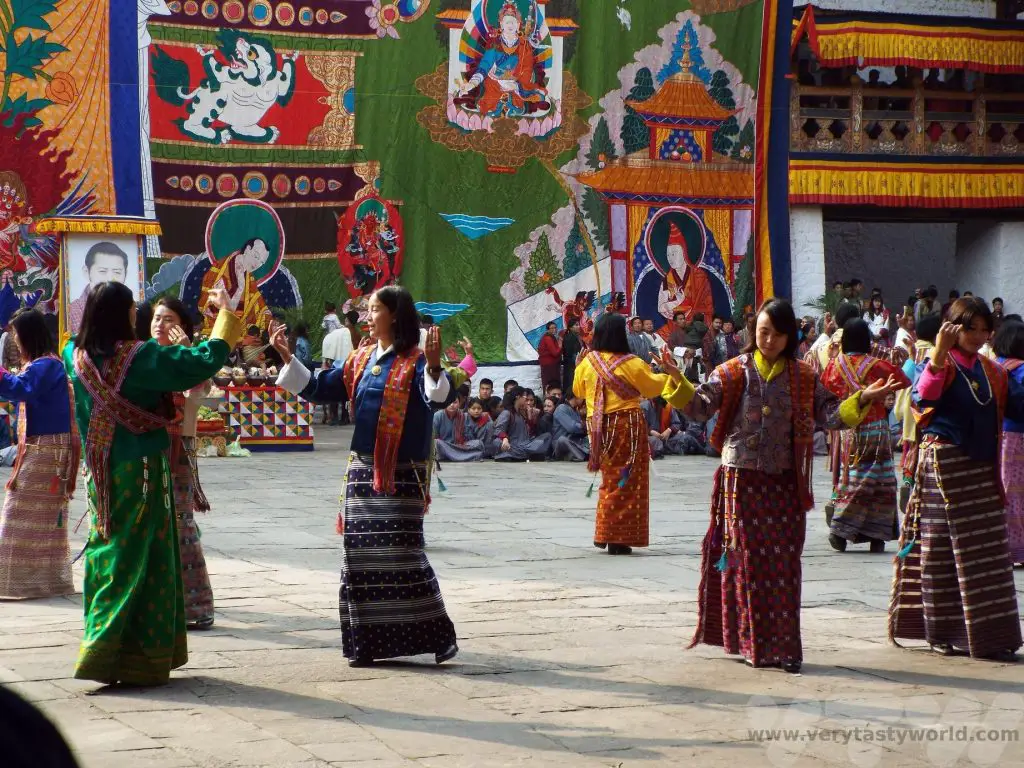
…formal…
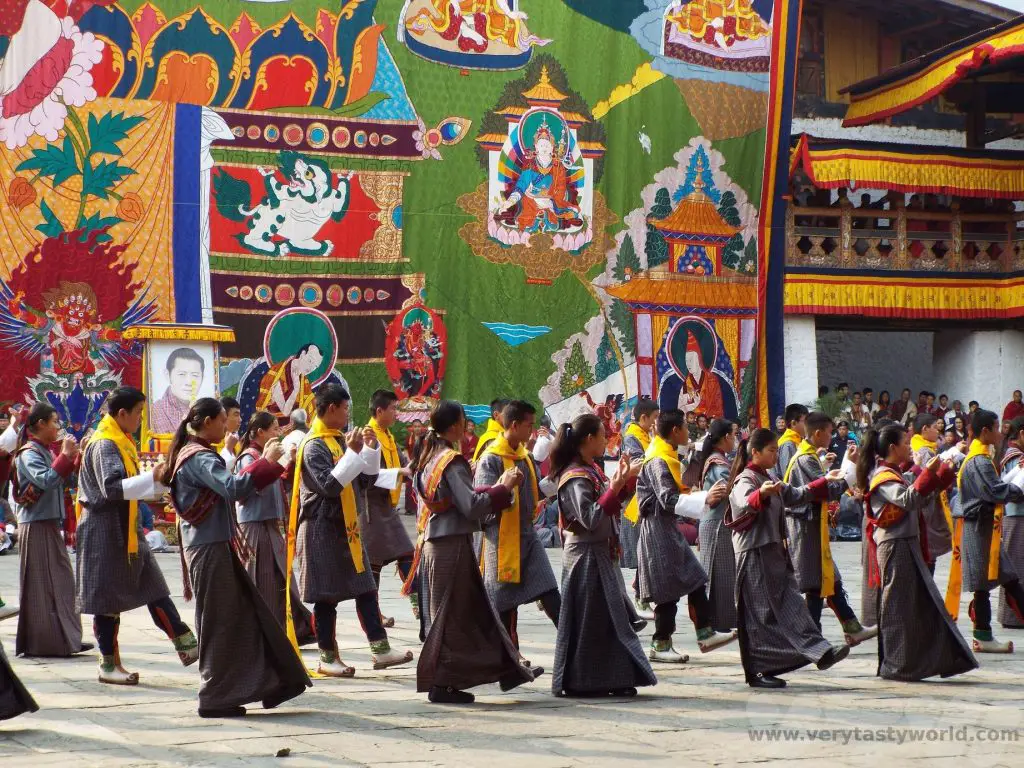
… and informal.
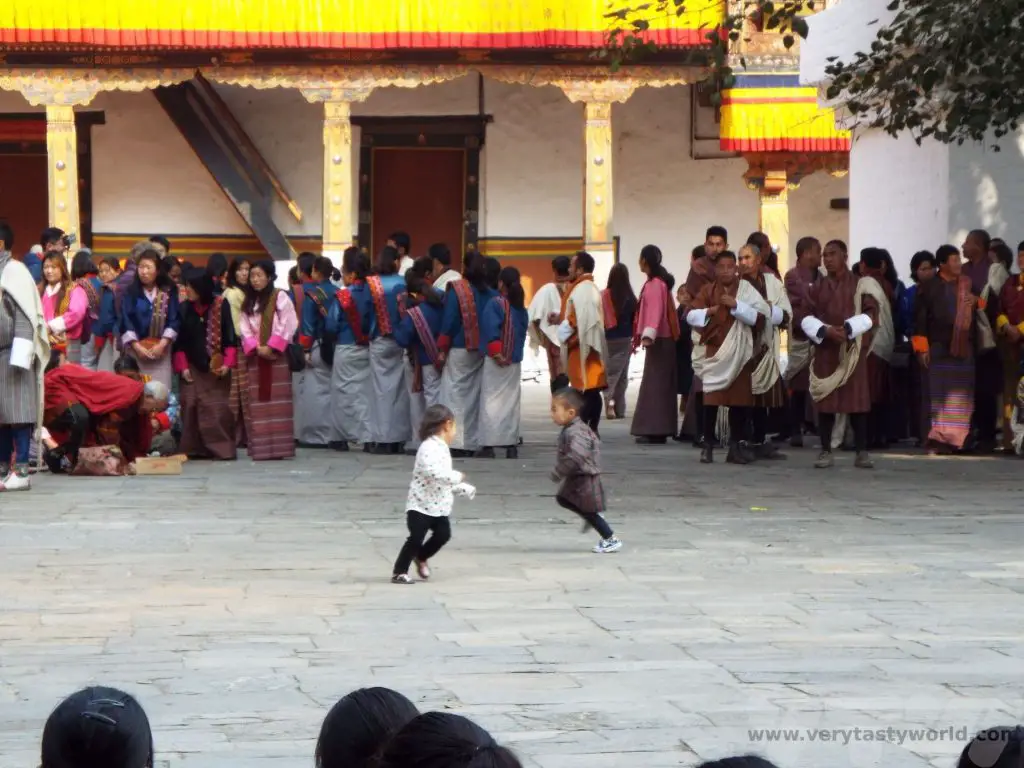
We watched the dancing from underneath the bodhi tree. As part of the celebration an enormous tapestry, known as a thongdrol, is unfurled. It is the most beautiful and colourful tapestry, taking up the side of a whole building within the complex. You can see a portrait of the king at the base of the tapestry. Respect for the king is enormous in Bhutan and his image can be found in most people’s homes.
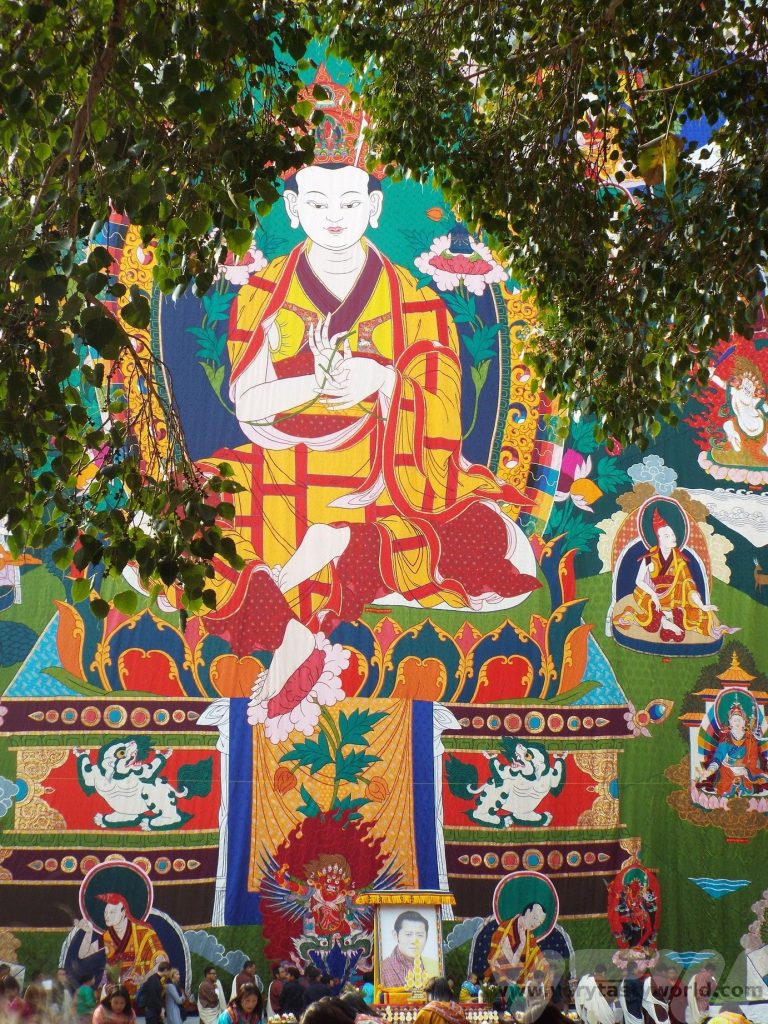
Inside the temple complex there were further celebrations with masked dances performed by the monks.
Above all else, it was a happy festival. Everybody welcomed us. We got chatting to some of the local ladies – they were very keen to practice their English (which was excellent) and we talked about the traditions in our countries.
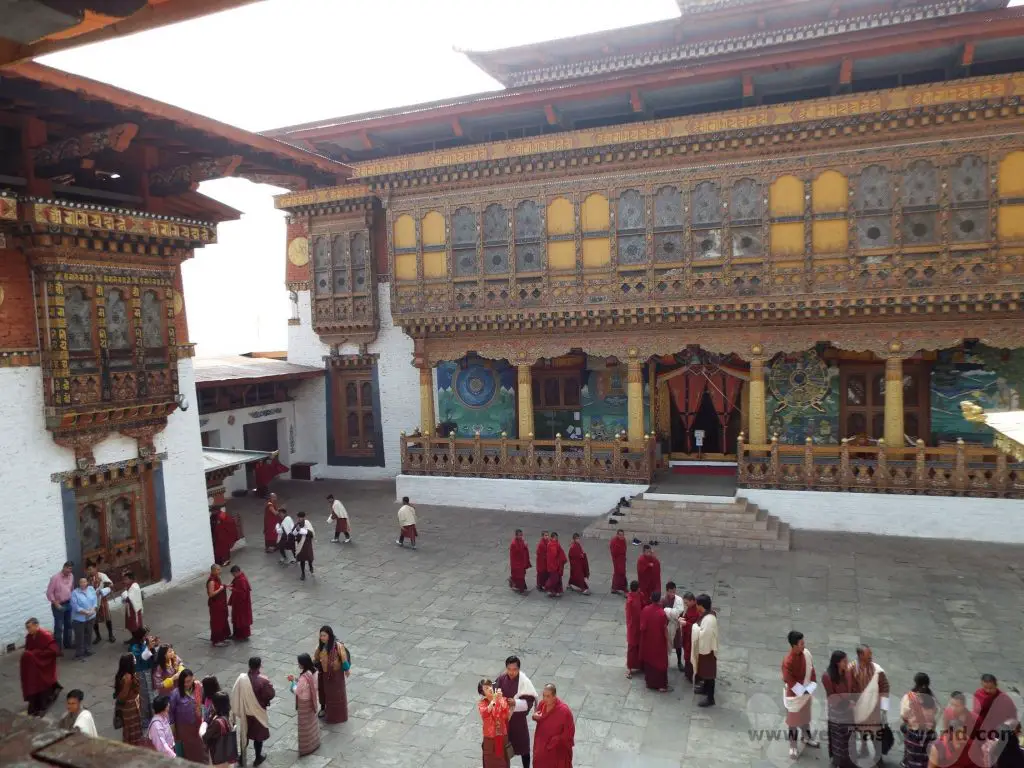
Other Things to See in the Area
Exploring the Rivers and Suspension Bridge
This is the longest suspension bridge in Bhutan and it crosses the Po Chu river, linking the Dzong to Shengana, Samdingkha, and Wangkha.
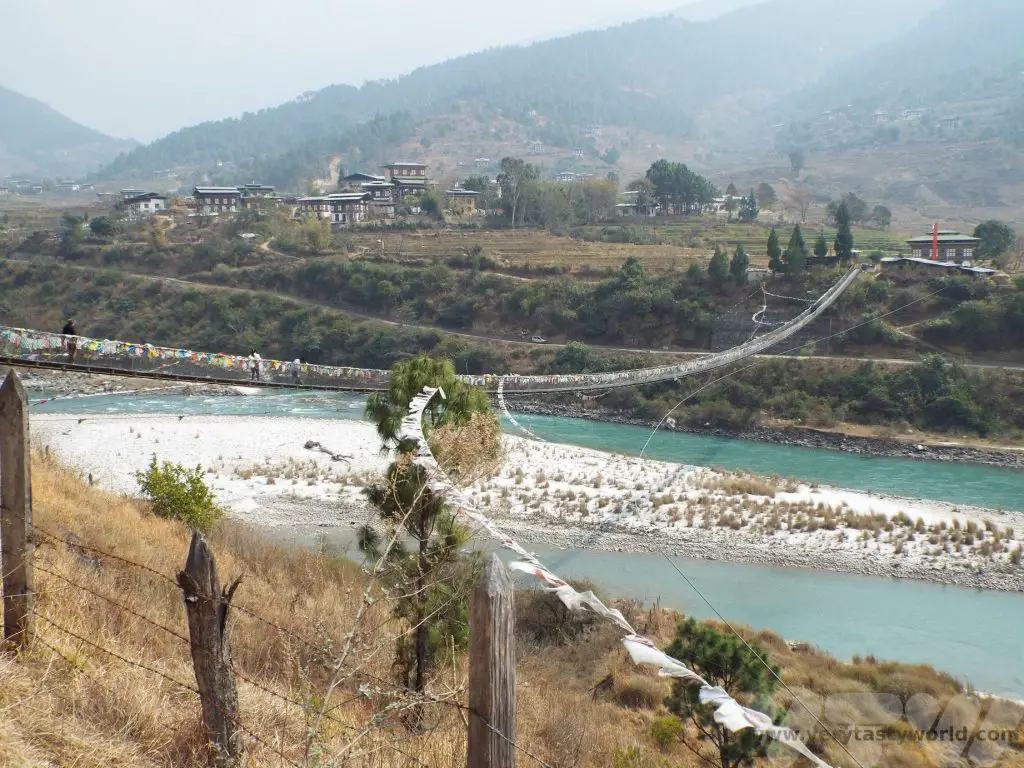
It’s 160m long and is emblazoned with prayer flags that wave vigorously in the breeze.
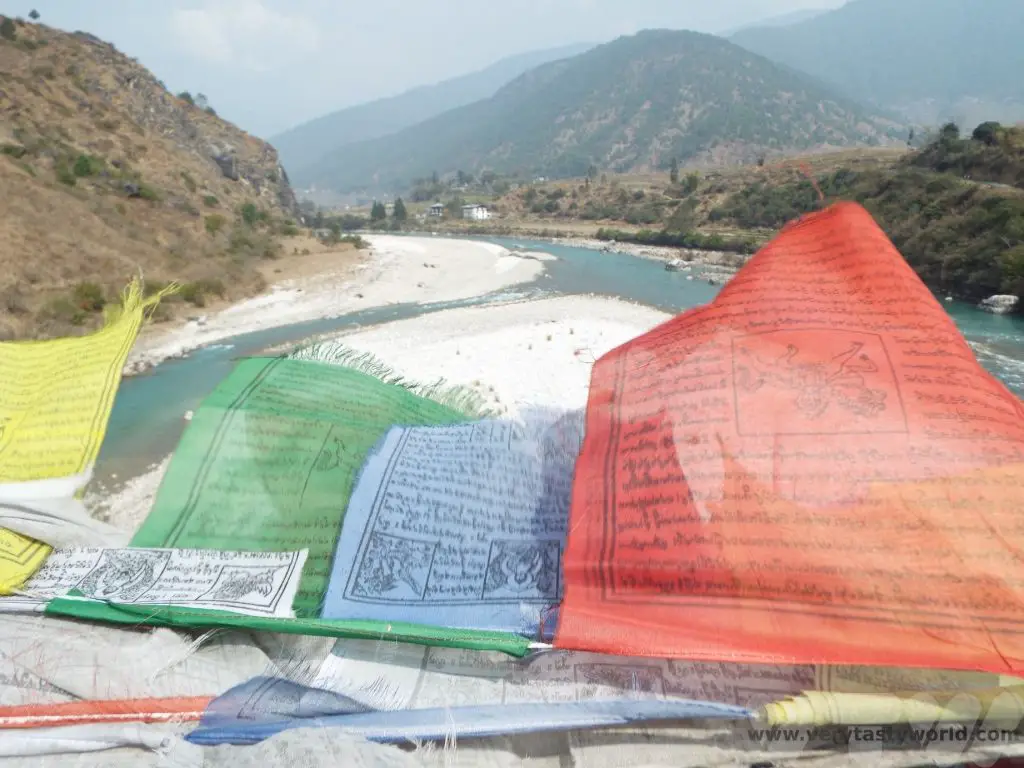
There are some good walks along the Mo Chu river upstream. It’s a really beautiful area. And, if you’re feeling adventurous, there may also be some opportunities to go rafting on the river.
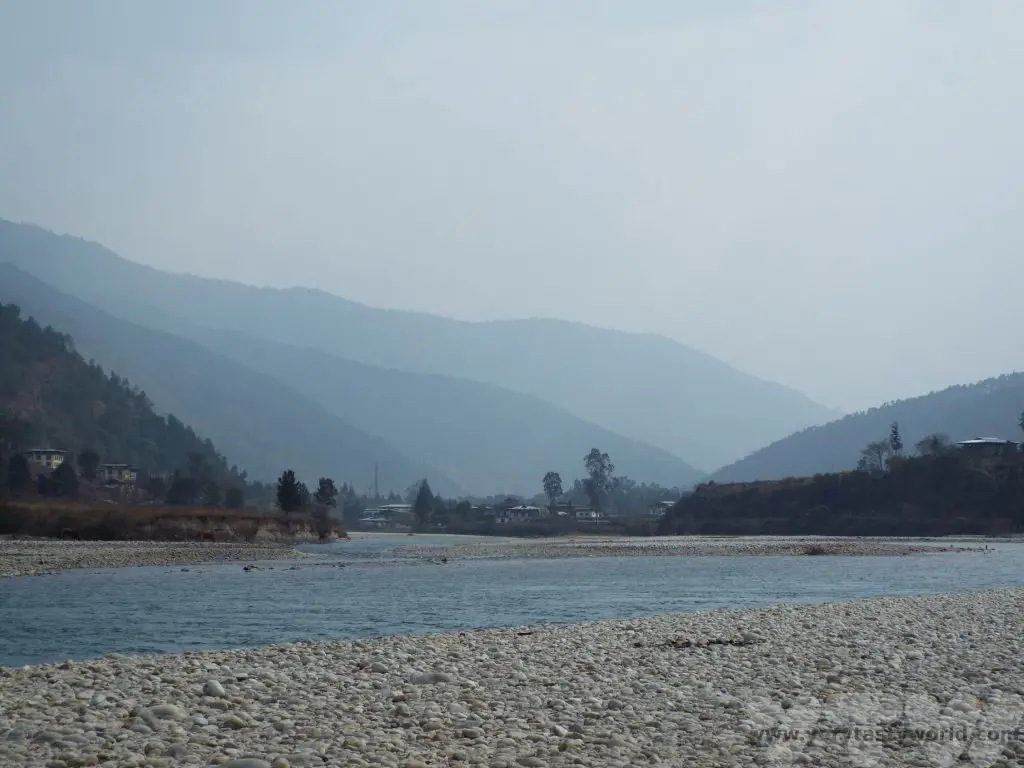
Sangchhen Dorji Lhuendrup
The Sangchhen Dorji Lhuendrup nunnery is located in Wolakha. It provides a permanent training and meditation centre for nuns. There are also opportunities for the nuns to learn various skills such as tailoring, statue making and thangka painting (a traditional style of Buddhist painting).
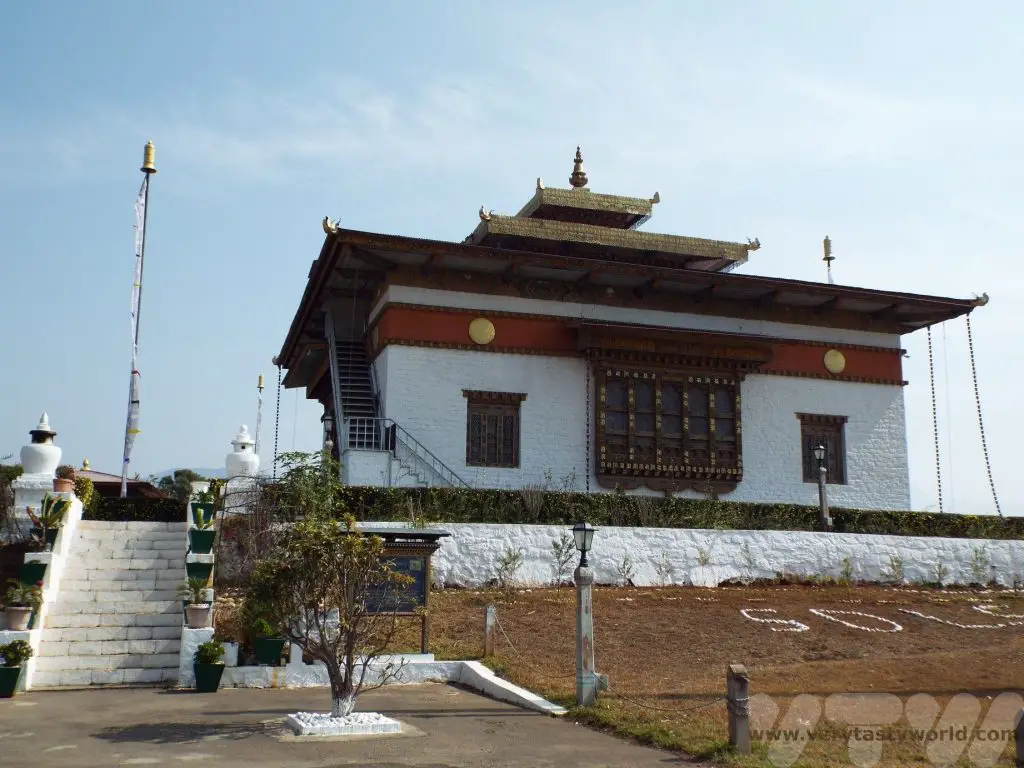
The temple has an impressive stupa.
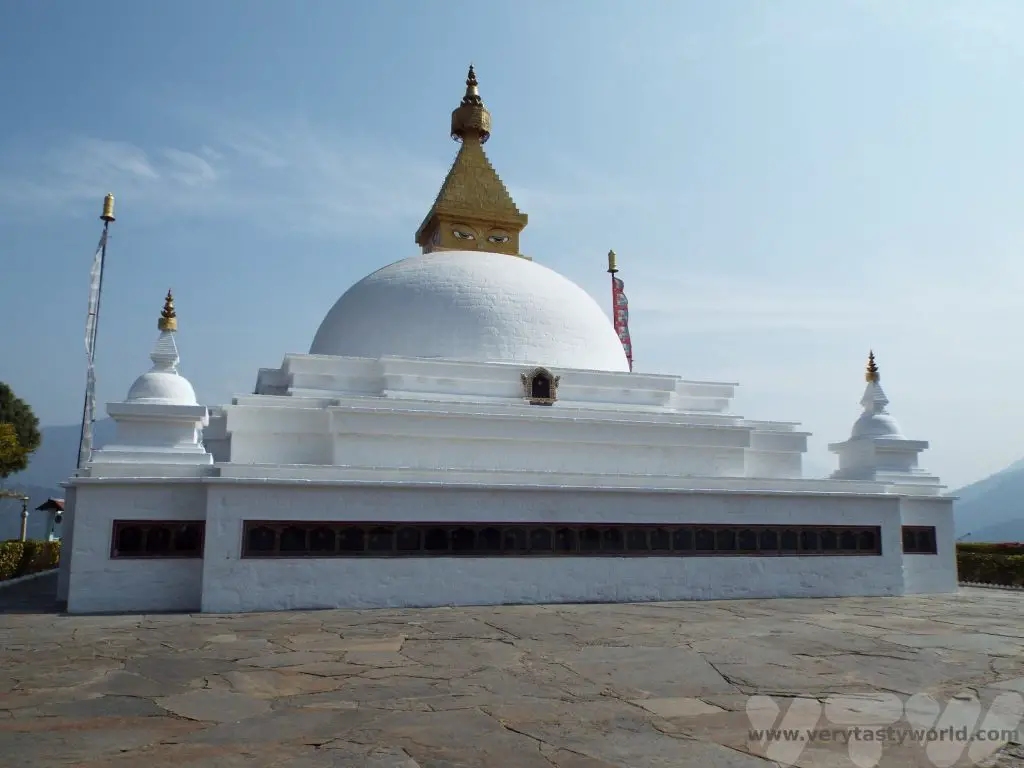
Chimi Lhakhang
Chimi Lhakhang is located around 10km from Punakha. It is a monastery built in the 15th century after being blessed by Lama Drukpa Kunley, also known as the ‘Divine Madman’, who had an, er, unusual approach to teaching Buddhism which often involved singing, dancing and generally being shocking. He brought from Tibet a wooden phallus adorned with a silver handle and this is housed in the monastery.
It is used to strike pilgrims, particularly women who wish to become pregnant, on the head as a blessing.
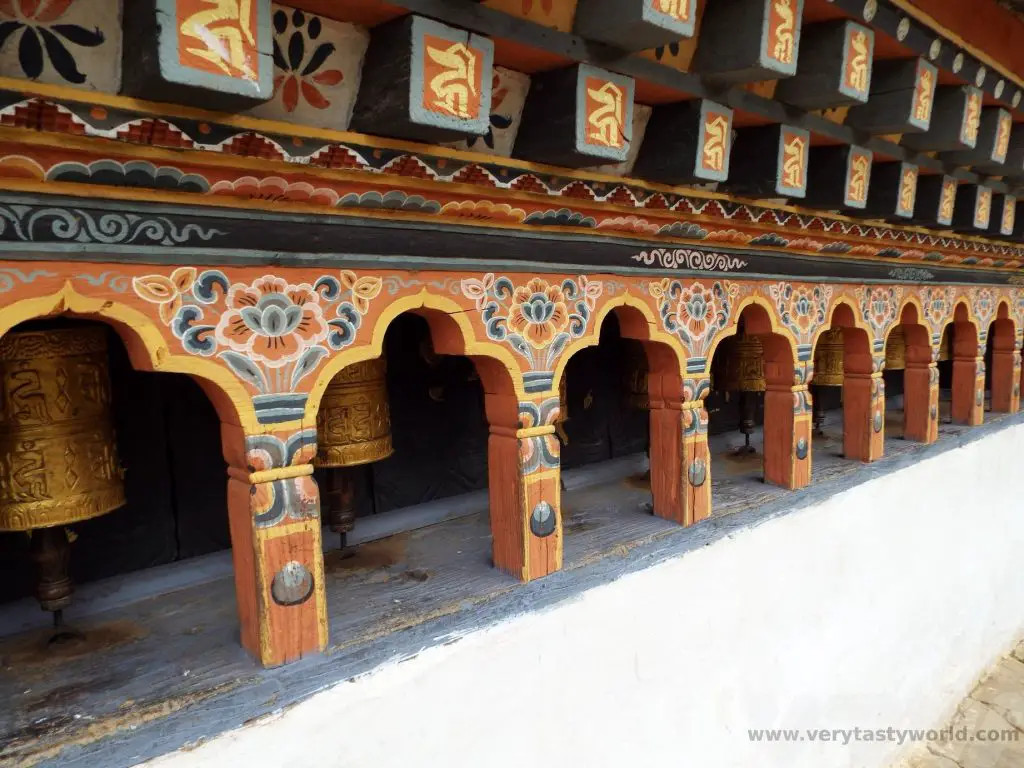
All through the area you will see paintings of phalluses on housing walls. It is a tradition in Bhutan that the phallus protects people from evil.
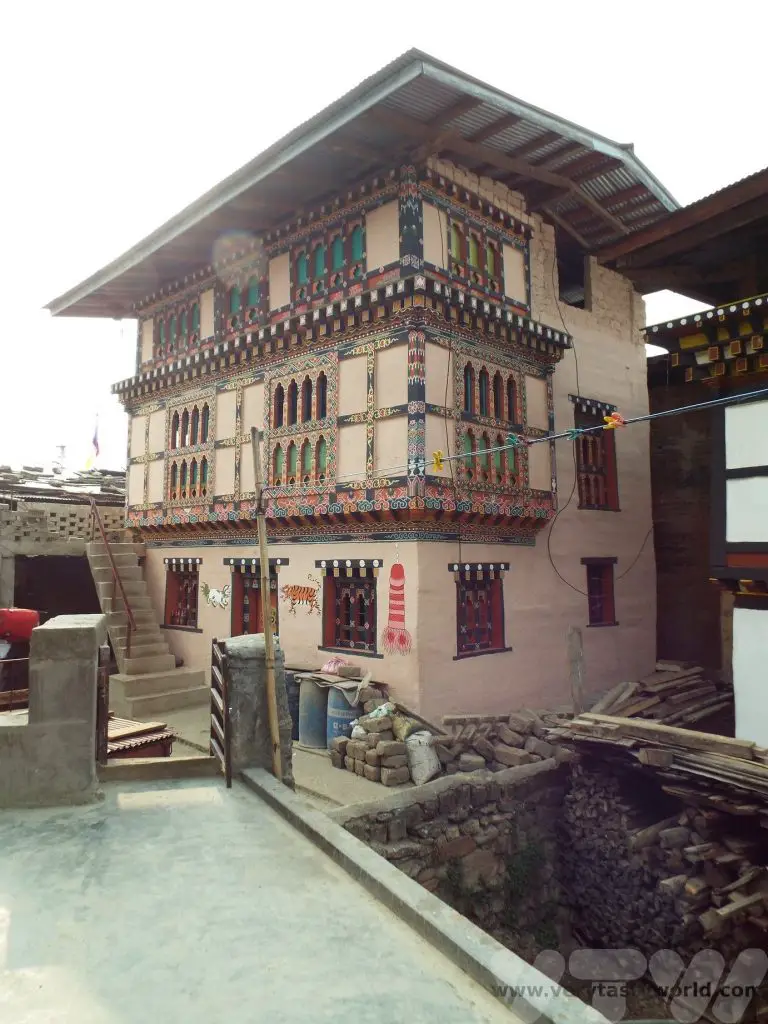
Staying At A Local Farmhouse
We spent the night in Chimi Lhakhang Farm – we had a cosy attic room and cooked dinner with our lovely hosts.
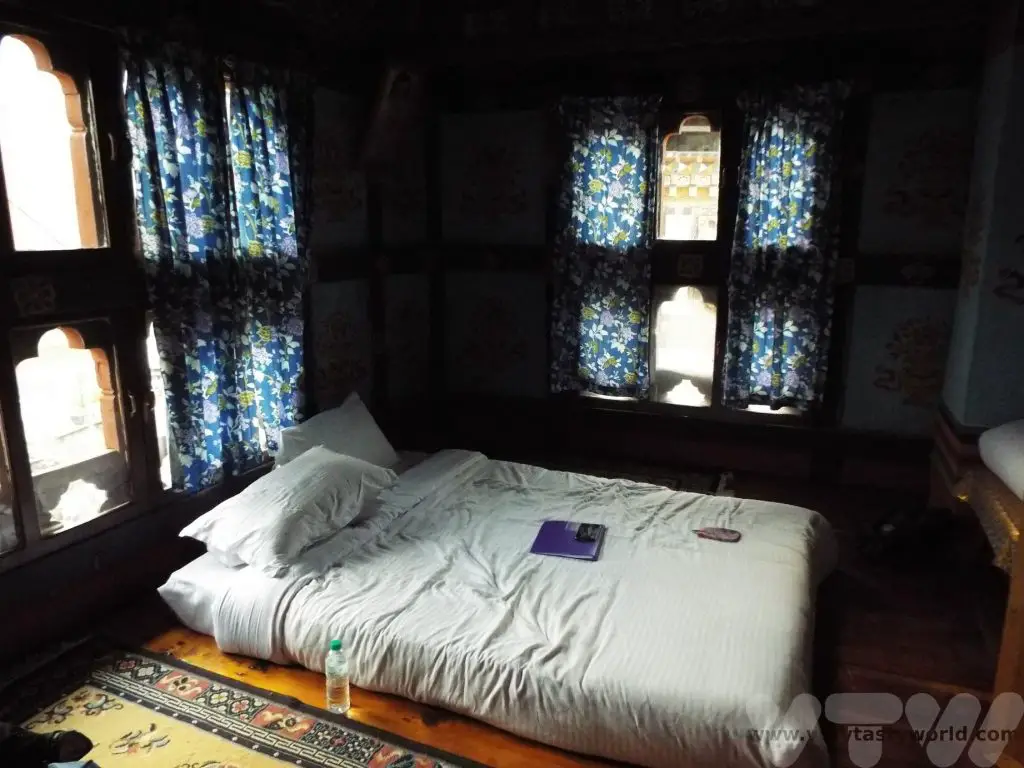
Our guide often asked what sort of food we would like to try – of course we asked if we could enjoy traditional Bhutanese food.
We had great fun in the evening and spent time in the kitchen preparing dinner with our hosts. Dawa and Tring joined in with the cooking as well.
The main dish was shakam paa, which comprised dried beef cooked with chillies and radish slices, spiced with dried chillies.
We also learned how to make khewa datshi, a dish of sliced potatoes with cheese.
And, of couse, the ubiquitous and utterly delicious ema datshi – chilli cheese.
All served up with red rice, it was a feast!
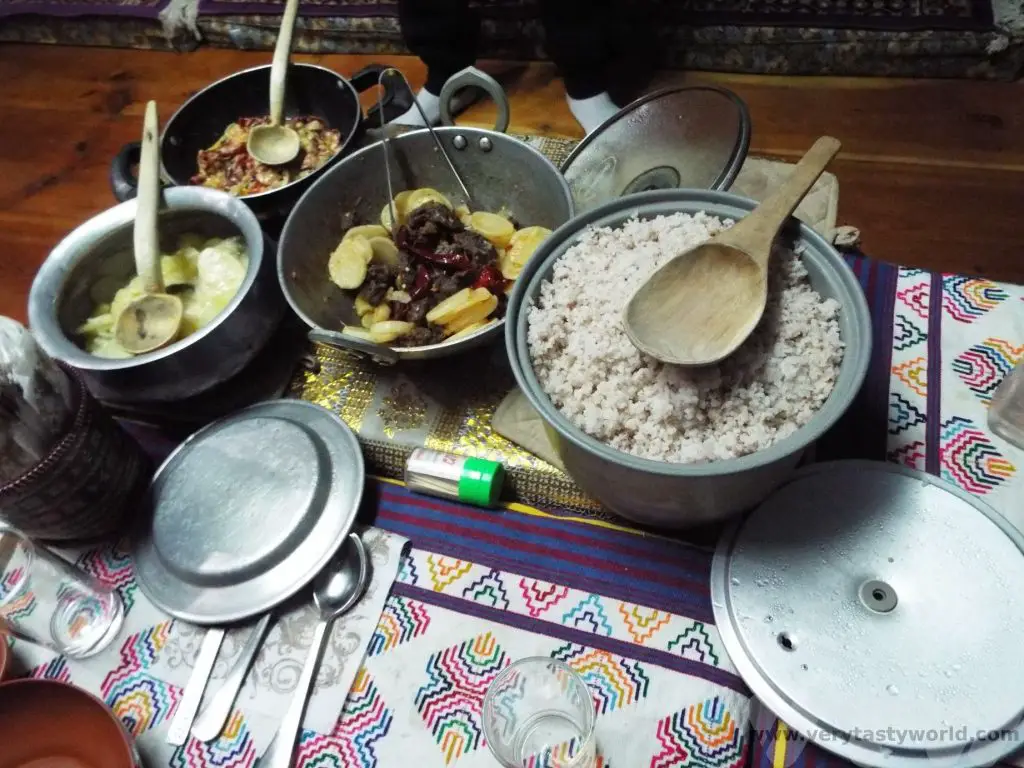
Related Posts You May Enjoy

- A One Day Hanoi Itinerary
- Mekong Meanderings
- A Chiang Rai Temple and A Country Retreat
- A Chiang Mai Tour in Northern Thailand
- Sunrise at Angkor Wat and Other Temples
- Mekong Delta River Cruise in Vietnam

A Chiang Rai Temple and A Country Retreat
Sometimes it’s possible to visit a place without actually going to the place itself. If that makes sense? This happened on our trip to northern Thailand. We had spent some time in Bangkok and Chiang Mai before heading towards the city of Chiang Rai. But somehow we didn’t quite manage to visit the city itself. Having driven up from Chiang Mai, our first stop was a famous Chiang Rai temple – The White Temple – followed by a lovely couple of days exploring the local countryside.
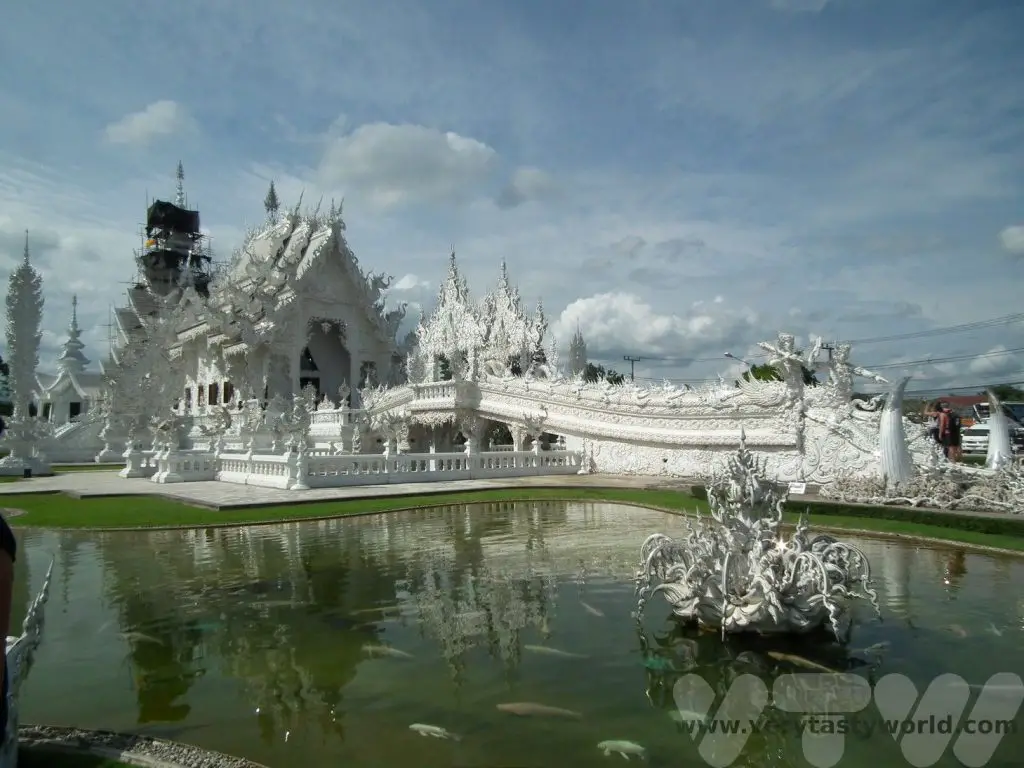
Chiang Rai Temple – The White Temple
It’s located about 13 kilometres south of Chiang Rai city and we can honestly say it’s one of the most bizarre buildings we have ever visited.
The temple itself was conceived and designed by Thai artist Chalermchai Kositpipat and built on an enormous scale, designed in the style of a Buddhist temple. Kositpipat also supervised the construction of this remarkable building. Although it bears a strong resemblance to ancient temples of the region, it is a modern structure which opened in 1997.
The building also has ornate naga serpents, supernatural creatures that are part human, part snake, which typically decorate Buddhist temples and are revered throughout the region.

You cross the Bridge of the Cycle of Rebirth…
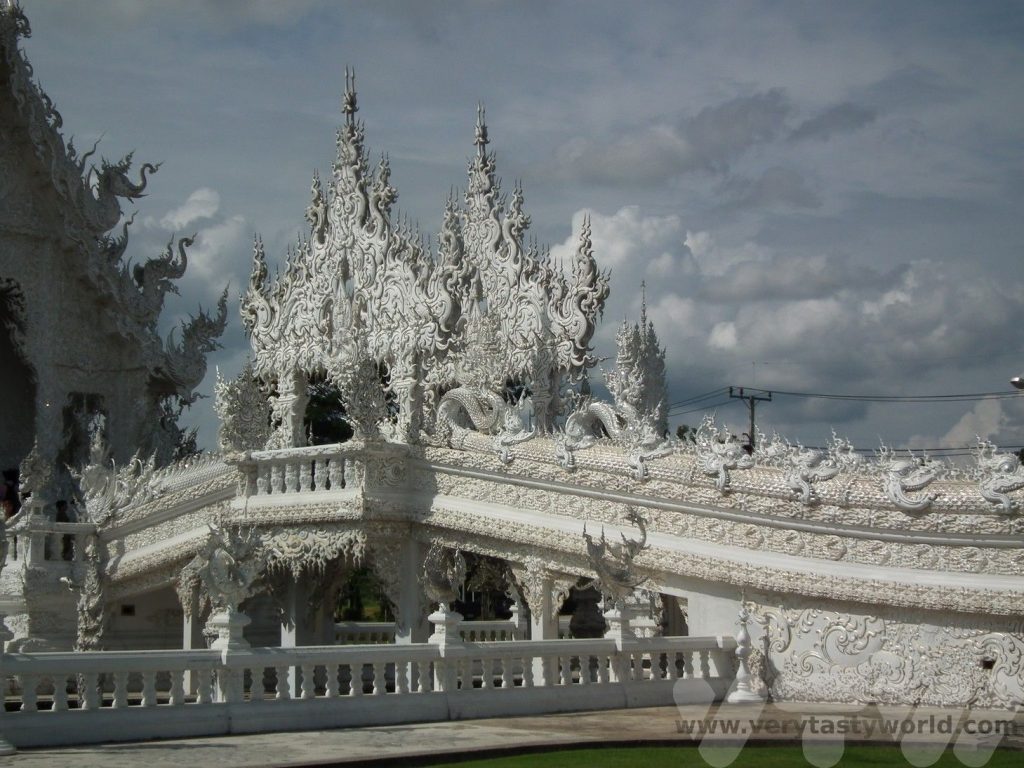
…passing by the fearsome guardians…
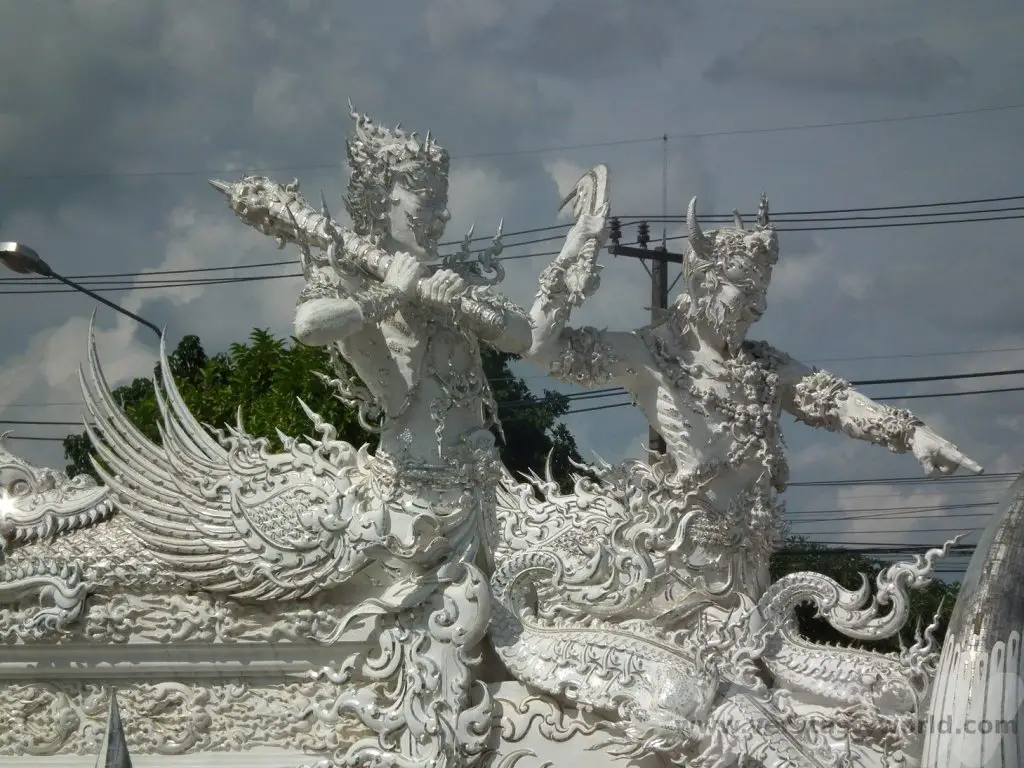
…over the lake of the damned souls…
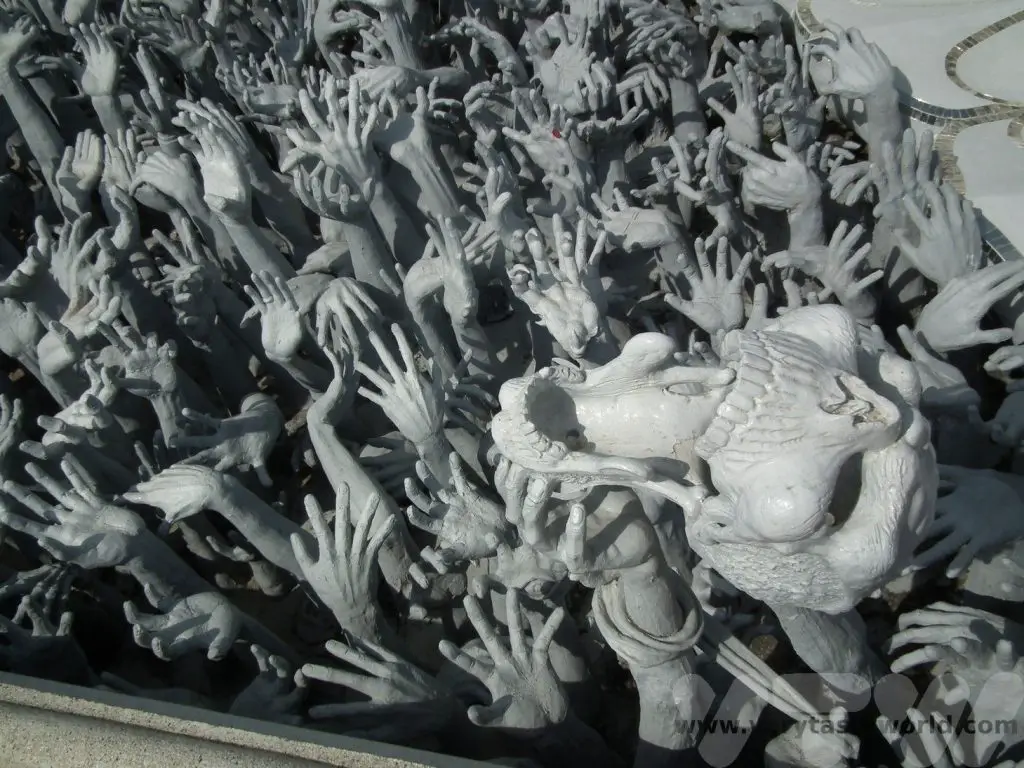
…in order to reach heaven.
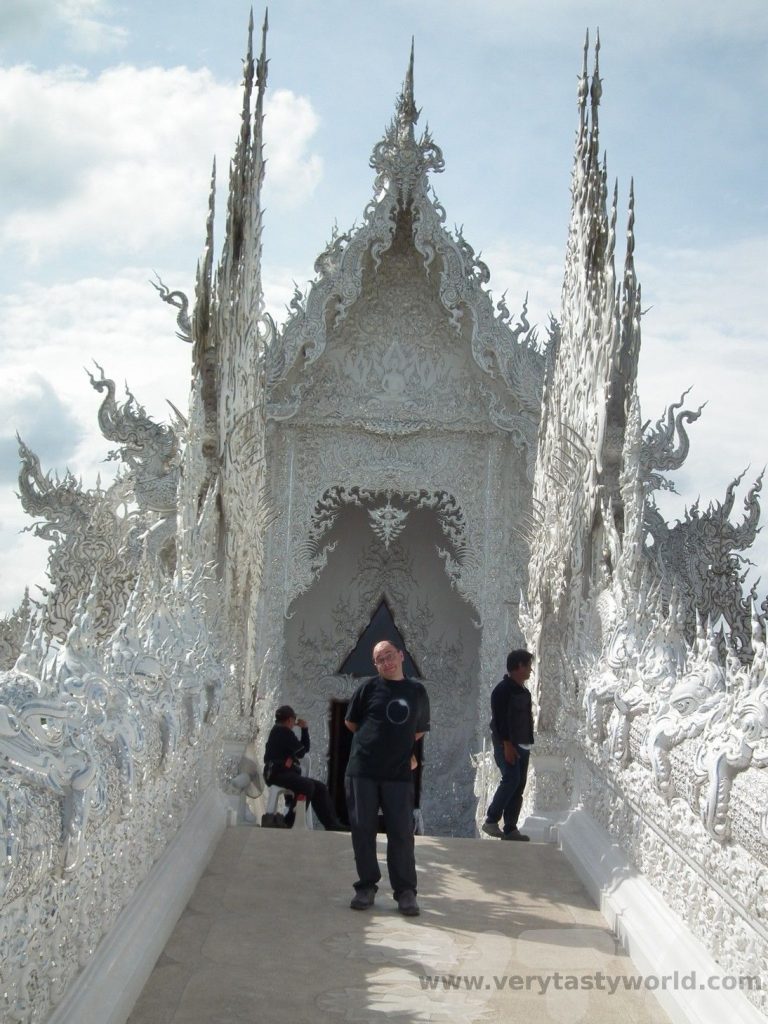
It is possible to go inside the temple, known as the ubosot, but, sadly, you are not allowed to take photos in there. We absolutely respected this, but it’s a shame because it contains the most astonishing bright and colourful murals. They combine Buddhist imagery with all sorts of modern historical and cultural icons – everything from Spider-man to Doraemon and Hello Kitty! The theme that pervades the White Temple is the conflict between good and evil in the world. You could spend hours enjoying the details, spotting all sorts of characters.
Chiang Rai’s White Temple Grounds
The temple itself was designed to be white to represent purity; a conscious choice to contrast with the temples throughout Thailand which are typically decorated in gold. Kositpipat apparently considered gold to be a colour for people who coveted evil thoughts and deeds. So it is the bathrooms that are decorated in a gorgeous gleaming gold. Possibly the most ostentatious toilets in the world!
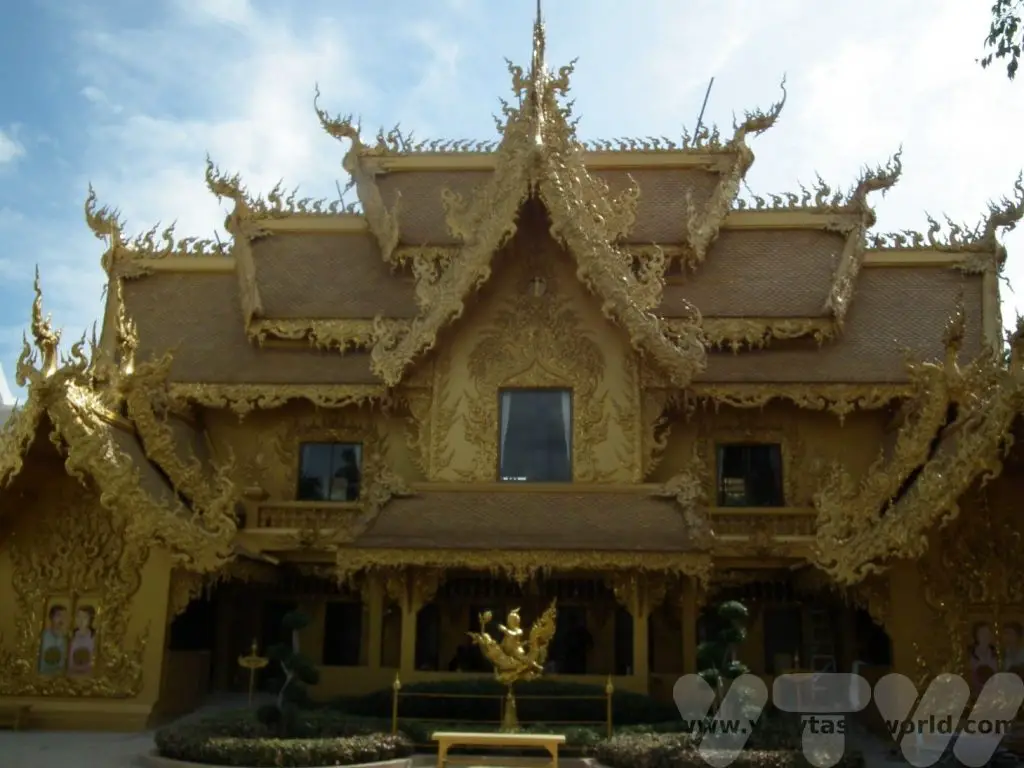
Even the traffic cones and trees are bizarrely decorated!
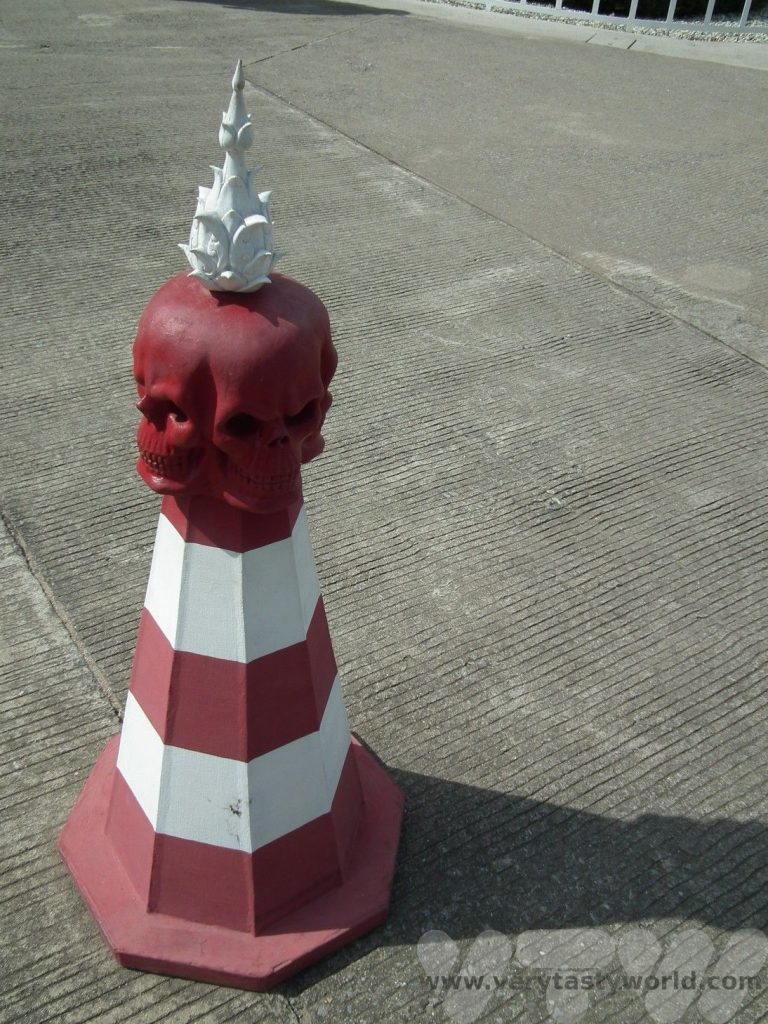
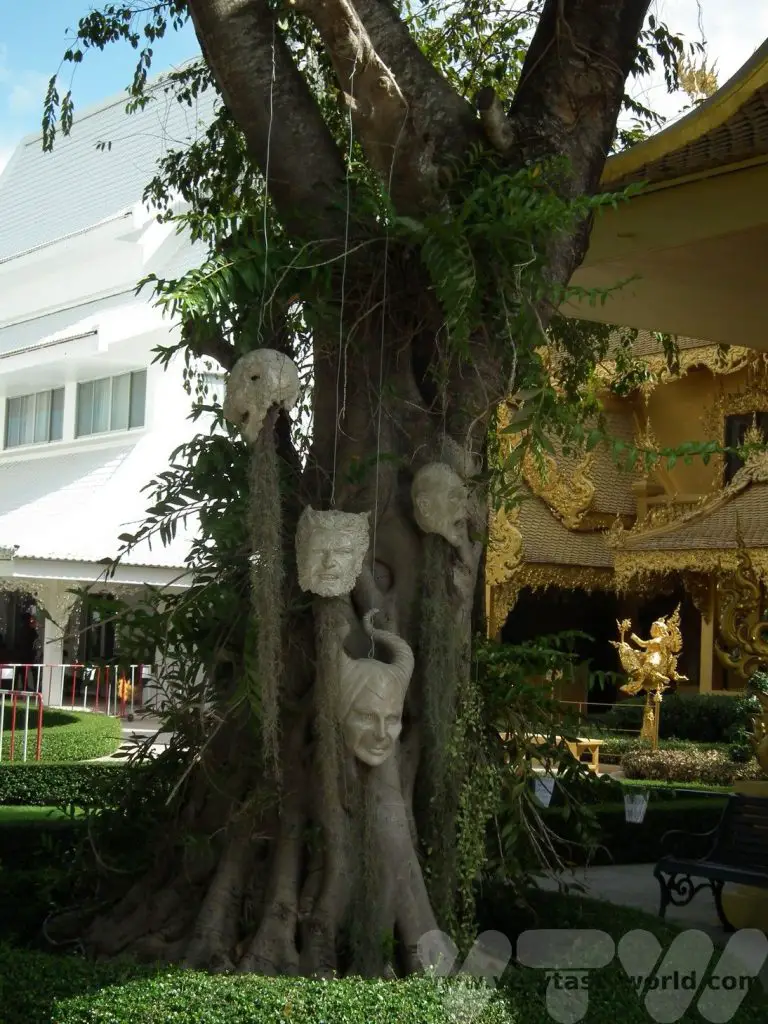
Kositpipat didn’t want money to be a consideration for visitors, so when we visited entrance was free. However, these days there is a nominal charge that is used towards maintaining the temple and gardens. Which is fair enough.
A Rural Retreat
Having visited the Chiang Rai temple we then headed out towards the hills.
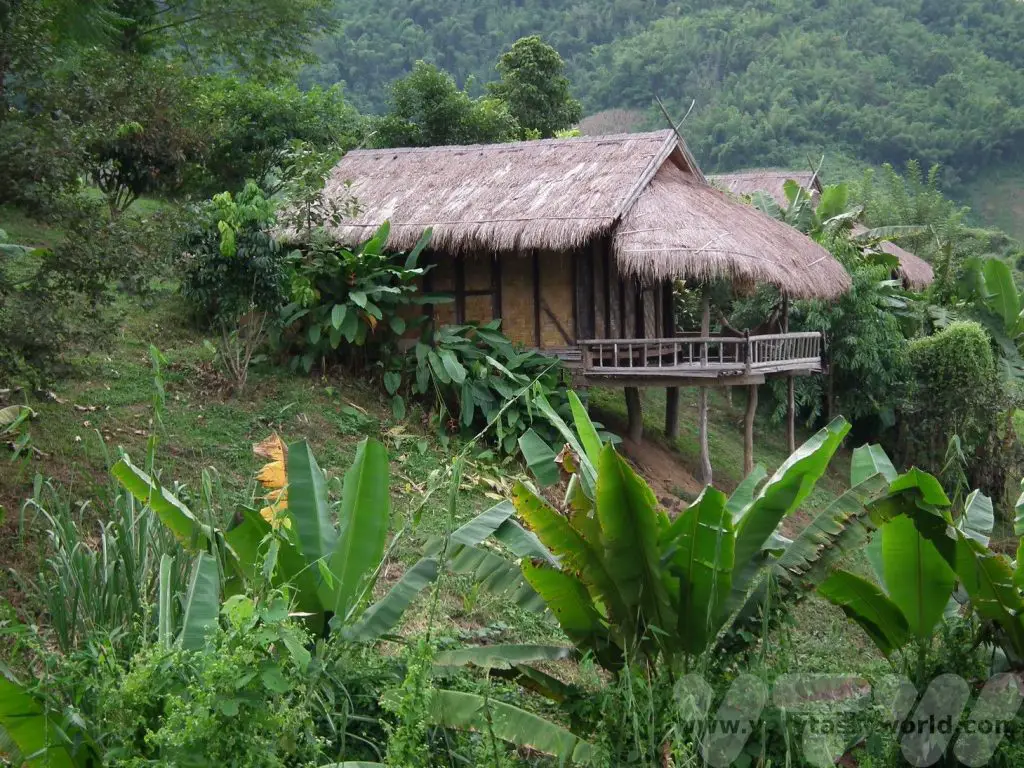
We were staying at the delightful Bamboo Nest, a rural retreat in the countryside. When you hear the phrase ‘rural retreat’ it often recalls images of luxury spas in pristine grounds but this was the opposite – a retreat much more suited to our tastes.
We stayed in a simple bamboo hut with thatched roof, which had no electricity and a wonderful view.
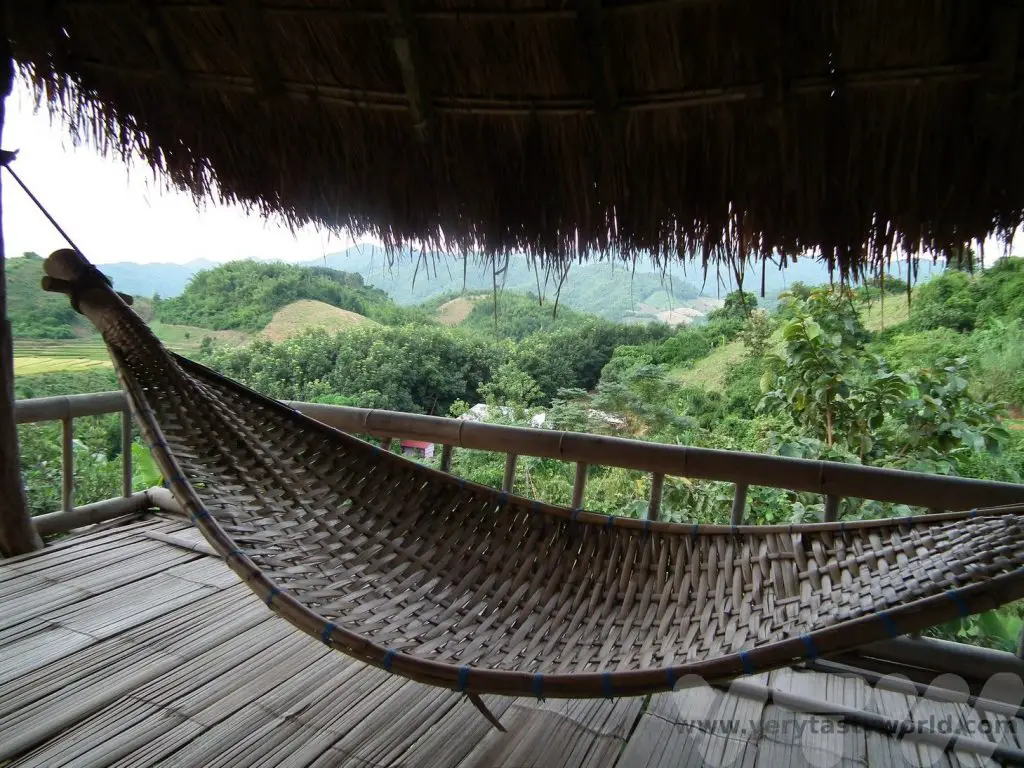
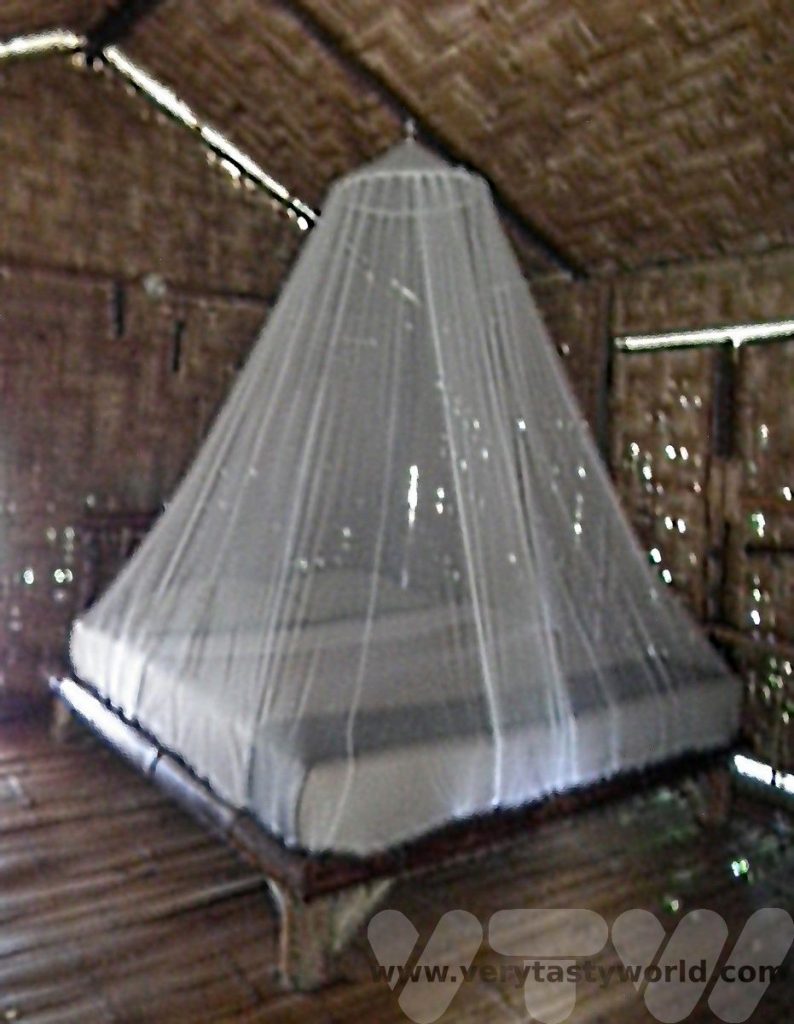
Dining was in a communal area where we enjoyed freshly cooked local meals with other guests. There was electricity available via a generator in this area which enabled the charging of phones and cameras and it also powered a fridge which conveniently contained cold soft drinks and beer, which you could purchase on an honesty basis. It was incredibly quiet and peaceful and a complete contrast to the hubbub of Thailand’s cities.
The Bamboo Nest team arranged our transportation to this remote site and will organise pickups if needed. Just get in touch directly to make a booking. We met Nok outside the White Temple and climbed into her 4WD, a vehicle that was most definitely essential for the area which we discovered as the car climbed higher and higher up the mountainside. The final leg of the journey was incredibly steep, muddy and occasionally slippery – a challenge even for a sturdy 4WD.
A Hike to the Hill Tribes
The main purpose of our visit was to enjoy some hiking in the area and to meet the local hill tribes. The hosts at Bamboo Nest can arrange a variety of excursions, either on a guided or self-guided basis, and we enjoyed a lovely long walk with Noi. It was initially a little disconcerting when he picked up a machete just before we headed out, but the walk was to take us through the mountainside forest and at times we would need to cut our own path. The treks offered are truly off the beaten track.
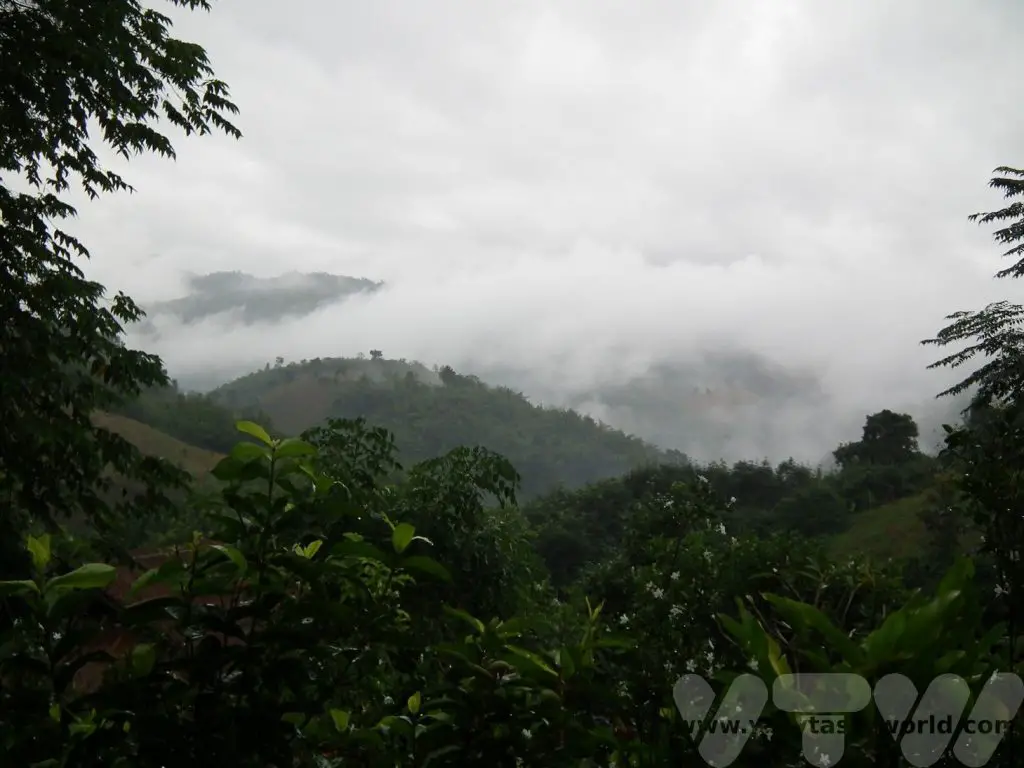
Thailand is hot and humid and occasionally rainy, so we had some slippery moments, particularly descending some of the steeper hills. It’s worth making sure you have good shoes and waterproofs as well as a change of clothing, just in case it rains and gets muddy.
The Chiang Rai area is home to a number of hill tribes, including the Akha and Lahu peoples. Hill tribes are ethnic minority groups who have settled in the region, living in a plethora of villages that are scattered across the mountains. The communities can be quite large or may comprise just a few families living together. Some of the villages are set up to receive tourists but Noi and Nok know the local people well, so we were able to visit a non-tourist village which gave us a much more personal and insightful experience.
After a couple of hours hiking we arrived at one of the villages of the Lahu tribe. The homes are constructed on stilts and have adjacent buildings where the farm animals reside.
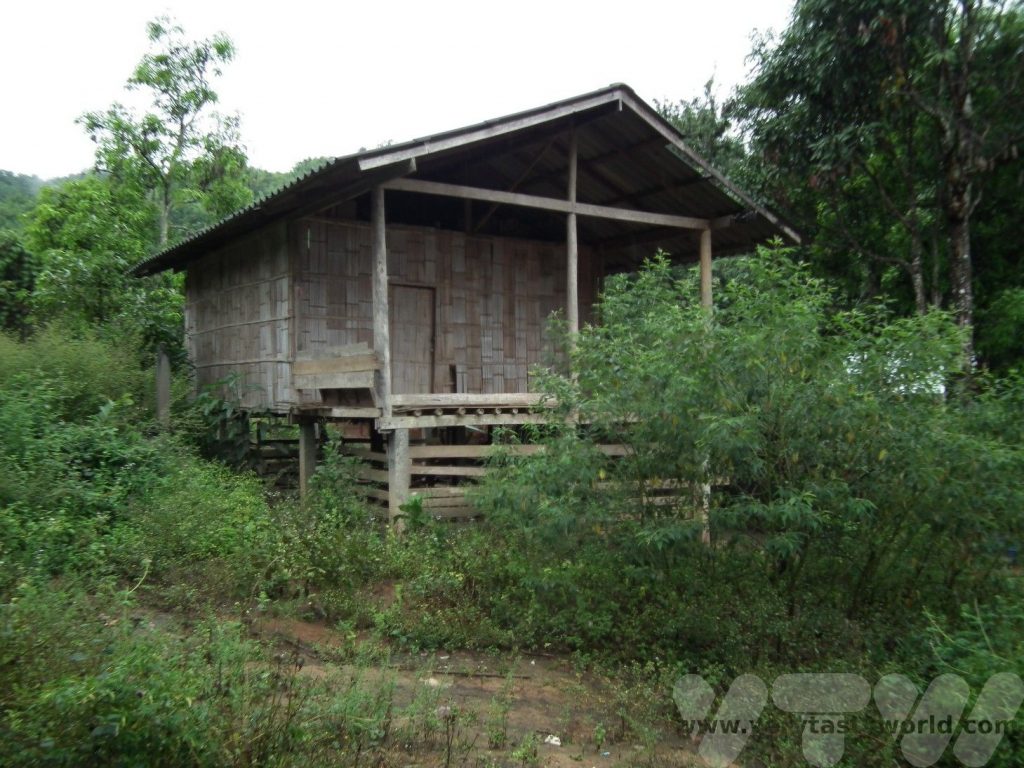
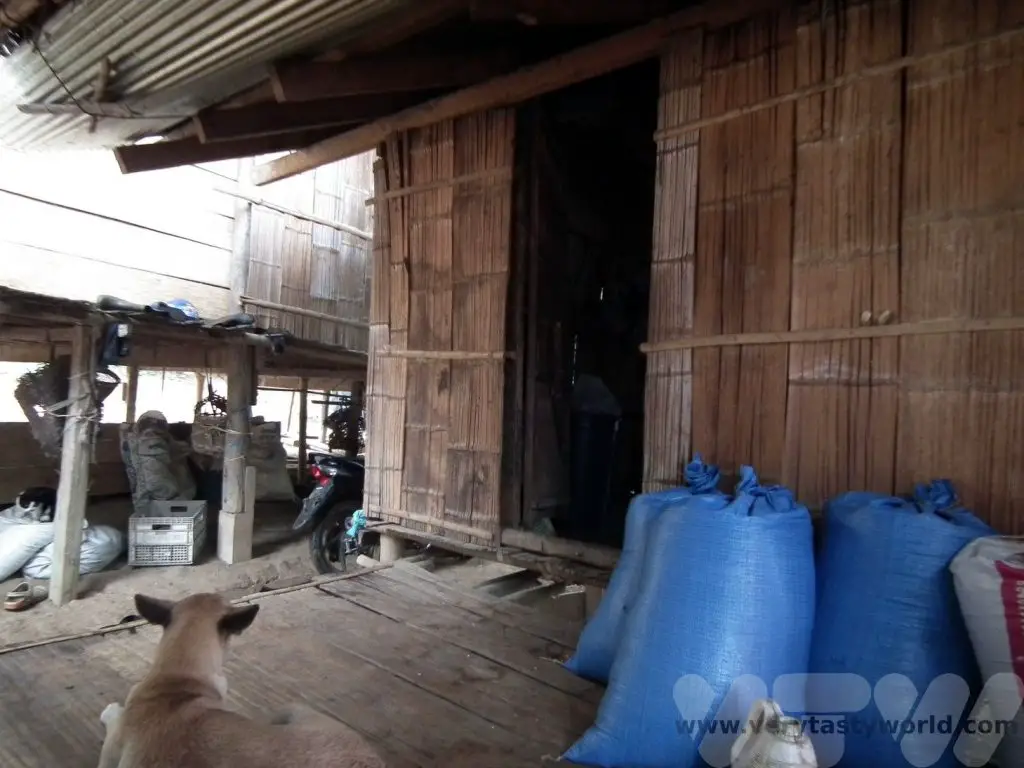
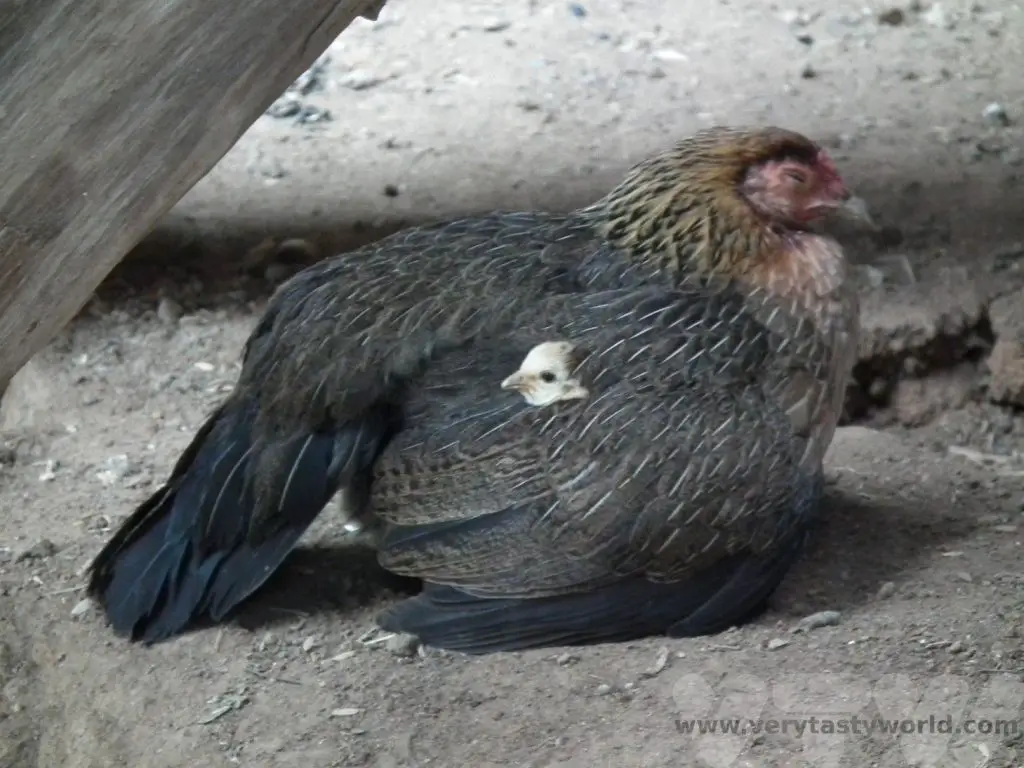
We were invited into a house to join a family where we helped prepare lunch.
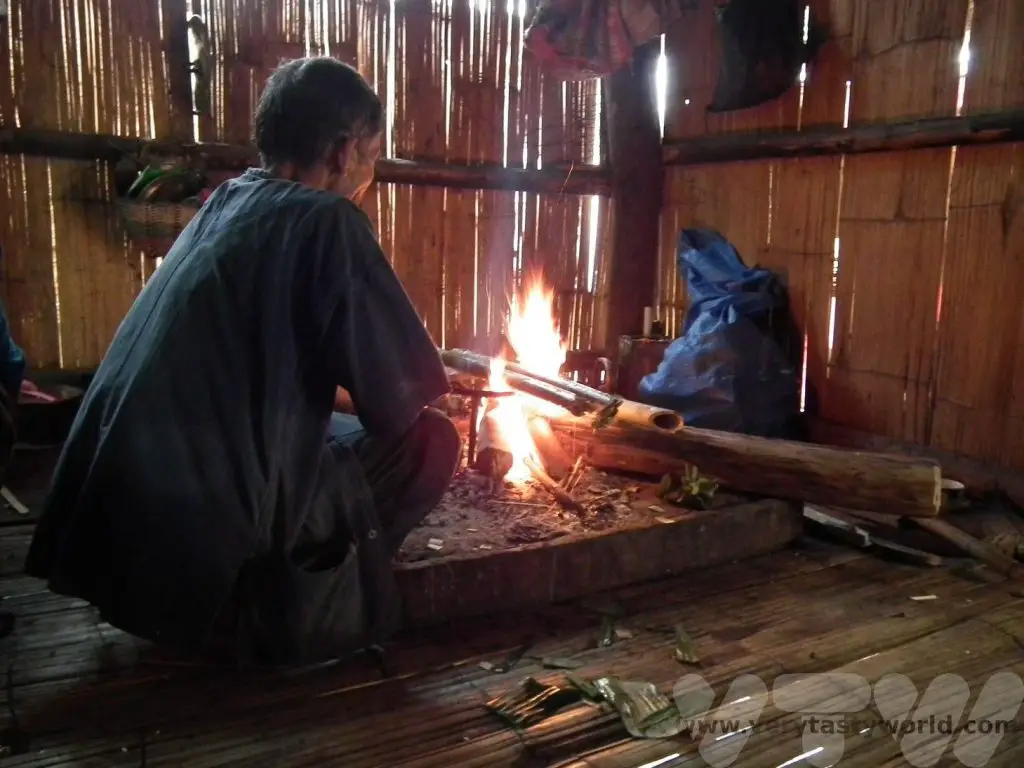
The houses have an open fire inside the main living area. River fish was ponassed onto sticks and cooked directly over the fire.
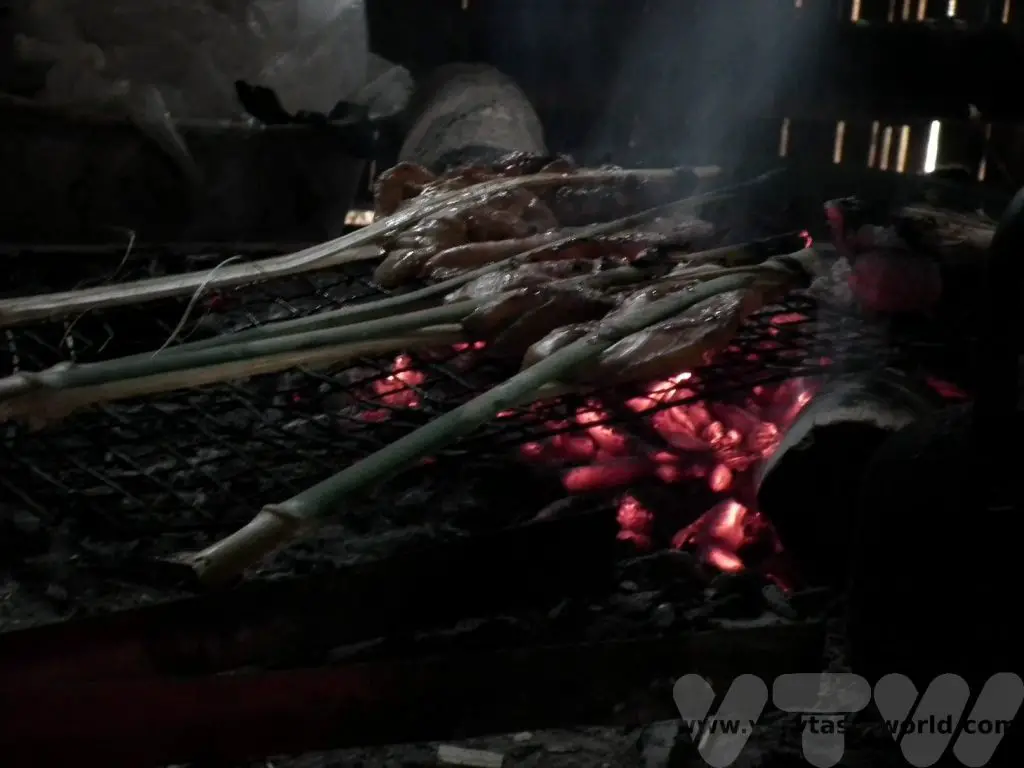
Bamboo stalks are segmented and hollow, so another part of meal was actually cooked inside these: Add sticky rice and water to a bamboo stalk, place it over a fire for a few minutes and… yummy sticky rice!
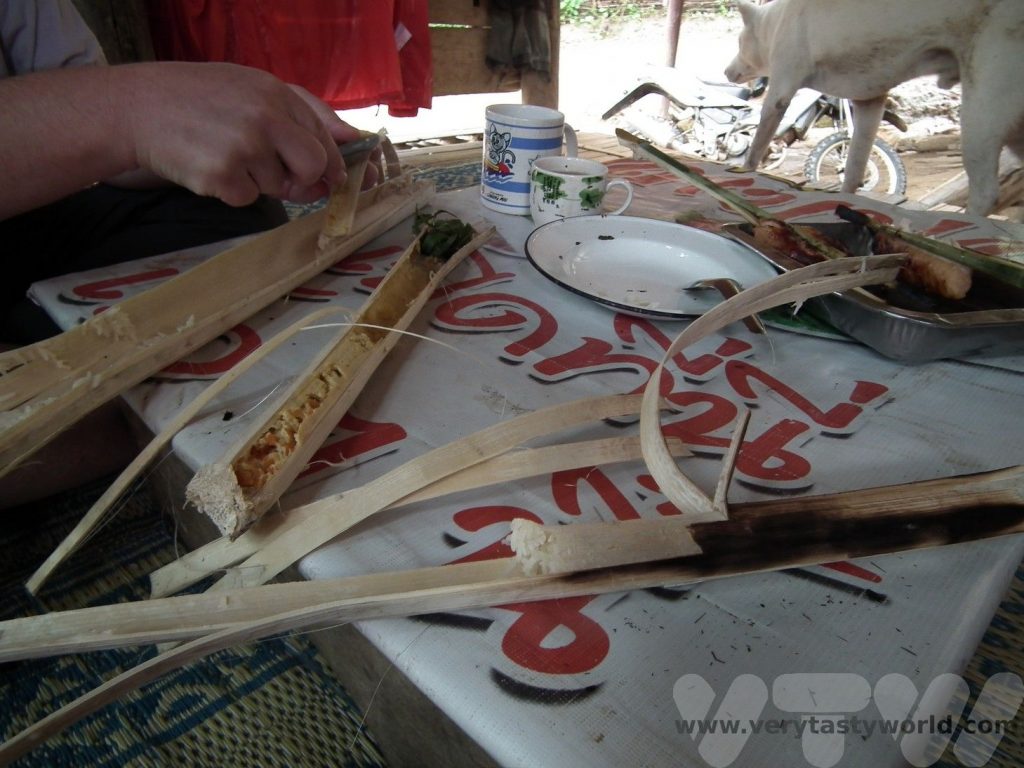
Pour some water into a stem, add a teabag, place over the fire and a few minutes later… a ‘pot’ of tea! Best of all was the egg – crack a couple of eggs, add some herbs, pour the mixture into the bamboo stalk, shake a bit, place over a fire (you guessed it) and a few minutes later… delicious cylindrical omelette.
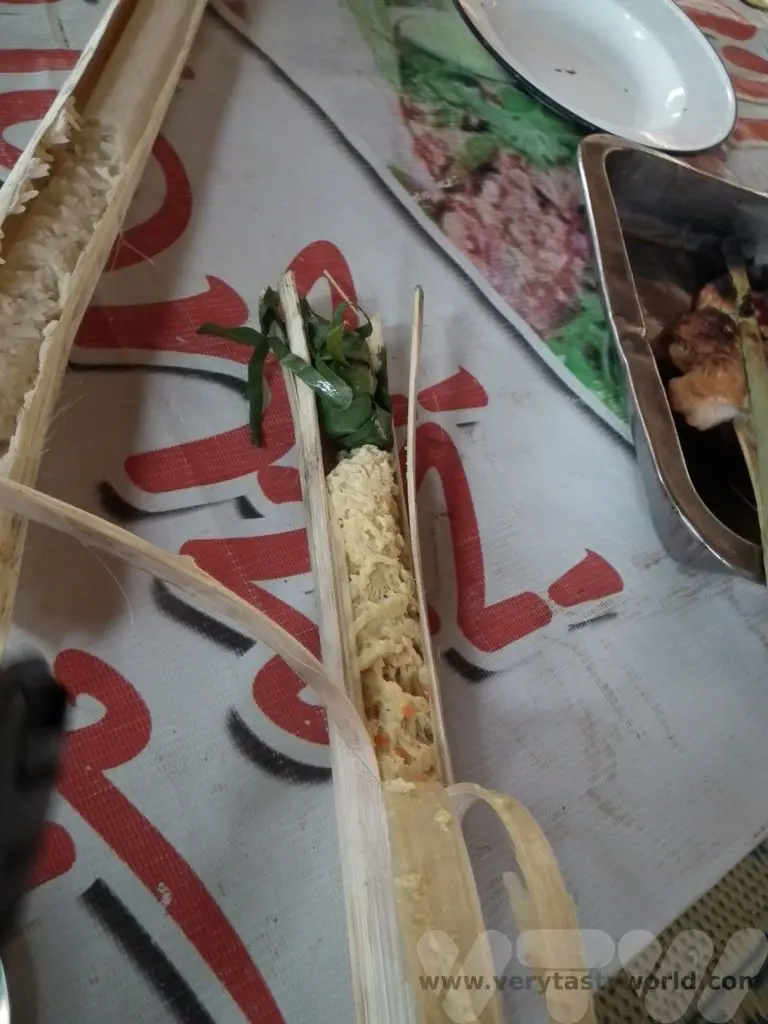
We then enjoyed a longboat ride along the Mae Kok river to visit the hot springs.
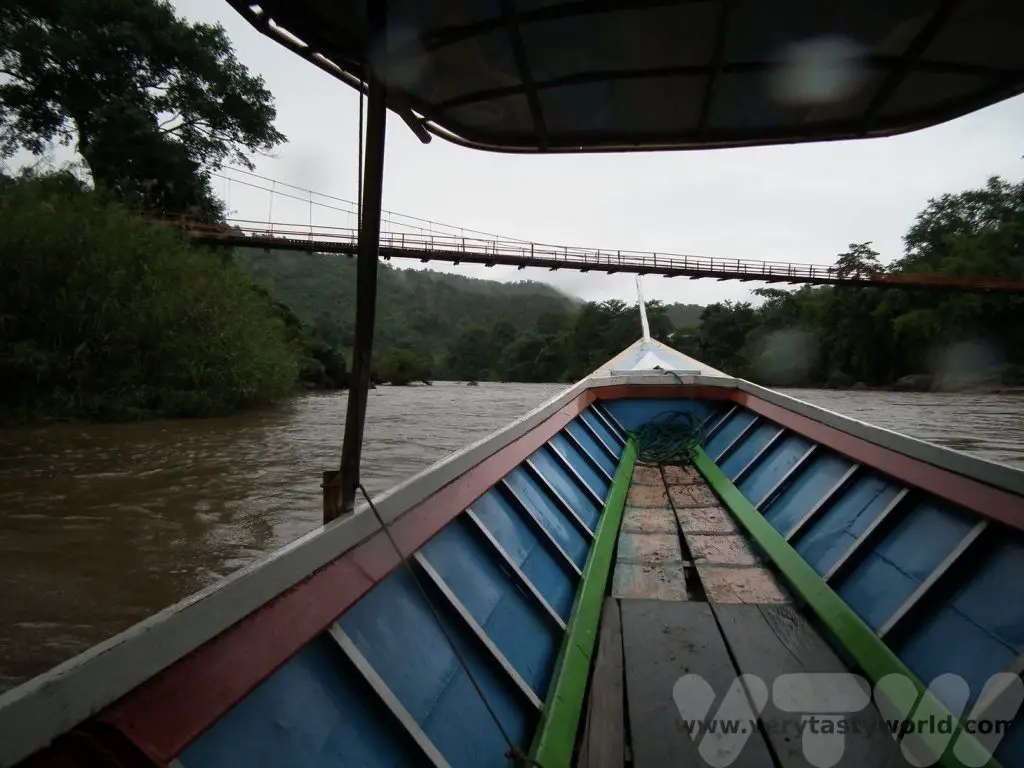
Some of the land in the area has been given over to commercial agriculture so it was also possible to walk to visit the local plantations. We could see bananas…
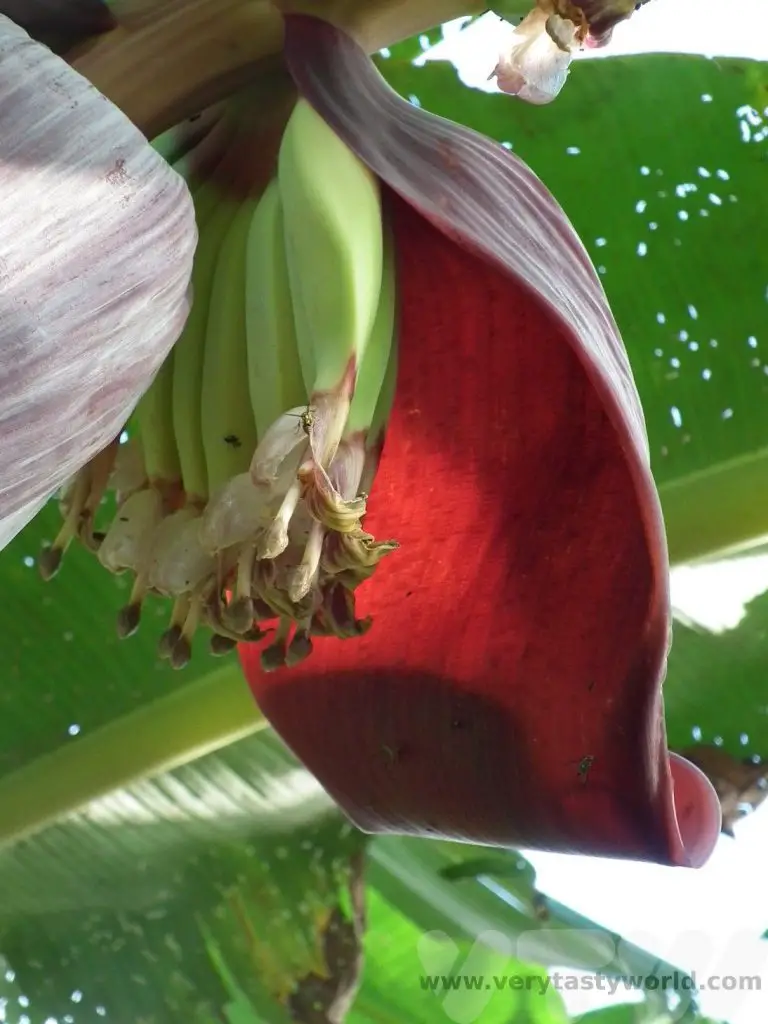
Pineapples…
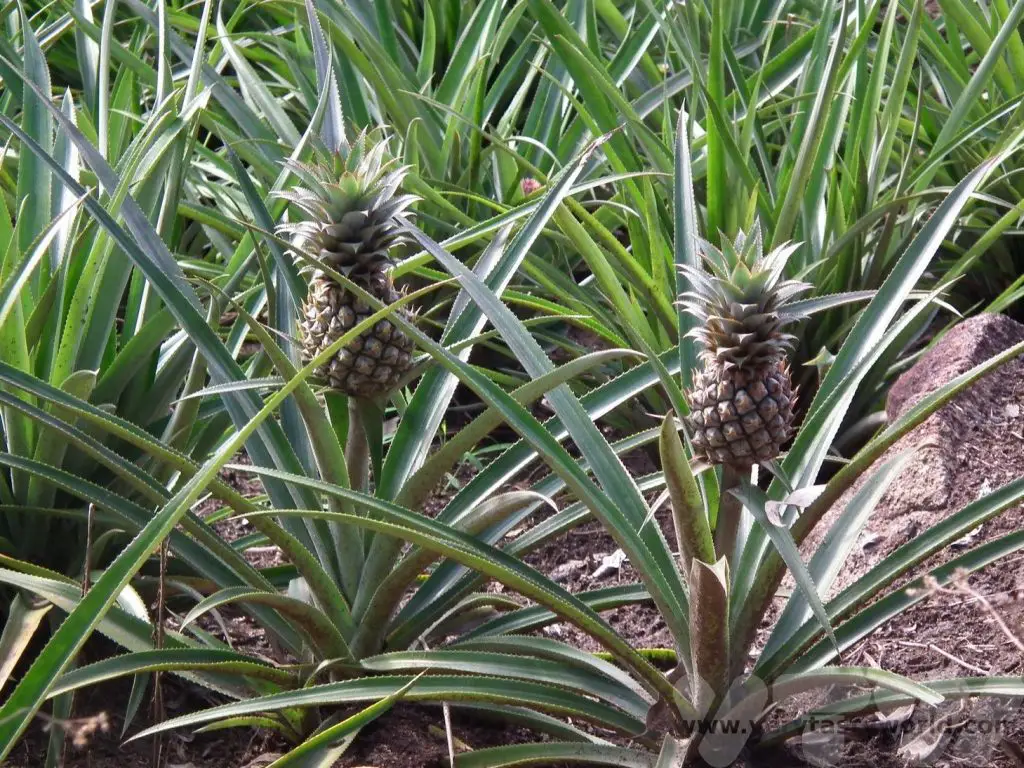
And tea.
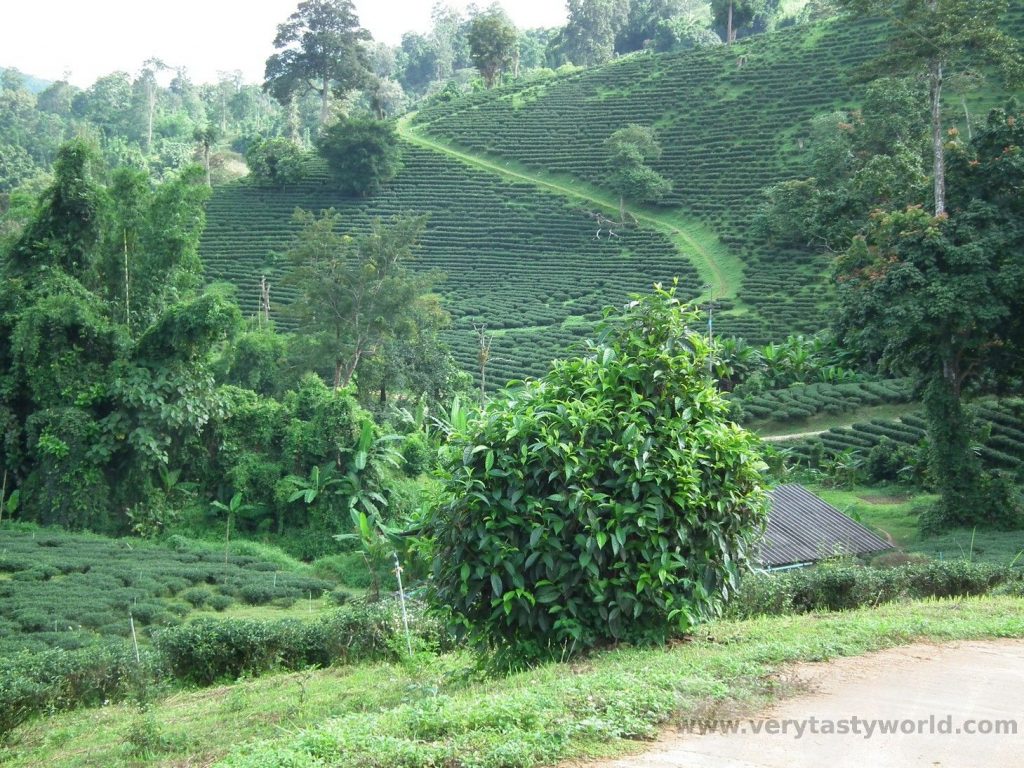
There were also some lovely waterfalls in the area.
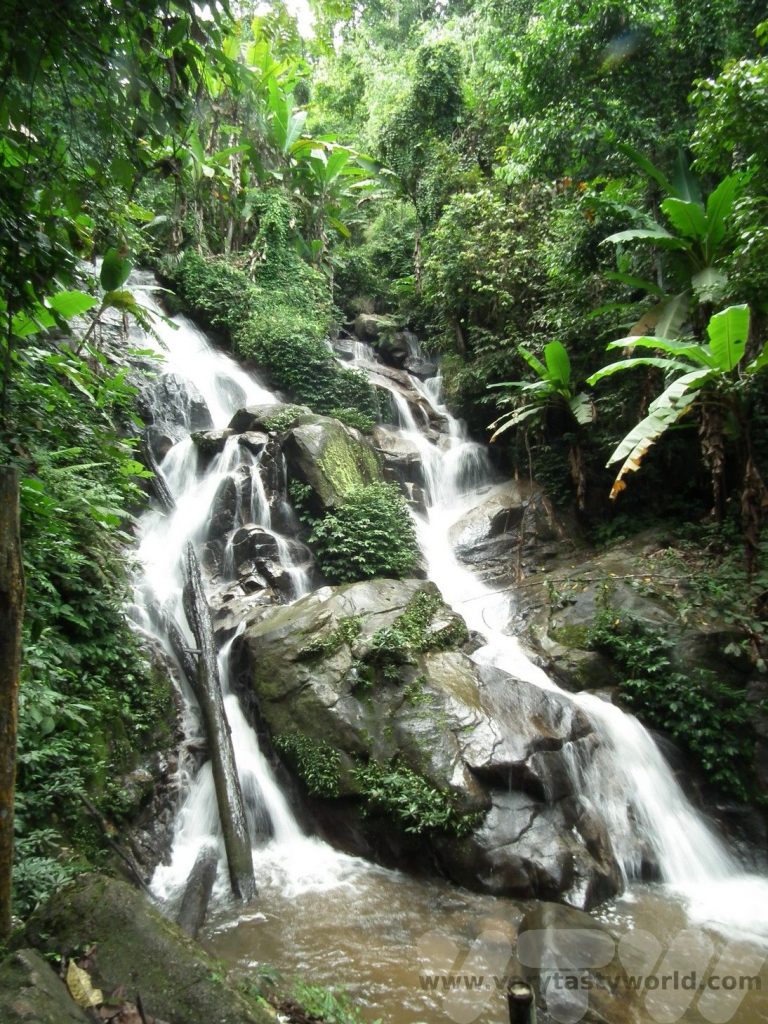
Each night a bonfire would be lit at Bamboo Nest and we could chat with the other guests and watch the glow of the fireflies flitting through the forest.
From the ostentation of the Chiang Rai temple to the simplicity of the remote hills of the Mae Bok basin, we couldn’t have had a more contrasting experience in this region of northern Thailand.
We just didn’t have time to visit Chiang Rai itself!
Related Posts You May Enjoy

Setsubun Food – Bean Throwing Day
Feb 3rd is Setsubun in Japan. Which means that it’s mame maki, or bean throwing, day. Setsubun is one day before Risshun – the first day of spring in the lunar calendar. It’s not considered to be the official new year, which is celebrated on the 1st January, but rather a new start. There are various ceremonial activities associated with the festival, including setsubun food.
Traditionally people throw roasted soy beans (fuku mame) at home, with the shout of ‘oni wa so to’ (get out demons!) and ‘fuku wa uchi’ (come in happiness!) Sometimes the beans are just thrown out of the front door but they may also be thrown at a family member wearing an oni – demon – mask. If people eat the number of fuku mame that’s equal to their age it’s believed that they will be healthy and happy for the year ahead.
Bean throwing ceremonies also take place at shrines across Japan. The Senso-ji temple in Asakusa will have thousands of visitors arrive to take part. Celebrities and sometimes sumo wrestlers are known to turn up to some of the events.
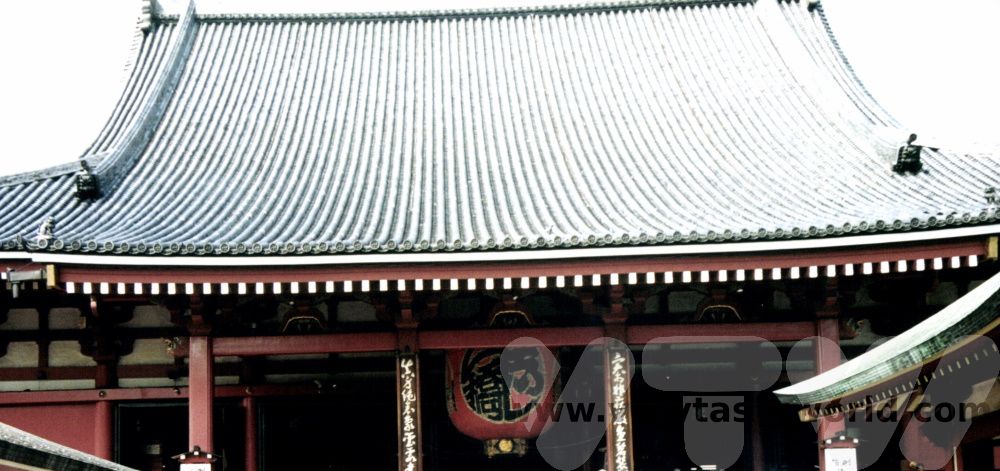
Setsubun Food Tradition
Over the years a foodie setsubun tradition has developed. This is thought to have originated in the Kansai region, in Osaka (always a great place for foodies!) and has become more popular throughout Japan over the years.
It involves eating ehomaki (good luck direction rolls) which are sushimaki rolls that haven’t been cut up. The idea is to eat the roll while facing in the lucky direction. You will need a compass because the direction is quite specific. Last year was the year of the rabbit and therefore the direction was south-south-east. 2024’s direction is east-northeast for maximum luck.
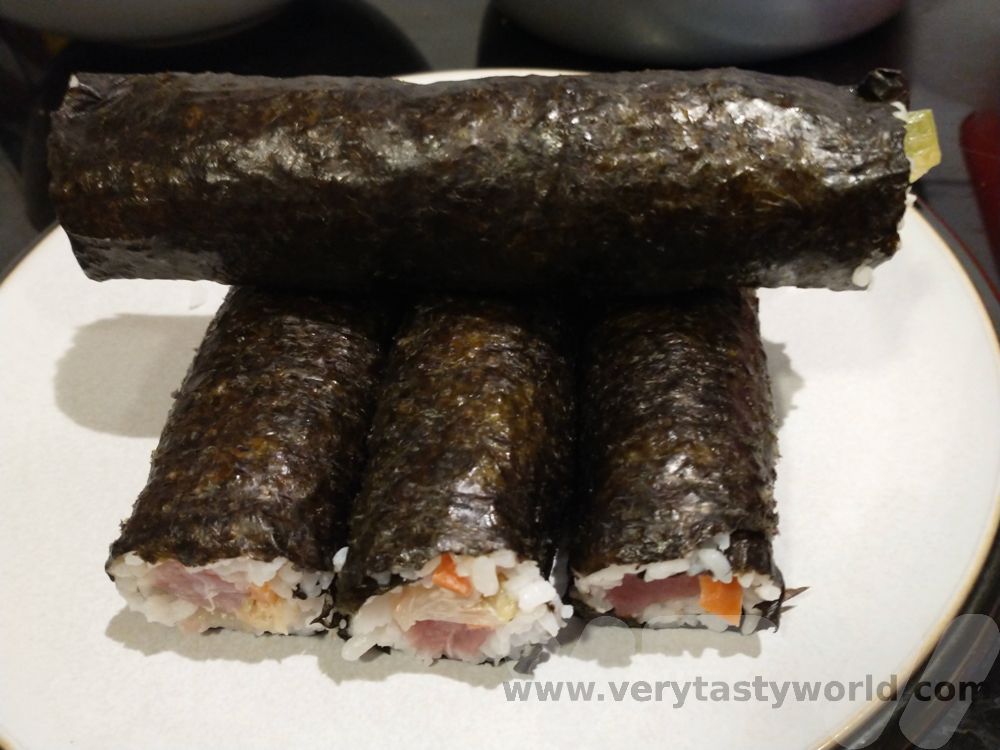
We often make maki rolls using a bamboo rolling mat. They are the easiest sushi to make, even for clumsy cooks such as we. When you’ve had a go at making nigiri or gunkan sushi you realise why it takes 10 years to train as a sushi chef!
There are lots of options for ehomaki filling. One of our favourites is maguro tuna with spicy kimchi and mayo.
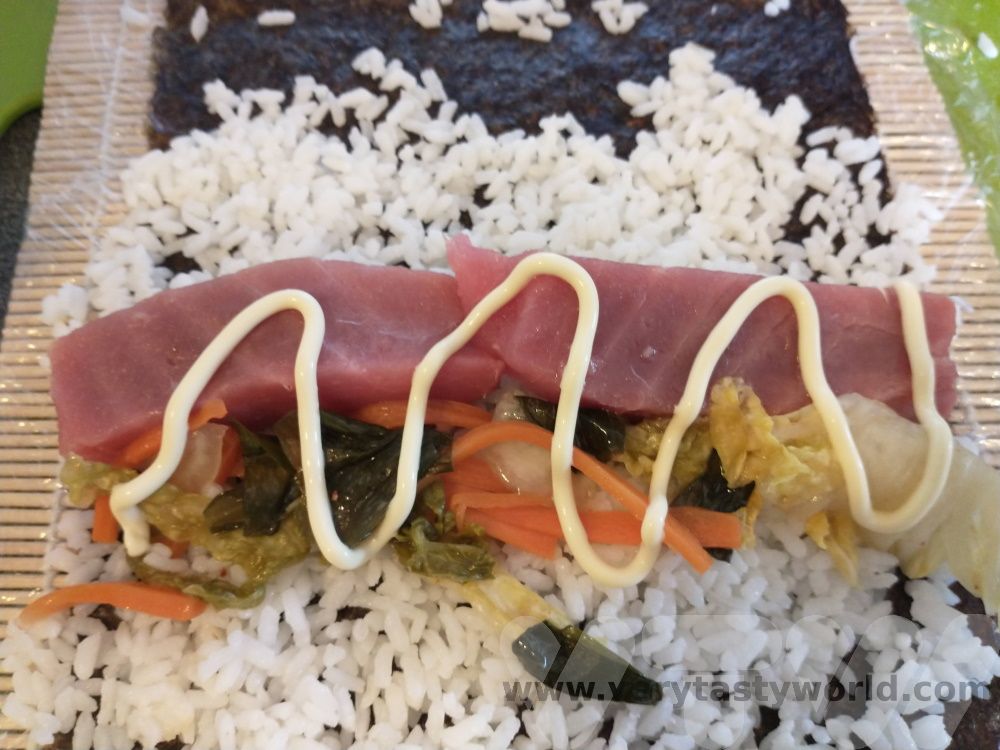
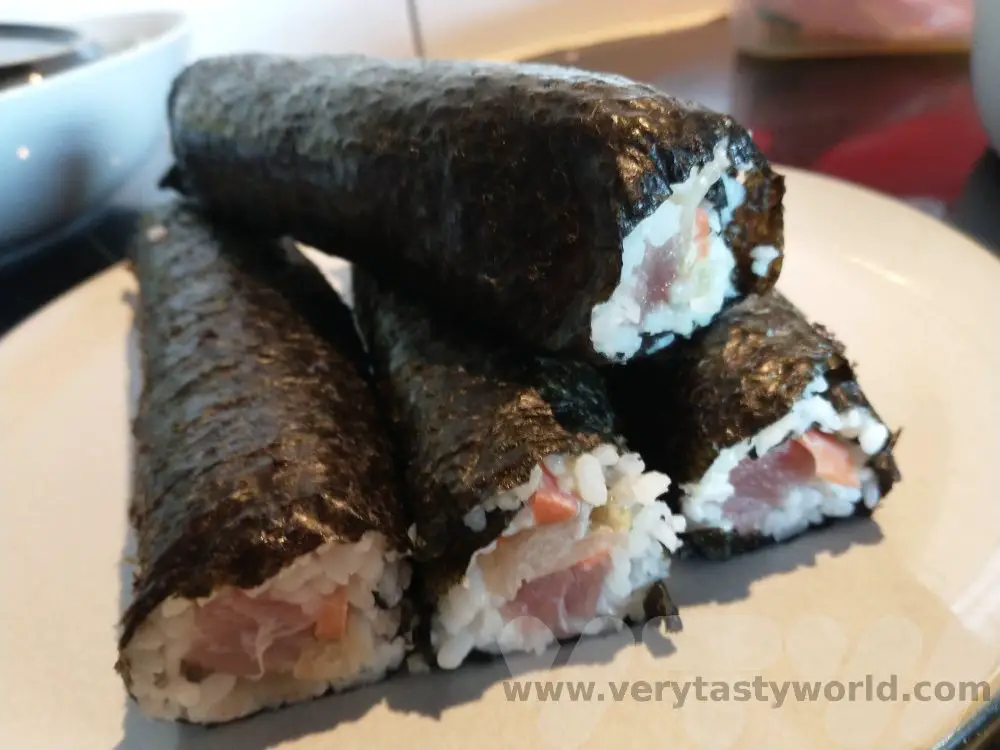

- Recipe: Simmered Shiitake Mushrooms
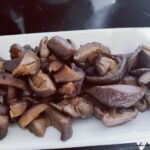
- How to Use Public Transport in Japan

- RECIPE Oyakodon Donburi

- Planning a Trip to Japan
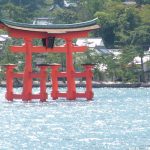
- The Makanai: Cooking for the Maiko House
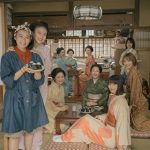
- Setsubun Food – Bean Throwing Day

- The Gassho Farmhouses of Rural Japan
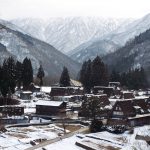
- Recipe: Japanese Simmered Pork Belly – Buta no Kakuni

- RECIPE: How to Make Umeboshi


- RECIPE Oyakodon Donburi
- Zero Waste Recipes Before Your Holiday
- RECIPE: Vegetable Biryani Tamil Nadu Style
- RECIPE: Vegan Wild Garlic Pesto
- Recipe: Venetian Pasta Sauce
- RECIPE: Biryani Raita Recipe
- RECIPE: How to Make Costa Rica’s Gallo Pinto
- Recipe: Japanese Simmered Pork Belly – Buta no Kakuni
- RECIPE: How to Make Umeboshi
RECIPE: How to Make Costa Rica’s Gallo Pinto
Gallo pinto is Costa Rica’s national dish. It’s so popular it can be eaten for breakfast, lunch and dinner. It comprises rice and beans cooked together and served with a variety of accompaniments – such as sausage, vegetables and eggs.
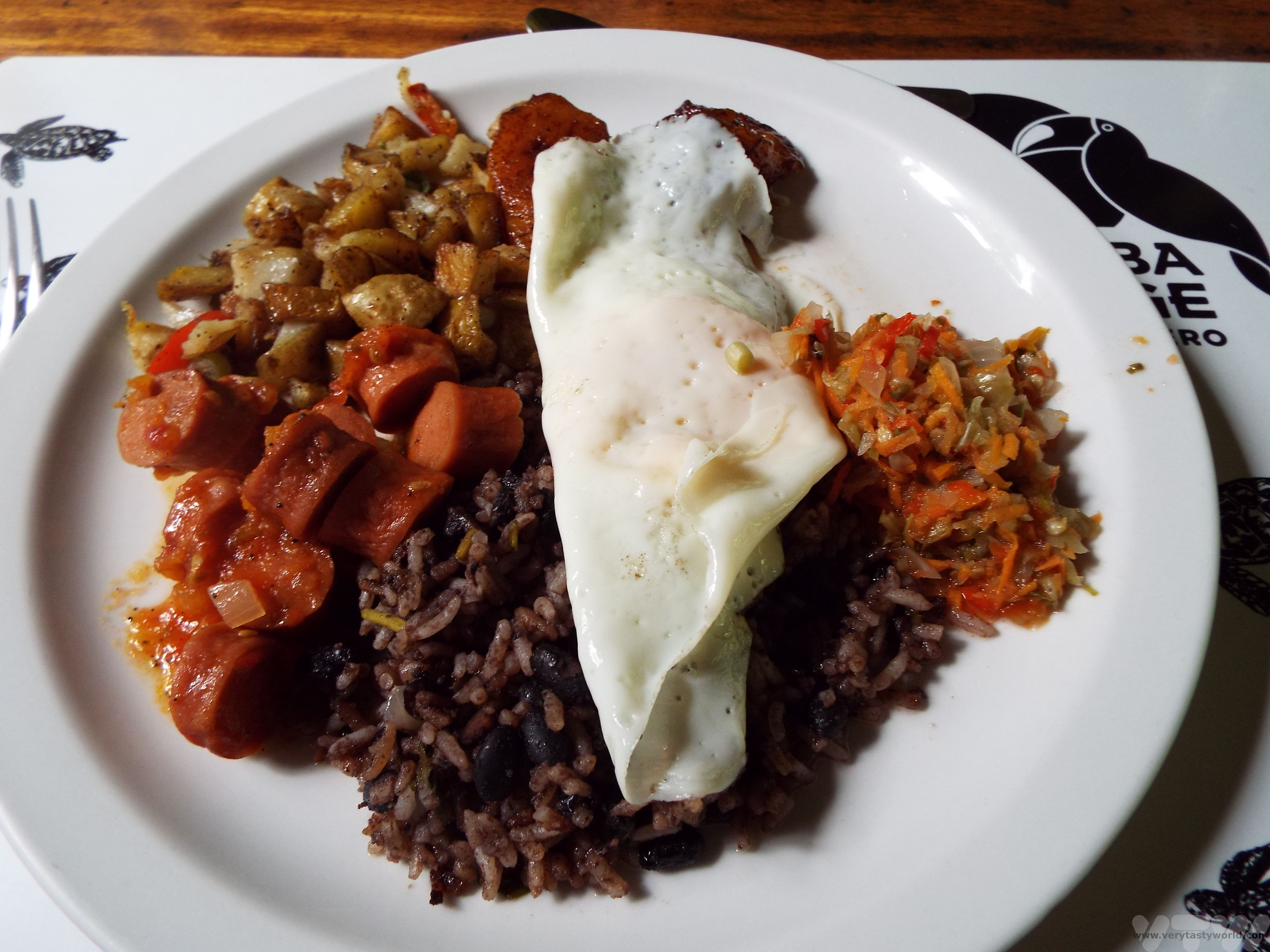
Gallo pinto can be translated as “spotted rooster” and refers to the black beans dotted through the white rice, the colours of which resemble a speckled chicken. Costa Rican food is considered to be highly nutritious and gallo pinto is no exception, but importantly, it’s also hearty, filling and delicious.
The type of rice used is traditionally white long grain. Brown rice or short grain rice is okay to use if that’s what you have. Gallo pinto is great if you cooked too much rice for dinner the night before – it’s an ideal leftovers meal.
The sauce used in this dish is called Lizano. If you ask for salsa at a restaurant in Costa Rica they will bring Lizano. It is used to accompany many dishes and we managed to bring back a couple of bottles from our trip. It is a tangy, spicy (but not searingly hot) sauce that has a lovely piquancy. It’s available in the UK but often at a massively inflated price – we’ve seen it available at an eye-wateringly expensive £30 for two bottles! No, we didn’t buy it. Instead we’ve worked out a recipe using easily available sauces/spices that replicates the flavour pretty well.
Gallo Pinto Recipe (Serves 4)
Ingredients
2 cups long grain white rice (our cups are around 150 ml)
1 tin of black beans (240g)
2 Tbs Lizano sauce (if you can’t get this you need 1 Tbs brown sauce, 2 tsp Worcestershire sauce, 1/2 tsp cayenne pepper, 1 tsp celery salt)
Clove or two of garlic (depending on how garlicky you feel), finely sliced or crushed
2 tsp cumin
1 egg per person
Lots of fresh coriander
Side Dish/Accompaniment Ingredients
Chopped vegetables – bell peppers, tomatoes, onion
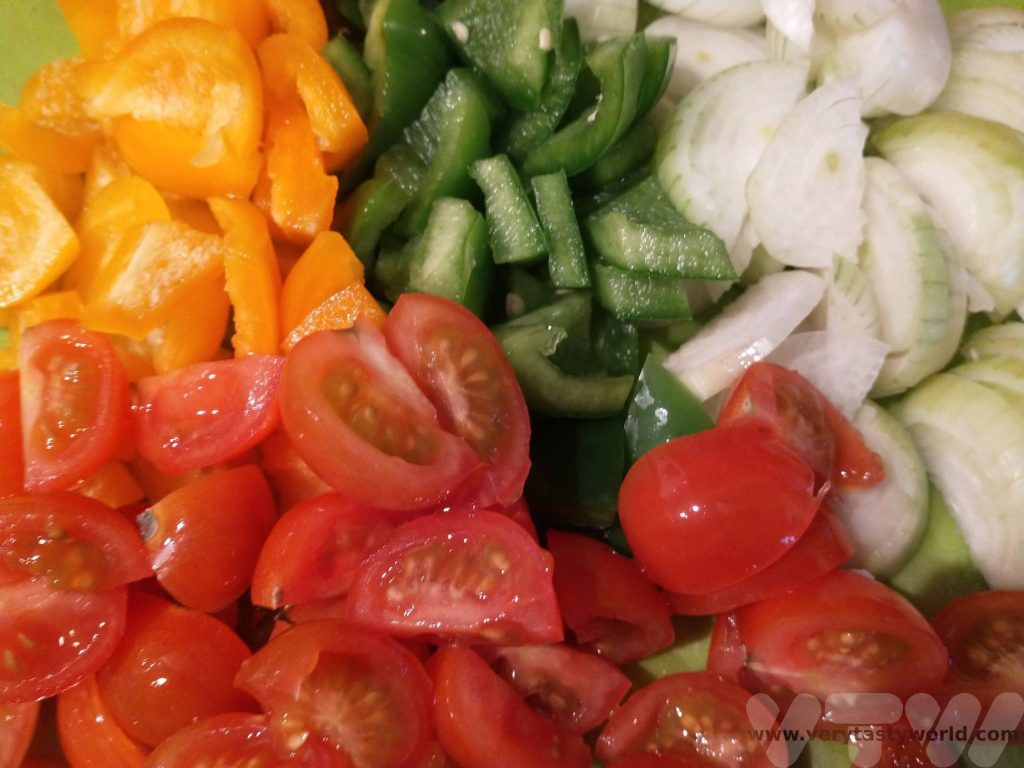
Method
Cook the rice. We use a ratio of 2 cups of water to 1 cup of rice. Our cups are around 150ml in size. Gallo pinto uses long grain rice.
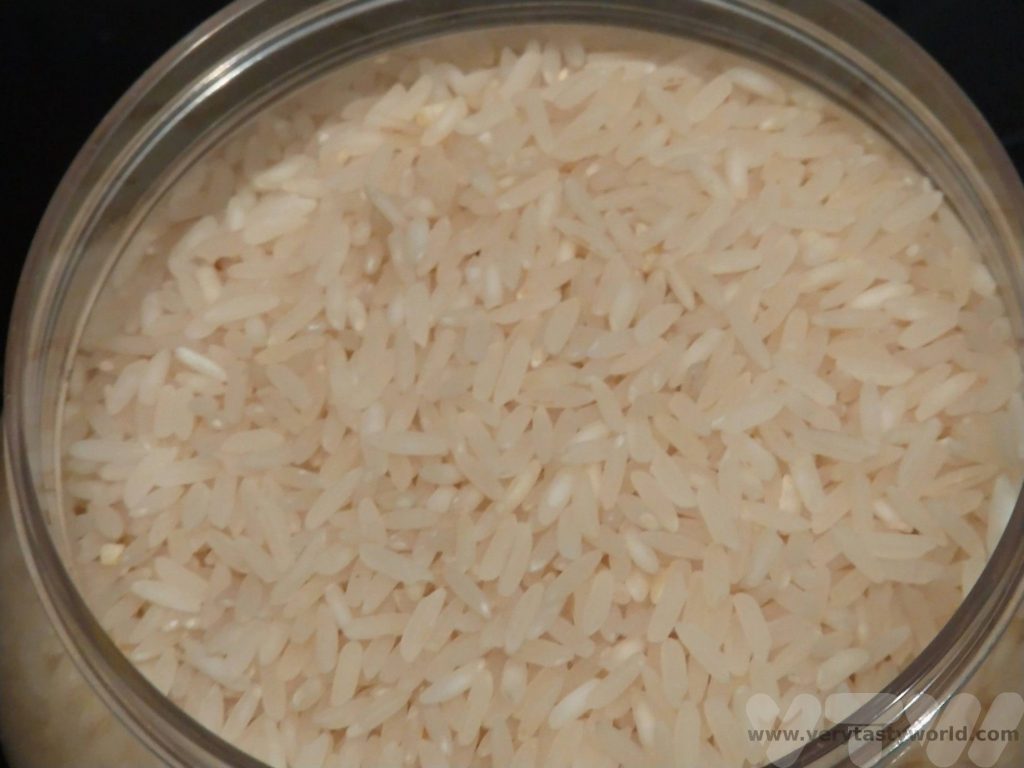
We use a rice cooker which is absolutely brilliant for cooking rice (as well as other things) as we can just bung the rice and water in and set it off. If you don’t have a rice cooker a saucepan is fine – use the same ratio of rice to water. When the rice has absorbed all the water it should be done. It’s absolutely fine to cook the rice well in advance and let it cool, in fact, it’s probably better not to put hot rice into the gallo pinto. Sometimes if we’re having a meal with rice the day before, we’ll make extra rice and let it cool down so that we can have gallo pinto the next day.
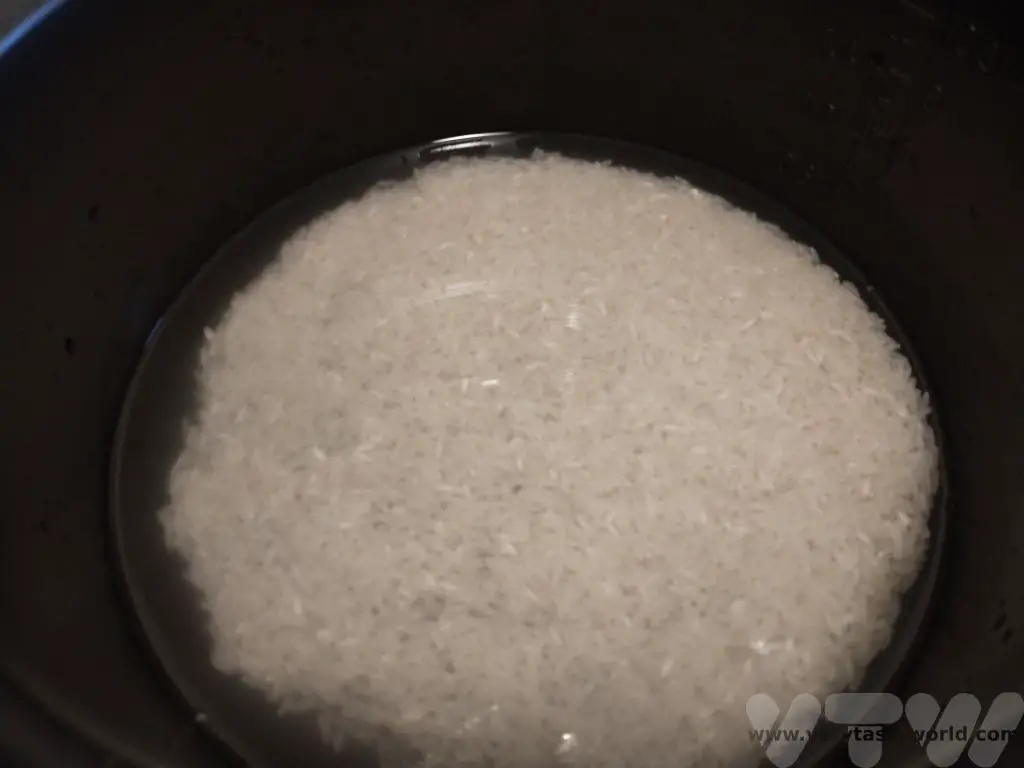
When ready to make the gallo pinto, gently fry the garlic in oil and add the cumin. Then add the rice and stir through.
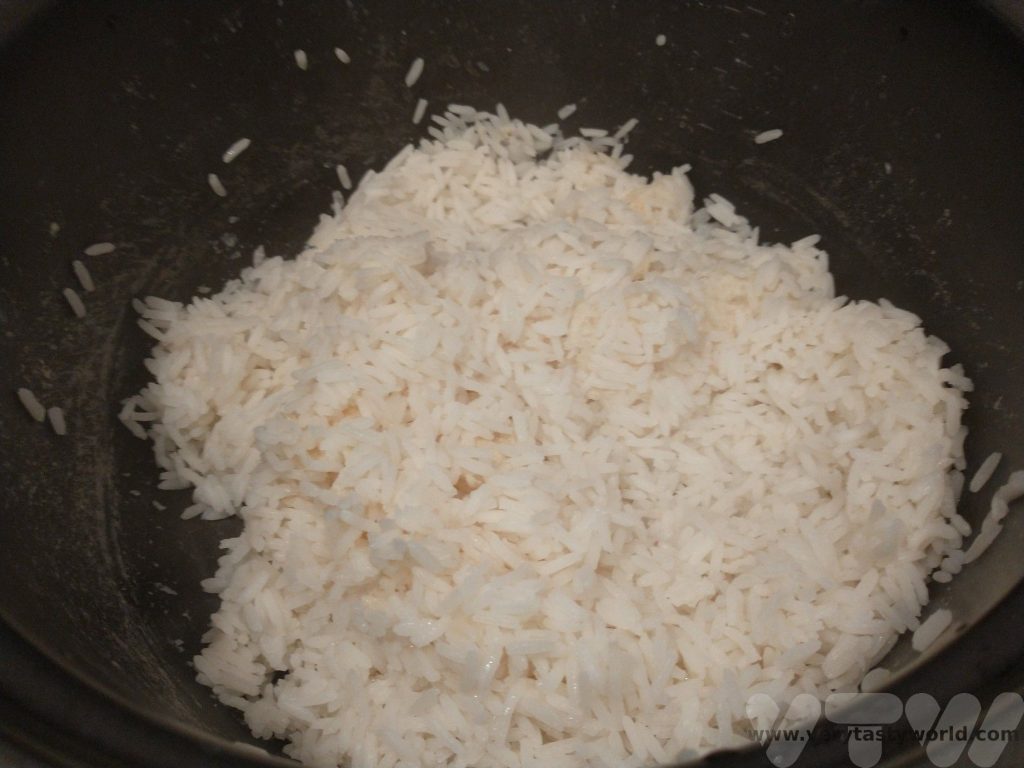
Open the tin of black beans and add the entire contents – including the water.
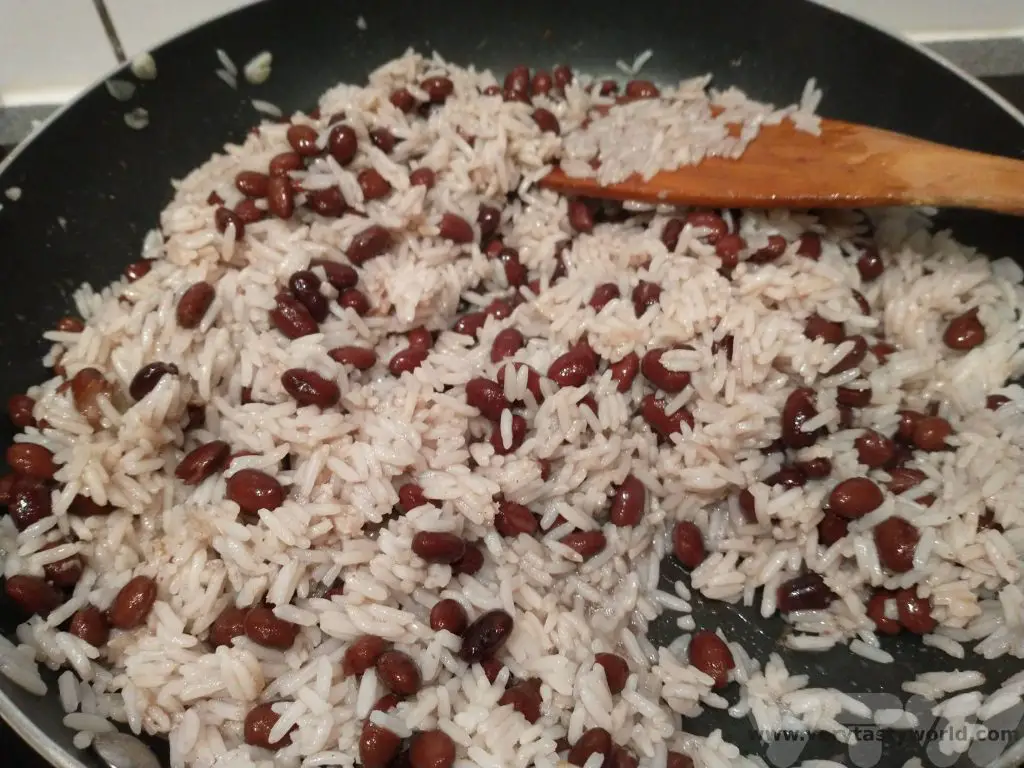
Add 2 Tbs of Lizano sauce.
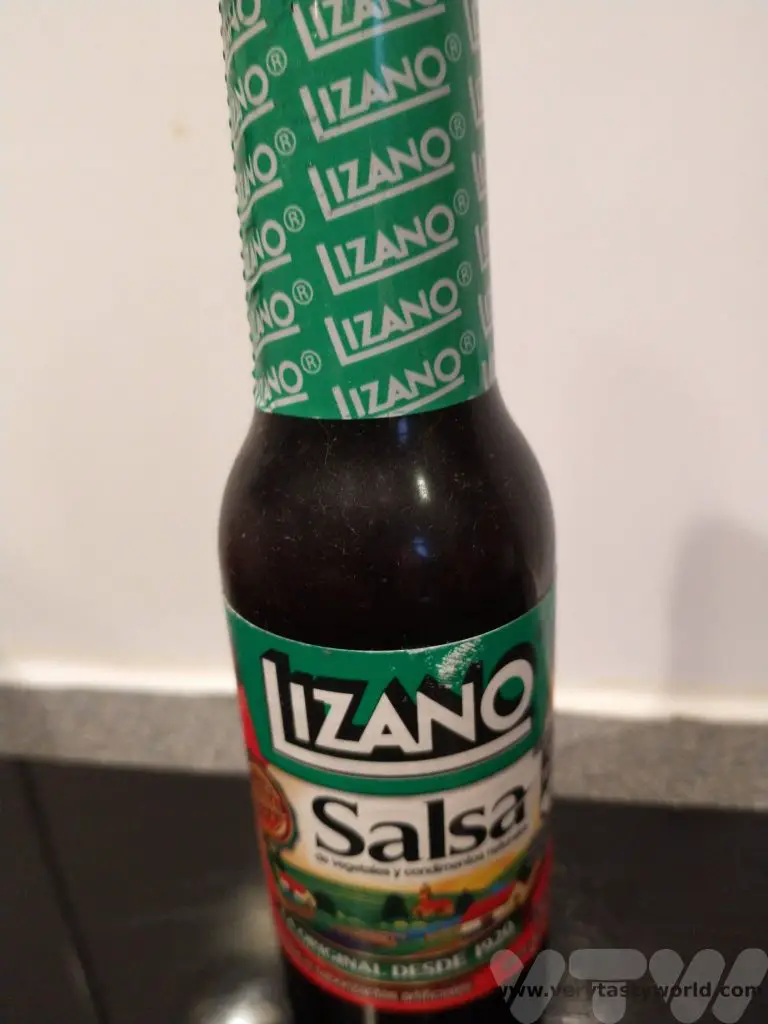
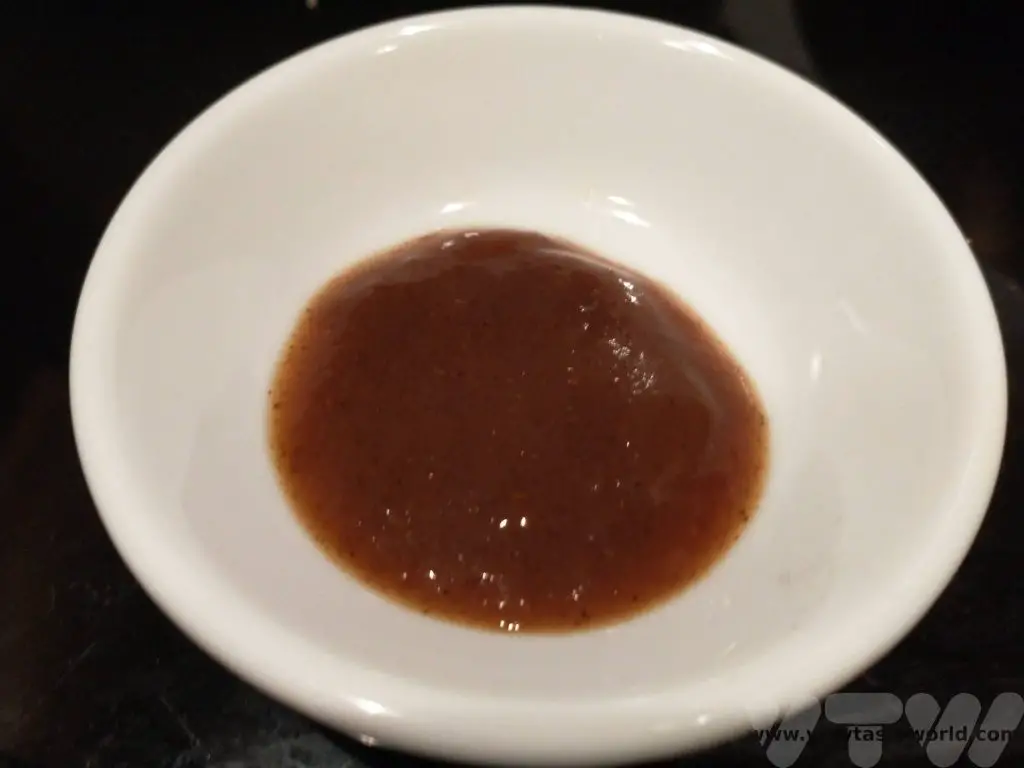
If you can’t get Lizano you can make a reasonable approximation by mixing brown sauce and Worcestershire sauce with spices: 1 Tbs brown sauce, 2 tsp Worcestershire sauce, 1/2 tsp cayenne pepper, 1 tsp celery salt.
Mix it all together gently.
Let the gallo pinto keep warm on a low heat while you fry an egg for each person.
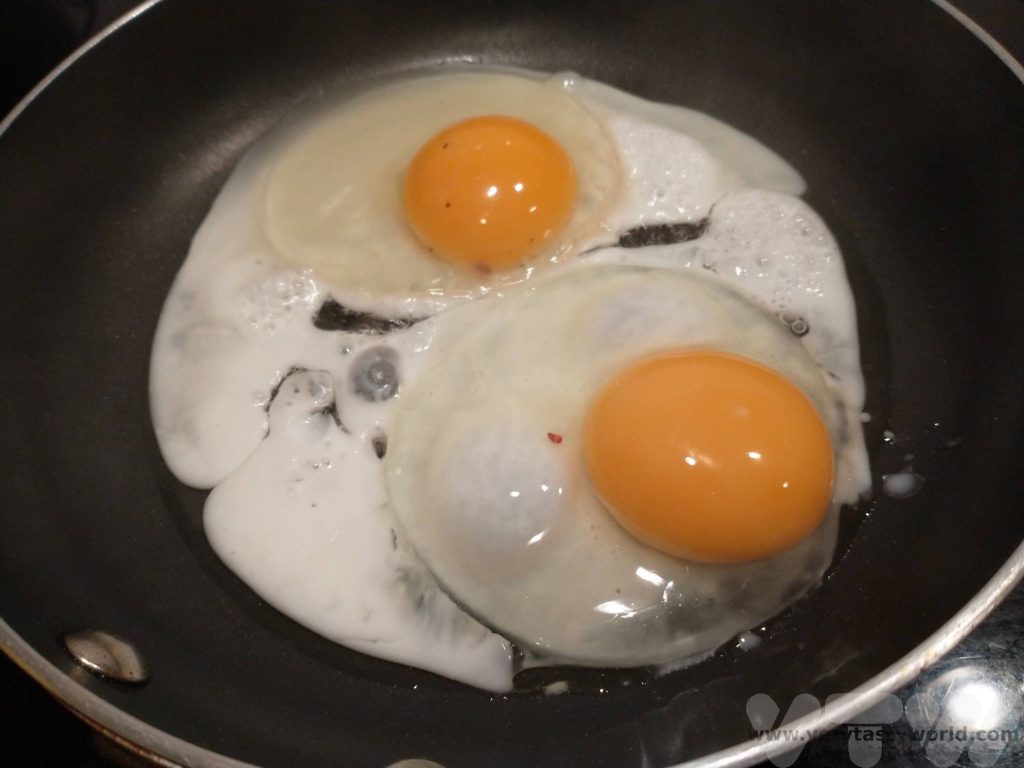
Garnish with chopped coriander.
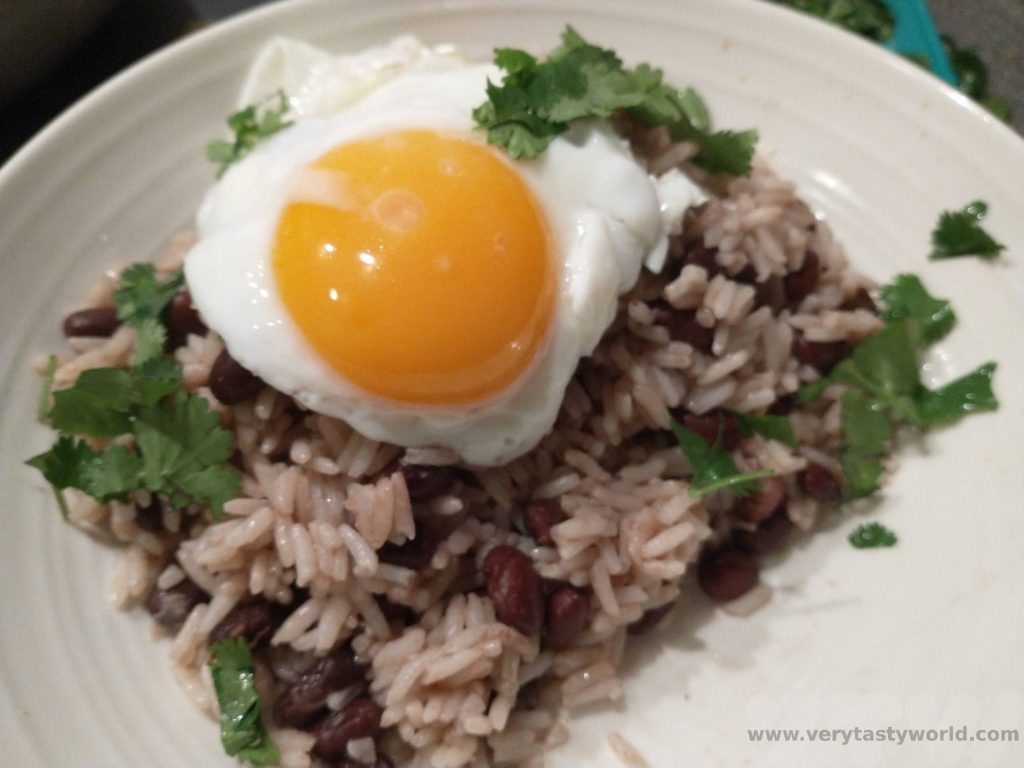
For a more complete meal, stir fry some vegetables and serve alongside the gallo pinto.
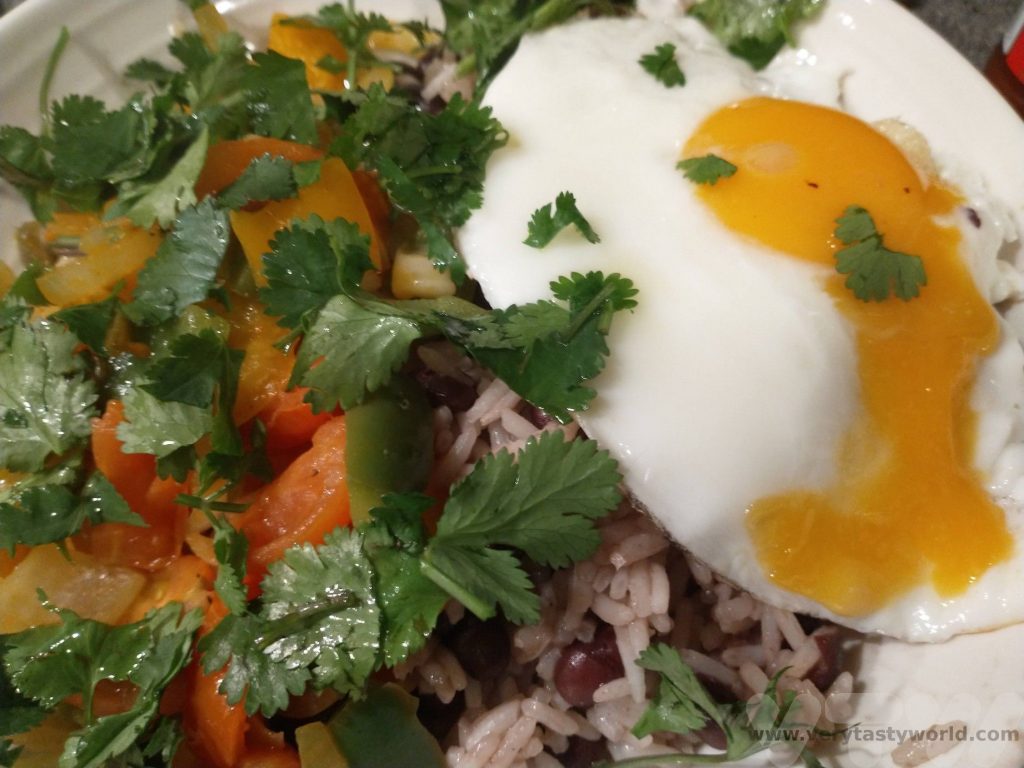
Alternative – at the garlic frying step, add chopped vegetables such as onion or bell pepper and stir into the gallo pinto itself.
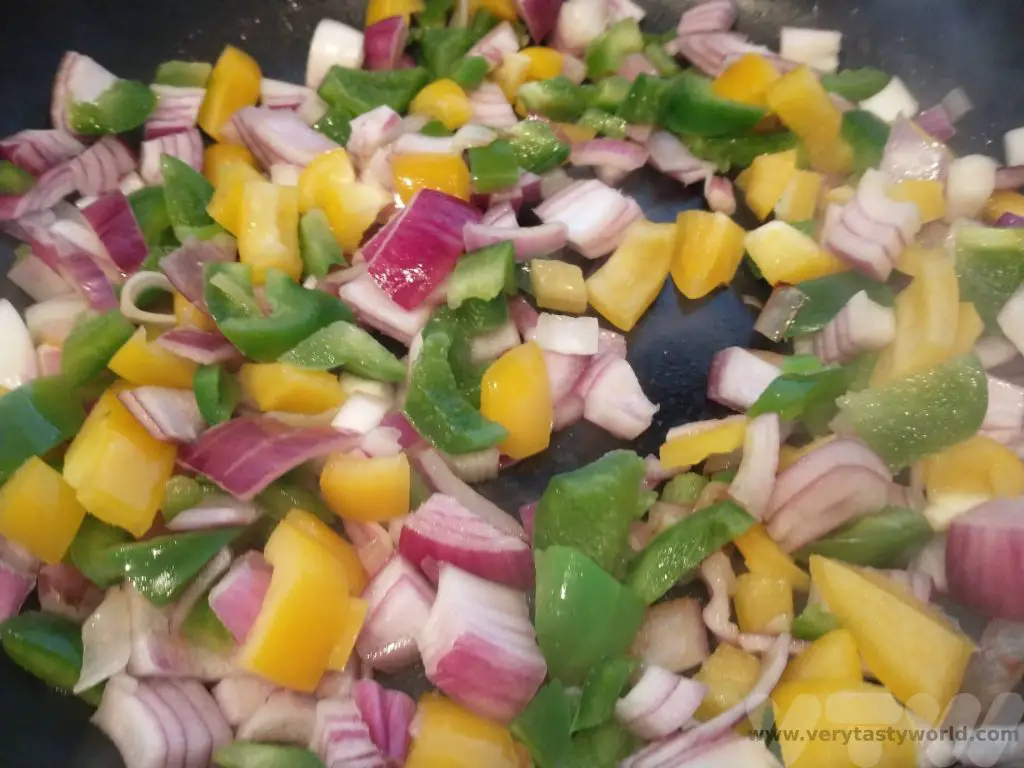
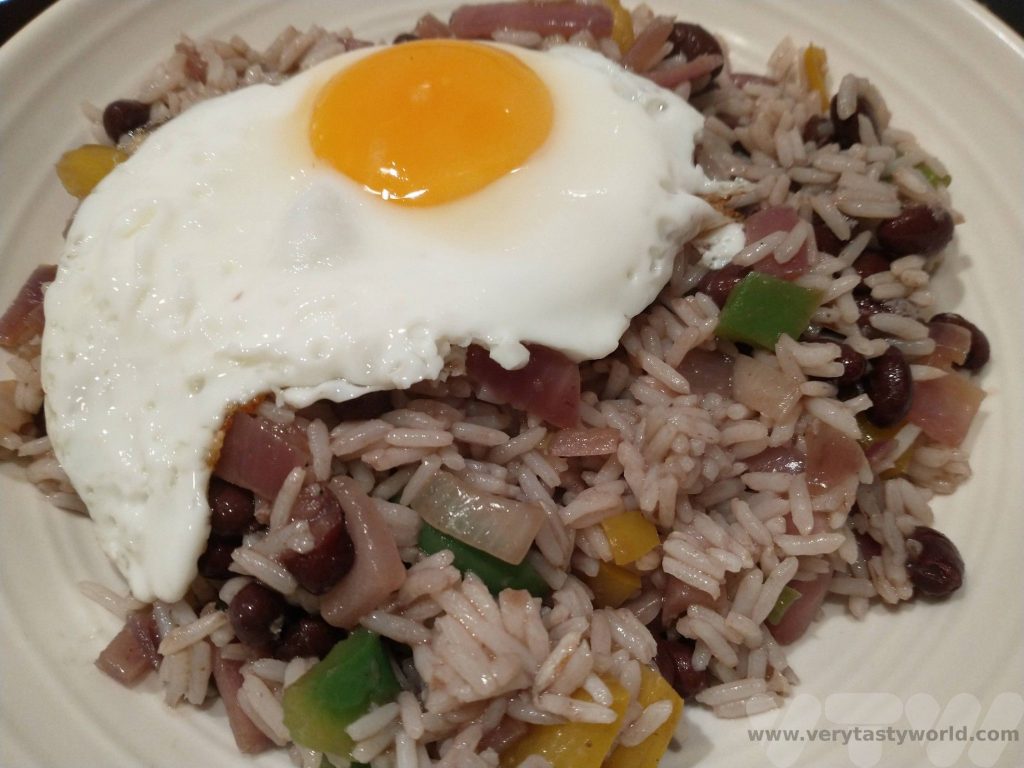
Gallo pinto can be eaten as a meal in itself but can also accompany other dishes. We enjoyed it with steaks, sausages and fried plantain amongst many other delicious ingredients.
Related Posts You May Enjoy

- Best Time To Visit Machu Picchu 2024 Update
- A 2 Week Patagonia Itinerary
- Day of the Dead in Campeche
- A Galapagos Land Based Itinerary
- RECIPE: How to Make Costa Rica’s Gallo Pinto
- A Tasty Puebla Food Tour
- Costa Rica Wildlife Sanctuary – Caño Negro
- Visit Torres del Paine National Park in Patagonia
- Atacama Desert Itinerary

- RECIPE Oyakodon Donburi
- Zero Waste Recipes Before Your Holiday
- RECIPE: Vegetable Biryani Tamil Nadu Style
- RECIPE: Vegan Wild Garlic Pesto
- Recipe: Venetian Pasta Sauce
- RECIPE: Biryani Raita Recipe
- RECIPE: How to Make Costa Rica’s Gallo Pinto
- Recipe: Japanese Simmered Pork Belly – Buta no Kakuni
- RECIPE: How to Make Umeboshi
The Gassho Farmhouses of Rural Japan
It’s not often that we use the word ‘unique’ because very often things described as such usually aren’t. Unique, that is. But there are some villages in rural Japan that are the only examples of their kind and they offer a fantastic glimpse into traditional life in the Japanese countryside.
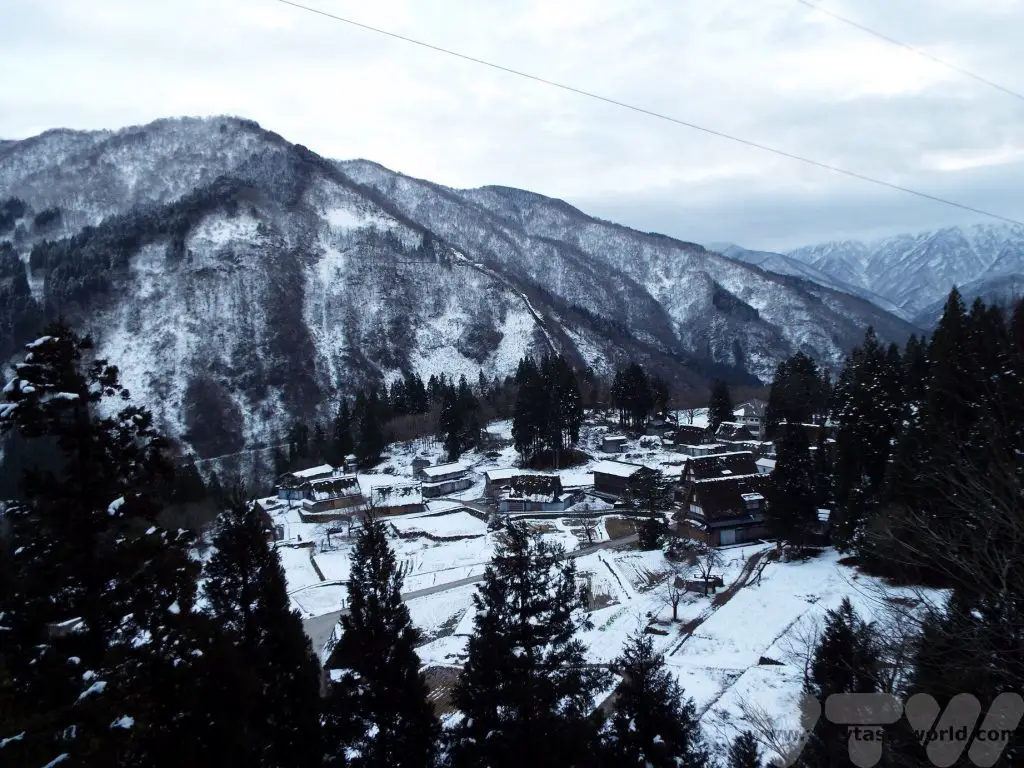
The historic mountain villages of Shirakawa-go and Gokayama have been designated as UNESCO heritage sites and were historically quite isolated from the rest of the world. The villages Ogimachi in Shirakawa-go, and Ainokura and Suganuma in the Gokayama region are located in central Honshu, on the Shogawa river valley, across the borders of the Gifu and Toyama Prefectures.
Ogimachi is probably the most famous of the villages and is known for its light-up events, where the whole village turns their lights on in winter-time and visitors come from far and wide to marvel at the beauty of a snowy wonderland. These are scheduled events and hugely popular. Reservation is essential, not only for staying in the village but also for attending the viewing and some transportation options.
Initially when planning our winter trip we thought that Ogimachi would be the obvious place to visit but unfortunately everybody else thinks that too. It was impossible to find accommodation in this lovely village, even when trying to book several months in advance. But we had a Plan B which worked very well indeed. Ainokura is smaller and quieter but similarly delightful.
Getting to Ainokura in Rural Japan
We had been staying in a business hotel in the lovely city of Kanazawa on the western coast of Japan and, as we planned to return there, left our main luggage at the hotel and just took an overnight bag with us. We then caught the shinkansen (bullet train) from Kanazawa to Shin-Takoaka. It is possible to catch a bus to Ainokura from Shin-Takoaka – the journey takes just over an hour or so – but we caught possibly the cutest train ever to Johana and caught our bus from there.


Ainokura can also be reached from Toyama. The shinkansen goes to Toyama and it’s possible to catch a bus from there. It is feasible to visit the village as a day trip from both Takoaka and Toyama but we recommend staying overnight.
Our bus to Ainokura left from Johana station and we embarked on a pleasant journey through the Japanese countryside. A short walk from the main road took us into the village.
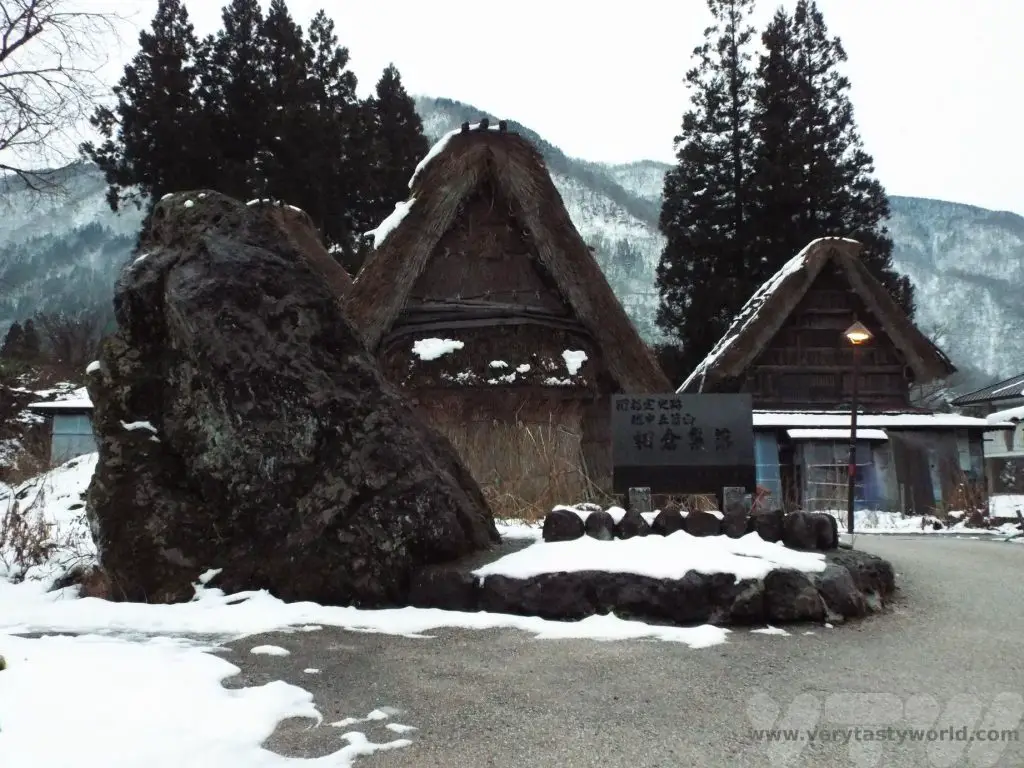
A word of warning: If you are visiting during the winter the area can experience a lot of snowfall – 2-3 metres on occasion. This may mean that occasionally buses can’t get through and are delayed until the roads can be cleared. It’s worth bearing this in mind when planning your onward journey.
Staying in a Gassho Farmhouse
The farmhouses are called ‘gassho’ which means ‘joining hands in prayer’ due to their very steeply pitched thatched roofs. Because the area experiences such heavy snow in winter, the roof design ensures that snow falls off the building quickly and this helps prevent the structure being crushed by its weight.
The houses have three or four levels – the top levels are not living areas but used for various industrial or farming purposes, such as making washi paper or rearing silkworms.
The front and back have a large gable with windows to let the light in.
We booked a room at Yomoshiro ryokan, a delightful family run house.
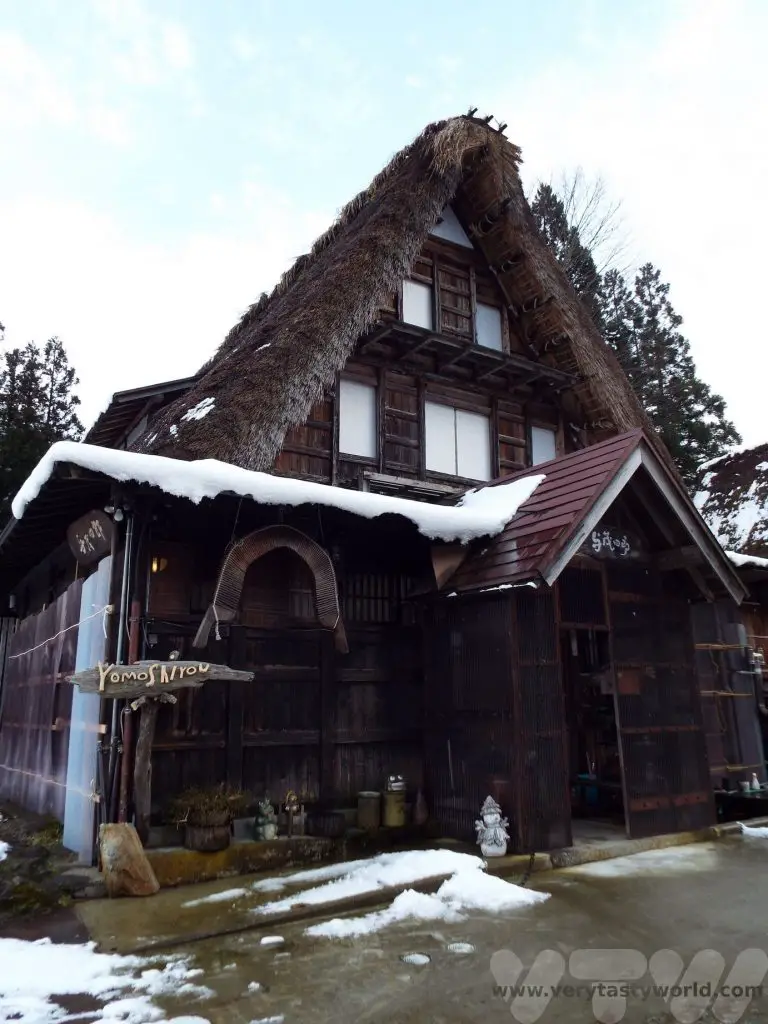
On arrival we took off our shoes and were offered an array of indoor slippers to wear. This is very common in all Japanese households, it’s considered very rude to wear outdoor shoes inside a house.
Our hosts were lovely and very welcoming. We were offered a cup of warm tea and a biscuit in the living area.
The living area has a sunken fire with a kettle suspended above the embers. The room was warm and toasty.
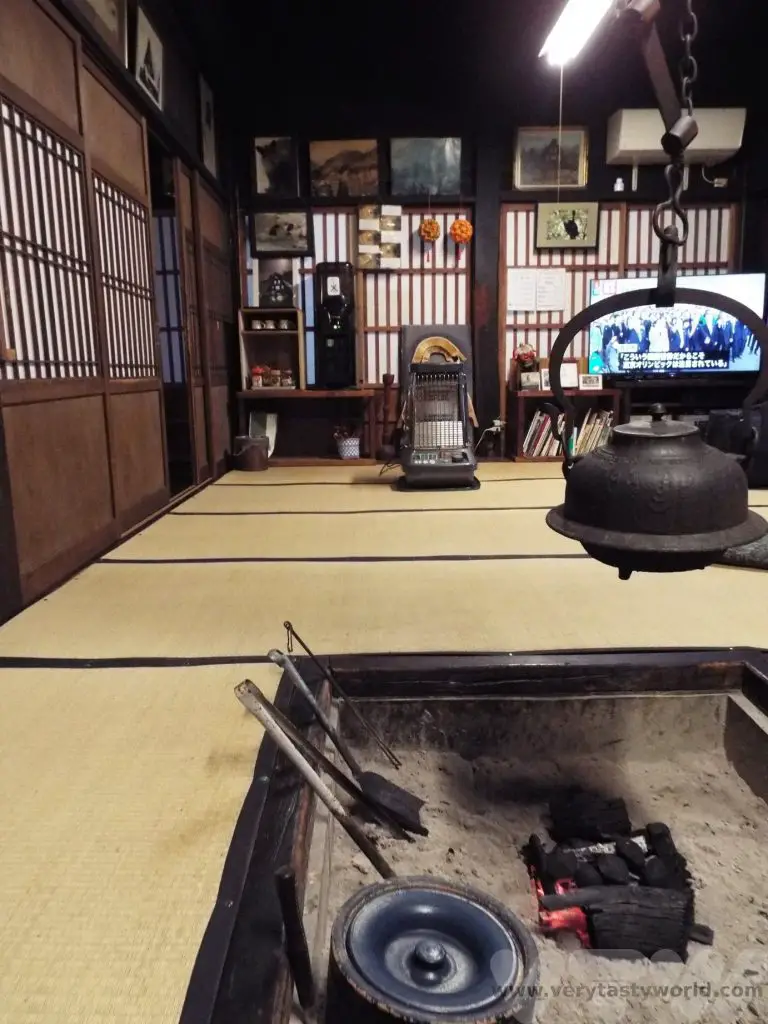
Our room was in traditional style with tatami (reed) mat and futon bedding on the flooring. Usually the bed is laid out while you are enjoying dinner.
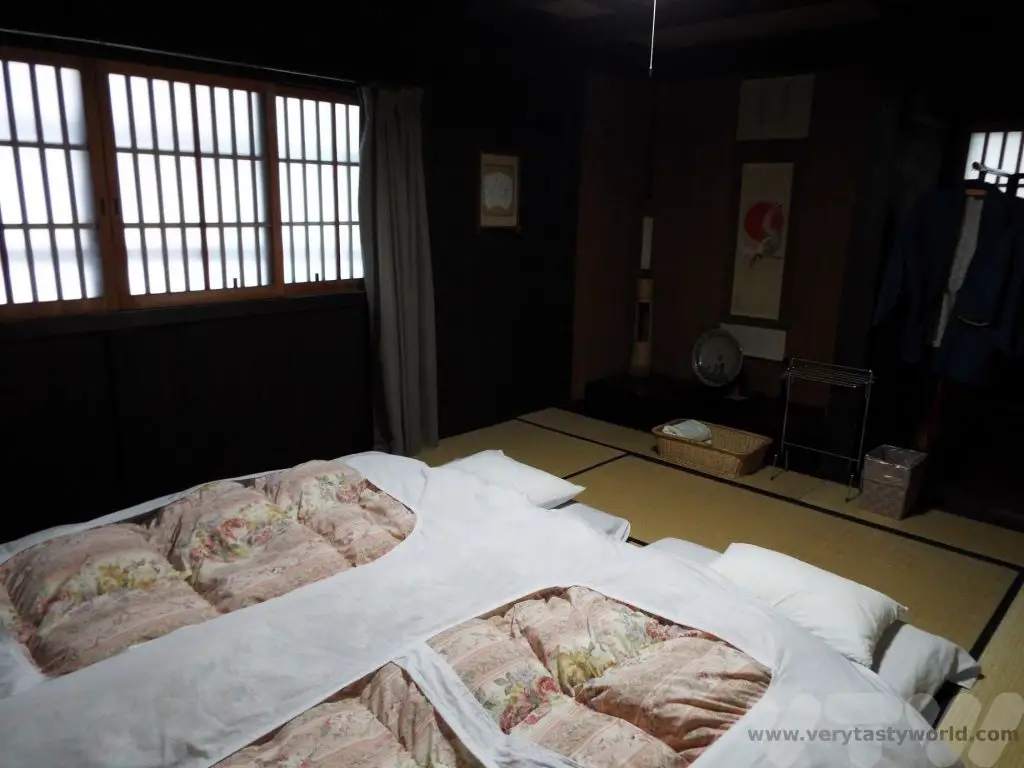
The bathroom and toilet were shared with other guests and one thing that you need to remember in Japan is to change your indoor slippers for bathroom slippers when you use the bathroom or toilet. And change them back – it is really easy to forget to change the slippers back and walking on the tatami in your bathroom slippers is like walking inside in your outdoor shoes.
Exploring the Village
We visited the day that our hosts reopened their accommodation after the new year holiday so unfortunately some of the attractions in the area weren’t yet open. There is a museum of traditional industries which demonstrates the paper making and silk activities of the region.
The village also has a folk museum that showcases traditional utensils, tools and musical instruments from the region.
There are a number of walks in the area. One of these is essential – a viewing area close to the village entrance where you can climb up the hillside to take that perfect shot of the village, nestled amidst the mountains.
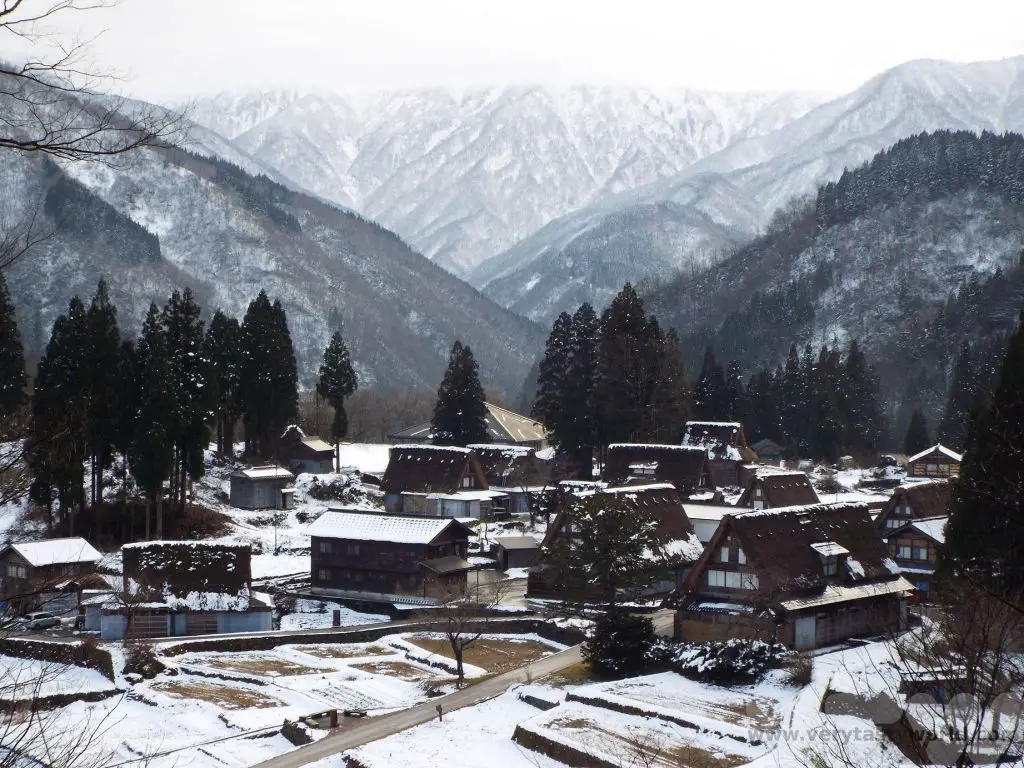
Back to the Gassho for Dinner
The costs of our stay included dinner and breakfast and this was a highlight of the visit as the food on offer was locally sourced, some even grown by our hosts. We dined with the other guests in the living area.
Our home-cooked dinner was utterly delicious. Char, a fish a bit like a trout, was salted and roasted on a spit in the fire.
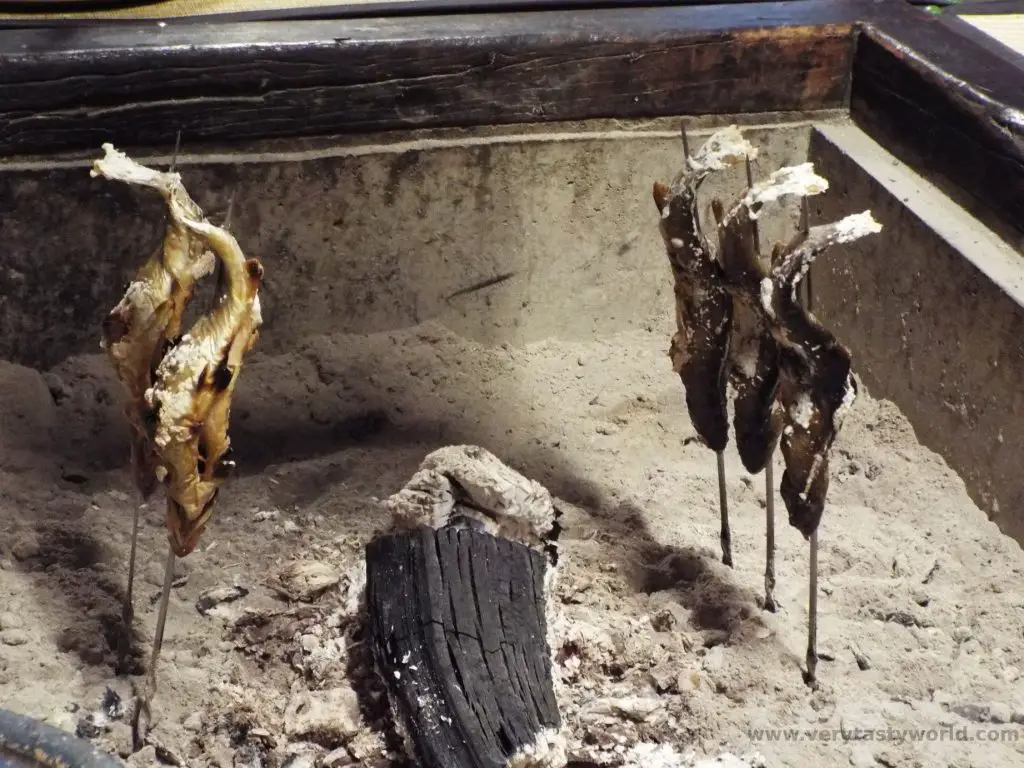
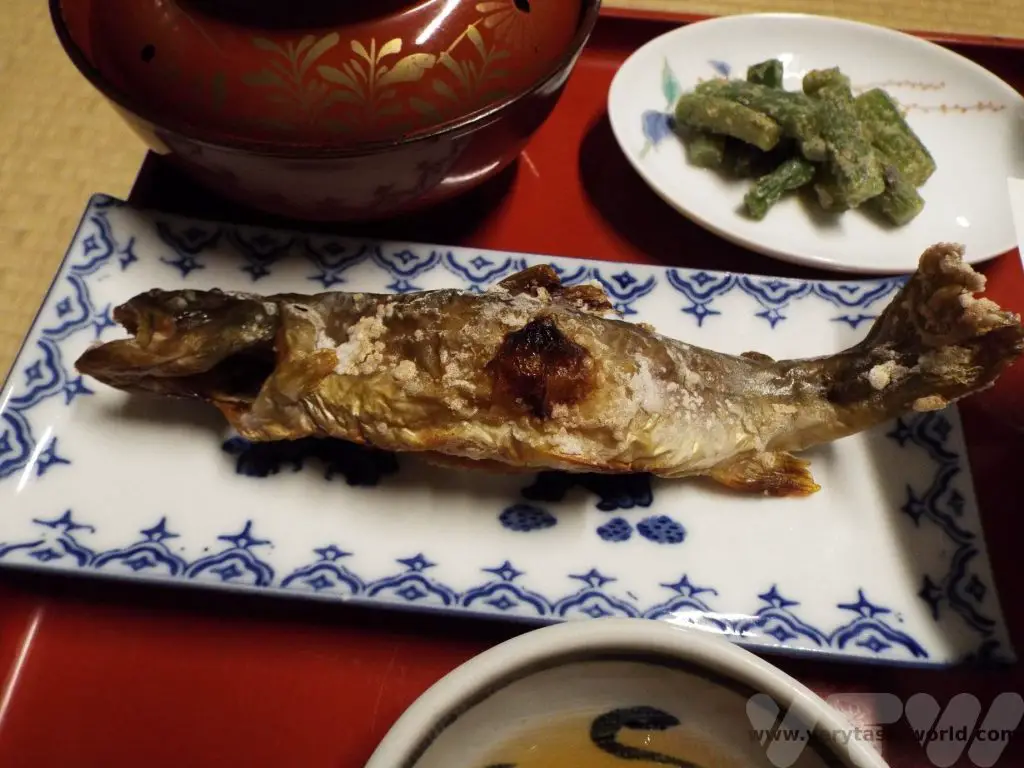
We were also served koi sashimi, vegetable tempura and a home-grown spaghetti squash, mountain greens, and simmered bamboo shoots, mushrooms and sweet potato.
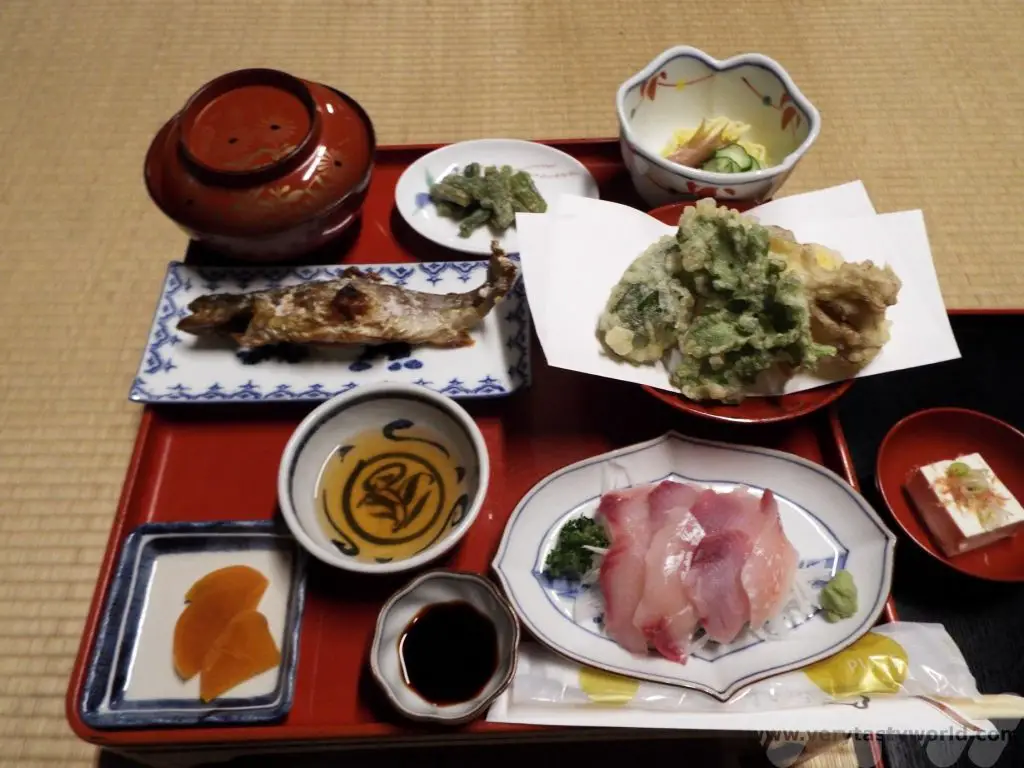
Rice accompanied the meal and we also enjoyed some local sake.
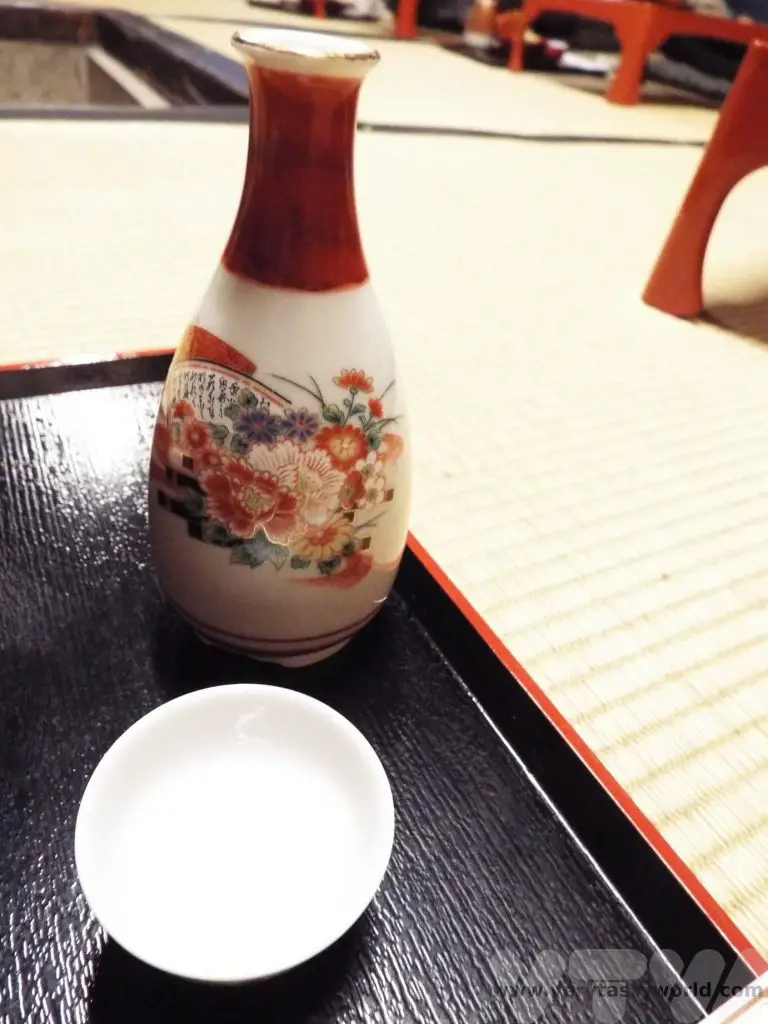
After dinner we were entertained with a documentary about the villages and then our hosts played some music using traditional instruments.
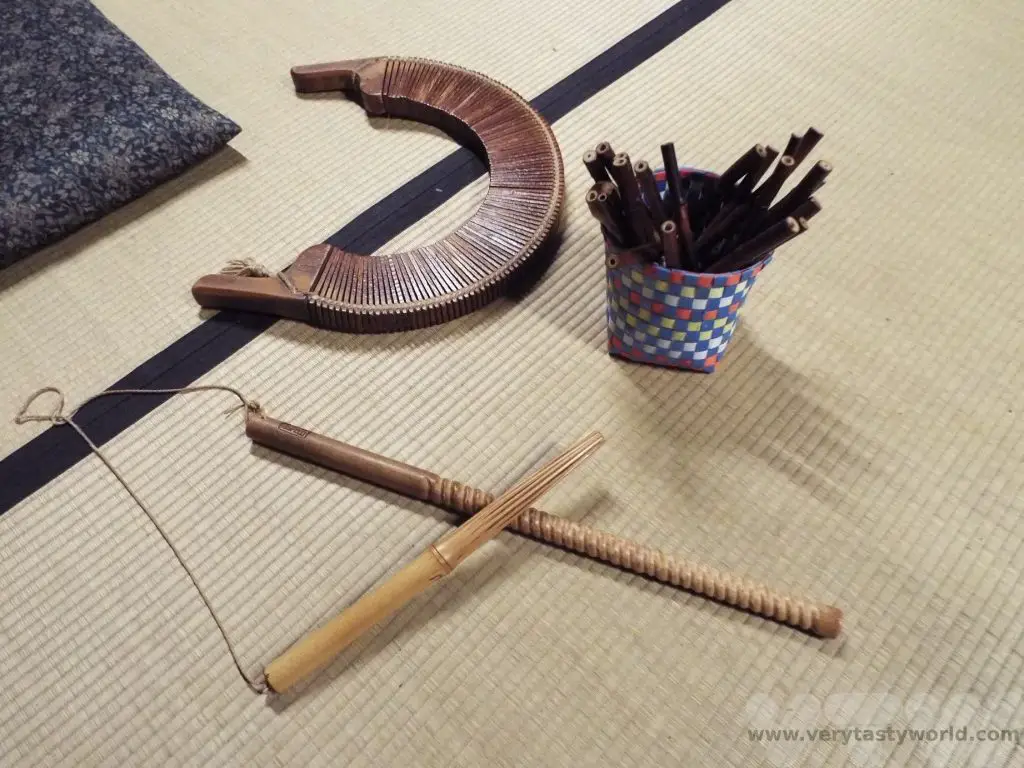
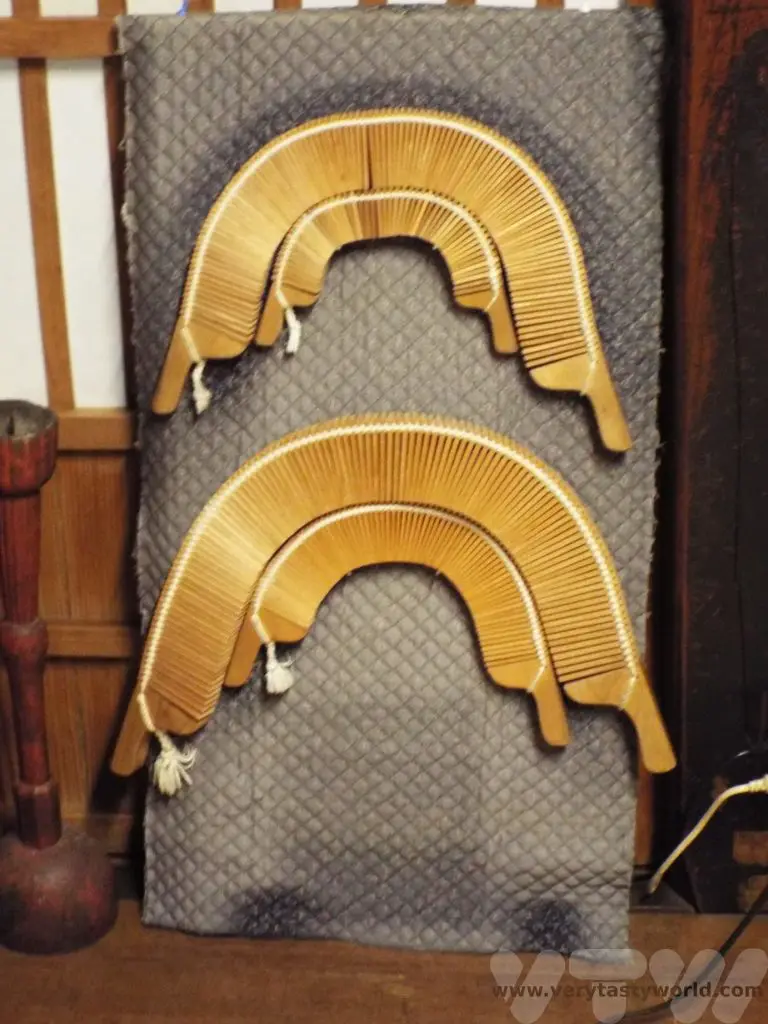
A lot of these are percussion, notably the sasara which comprises many wooden clappers which are strung together.
A Cosy Night’s Sleep
At bedtime we were provided with hot stones to put into our futons.
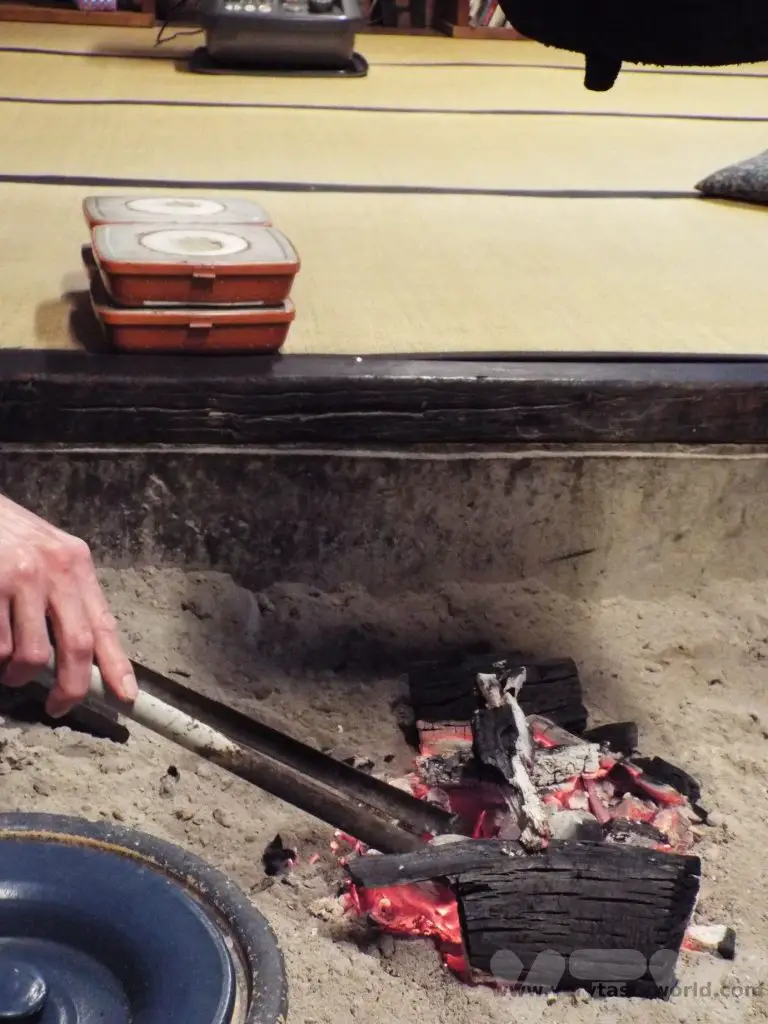
These stones had been heated in the fire and were placed inside ceramic boxes then wrapped in a thick cloth.
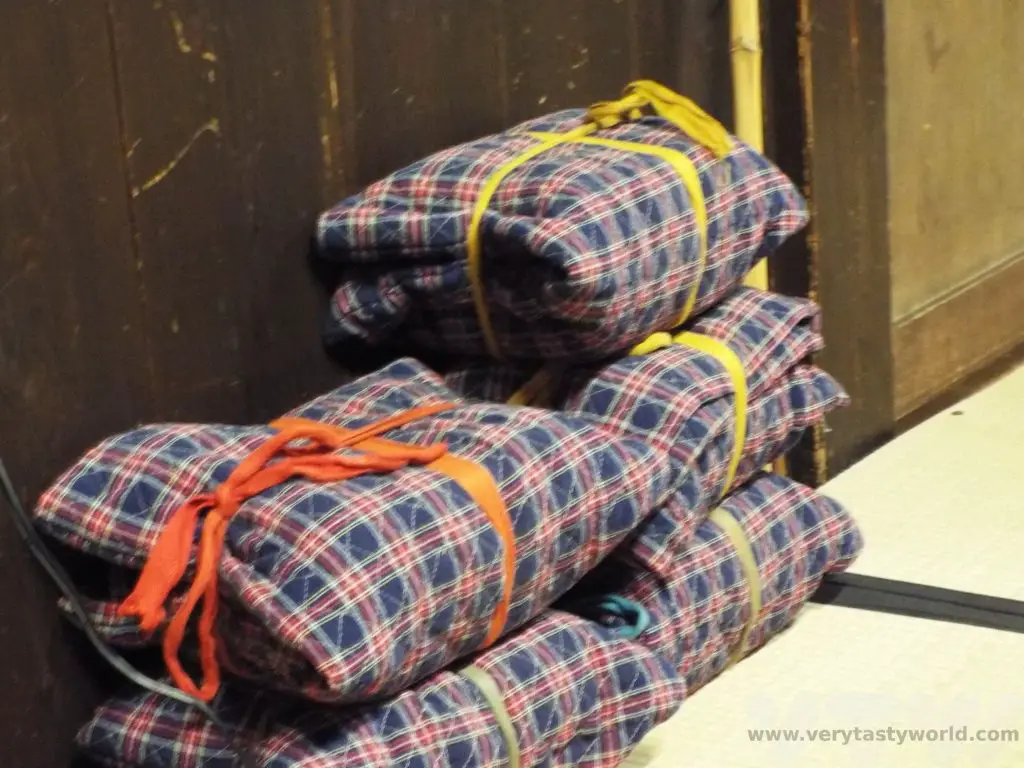
These were better than any hot water bottle we’d ever used, they retained the heat so well – they actually felt as though they were getting warmer through the night.
Breakfast the following morning was a traditional Japanese meal and also delicious. There were lots of fresh vegetable dishes, rice and miso soup.
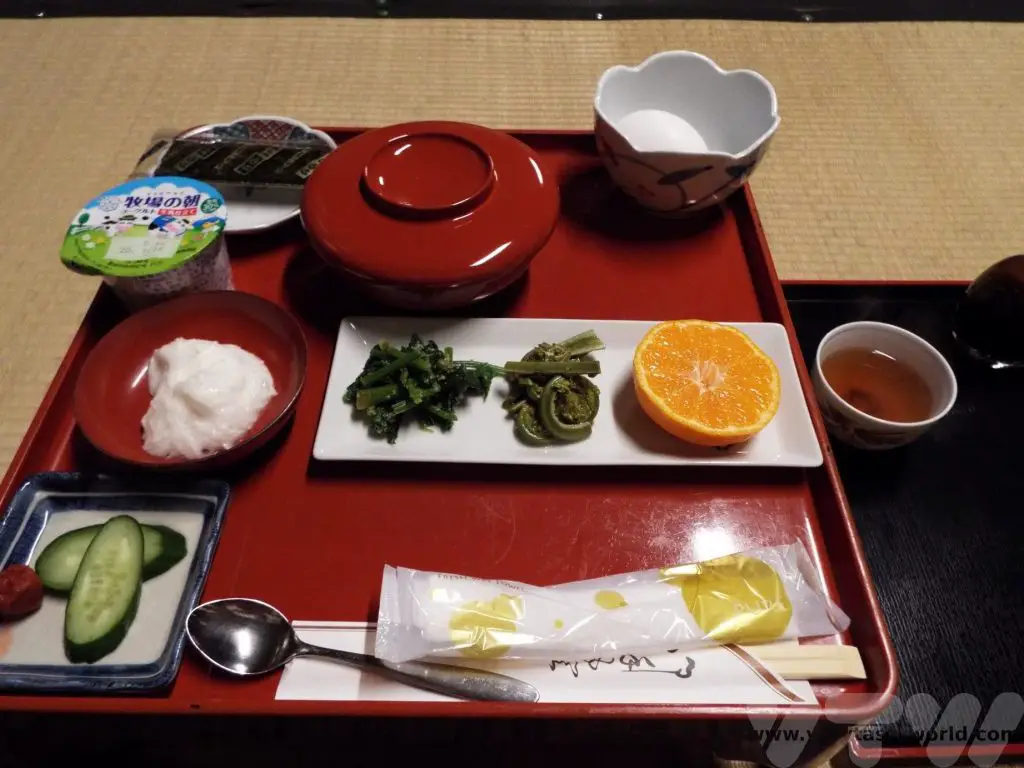
We were given the choice of a raw or boiled egg. We always choose raw egg. You mix it into the rice, which partially cooks the egg, add a bit of soy sauce to your taste and then scoop up the flavourful mixture with a piece of nori seaweed. You usually get a sour and salty umeboshi plum – a real wake-up call!
Staying in a gassho is a delightful way to spend time in rural Japan and is highly recommended. But… make sure you plan your trip and book early!
Related Posts You May Enjoy

- Recipe: Simmered Shiitake Mushrooms

- How to Use Public Transport in Japan

- RECIPE Oyakodon Donburi

- Planning a Trip to Japan

- The Makanai: Cooking for the Maiko House

- Setsubun Food – Bean Throwing Day

- The Gassho Farmhouses of Rural Japan

- Recipe: Japanese Simmered Pork Belly – Buta no Kakuni

- RECIPE: How to Make Umeboshi


The Food of The Azores
The Azores are a tiny archipelago in the middle of the Atlantic Ocean and an autonomous region of Portugal. Their location means that they are an absolute magnet for marine life viewing because they have resident whales and dolphins, as well as many migratory species, such as the blue whale, which pass close by to the islands each year. We spent a week on Sao Miguel, the largest island, enjoying whale/dolphin watching excursions as well as some activities on the island, such as mountain biking and kayaking. But we didn’t realise what a great foodie destination the islands are. In between the activities we enjoyed some fantastic food of the Azores.
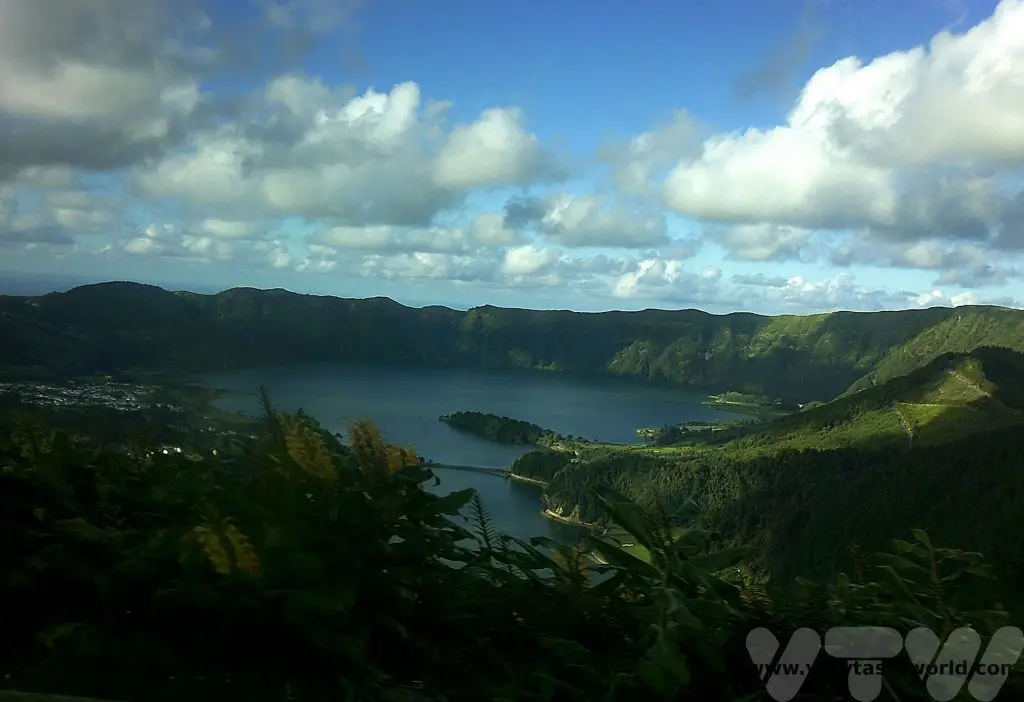
We stayed in the main town of Ponta Delgada. It’s a pretty place and has all amenities within walking distance.
Cheese – Food of the Gods!
One of the things we noticed when travelling through the beautiful green countryside was the number of cows and also fields of ripening corn. The corn is actually more likely to be grown to feed cows than people.
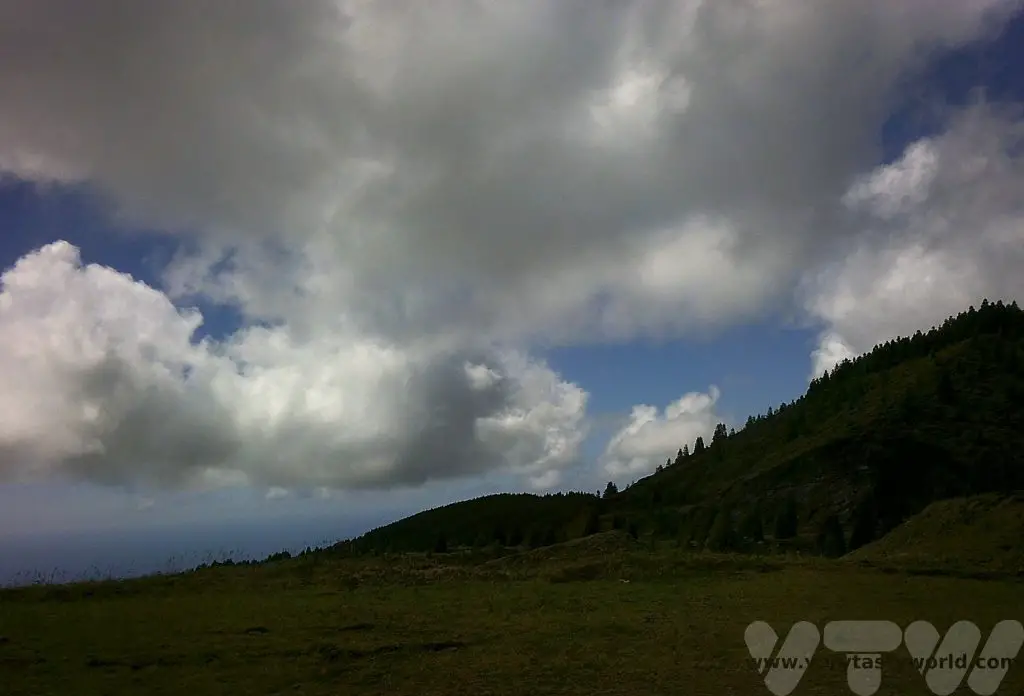

With mild winters and lots of rain the vegetation is lush and that’s perfect for the cows who produce rich milk that is turned into cheese. We were surprised to learn that around 50% of Portugal’s cheese is produced in the Azores.
Another striking feature of the landscape is the plethora of hydrangeas that line the roads. The cows tend to ignore them so they become natural fences that look glorious in the height of summer. We visited just after they were at their best but they still looked very pretty.
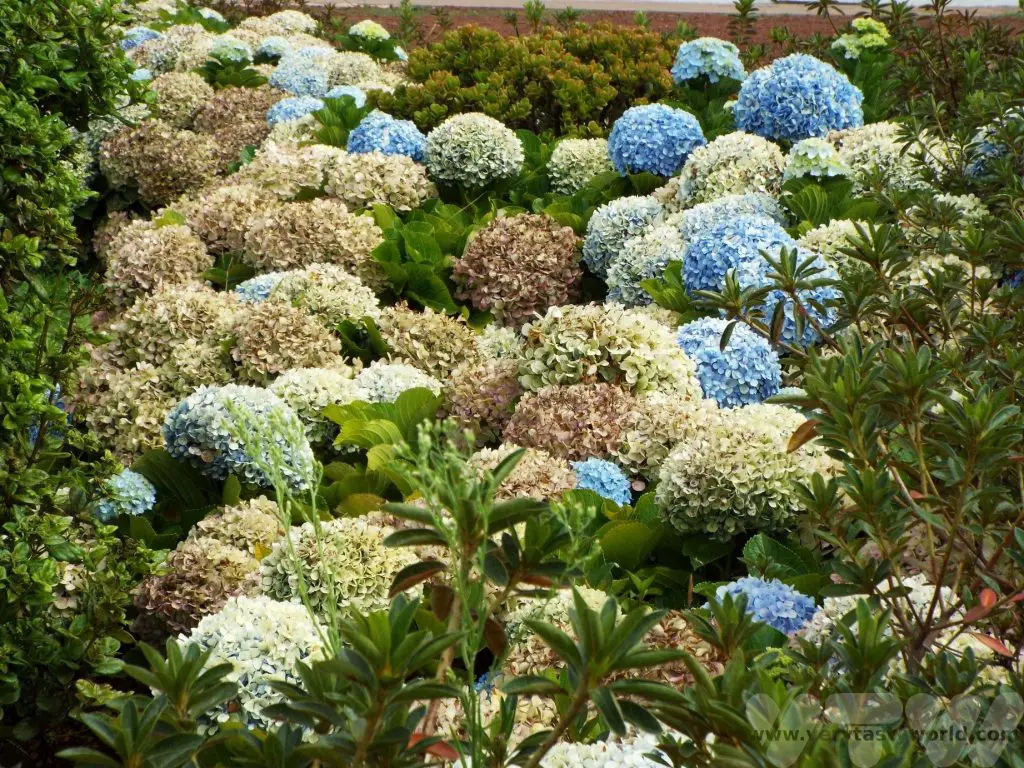
There are various cheese shops in Ponta Delgada – King of Cheese and Prince of Cheese – they aren’t modest about the quality of the product!
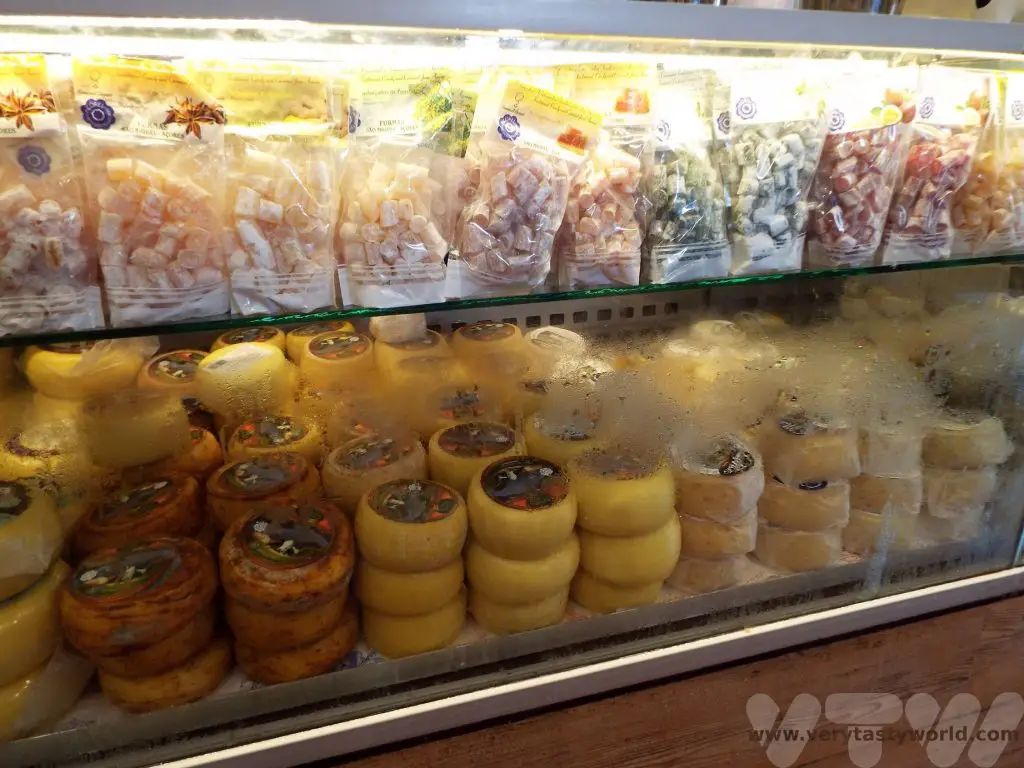
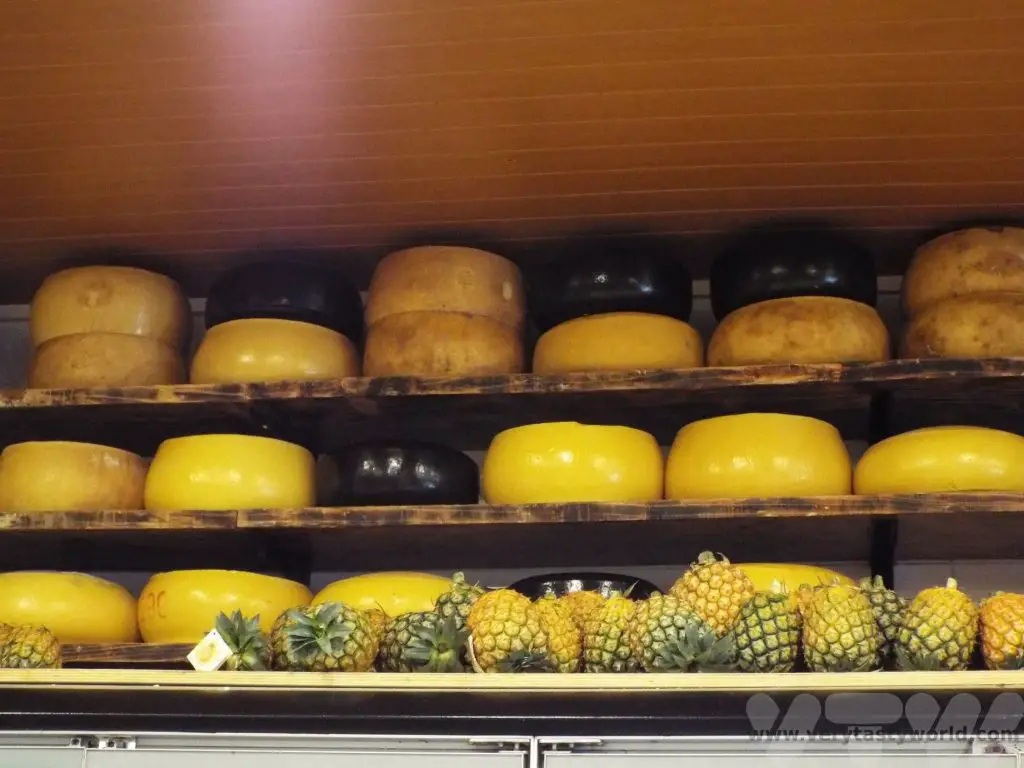
It’s fun visiting the shops – you can let them know about your cheesy preferences and they will recommend particular flavours and offer you a sample. We were keen to bring some cheese home and they were able to vacuum pack some very large slices for us so that we could store them in our hotel fridge and get them on the flight home. They survived very well and made sure that we weren’t going to run out of cheese for several weeks.
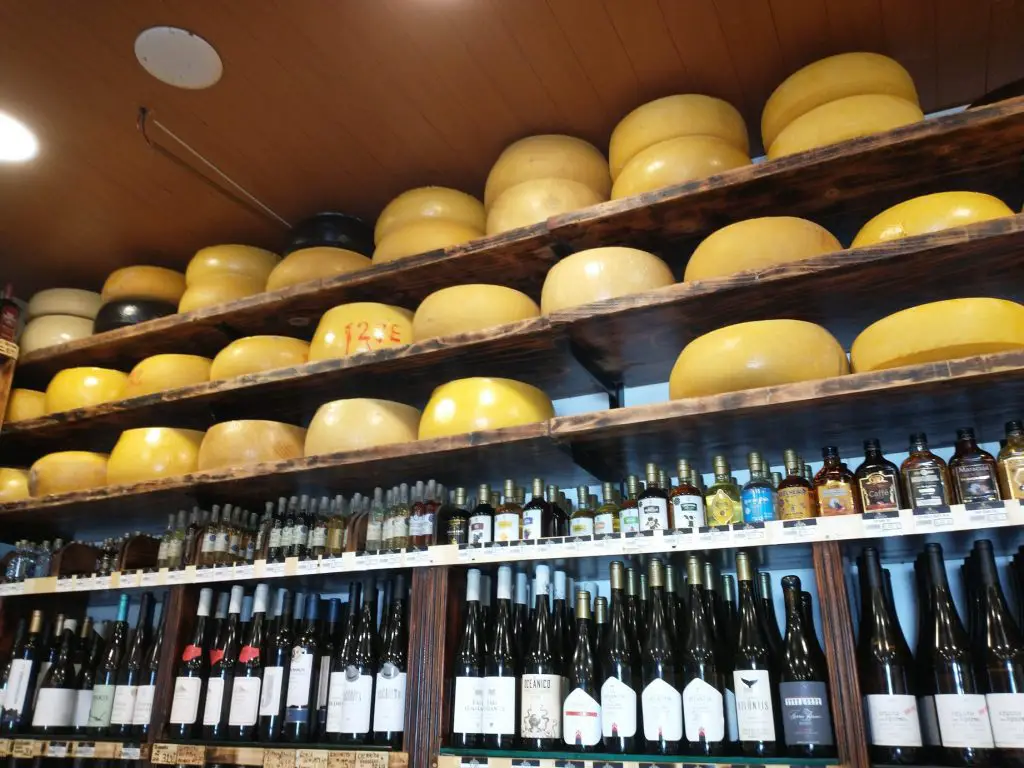
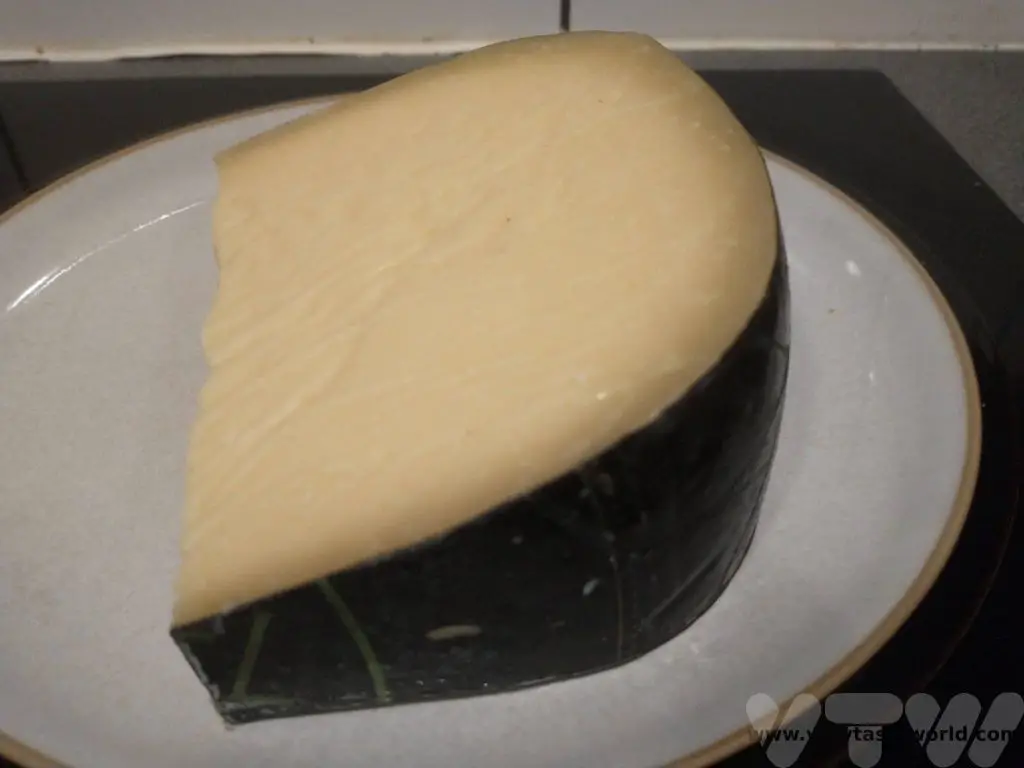
Sao Michel has a black rind and is the premier cheese of the island we were staying on. It’s a hard, very mature cheese with a lovely sharp flavour.
Sao Jorge cheese is produced on the Azorean island of the same name. It is a semi-hard cheese made from unpasteurised milk. It is milder than the other cheeses, with a nutty flavour
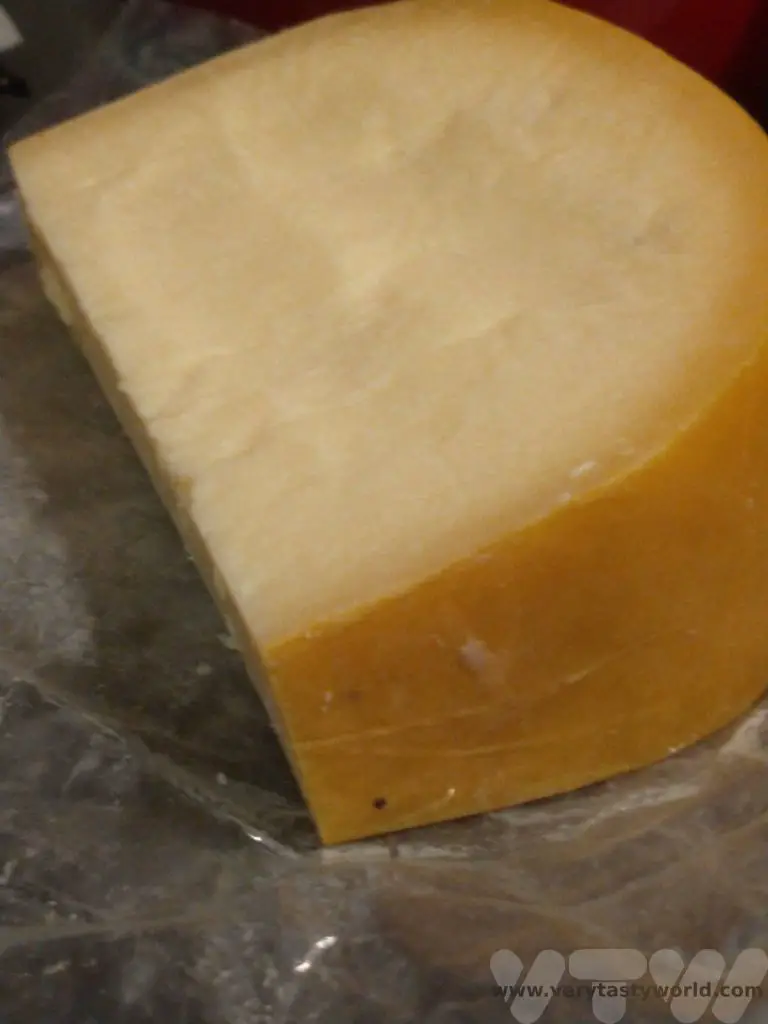
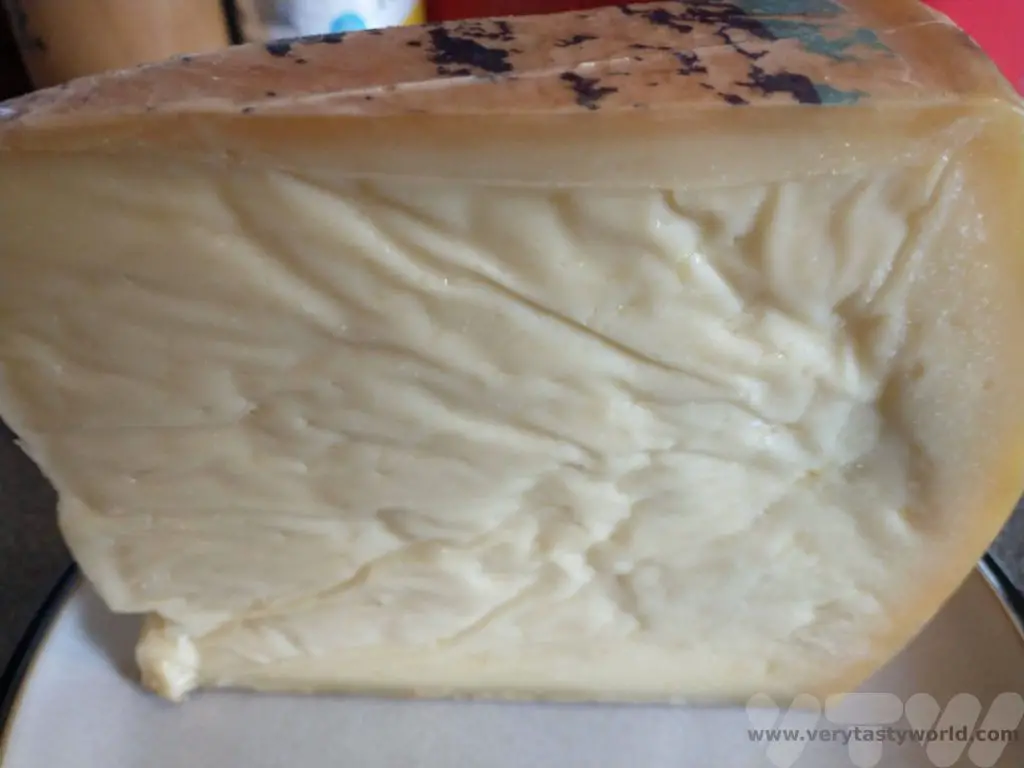
Vaquinha is from the island of Terceira. This one has a surprising initial creaminess for a hard cheese but this eventually flakes slightly. It is very mature, is almost spicy and has a real kick to the flavour!
Cheese is often provided as an appetiser at restaurants but this isn’t matured cheese, it is queijo fresco. It doesn’t have the fullest of flavour, in fact it’s pretty bland, so it is served with pimenta da terra (red pepper paste) which gives it a real pzazz, and it’s eaten with fresh bread. We were able to bring back a bottle of pimento de terra home with us.
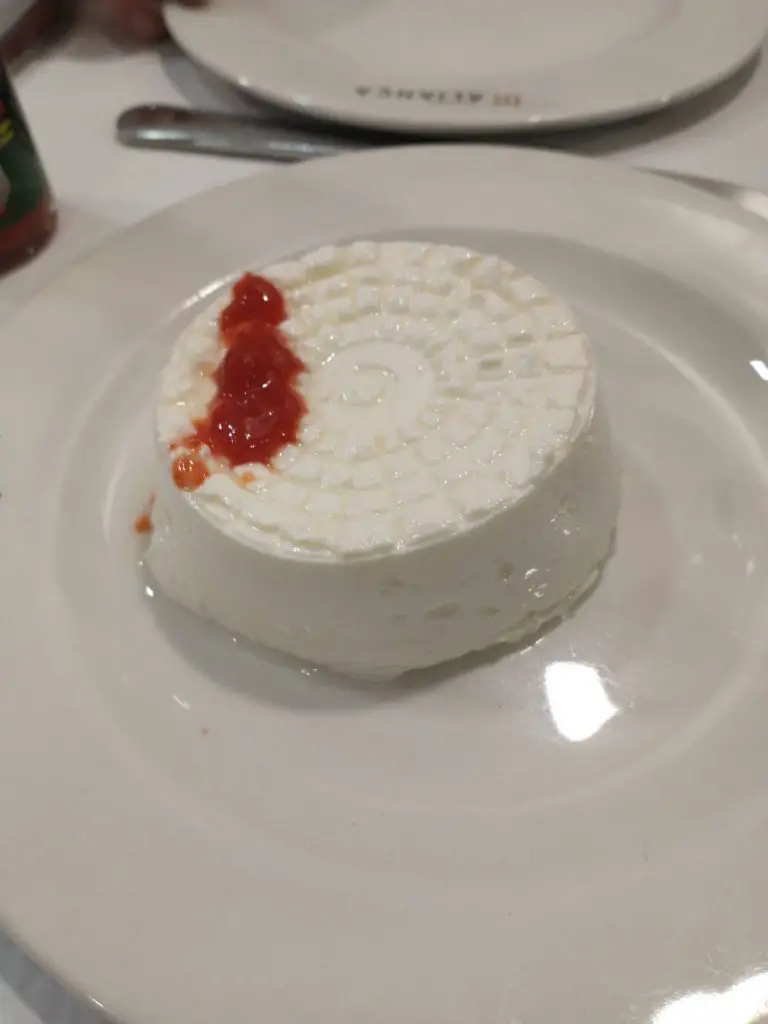
What Goes Well with Cheese? Pineapple of Course!
There is a pineapple plantation, located just outside Ponta Delgada, easily within walking distance of the city centre. You can visit the greenhouses and see the pineapples growing.
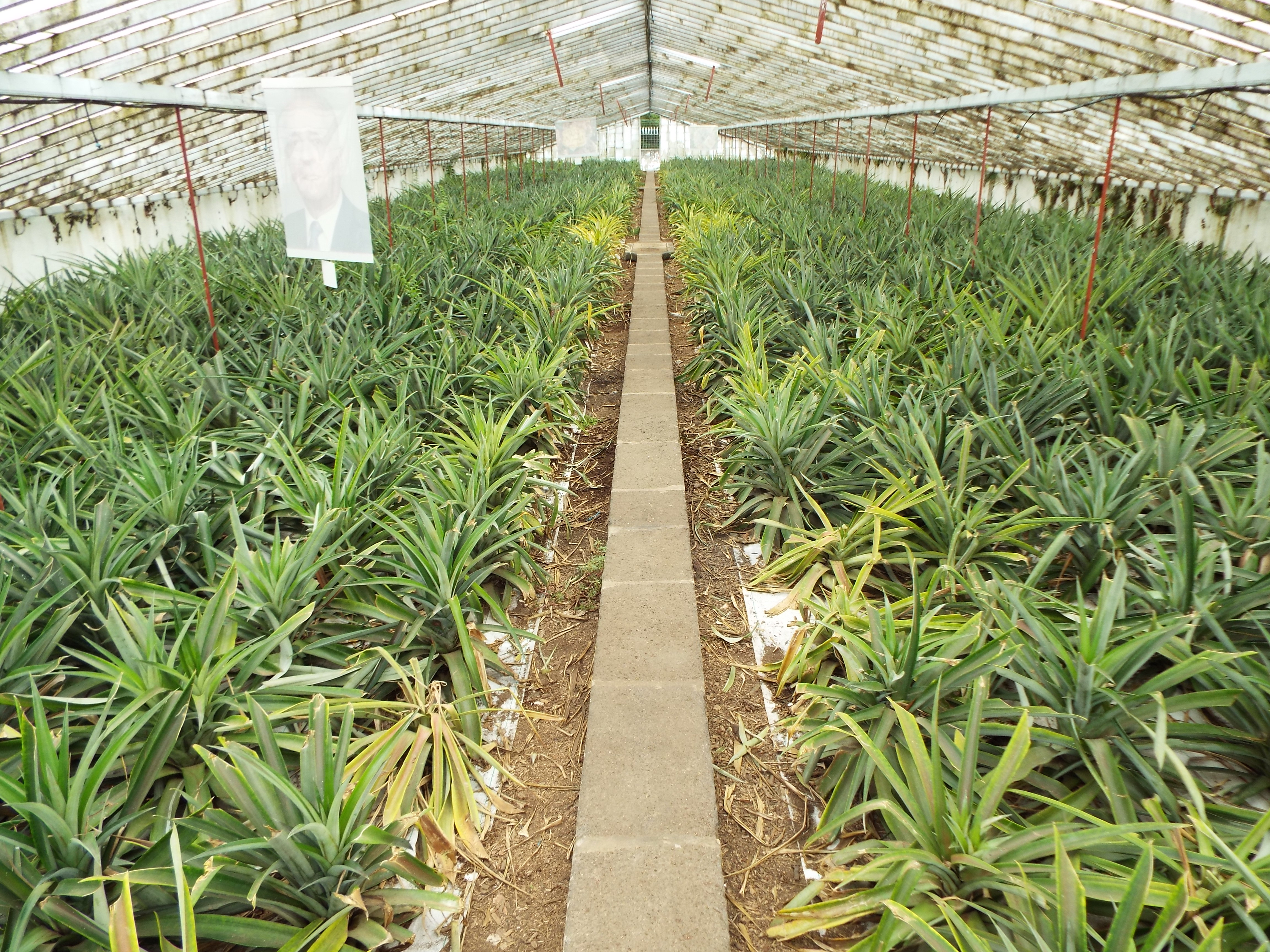
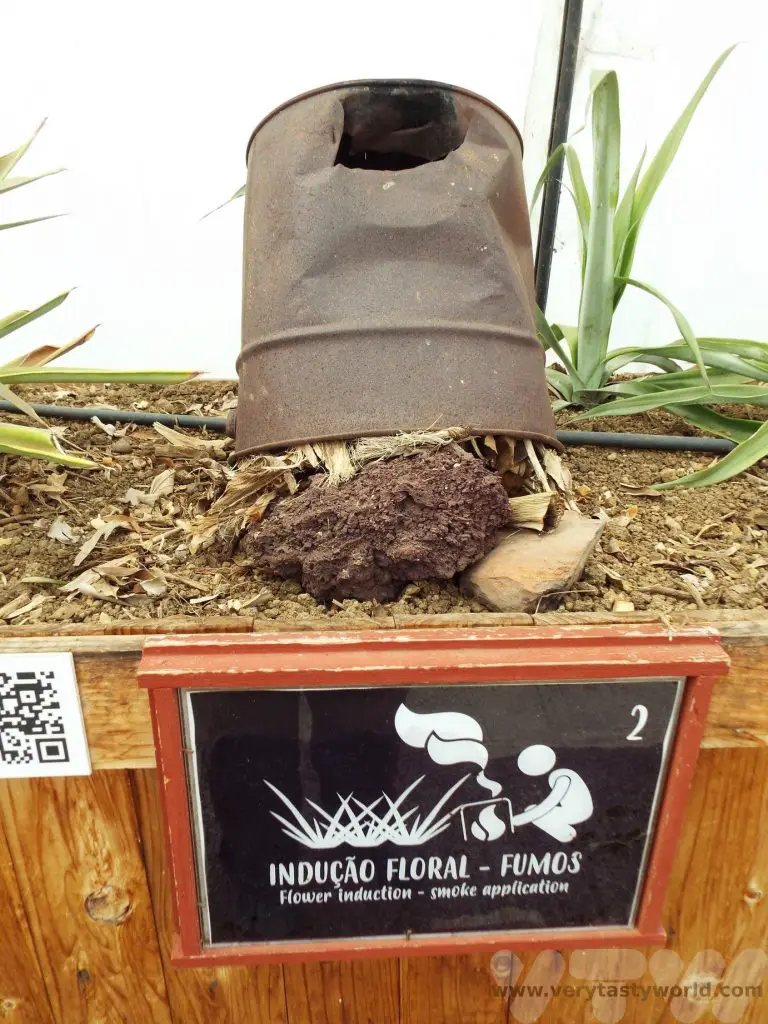
There are also some displays and videos which show the process for growing these fruit. It’s interesting that they use a smoking process to trigger the flowering of the plant.
And there’s a café on site which offers a complimentary shot of pineapple liqueur and a teeny piece of toast with pineapple jam.
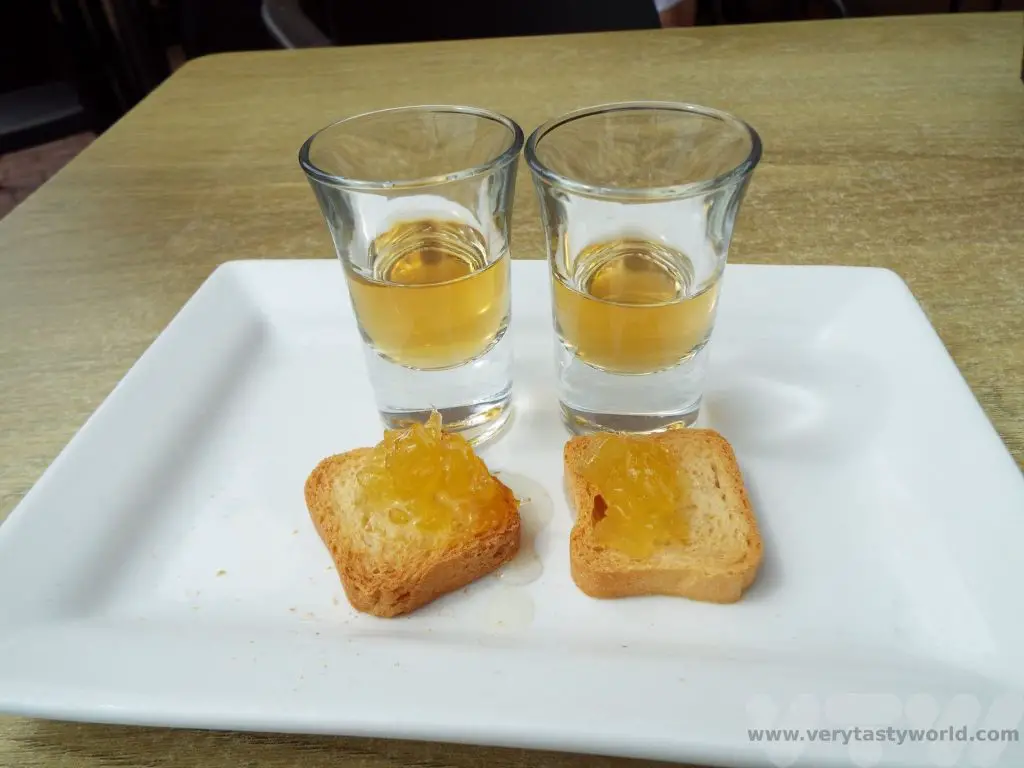
And, as we hadn’t had elevenses or lunch, we thought it would be rude not to enjoy a pineapple gelato, washed down with a caipirinha, a delicious cocktail made with crushed pineapple, lime and rum.
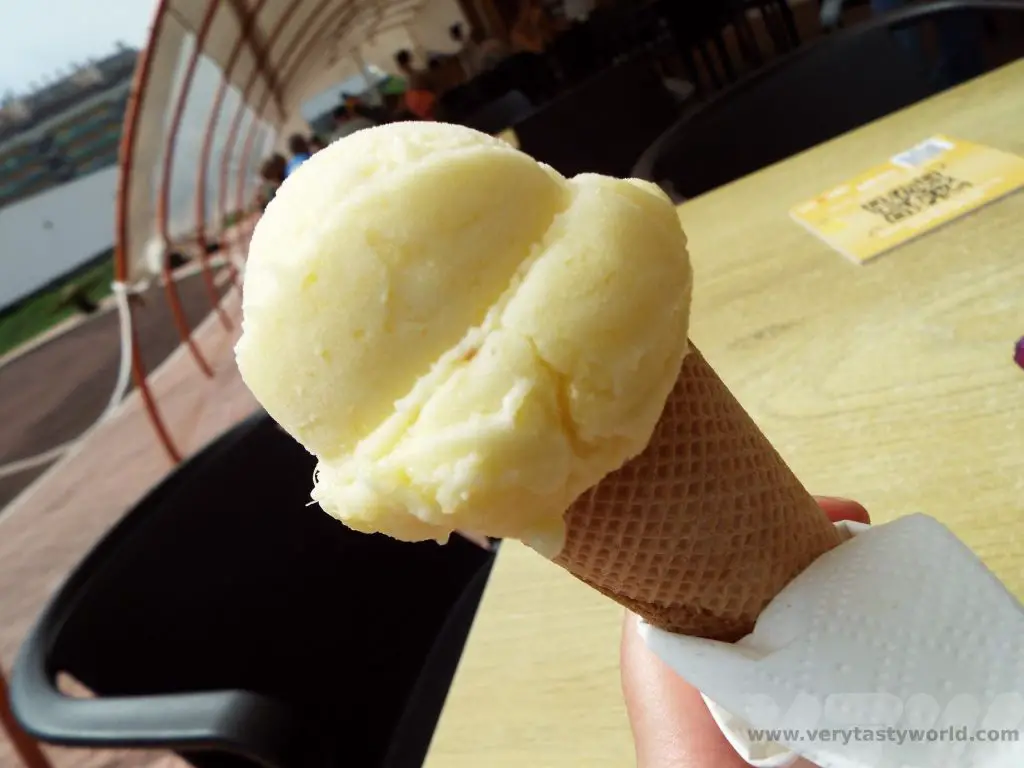
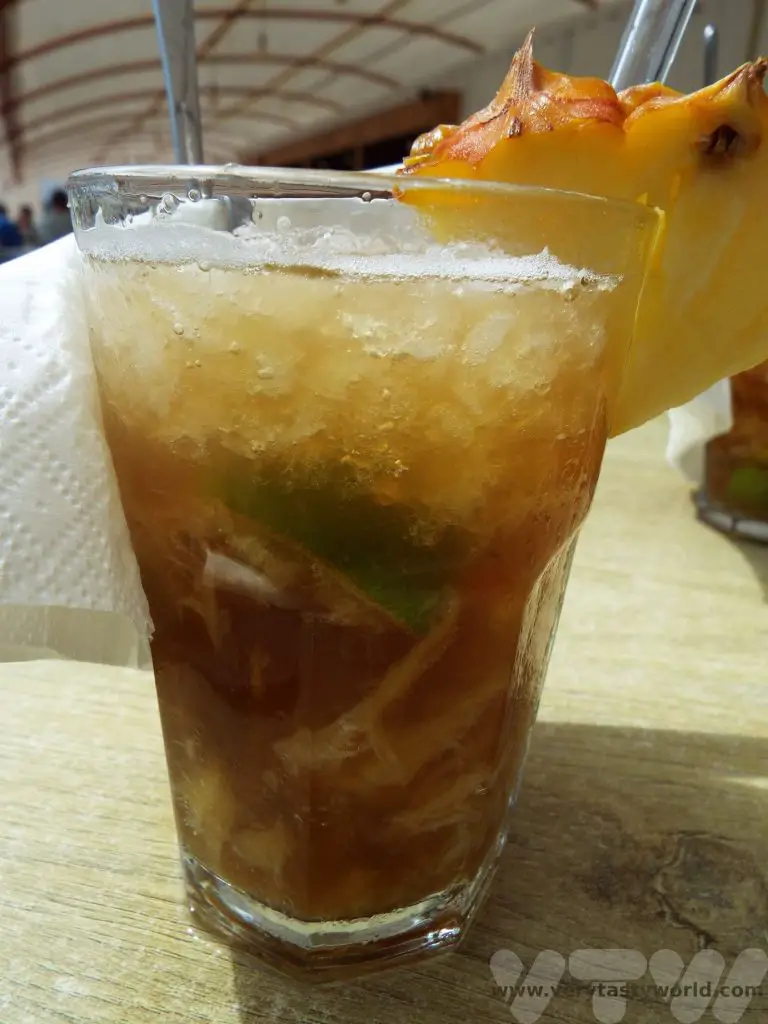
Everything Stops For Tea
The Azores also have a tea plantation, located on the north coast of Sao Miguel. The Gorreana Tea Factory was established in 1883 and is one of only two tea plantations in Europe. It’s possible to visit the factory and do a self guided tour.
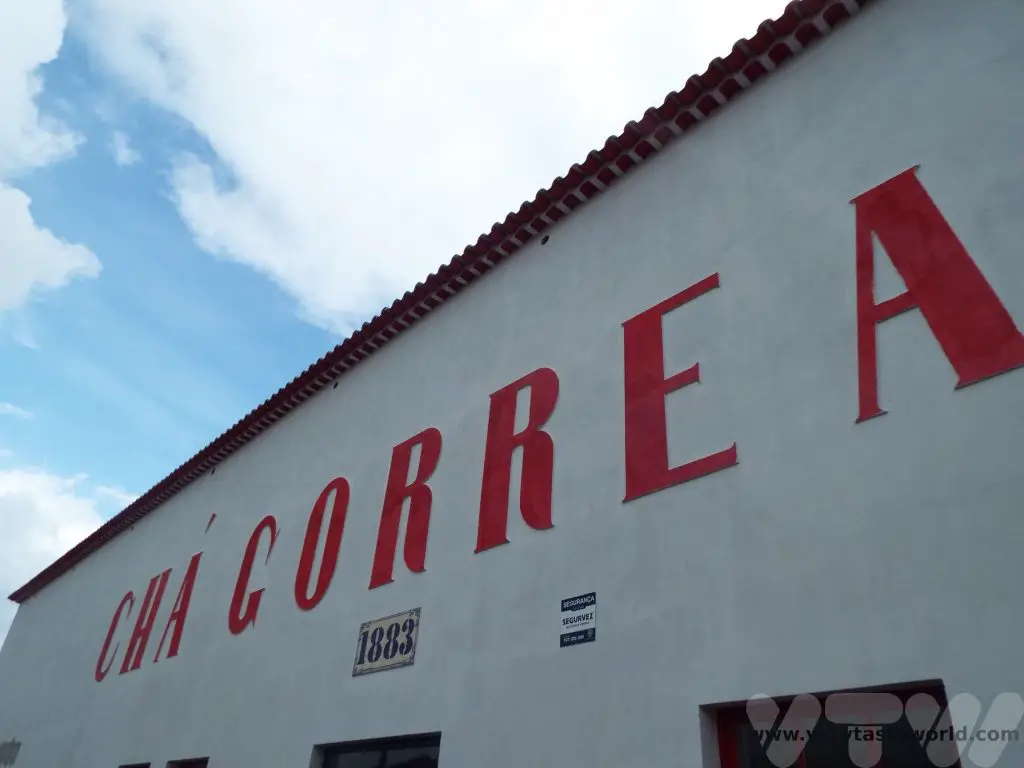
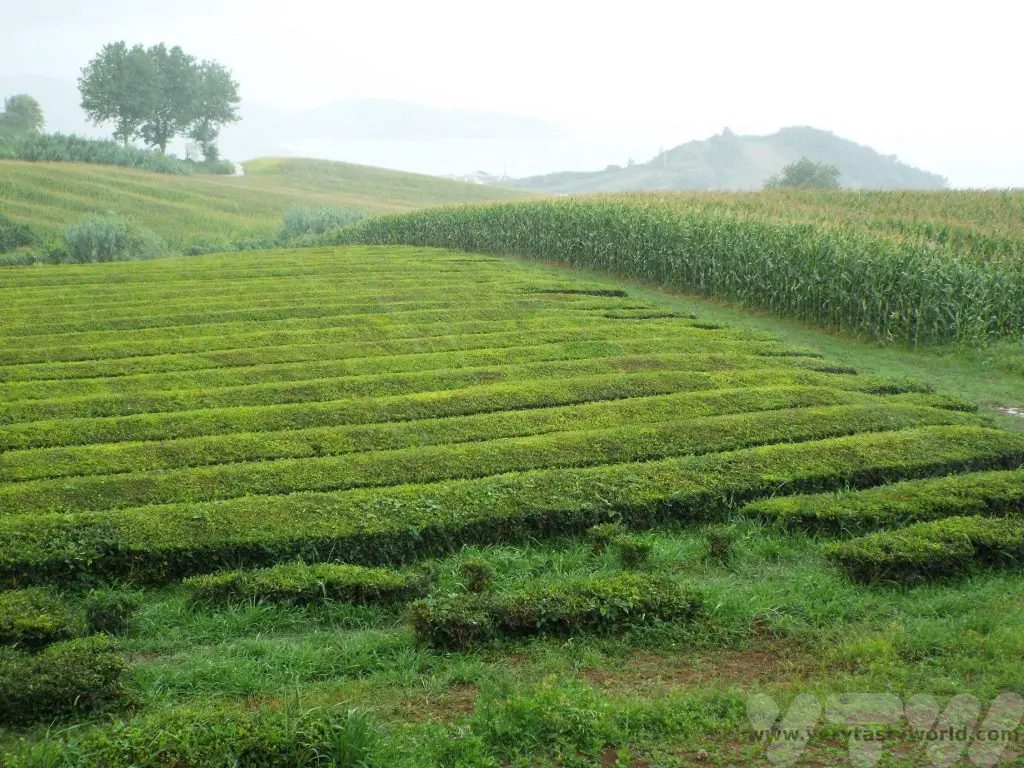
There are infographics showing how the tea is processed and you can enjoy a cup of their tea as well as visit the inevitable shop and café. They produce both green and black tea. Both taste good.
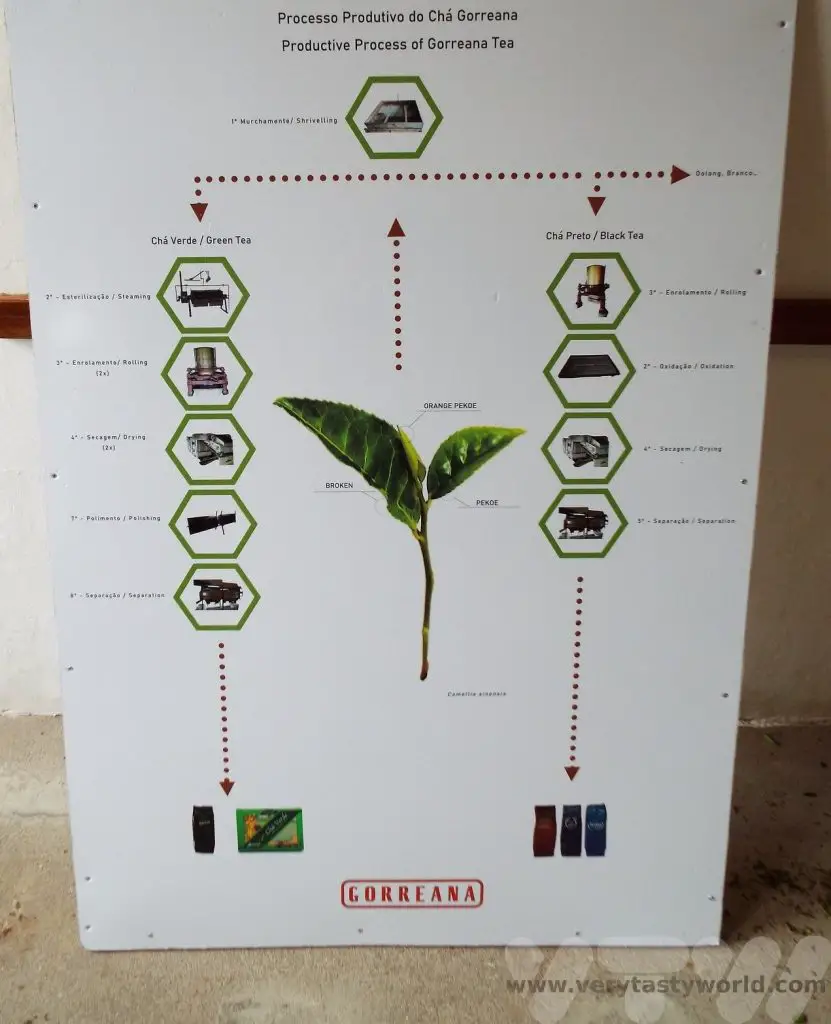
It’s lovely to be able to see the original machinery in action.
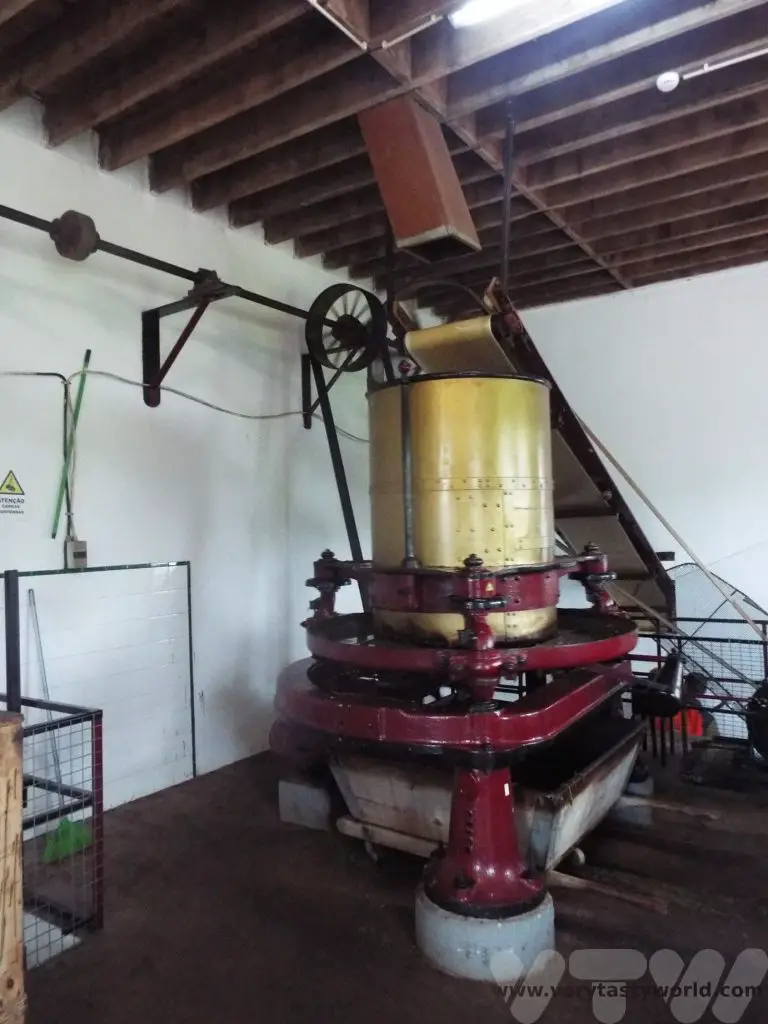
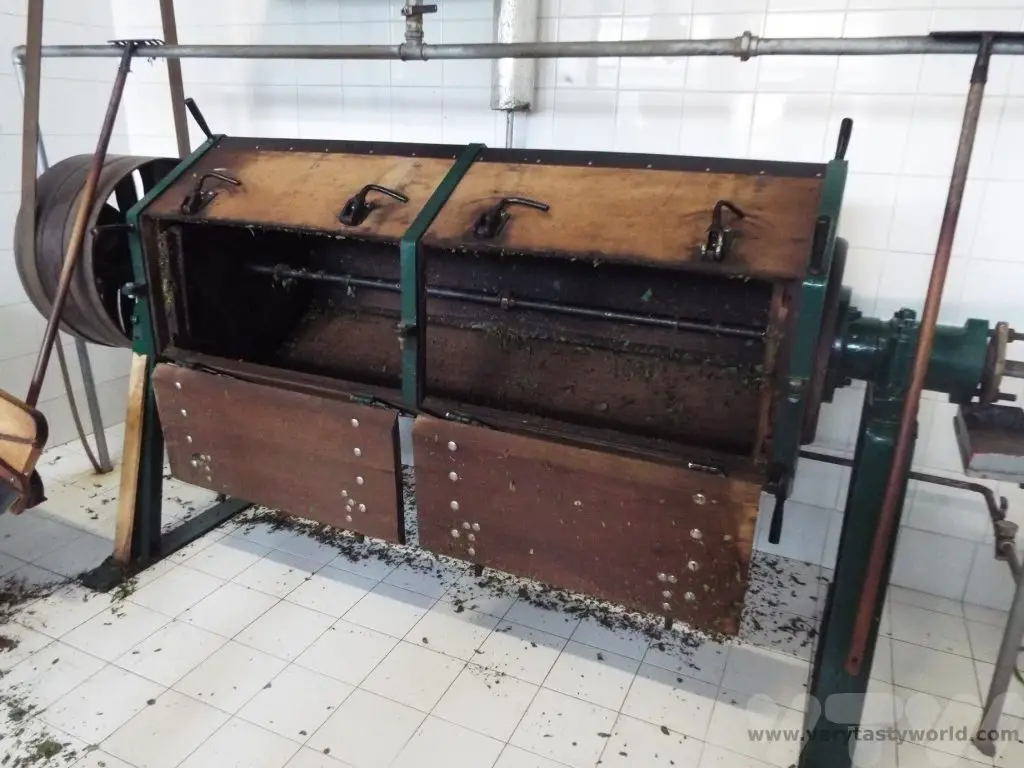
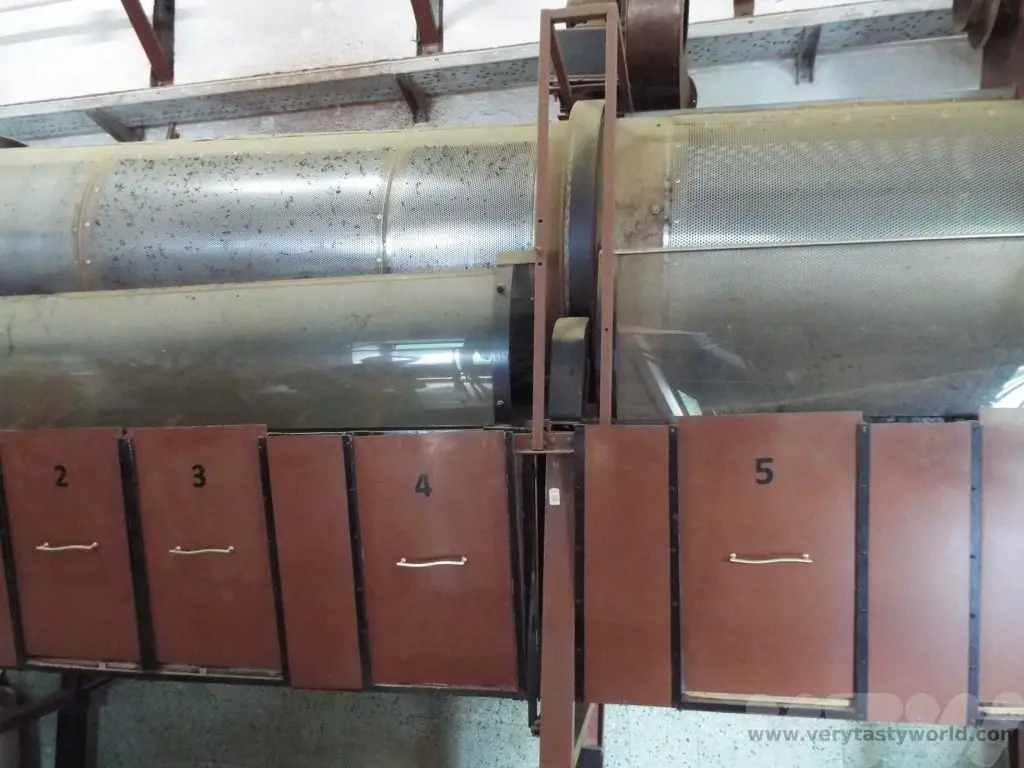
Volcanic Cozido das Furnas
The Azores are volcanic islands and some areas are still very geologically active. We enjoyed a day trip to Furnas towards the eastern end of the island.
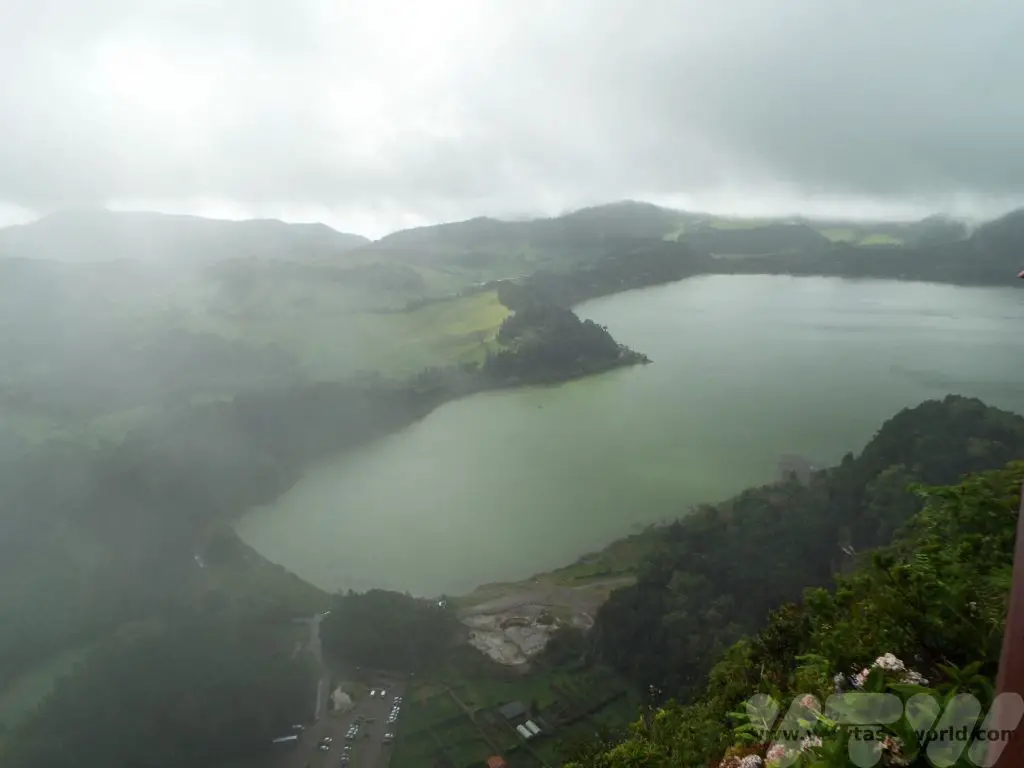
The local town has fumeroles which regularly steam, squirt and belch hot water. The area has a distinct whiff of rotten eggs due to the sulphur. Some of the water has a yellow colour (see the photo below on the right). This is not geological but local people put in bags of corn on the cob to cook.
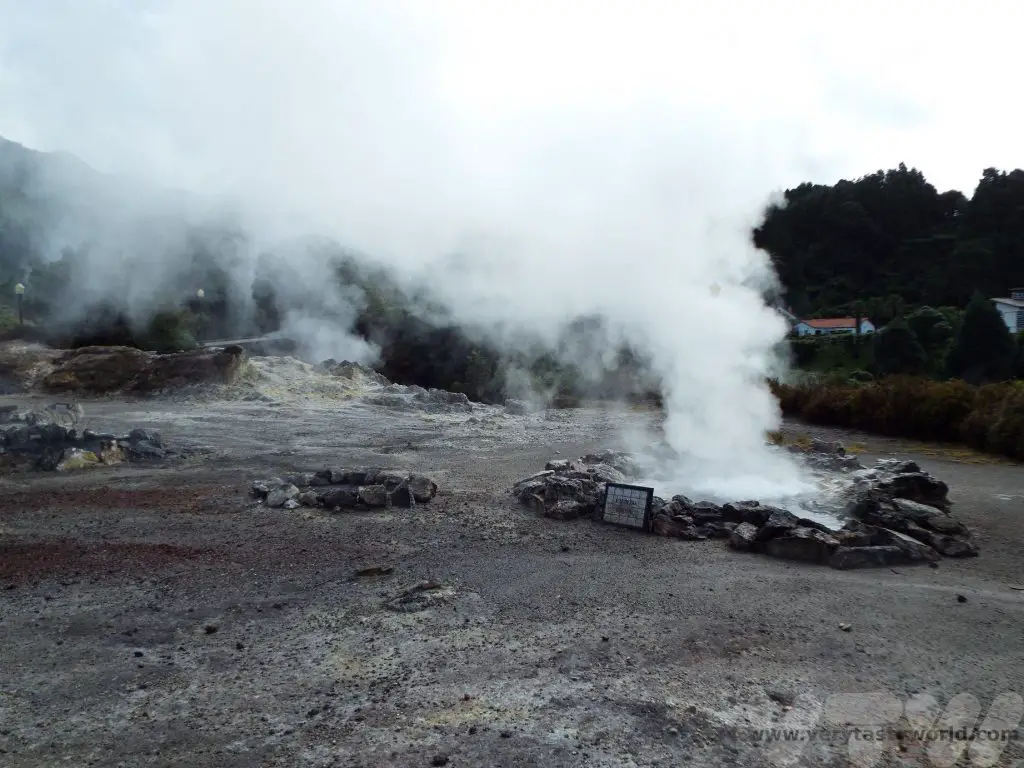
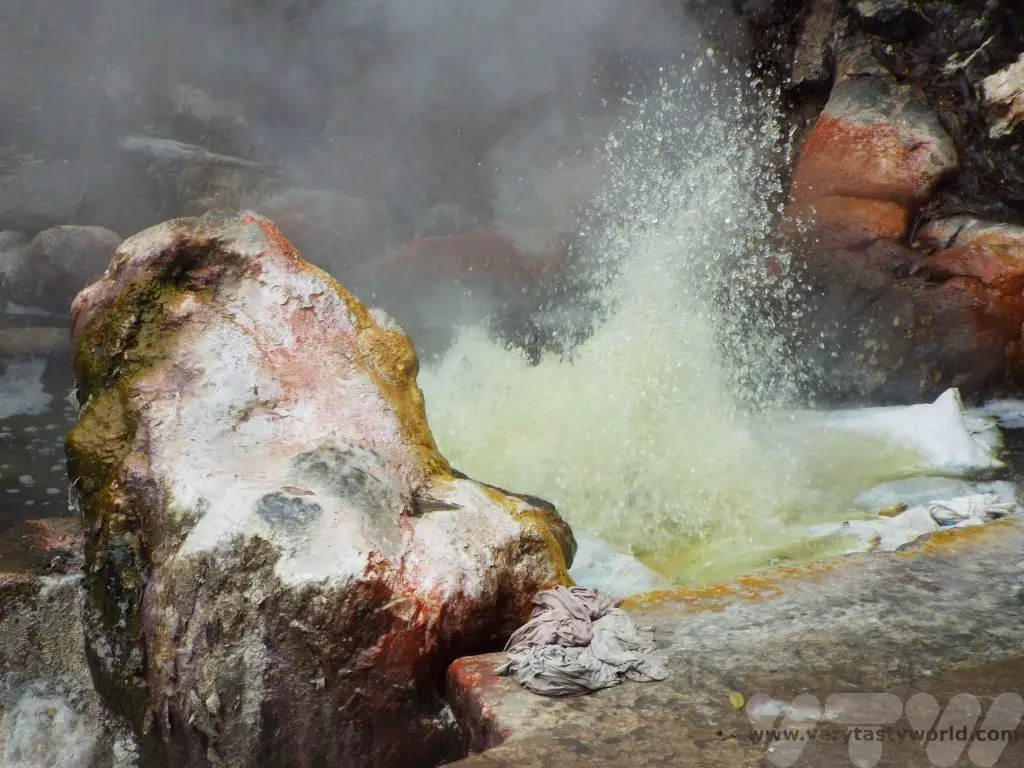
Taro plants, known as elephant ears, grow in the warm water. These have bulbous corms (like a tuber) which are edible and similar to sweet potatoes.
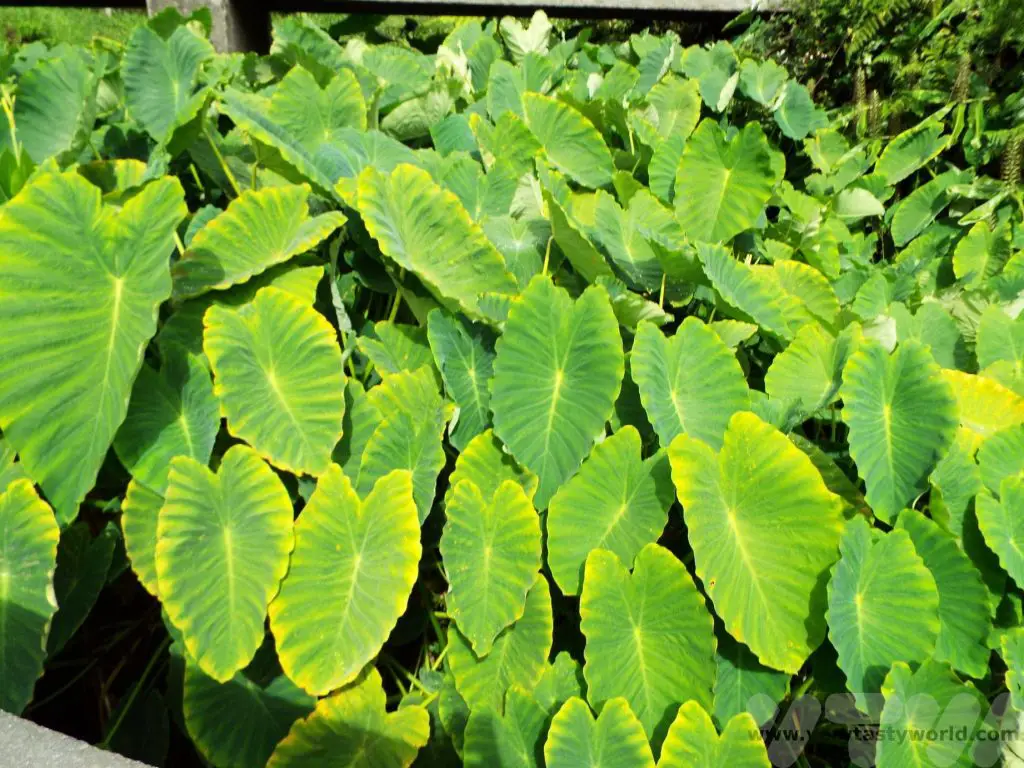
There are also some drinking fountains where you can taste the local water – it tastes very minerally and is an acquired taste for some. It’s also odd drinking warm water. These fountains are located just metres apart but the flavour of the water is surprisingly different!
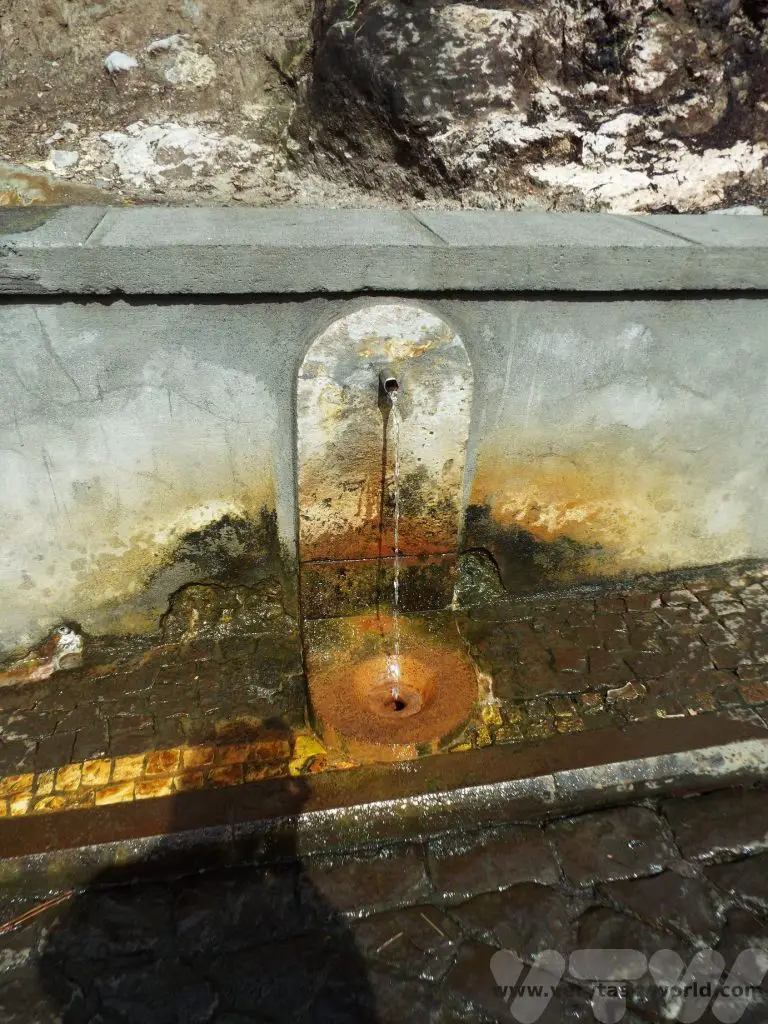
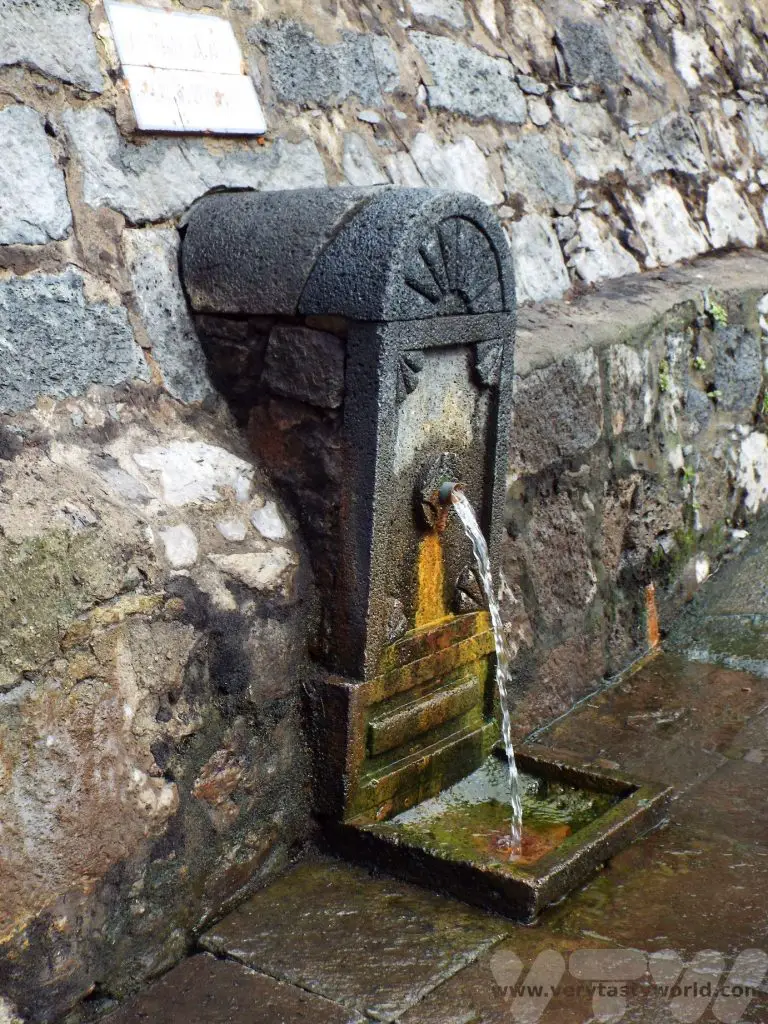
Most trips take you to a viewing point to see Furnas lake, and then you descend to the lake itself. You’re not allowed to swim in the lake but it’s possible to go boating on it. And walking around the area reveals some more of the steaming landscape.
There are a number of fenced off areas containing mounds of soil with name tags. On closer inspection these tags bear the names of various restaurants. Lunch!
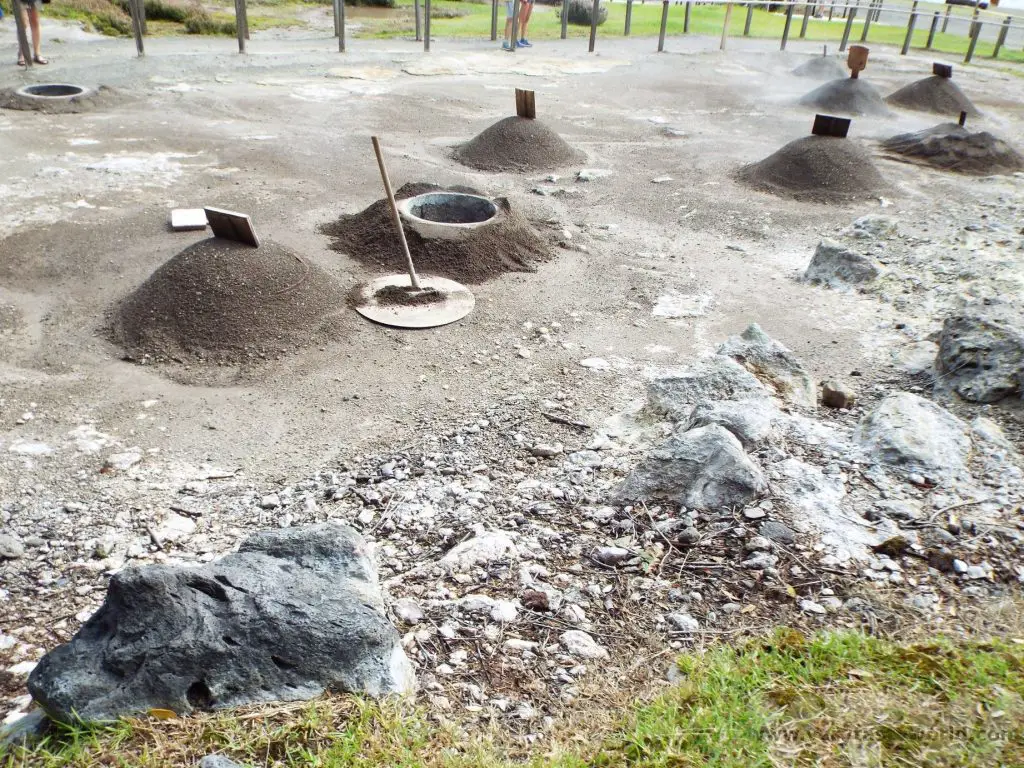
Every morning the restaurants prepare meat and vegetables and place them in a large pot. At 5am these pots are buried in the volcanic soil. Around six hours later a parade of vans arrive (and that’s the cue to grab a place by the fence if you want to take photos) and each restaurant owner will dig out their pots (or invite a hapless tourist to help) from the perfect slow cooker which has been cooking the food using free energy from the ground. It’s a brilliant system. And the site isn’t restricted to restaurants. Local people can hire a hole and bring their own food for a picnic/meal later in the day.
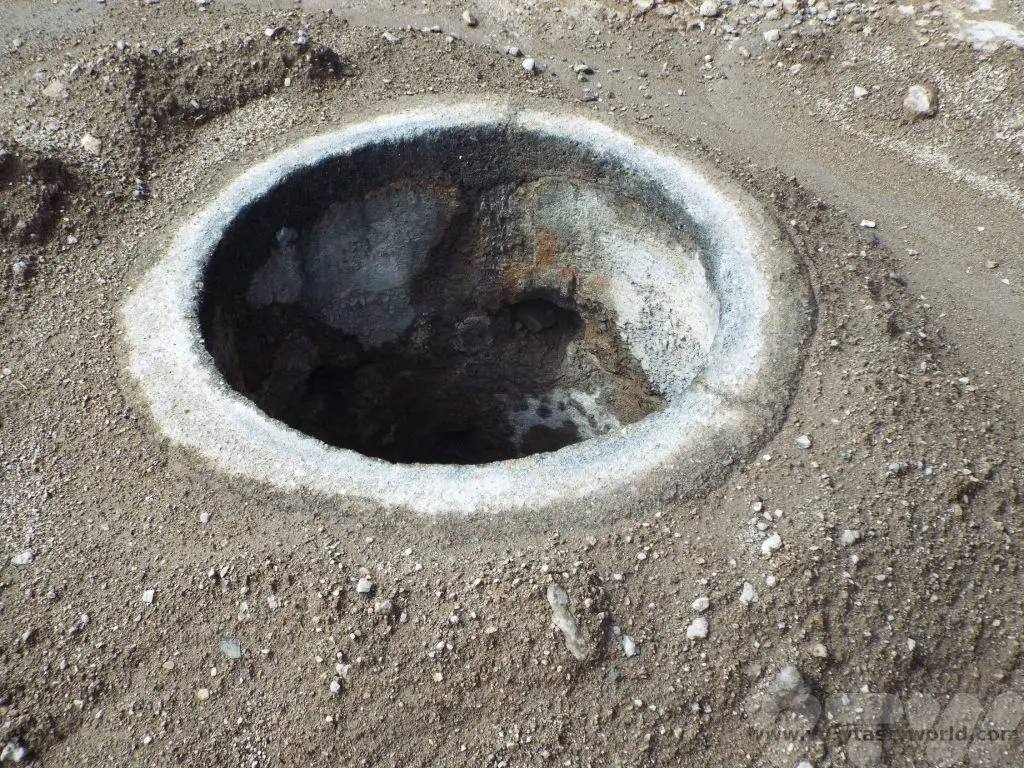
Back in town, the food is then served in the respective restaurants. A platter of meats and a platter of vegetables. (Vegetarians/vegans – the meat and veg will have been cooked together so if you want a veggie cozido, ask in advance and an unadulterated pot of pure veg can be supplied.)
The meats comprised pork, sausage, chicken, beef and blood sausage (Morcela) – all so soft and tender it could be cut with a spoon. It melted in the mouth.
The vegetables were potatoes, carrots, cabbage (which was served in large chunks so that it didn’t disintegrate during the cooking process) and the elephant ear yams.
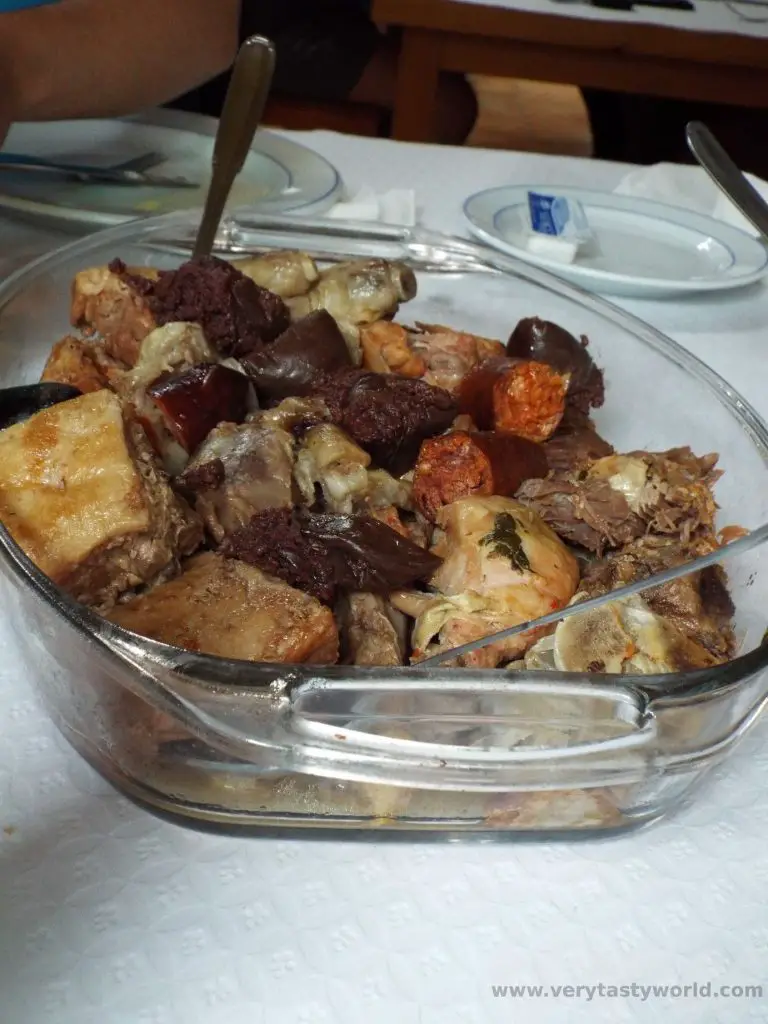
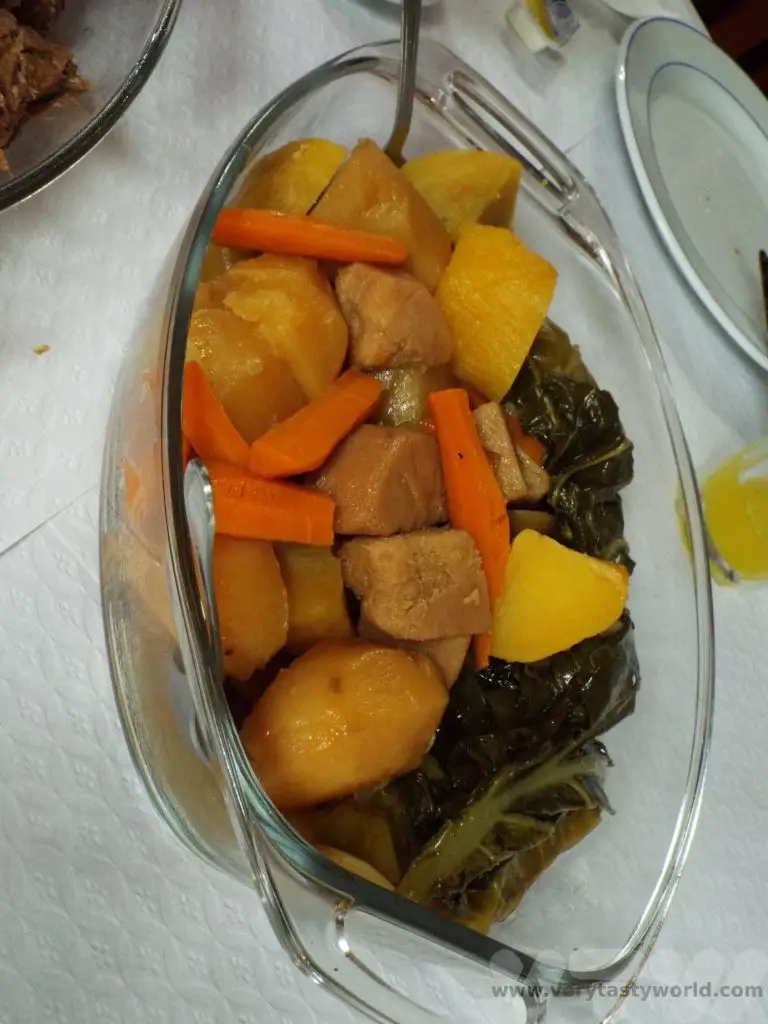
Cozido doesn’t have any additional flavours added – the food is served just as it comes out of the pot. But while it doesn’t offer complexity, the juices of the meat provide lots of flavour and you really get to enjoy the taste of the meat and vegetables. And it really is a feast!
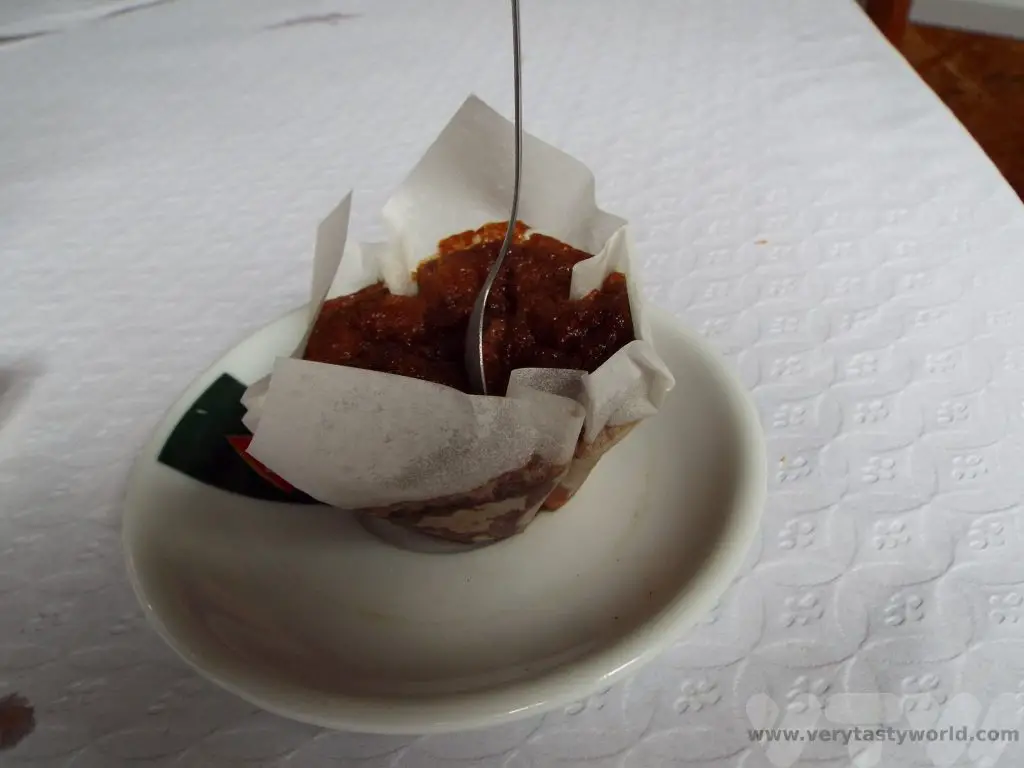
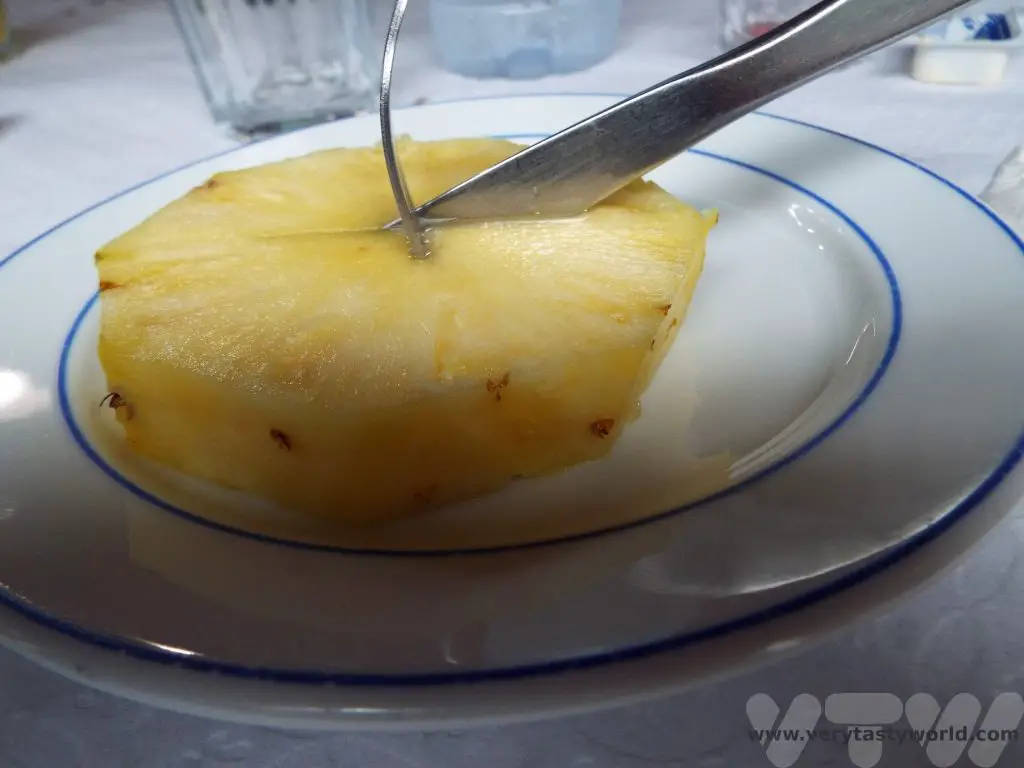
All washed down with local wine and a nice honey cake (if still hungry) or a slice of delicious local pineapple (if that’s all you can manage) for dessert, it filled us up for the rest of the day.
A Little Bit of Foraging
While the hydrangeas add glorious hues to the countryside and are very much welcomed, Sao Miguel has a more invasive plant – the yellow wild ginger – which is far less popular. It spreads quickly and does take over the landscape very quickly.
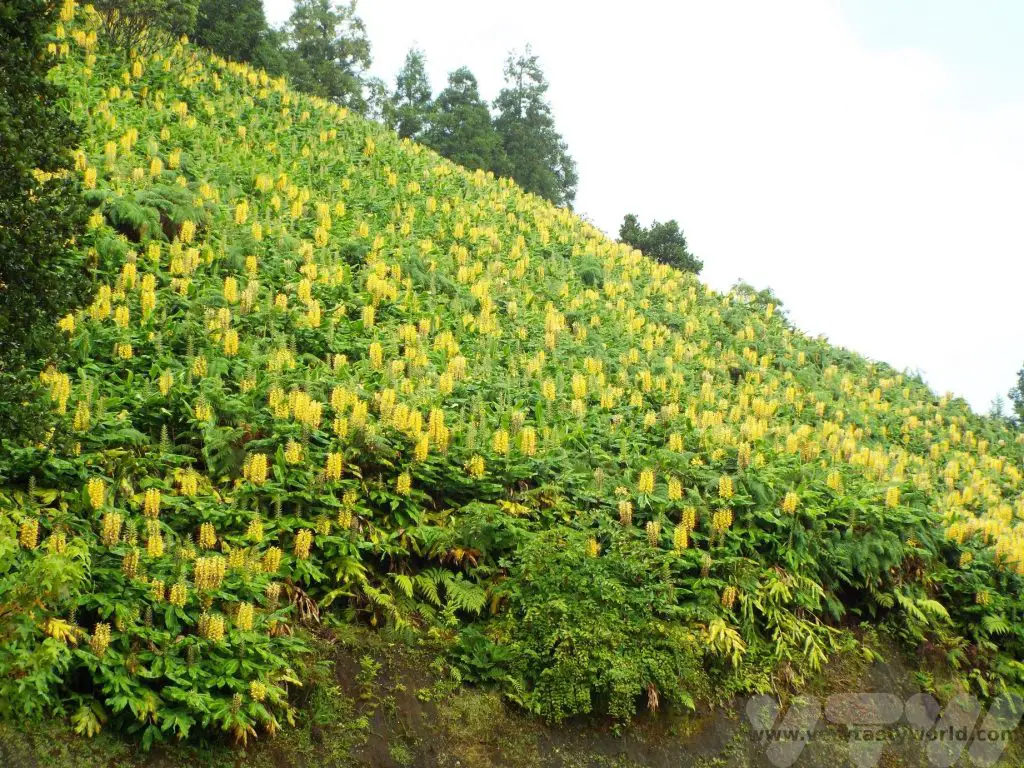
The local university is looking into uses for the plant and it’s looking hopeful that the fibrous leaves may be a useful material to replace use of some plastics in future. It is a good pollinator and inside the long yellow flowers is a drop of nectar. You can pick the flower, bite off the end – by a couple of centimetres – and spit that out. Then suck on the flower and you can taste the sweetness.
Dining on San Miguel – Ponta Delgada
First of all, if you want to dine at a particular restaurant, book! We visited at the end of the busy season and struggled to get a table at the best restaurants for an evening meal. At one of the restaurants we pretty much bagged the last table. We arrived five minutes before opening and people were already queuing for a walk-in but were politely turned away. Another option is to visit the restaurants at lunchtime when it should be easier to get a table.
Our favourites were Gastronomo and Michel. Both are deservedly popular and offered foods of the Azores that were local specialities. We received a very warm welcome in each place.
Gastronomo, R. da Boa Nova
Their queijo fresco and pimenta da terra were freshly made (some restaurants provide you with the cheese on a plate and a bottle of sauce) and served on a ginger plant leaf (one of the uses for the invasive plant) accompanied by home-made bread, including a sweet bread (a bit like a brioche) which was a wonderful contrast to the cheese and chilli.
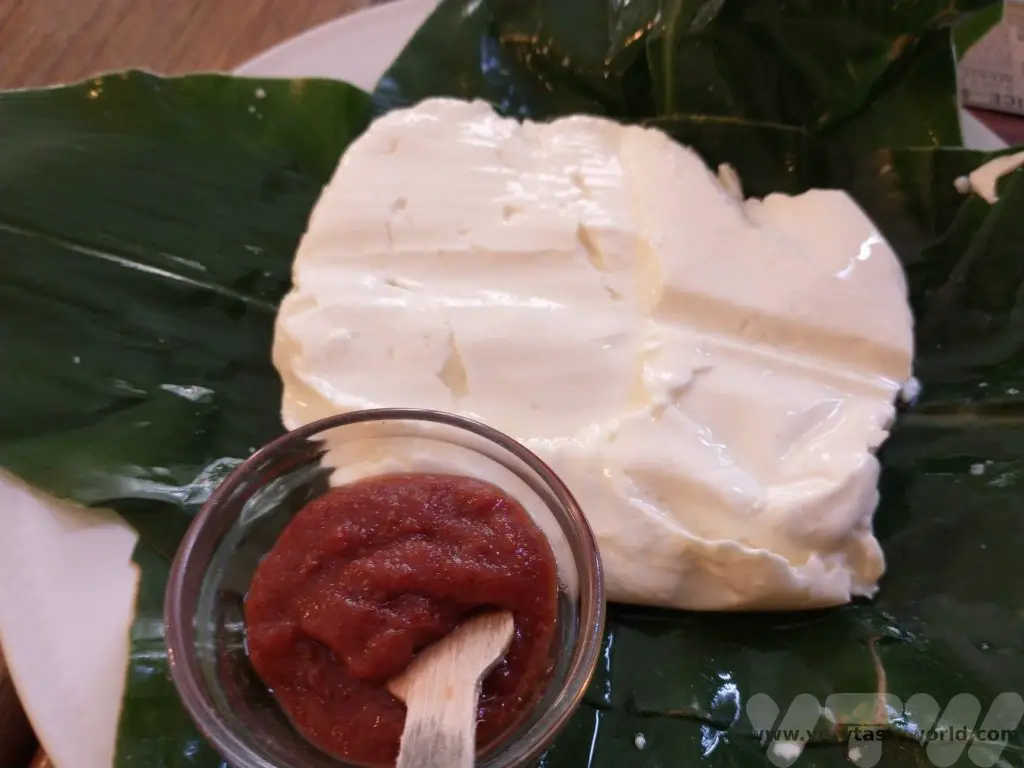
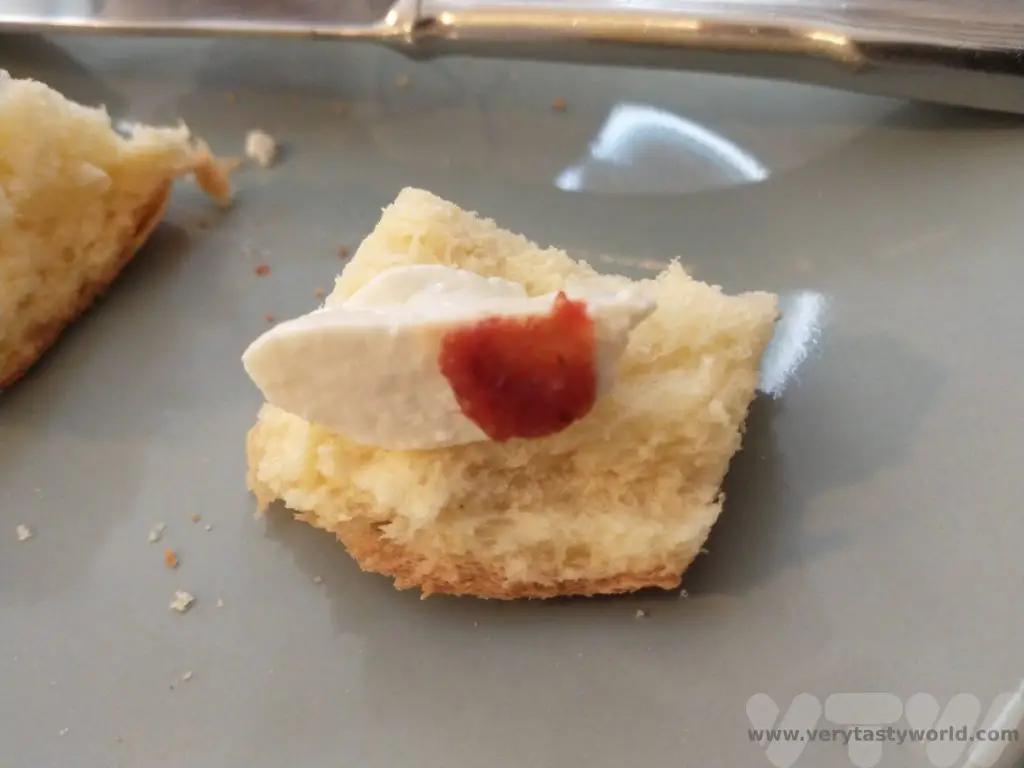
We shared a starter of black pudding and local pineapple which was an absolutely delicious combination of sweet and savoury flavours. The black pudding – a blood sausage – was one of the best we have eaten.
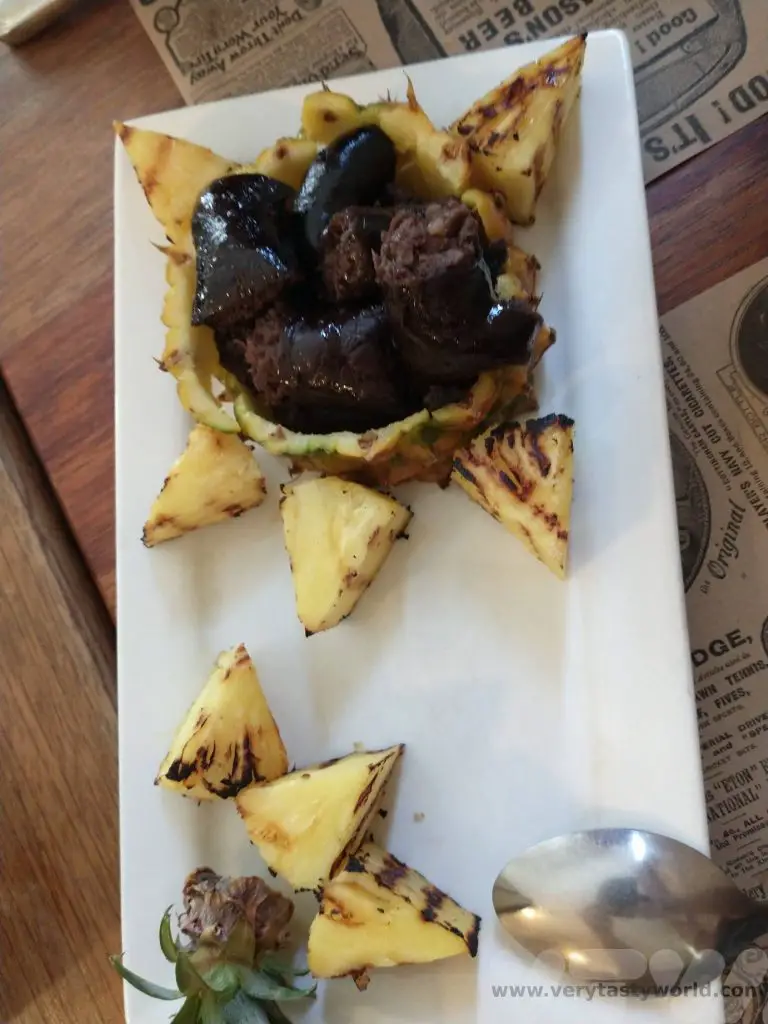
The Azoreans have a particular way of cooking steak. Bife steak with garlic and pimento and a fried egg.
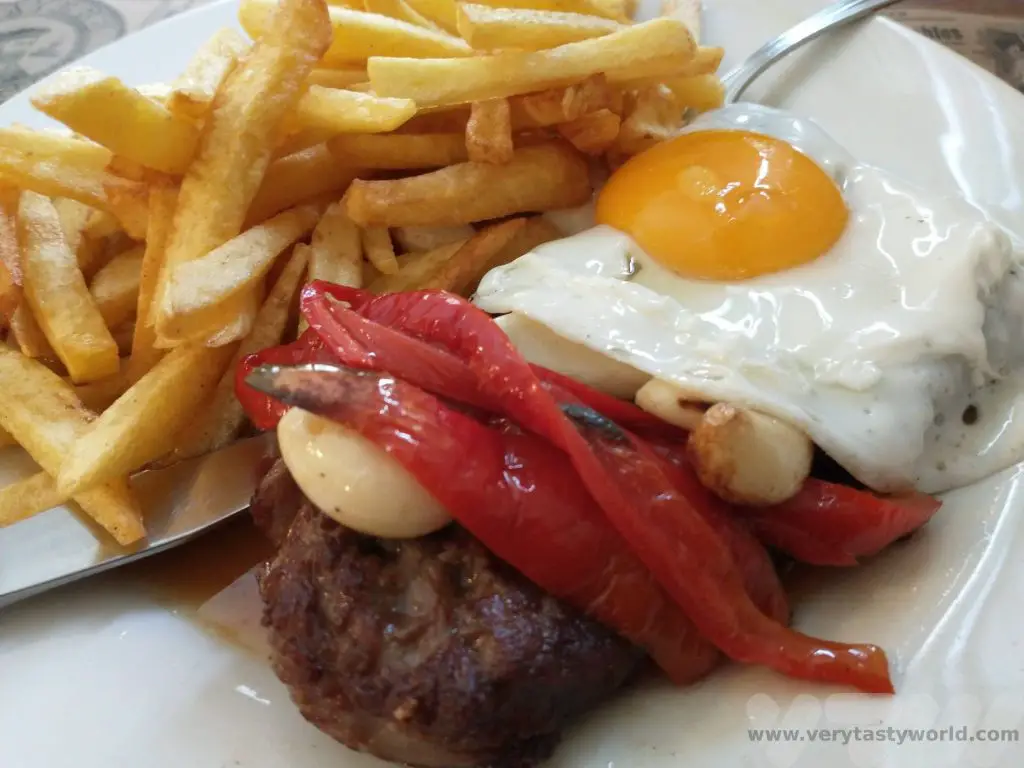
Bacalhau is not specifically Azorean but is a hugely well known Portuguese dish. It comprises salt cod, cooked with eggs and olives and served on fries.
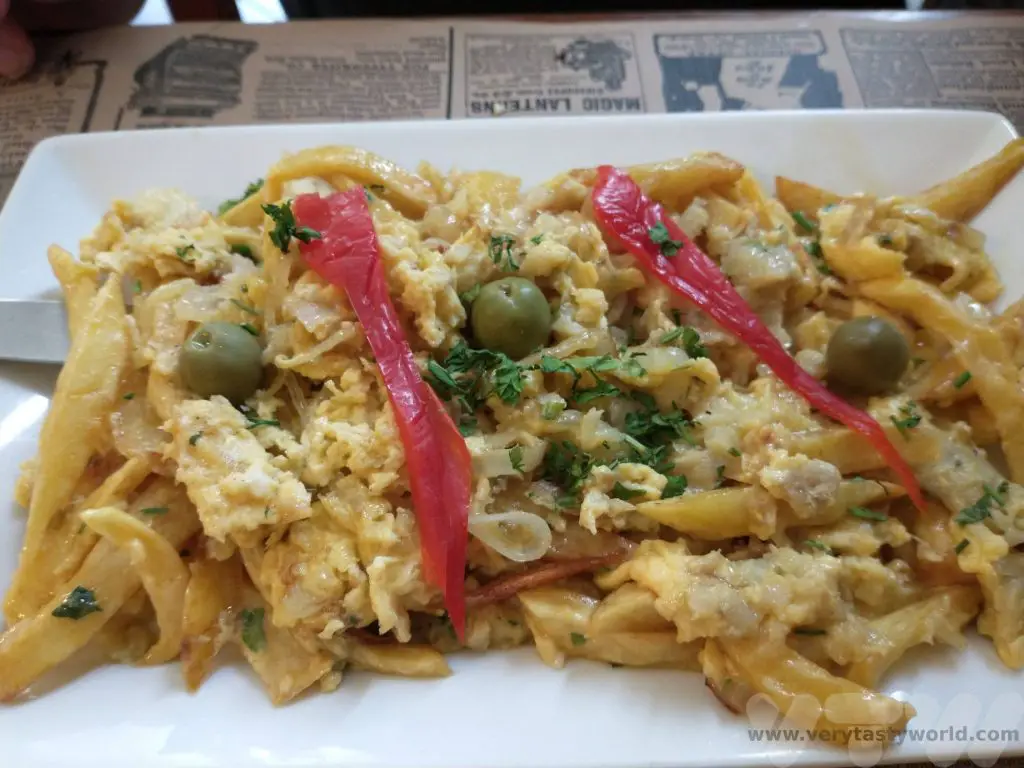
Michel, Rua Engº José Cordeiro Antiga da Calheta
We tried Azorean limpets and local shrimp to start with. Limpets are shellfish that are incredibly common all over Europe and, although we knew they were edible, had never seen them on a menu before. They have a tougher texture than a lot of shellfish but they were tasty.
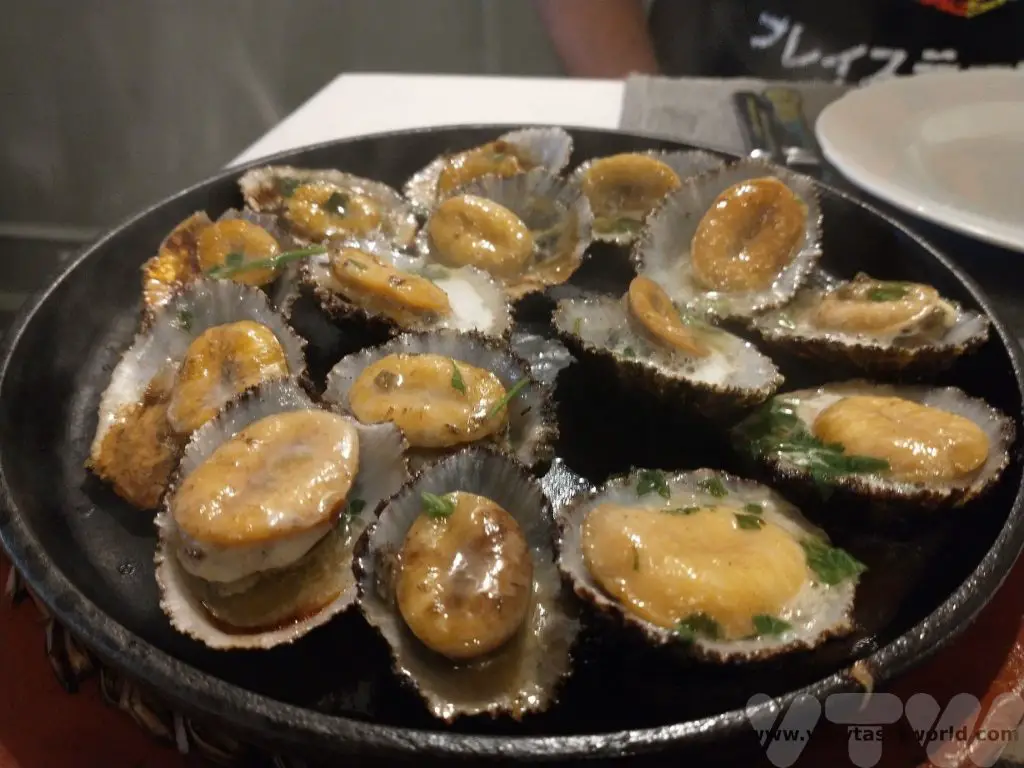
Pork and mashed yam (the elephant ears) and vegetables was utterly delicious.

As was the oven roast lamb.
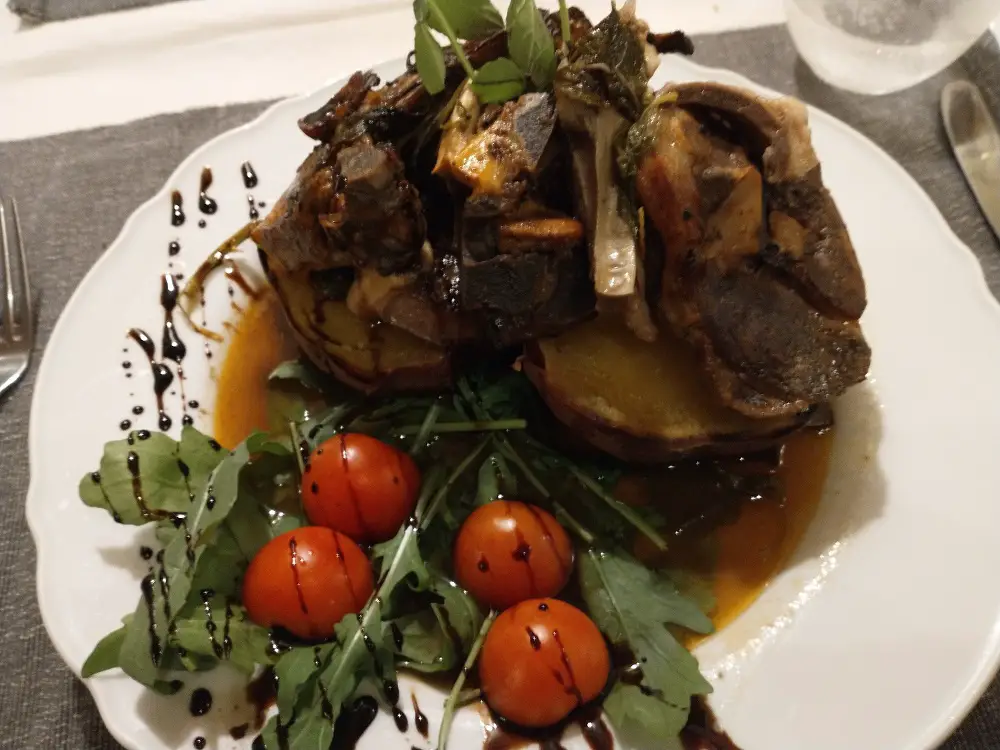

A Tasty Puebla Food Tour
Puebla is just a couple of hours away from Mexico City and is a complete contrast to that glorious, sprawling metropolis. It is a delightful city to visit and the historic centre is a UNESCO world heritage site. It is also a city of great deliciousness – the Puebla food scene is astonishingly diverse and exciting. After all, this is the city that claims to have invented mole poblano!
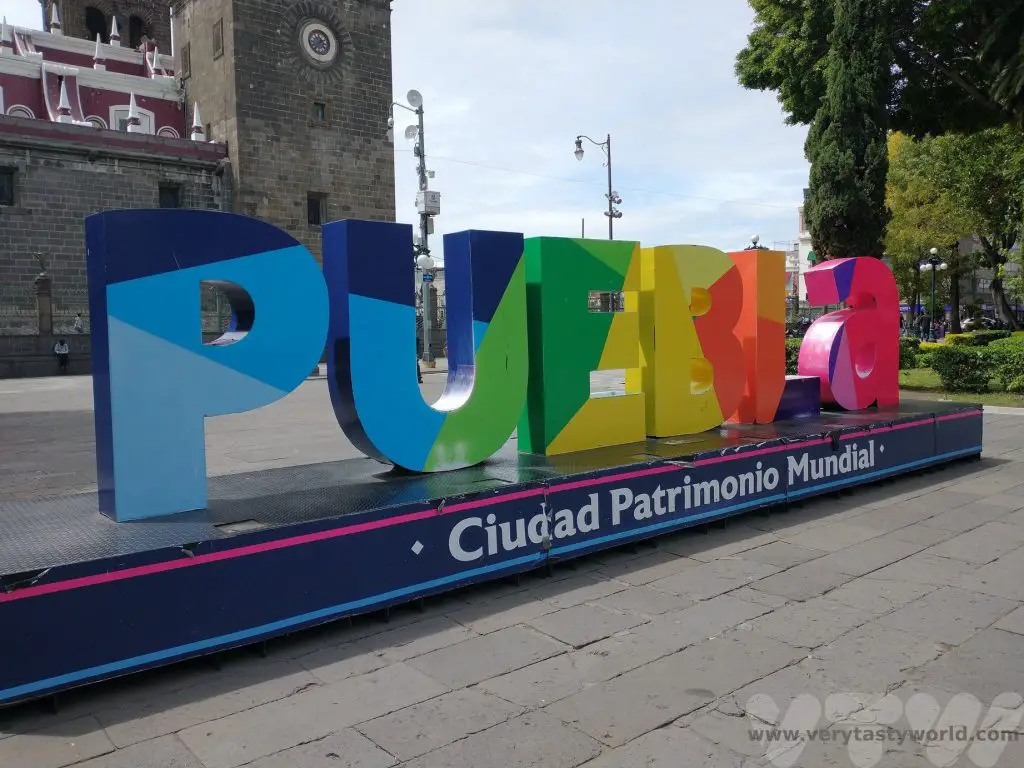
Getting to Puebla
We were travelling through Mexico on buses, which was a lovely way to see the countryside. The buses are largely comfortable and on time but journey times can be long. The bus stations are usually located on the edge of town, so we tended to use taxis to get to and from our hotels. Most of the taxi drivers were excellent and, even though the journeys were unmetered, the costs were pretty cheap – usually lower than $10. There was only one place where we got shafted by a taxi driver and that was in Merida (which is a lot more touristy) who overcharged us for a very short journey so it’s advisable to agree on a price in advance – and to be able to count in Spanish! When we arrived in Puebla we discovered a taxi rank where we could pre-pay our fare which made everything much easier.
The journey from Mexico City to Puebla took two hours. If travelling from Oaxaca, the travelling time is around five hours.
We were staying at the Colonial Hotel in Puebla, just a block away from the Zocalo main square. It’s a former Jesuit monastery, dating from the 17th century. We had an enormous room with the highest ceiling we had ever seen. Also, they provided a ginormous water dispenser in the room (you can’t drink the tap water in Mexico) and this was very useful.
Places to Visit in Puebla
On arrival we went straight to the zocalo, which is a lovely space filled with trees, sculptures and benches. We always find it useful to head for the tourist information office when we arrive at a new city, and Puebla’s is located on the northeast corner of this square, on the side opposite the cathedral. It was great chatting with the friendly staff who offered us a map of the area and list of attractions to visit, as well as some foodie recommendations.
Puebla was founded by the Spanish who had set up a trade route between Veracruz on the coast and Mexico City. The area was originally forested and hadn’t been populated by indigenous peoples, it was located between the settlements of Tlaxcala and Cholula. The soil is volcanic and as a result, the land is fertile and ideal for growing crops. The Spanish brought crops such as wheat with them and the food is therefore a fusion of local ingredients with European.
Puebla is a city filled with churches. It feels as though there is one on every street. It’s perfectly okay to wander inside although it’s advisable not to look around if a service is ongoing. There are two churches that are absolute must-sees.
Puebla Cathedral
Located on the south side of the zocalo, the Basilica Cathedral of Puebla, also known as the Cathedral of Our Lady of the Immaculate Conception, was one of the first cathedrals to be built in Mexico. It was consecrated in 1649. It is a huge cathedral.
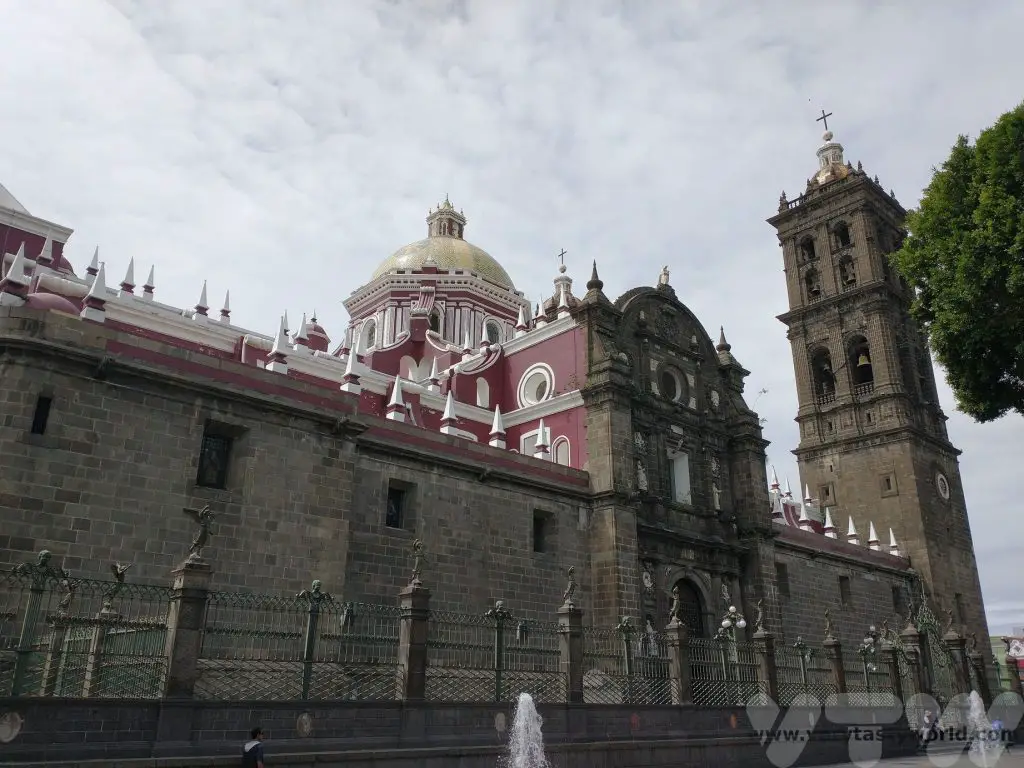
Like many large churches in Mexico, it has multiple domes and altars. The high altar is particularly ornate.
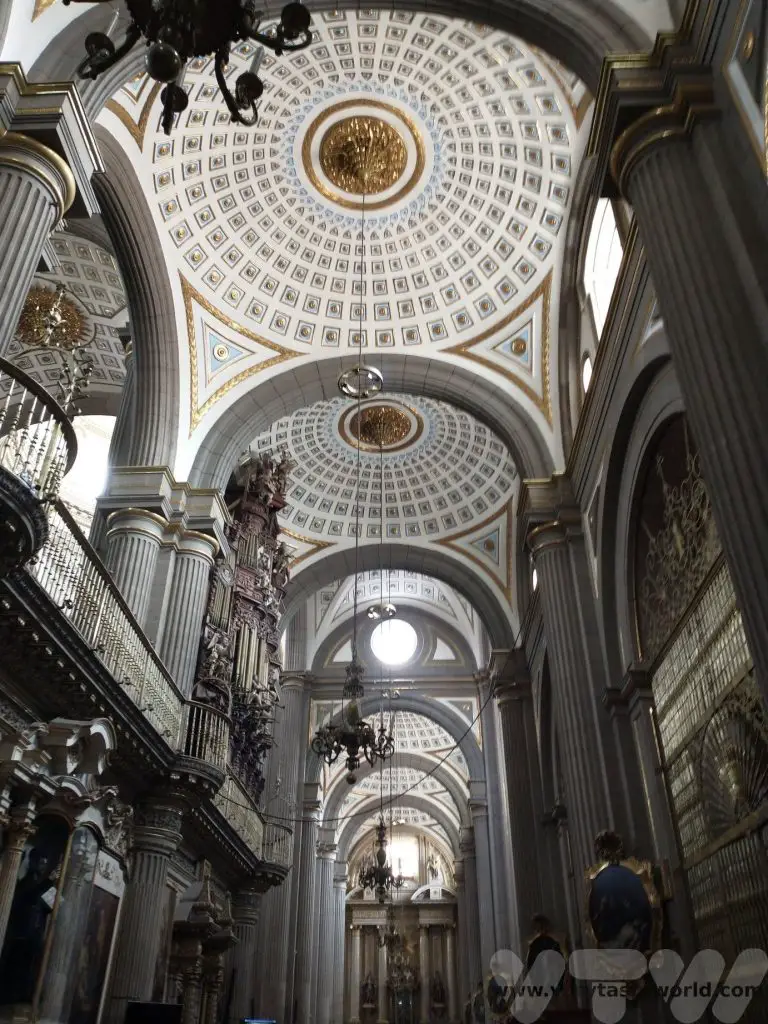
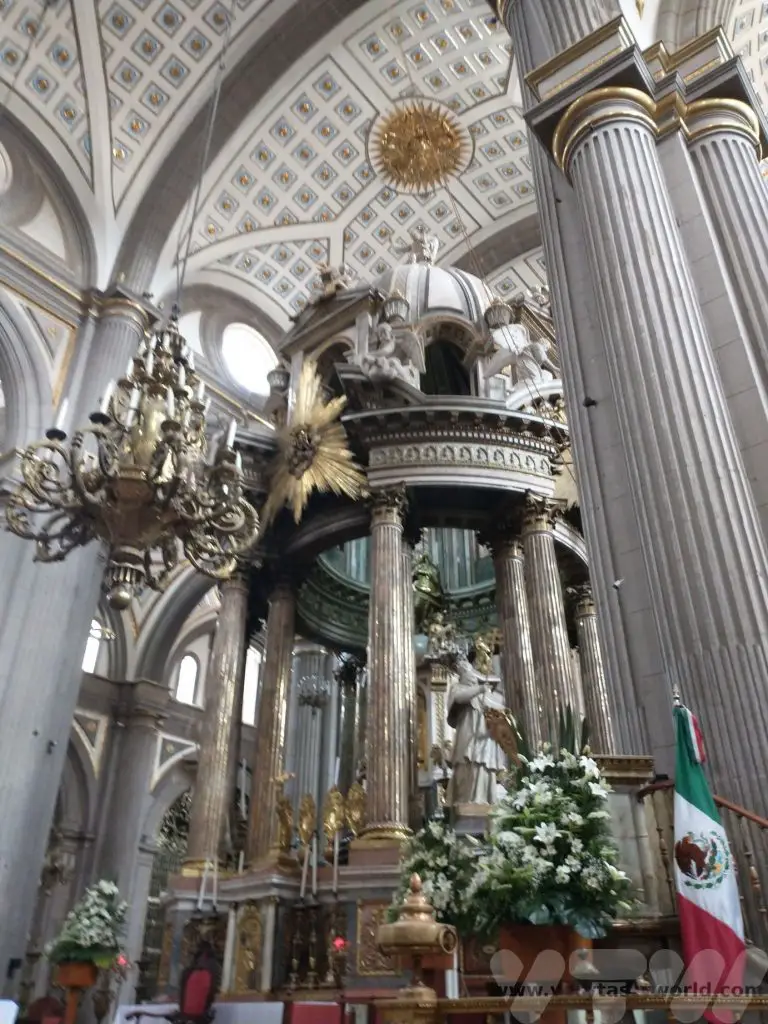
Church of Santo Domingo
The Church of Santo Domingo is remarkable for its chapel dedicated to Our Lady of the Rosary. It is a classic example of new Spanish baroque architecture and in its time was considered to be the 8th wonder of the world. It was conceived in 1650 and completed in 1690.
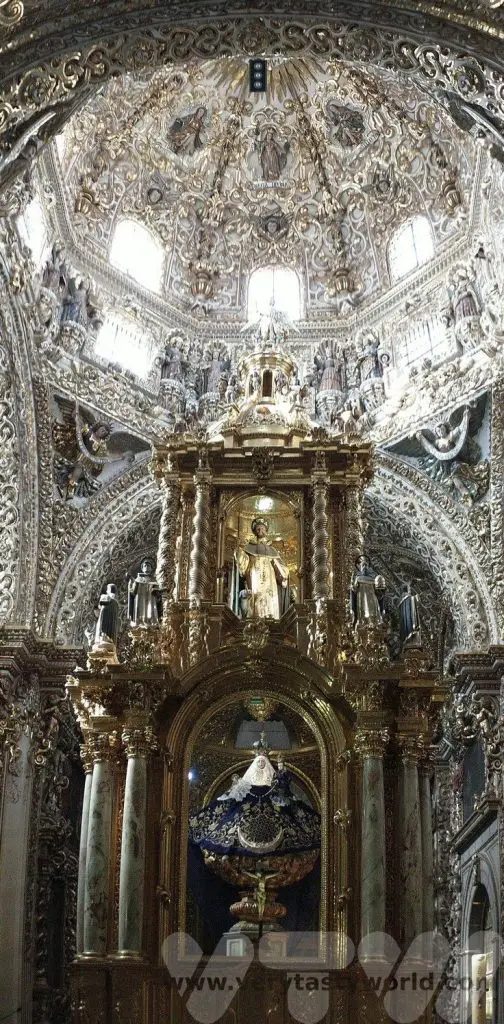
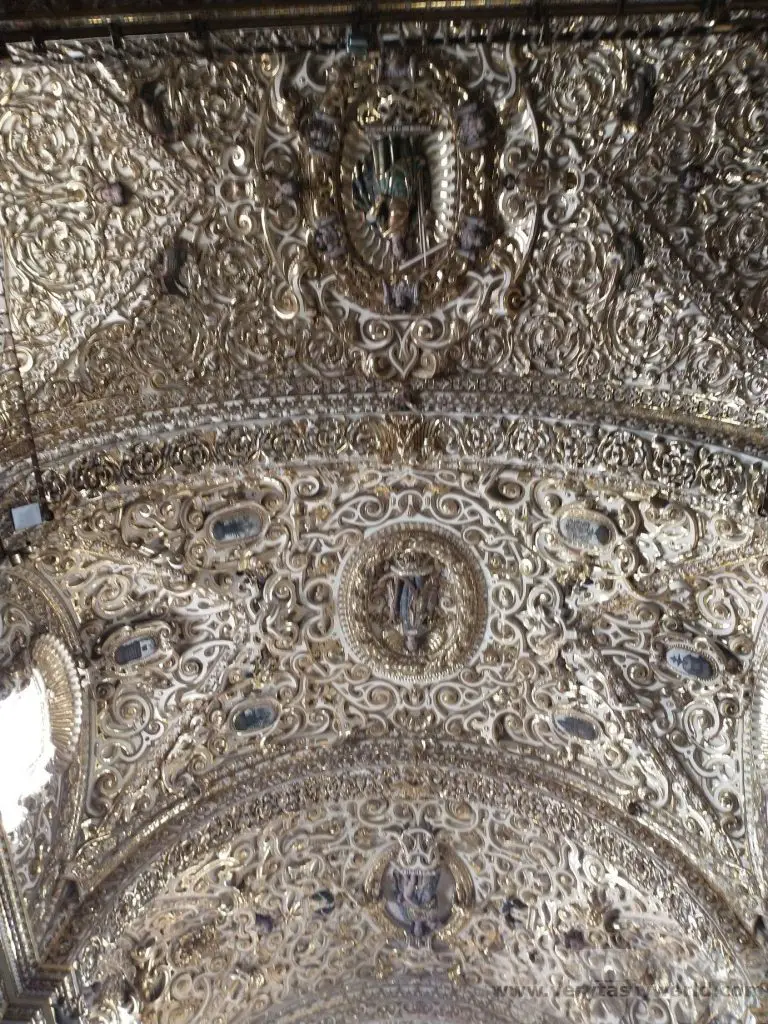
The chapel is decorated with gilded plasterwork, the highly decorative and intricate designs are coated in 24-carat gold leaf.
Biblioteca Palafoxiana
The Biblioteca Palafoxiana is the first and oldest library in the Americas and is another UNESCO site. Chock full of some 45,000 books dating from the 15th century onwards and categorised according to the subject, you can wander through the library and view the shelves as well as some books on display in glass cabinets. It has a wonderful smell – just breathe in deeply to inhale the scent of centuries-old literature!
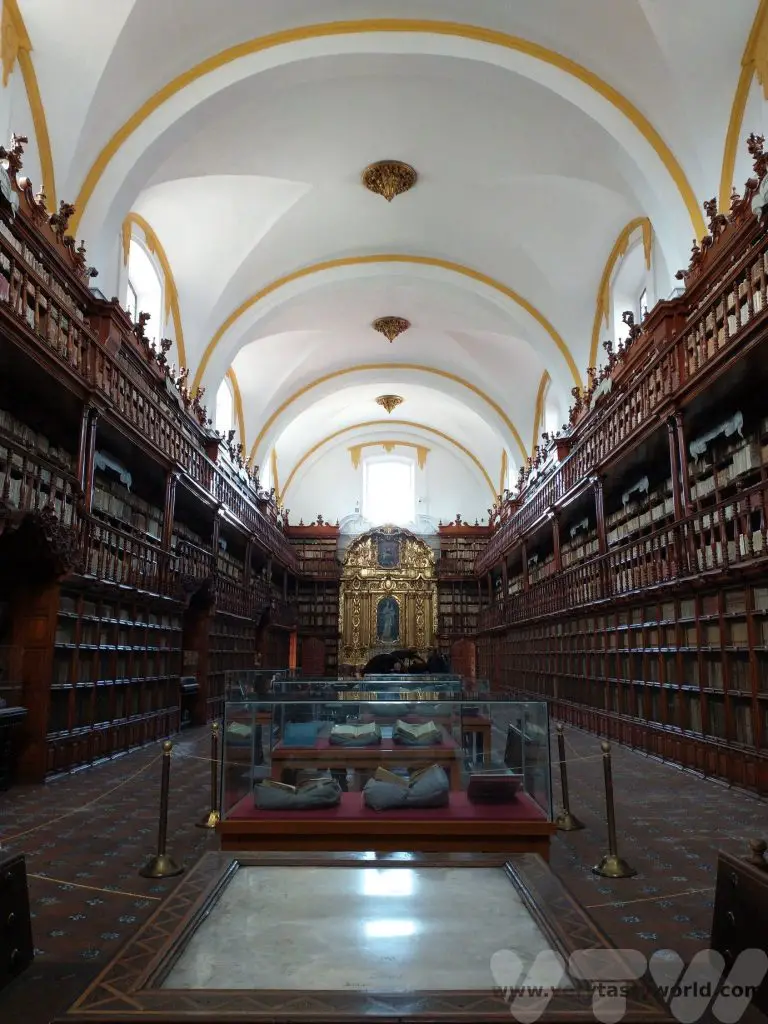
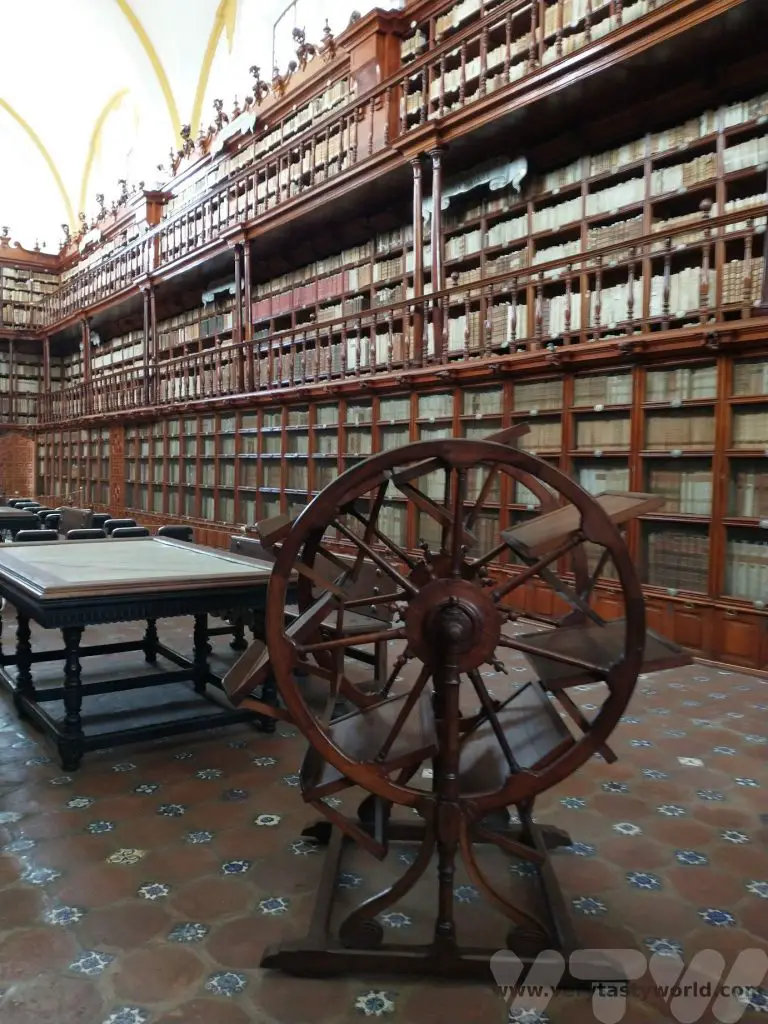
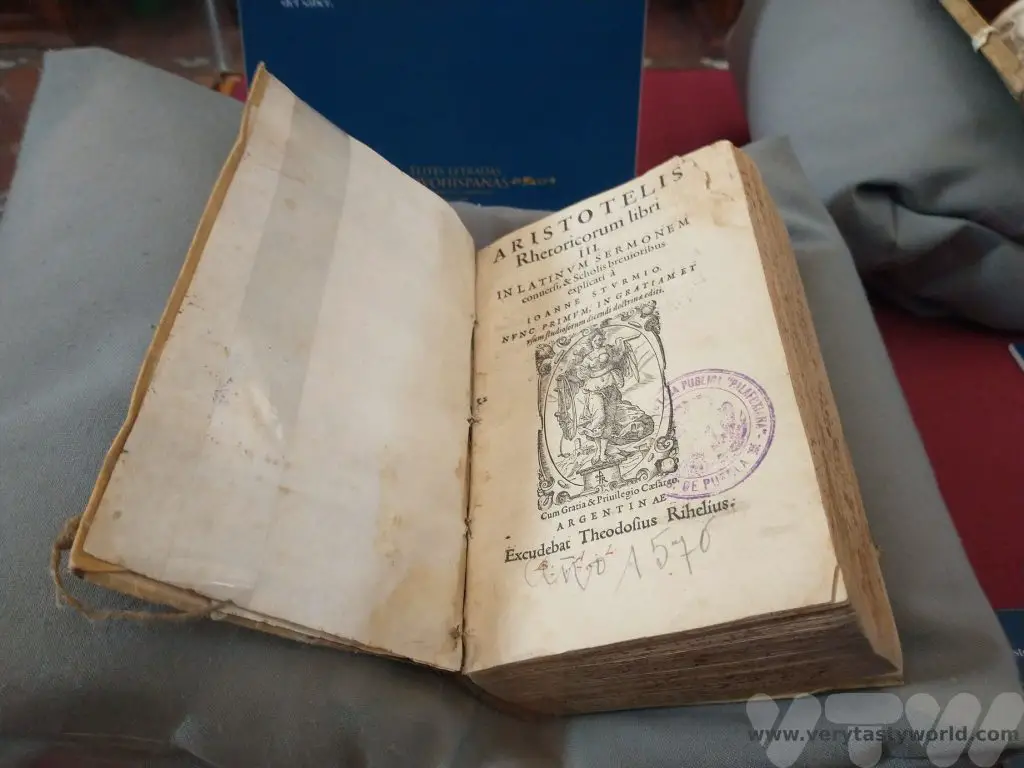
Museo Amparo
This free museum and art gallery is a joy to visit and highly recommended. Set in two colonial-era buildings across multiple levels it has several permanent and temporary exhibitions.
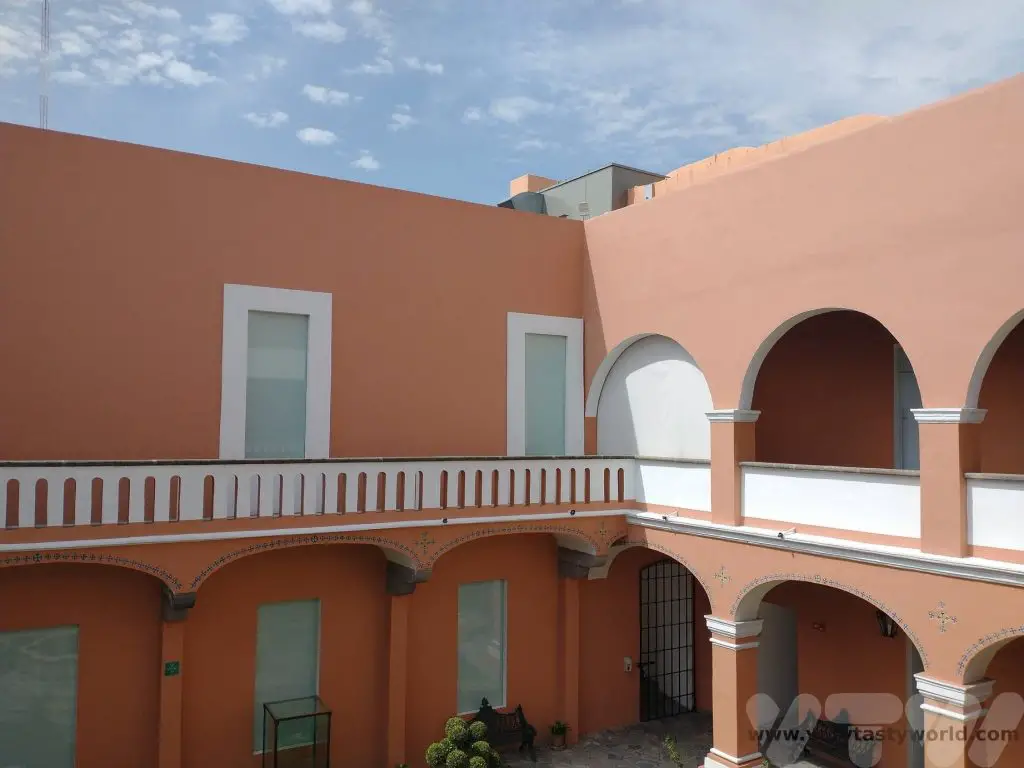
The ground floor is dedicated to the pre-Hispanic history of the region and sets it in the context of world history. It has a huge number of fascinating artefacts with pieces dating from as early as 2500 BCE.
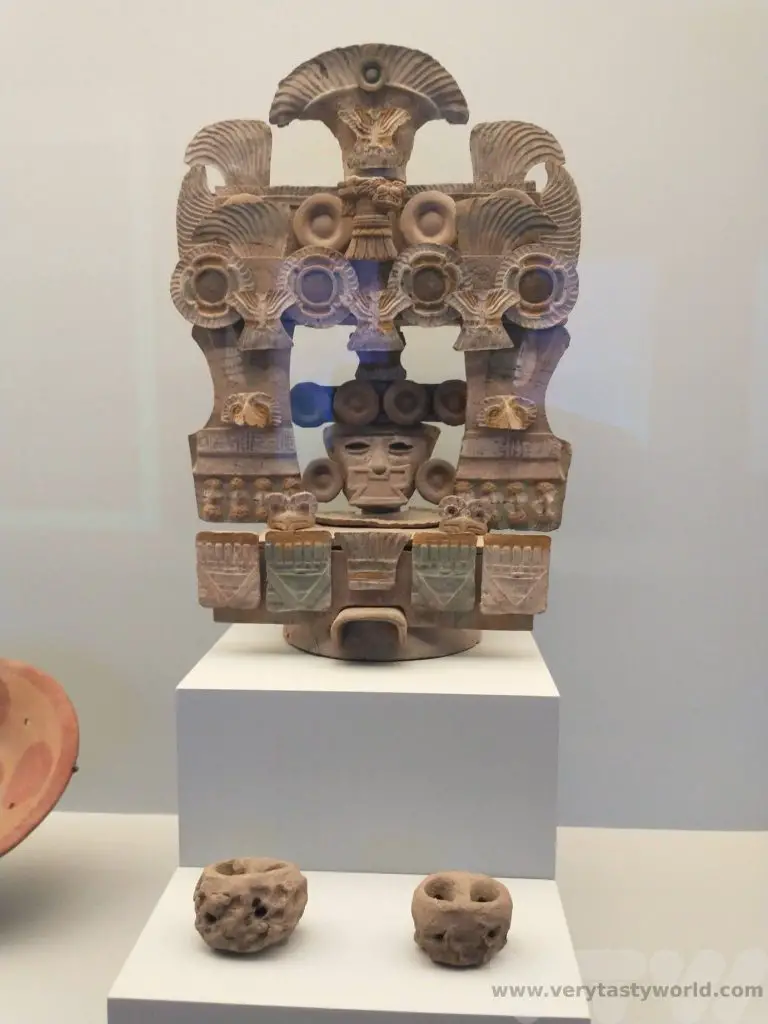
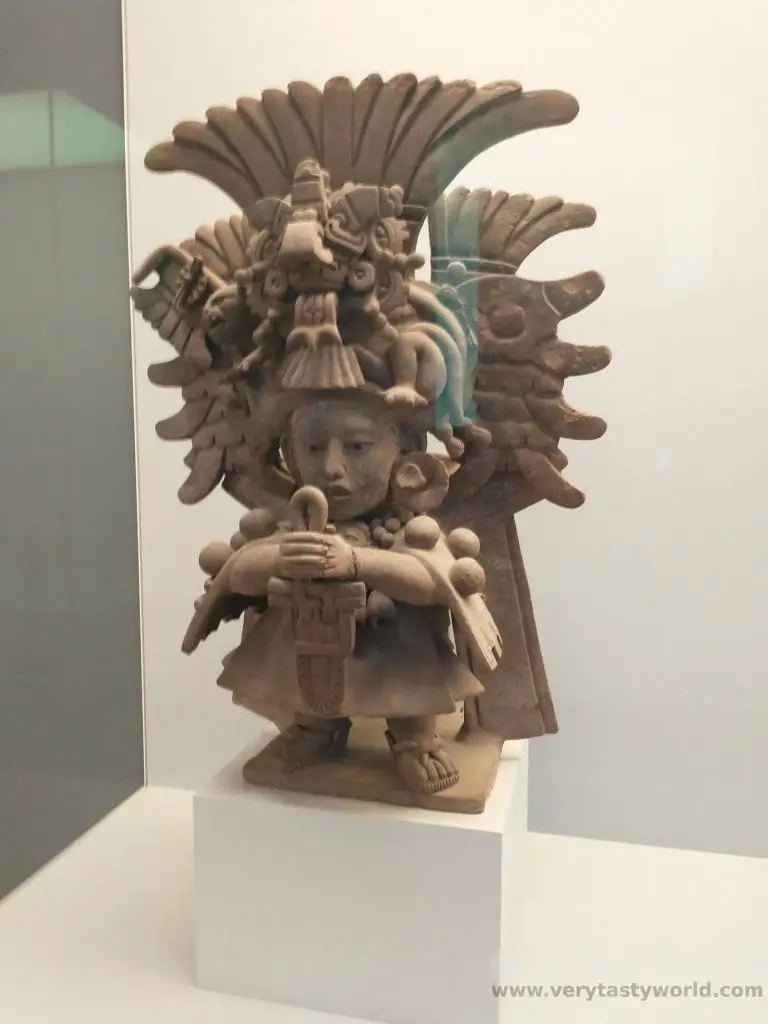
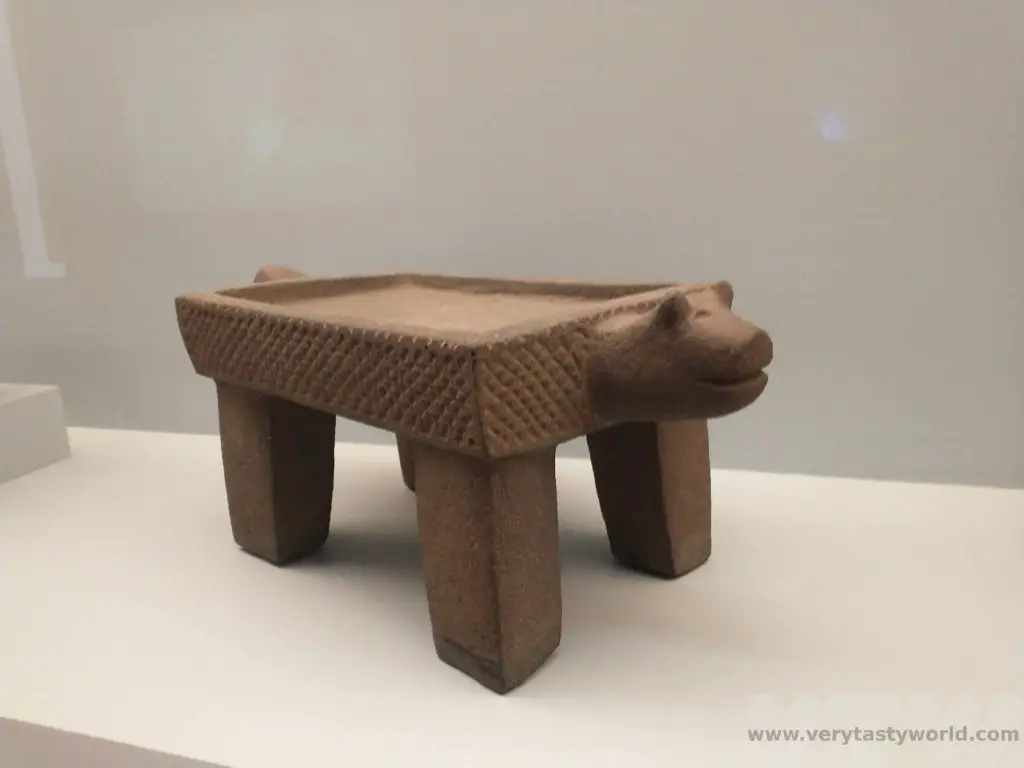
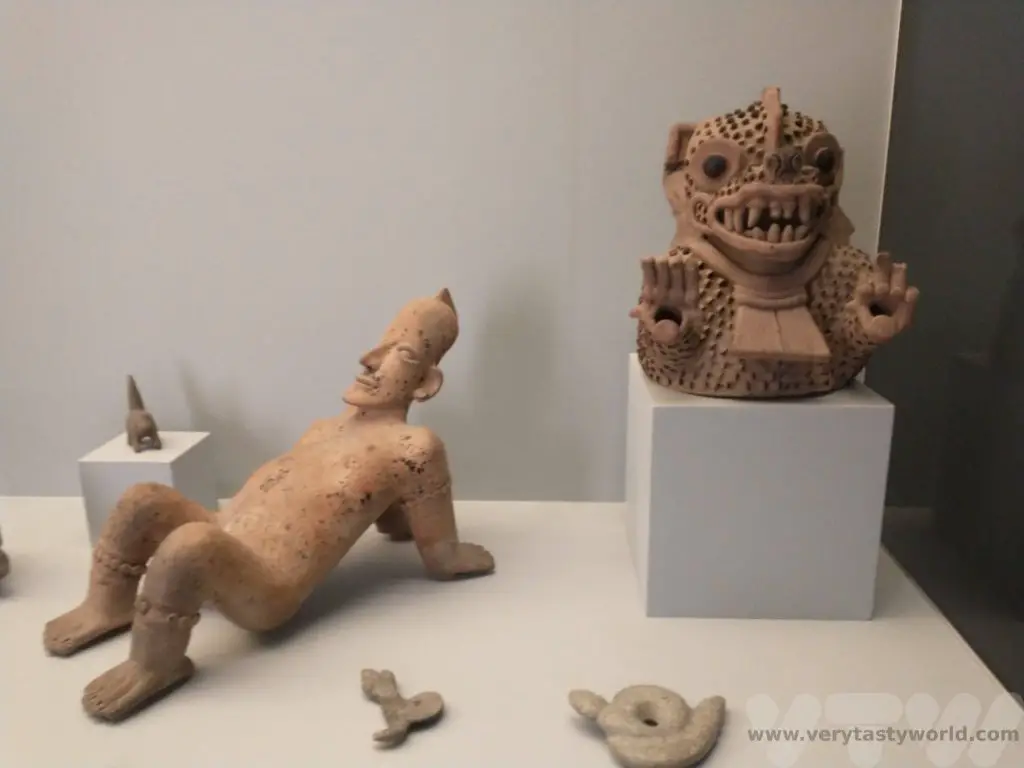
The building was the home of the Espinoza from 1871 to the 1980s, and this is reflected in the upstairs exhibits which are set out as rooms showing objects from the colonial period, including drawing rooms and a kitchen.
The Amparo has a terrific modern art gallery. There are also temporary exhibitions – we were able to enjoy an exhibition on 1970s feminism when we visited. It’s possible to spend several hours here so definitely set some time aside to explore this wonderful place.
Don’t do what we did and forget to go to the cafeteria on the second floor. Even if you don’t want a coffee or tea, there’s apparently a fabulous view of the city. We only learned about this after our visit. We’ll have to return.
Museo de la Revolución- Museum of the Mexican Revolution
This house in Calle Santa Clara was the home of the Serdán family and was the location of the first conflict of the Mexican Revolution which took place in 1910. President Porfirio Díaz had been in power for decades and was becoming increasingly unpopular. Aquiles Serdán was a supporter of revolutionary leader Francisco Madero and started planning an insurgence against the president.
However, the rebellion was foiled when members of Díaz’s government learned of their plans, and Aquiles, Máximo, Carmen, and Natalia Serdán, along with others, defended themselves inside the house from hundreds of soldiers who were shooting at them. Aquiles survived the gunfight and hid inside a hole under the floorboards where the revolutionaries had stockpiled their weapons. Unfortunately, he coughed when the authorities raided the house, so was discovered and later killed.
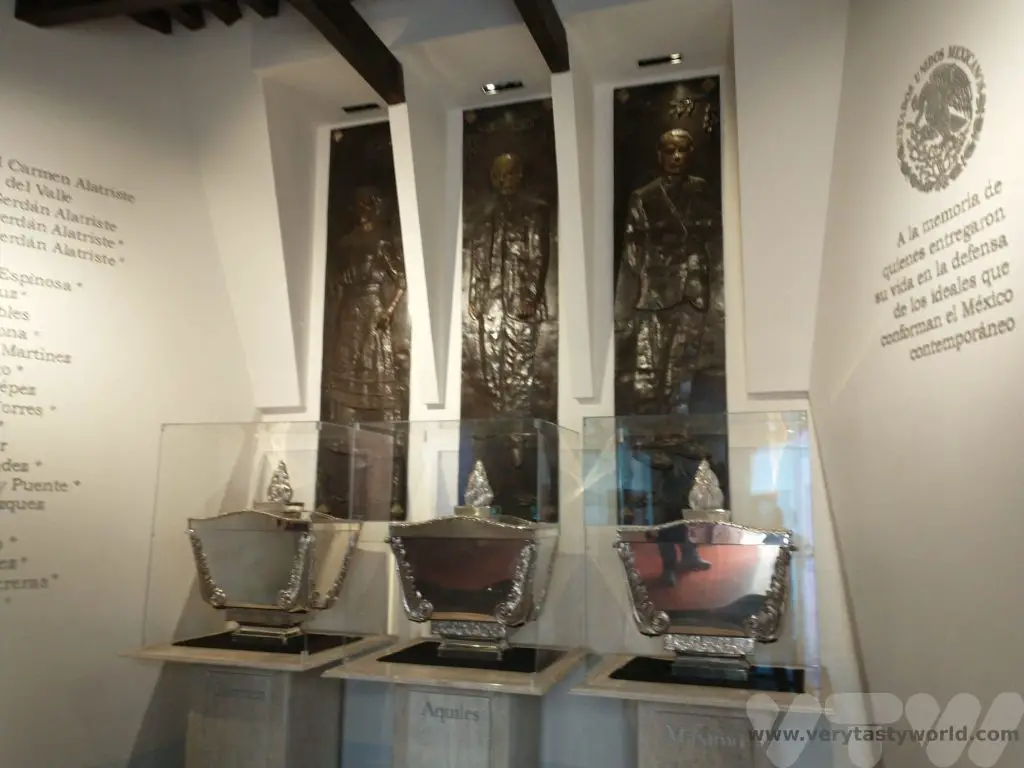
The house has been converted into a museum. It displays the living arrangements of the families.
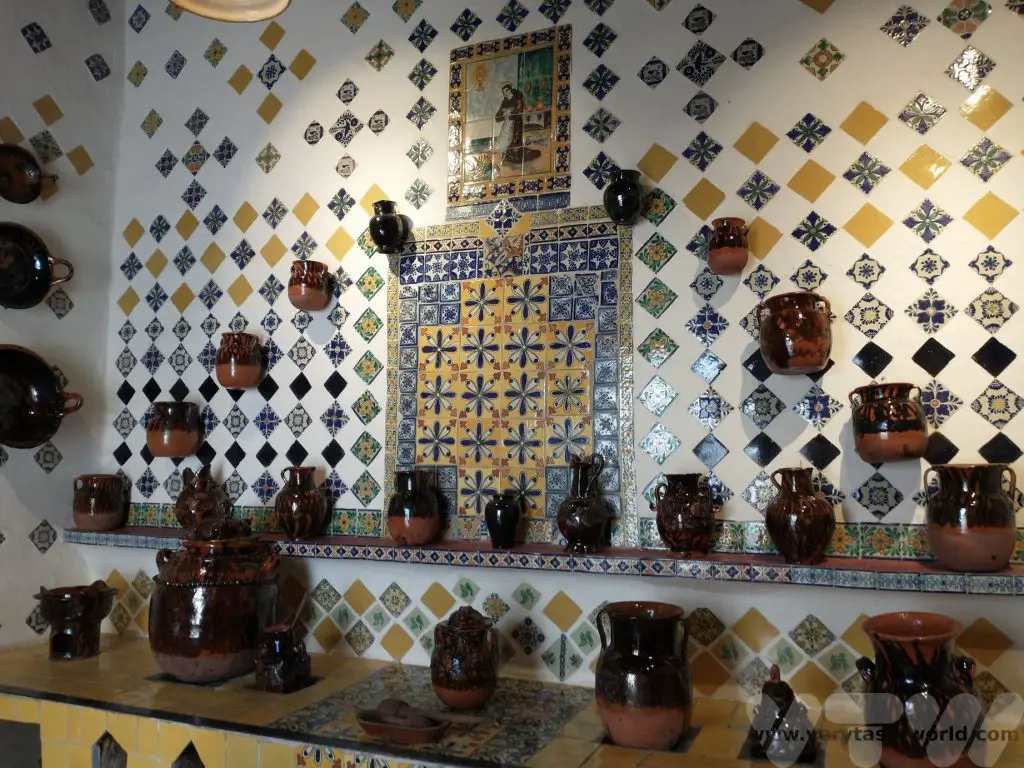
It also gives lots of information about the background of the revolution and its outcome. There is also a room dedicated to the women of the family.
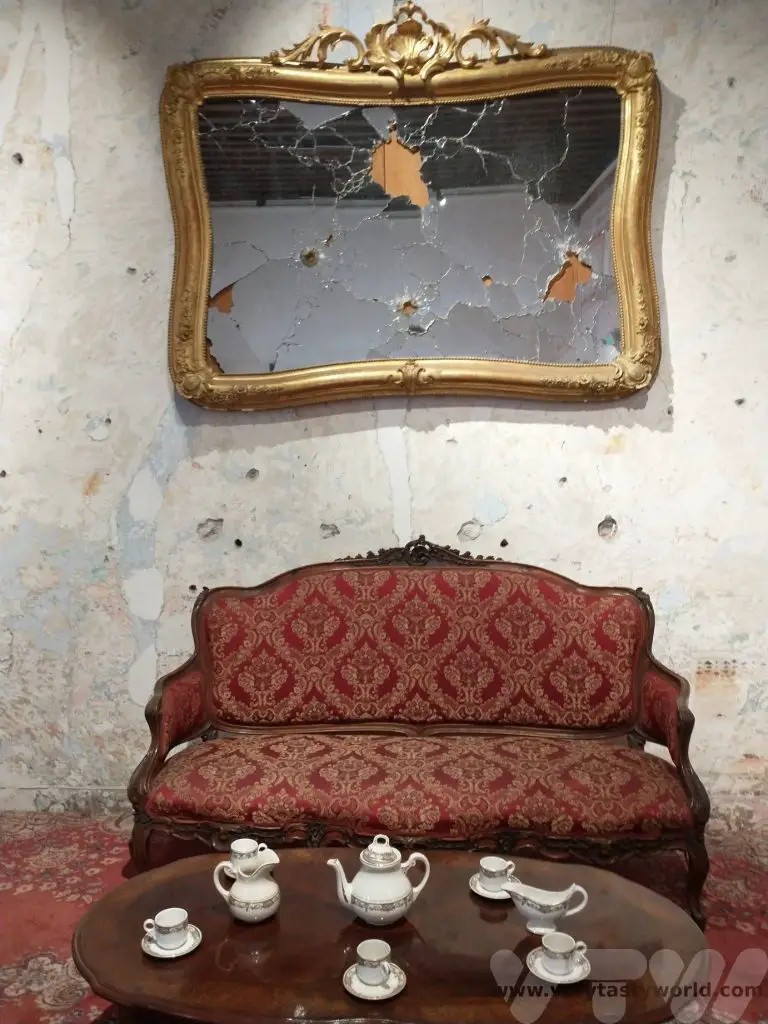
While the bullet holes on the exterior of the house look dramatic, they are actually fake. The building was renovated a few years ago and the workmen unwittingly rendered over the plaster, covering the original holes! After this mistake had been discovered the ‘bullet’ holes were drilled back in. If you look closely it’s quite clear that they could never have been made by bullets fired from guns manufactured in 1910.
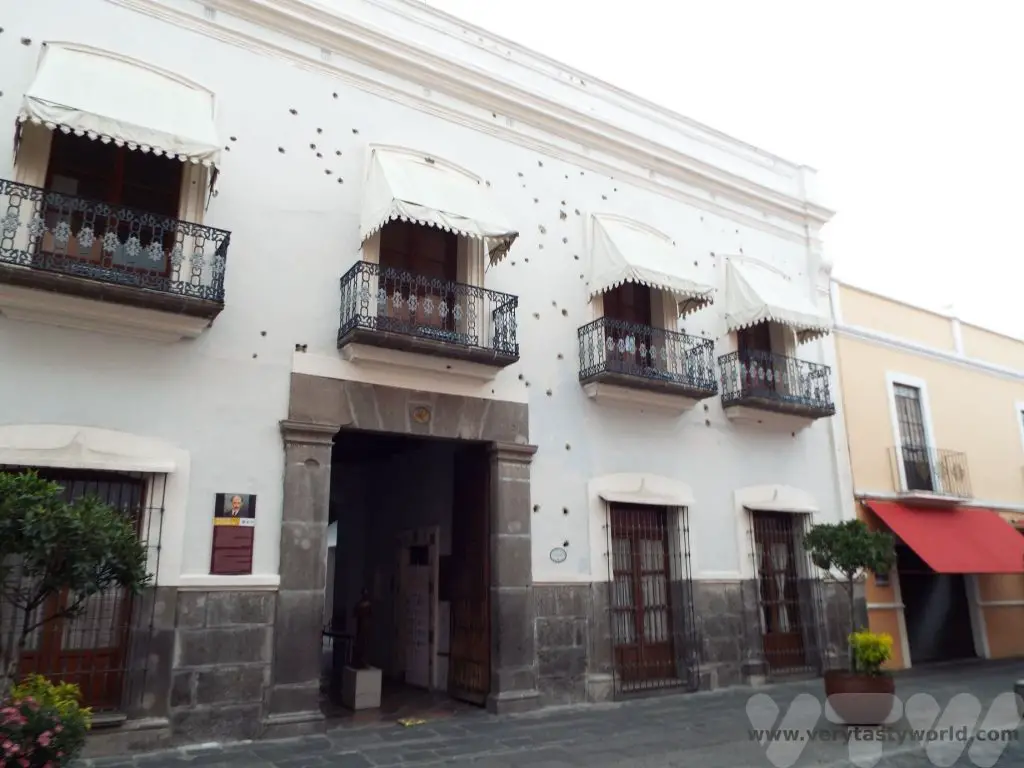
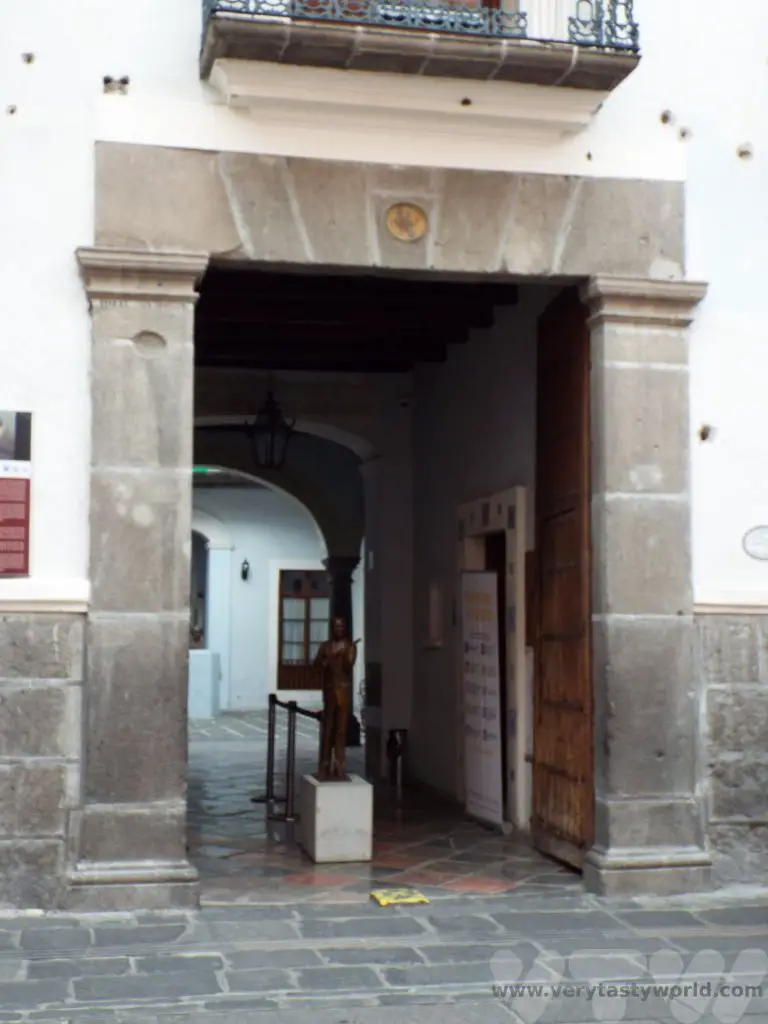
There are some genuine bullet holes in the stone doorframe at the museum’s entrance.
Other Attractions
There are lots of other places to see in Puebla. These are some of the highlights:
Señor de las Maravillas is a 17th century carving located in the Temple of Santa Monica. It is said that the image of Christ was carved from a tree that had been struck by lightning.
Municipal City Hall, located on the north side of the zocalo, houses a museum and art gallery.
International Museum of the Baroque is housed in a very cool building designed by Toyo Ito and exhibits a large collection of baroque art.
Lucha Libre – if you like Mexican wrestling (and who doesn’t?) there is a lucha libre arena which runs fun filled events, where masked wrestlers battle it out in the ring every Monday.
Barrio las Artistas is a great place to hang out and view local artists at work. There are bars and restaurants in the area and there is often live music in the evenings.
A Puebla Food Tour
We had organised a foodie tour which was perfect as an introduction to the sheer unadulterated joy that is Mexican, and specifically Puebla, cuisine. We spent an afternoon wandering through the streets stuffing our faces with the most amazing food.
Street Food
In the little alley Pasaje Zaragoza, just off the northern end of the zocalo, is a street food stall which always has customers queueing for its delights – Tacos El Pasaje. This is a family business and, while this type of outdoor street food is not strictly legal, this stall has been around for such a long time it is looked over. There is even a sign above the stall. All the products are made in the morning and stored in a covered basket. The food remains warm most of the day.
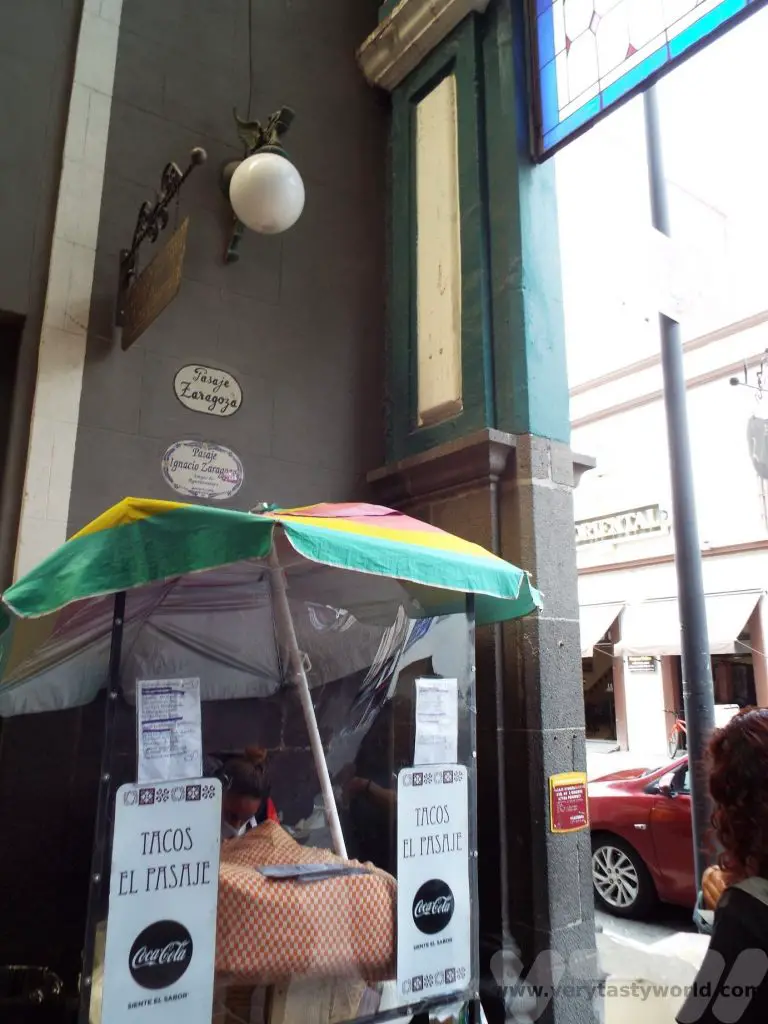
The menu is handwritten – when a particular filling sells out, a line is struck through the menu and you miss out. Until tomorrow, of course. This was where we enjoyed a taco with deep-fried chipotle chilli stuffed with cheese and accompanied with creamy avocado. It was unctuous and not too spicy as the cheese calms the heat of the chilli pepper.
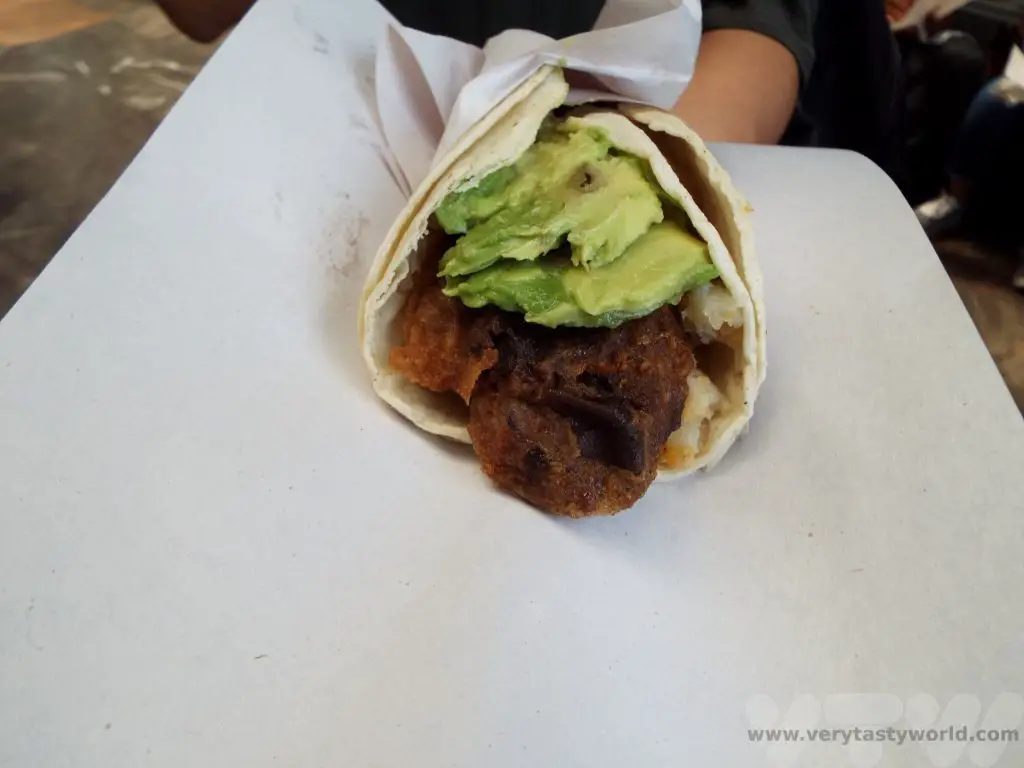
Our next stop was another family business, La Poblanita, a street stall located on Av5 Pte, just around the corner from the Zocalo.
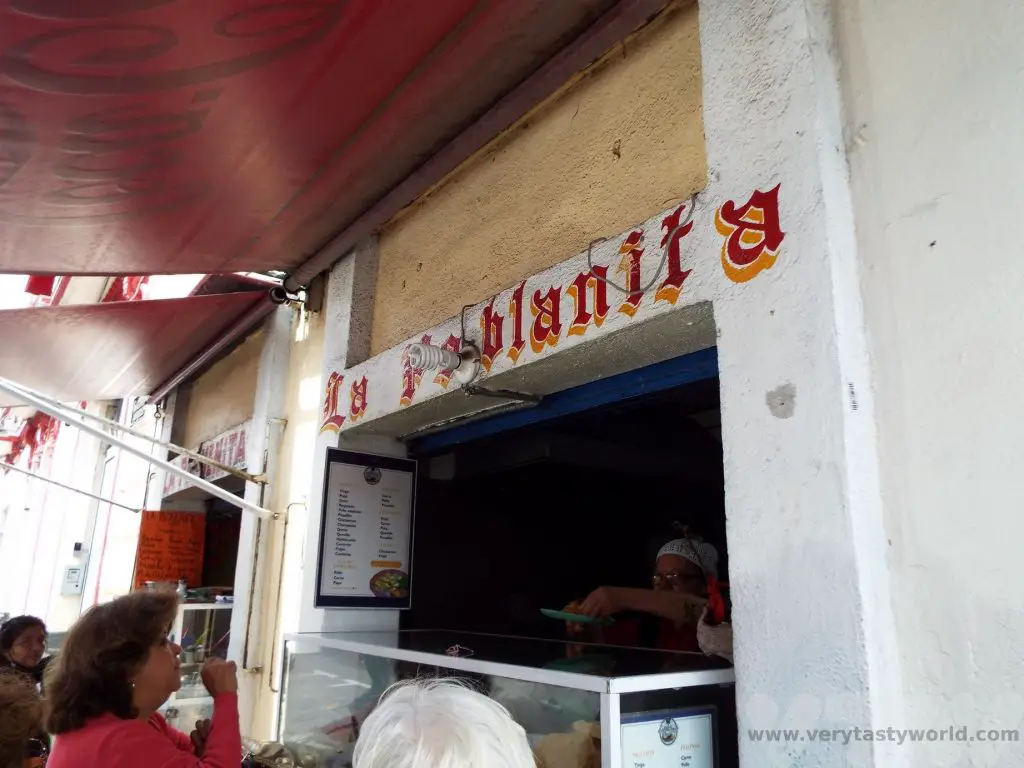
This was where we discovered molotes – a filled tortilla made from corn masa and deep fried. The filling was huitlachoche – corn mushroom – a fungus that grows on the kernel of maize. We had never come across these before and were blown away – the umami flavour was so intense. Our molotes were served with sour cream and salsa.
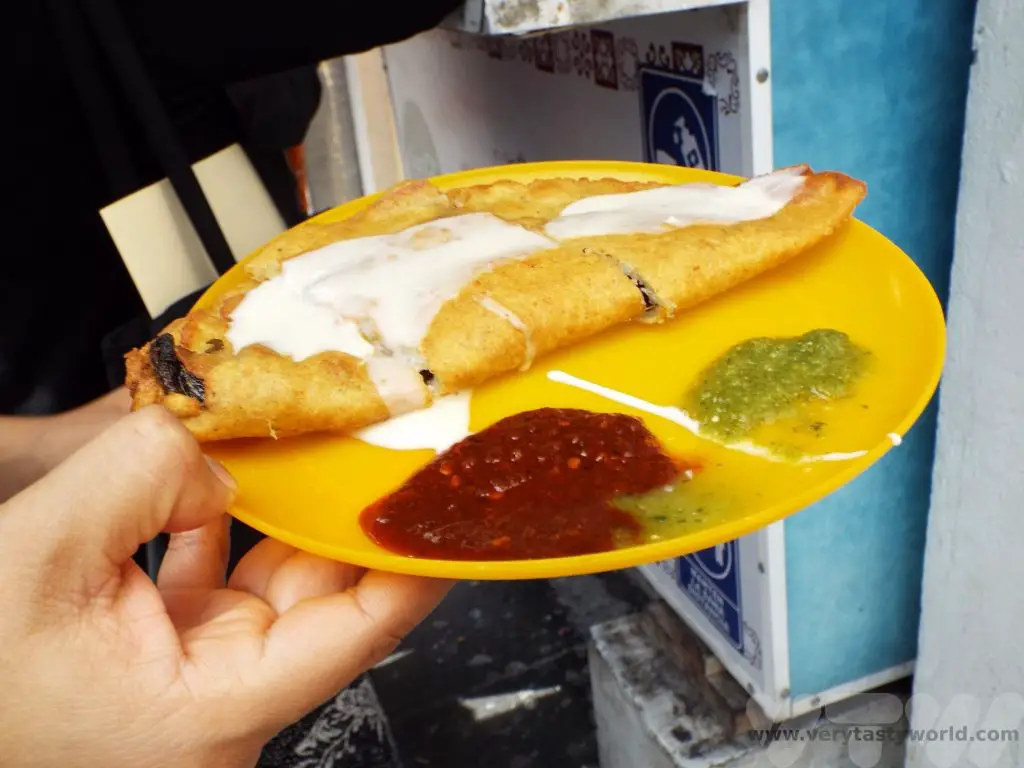
At this stall, we also enjoyed carne (although carne means meat, in this case it was beef) pelonas, wheat bread sandwiches filled with delicious beef and refried beans, and served with with two bright and colourful salsas.
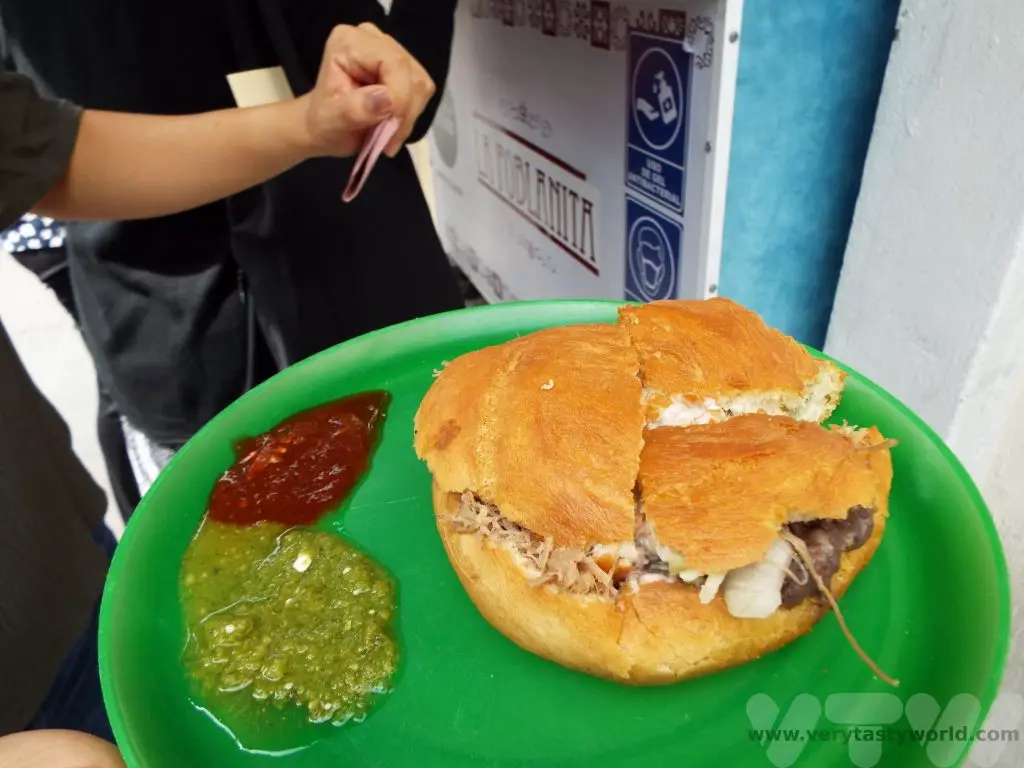
History of Tacos
Tacos could well be considered to be quintessential Mexican food. What we didn’t know was that they are actually a fusion food, imported from the Lebanese community who emigrated to Mexico in the late 19th century. We were quite surprised to see kebab shop-style spits slowly revolving in shop fronts cooking luscious cuts of meat. Tacos became really popular but they evolved in order to adapt to Mexican tastes. Pork, a meat rarely seen in the Middle East, replaced lamb and then the dish incorporated the local inclination to embellish the tacos with all sorts of salsas, condiments, and additional flavours. In Mexico, more is definitely more.
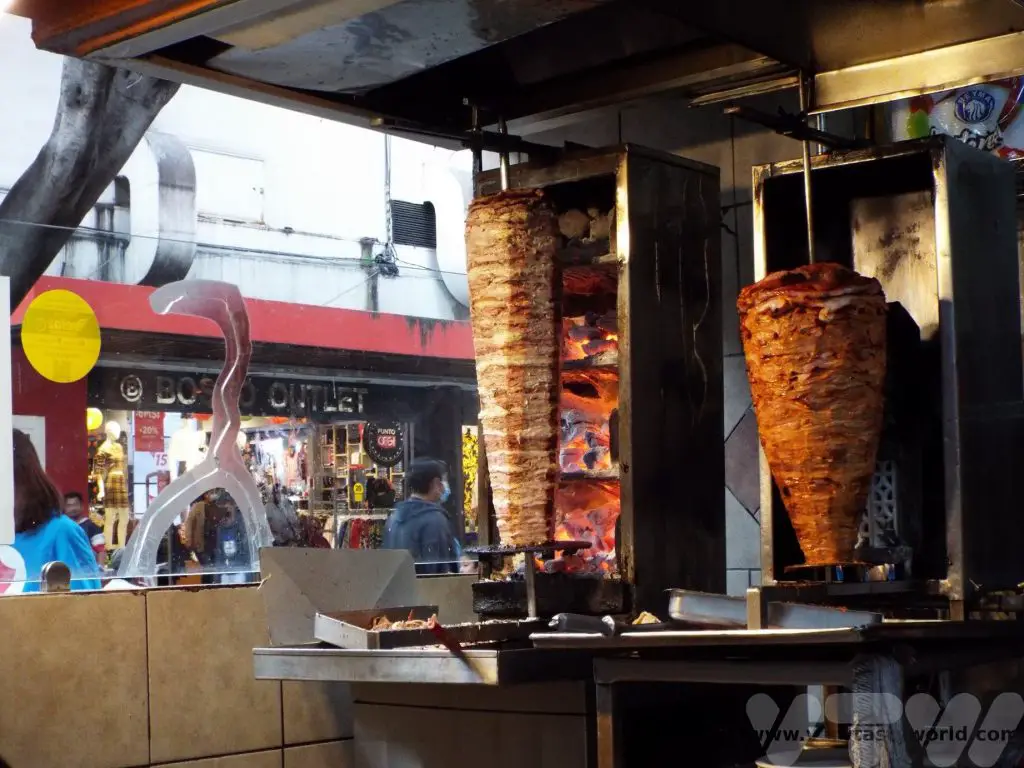
Taco Arabe are chargrilled pork tacos on a wheat bread tortilla. It’s a flatbread, a bit like a pitta but without the pocket – instead it is folded. We ate this with a sweet chipotle sauce and a squeeze of lime.
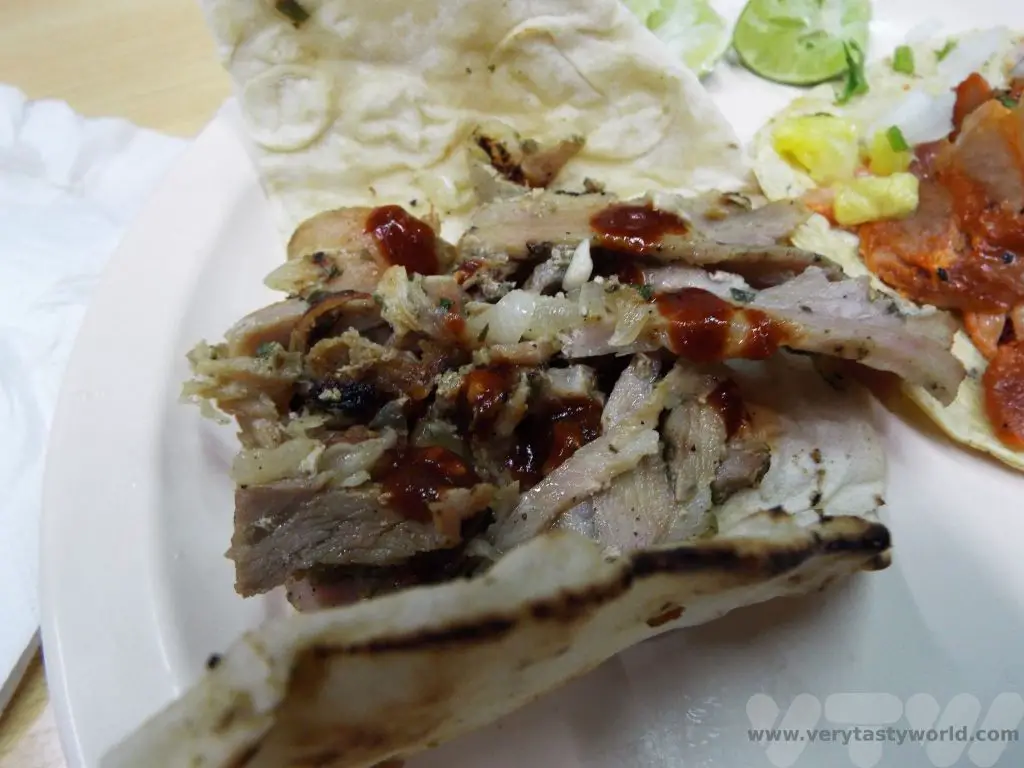
Al Pastor tacos have spiced pork inside a corn tortilla. We ate these with teeny chunks of pineapple, lime juice, coriander, finely diced raw onion, and a creamy avocado sauce.
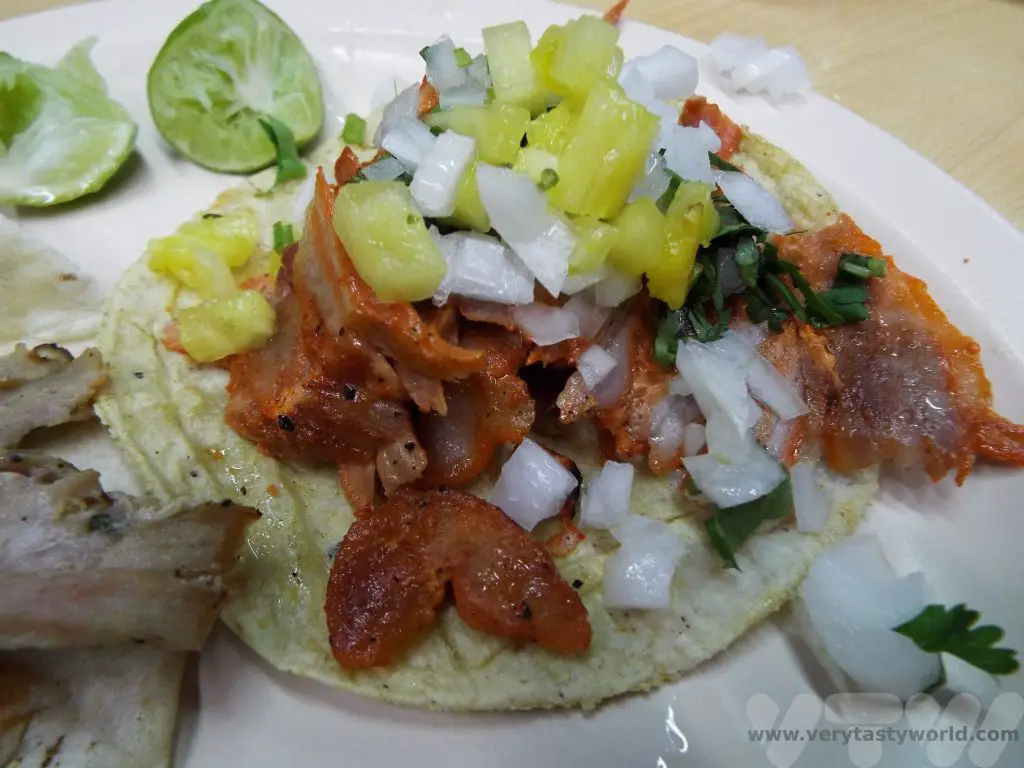
Most of the taco restaurants that we visited offered a number of salsas and multiple wedges of lime for the table. The etiquette for tacos is that they will arrive at your table either folded or open. If they are folded, open them up, add whatever salsa and additional flavours you want, roll or fold them up again, and scoff.
Our next stop offered some sweet surprises. The nuns at the convent on Santa Clara make cakes and sweets and these are sold in the lovely shop across the road.
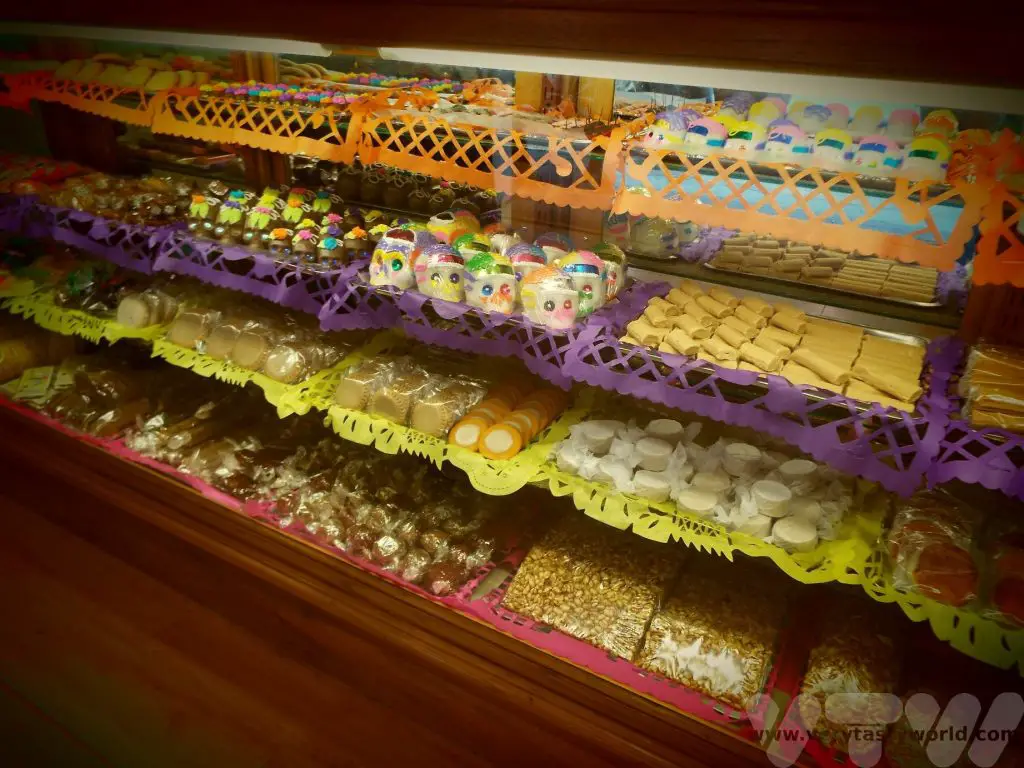
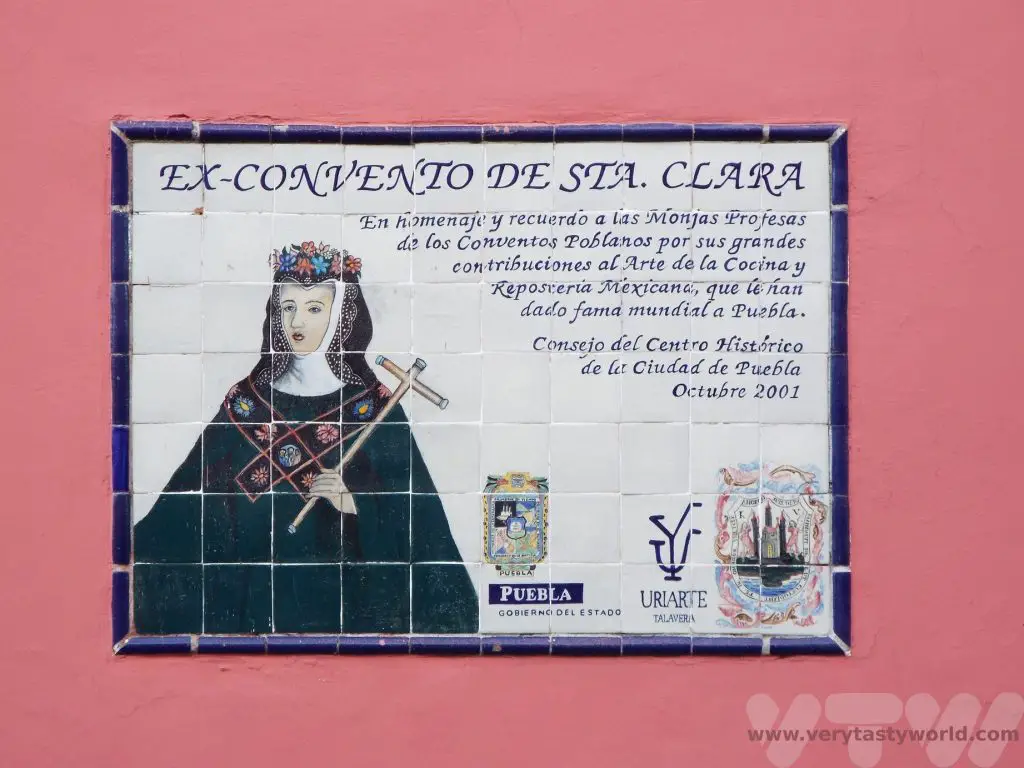
Camotes de Santa Clara are a sweet potato cylindrical-shaped paste flavoured with fruit and honey. There are several fruit flavours available – we chose strawberry.
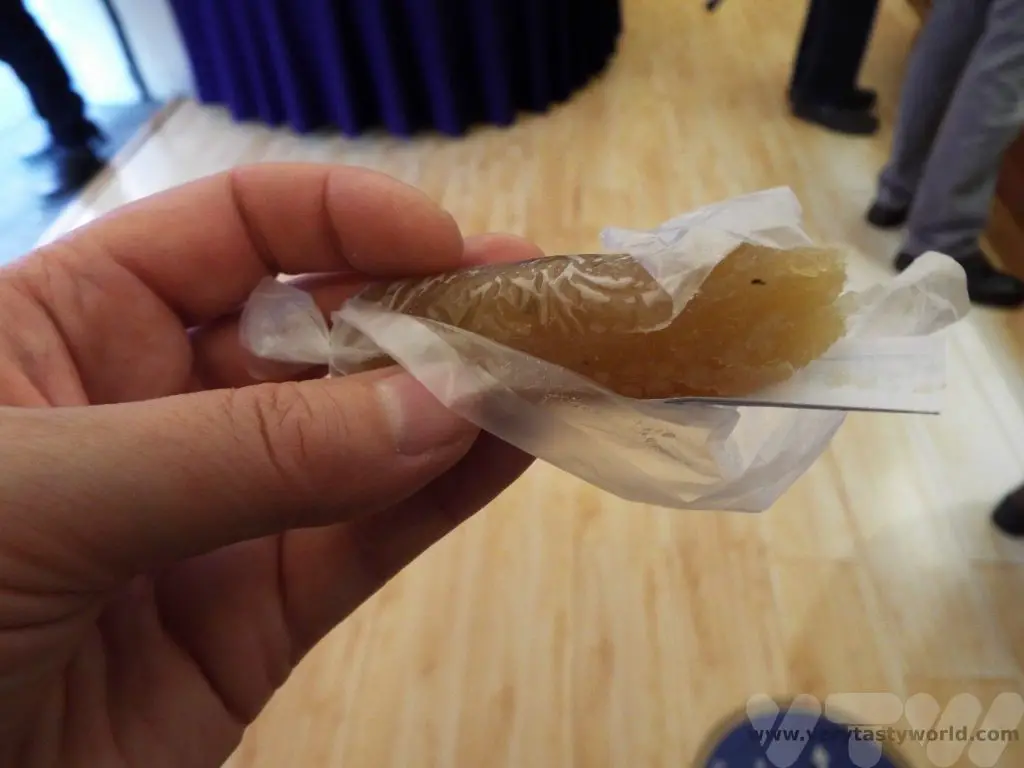
Tortitas de Santa Clara (torte from cake in Spanish) is a delicious fusion of Spanish biscuit base with a filling made from indigenous ground pumpkin seed and honey. A sprinkling of some of the local volcanic salt adds another dimension. This is a nice crumbly biscuit that has a lovely sweetness and smooth peanut butteriness of the pumpkin seeds.
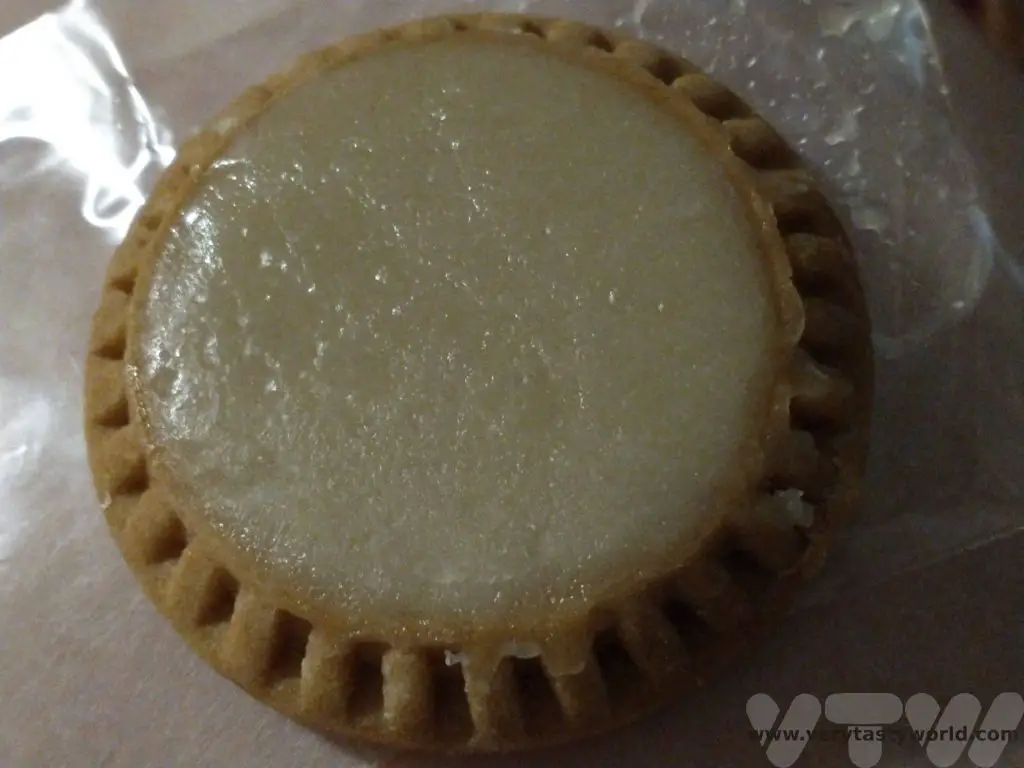
A Magical Market
A short walk out of town, across the road (which used to be the river), took us to Mercado Municipal La Acocota. It was lovely exploring this market, which had so many stalls selling fabulous-looking wares.
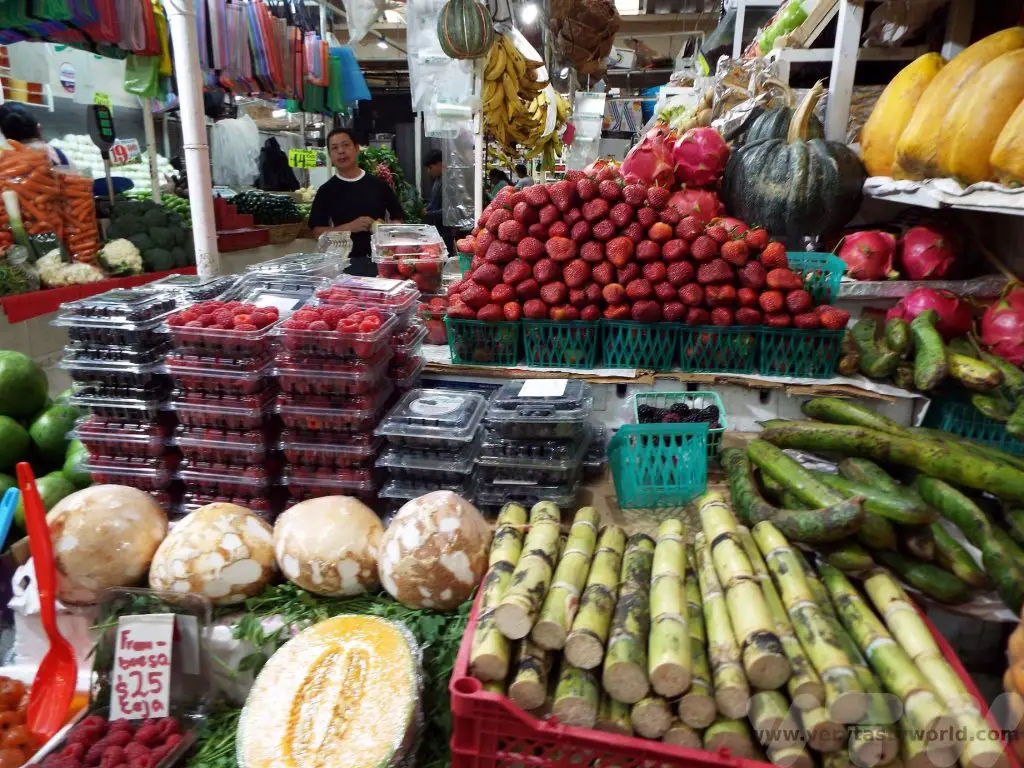
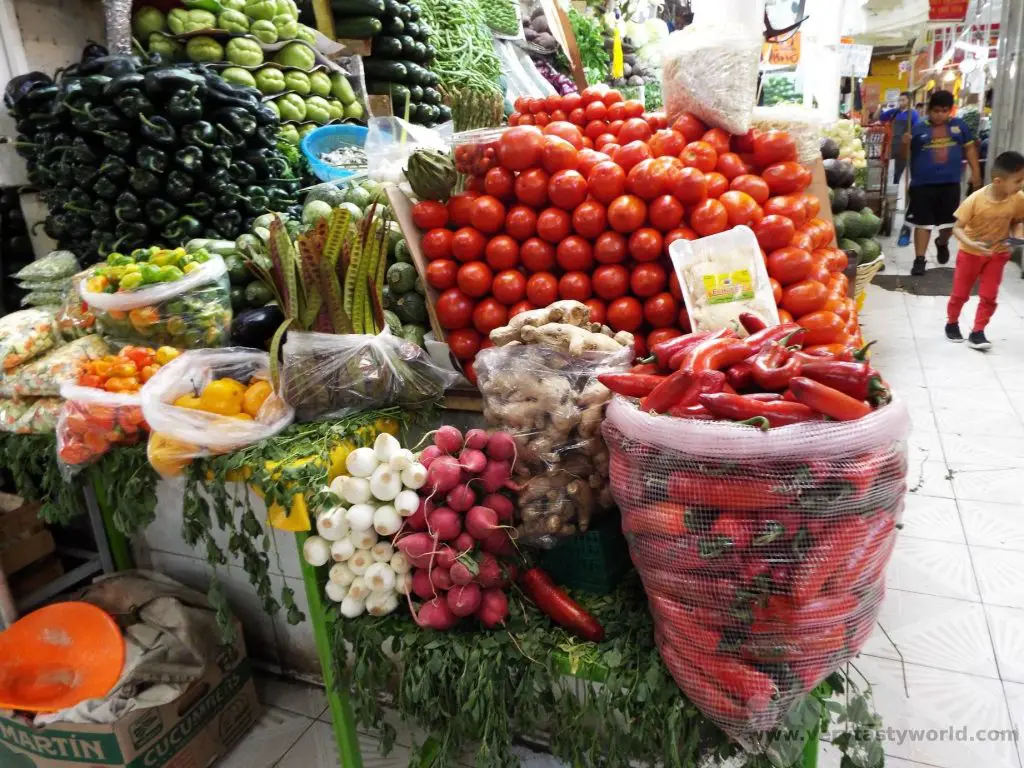
We also discovered the corn mushroom for sale.
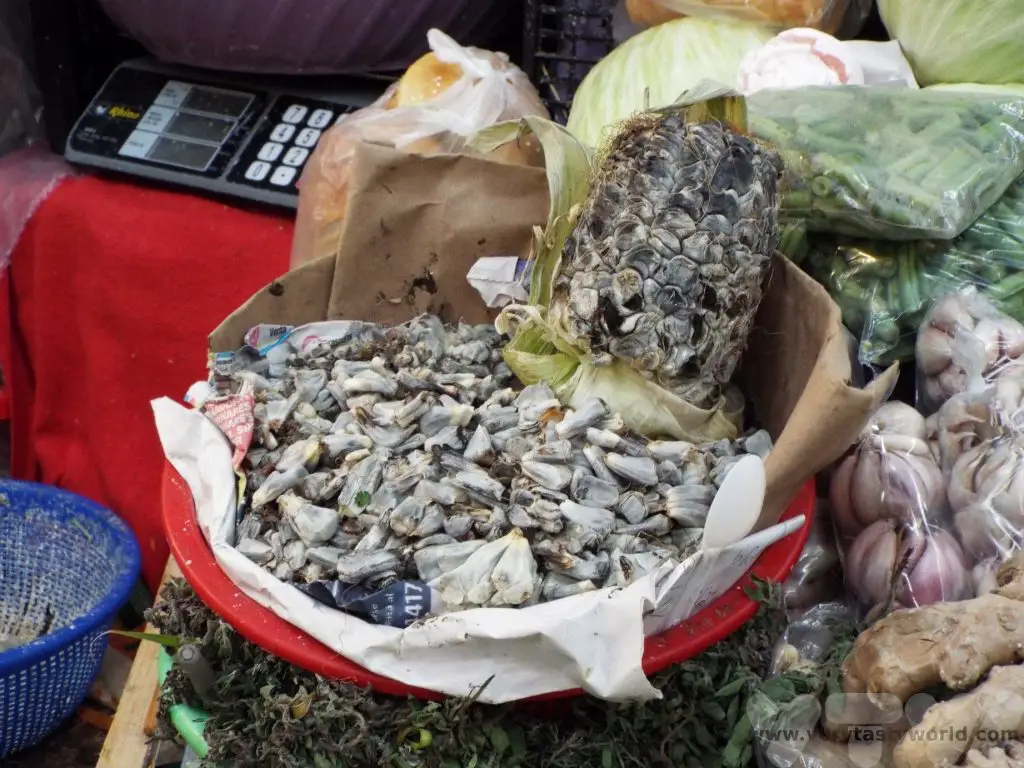
We’ve never seen so many different varieties of chilli pepper!
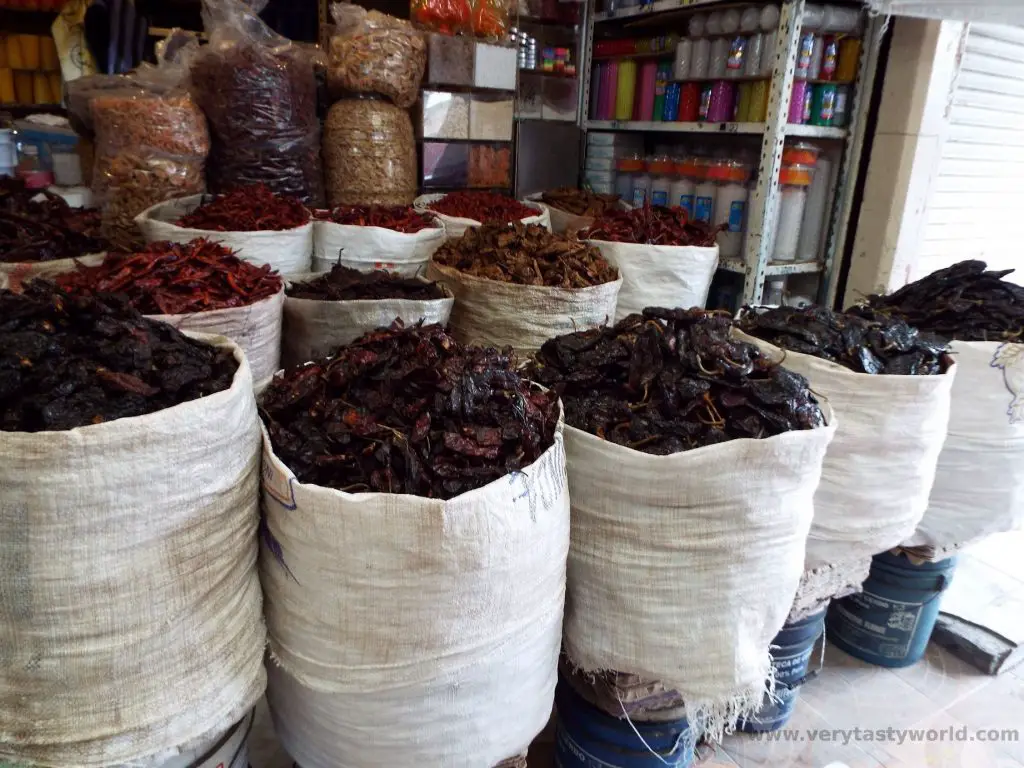
But we weren’t there to shop. We also had plans to eat. You can’t say you’ve been to Puebla unless you have tried a cemita – a massive sandwich of very great deliciousness.
Samita is another family-run business with three generations all working together at the market. They have a fantastic reputation. You sit on stools around the stall and can chat with other customers. Everyone was delightful. The bread is very important in the cemita – it is a wheat-based roll – substantial and fluffy. We enjoyed a Milanese escalope with stringy cheese, jalapeno and avocado.
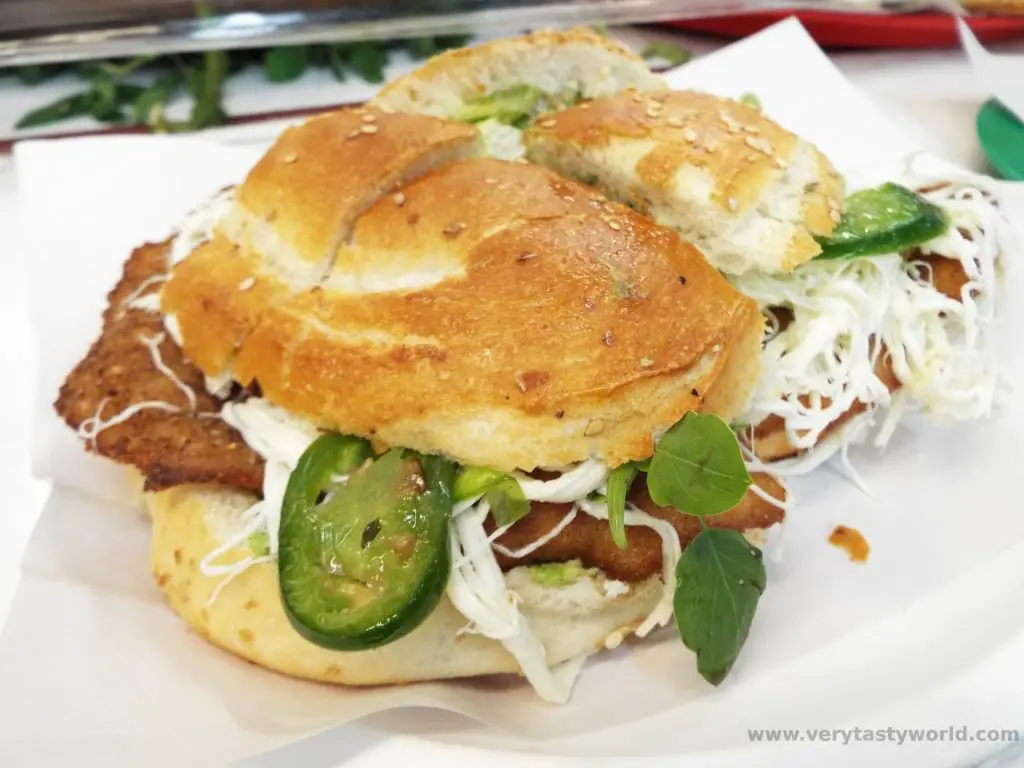
The mega cemita has four fillings including escalope, boiled pork skin, ham, or sliced cheese.
Puebla’s most famous dish is mole (pronounced molay) poblano. It’s another essential dish to try when visiting the area. Over twenty ingredients are used in the most simple mole, including multiple types of chilli, a variety of nuts, and chocolate. The mole at this market is considered to be much more authentic than moles that you will eat at hotels, which are generally more sweet and less spicy. This is where the market stall holders come to eat their lunch – there is always a variety of moles on offer.
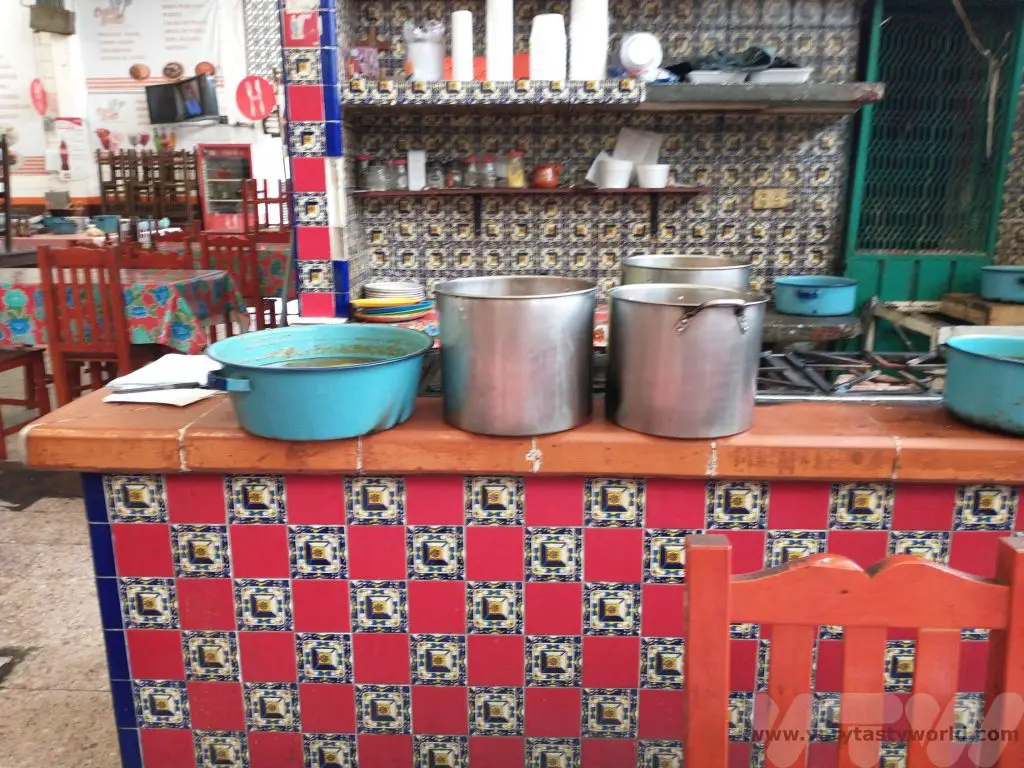
The market’s mole was far more complex and sophisticated. It has a slow burn from the chilli and a mild, but important, bitter element. You get hit by heat in first mouthful but then your mouth gets used to it and can start to savour the other flavours which also include sweetness. This was a rolled tortilla, with no filling, topped with mole sauce, sesame, raw onion and strips of boiled chicken. Simple. Classic.
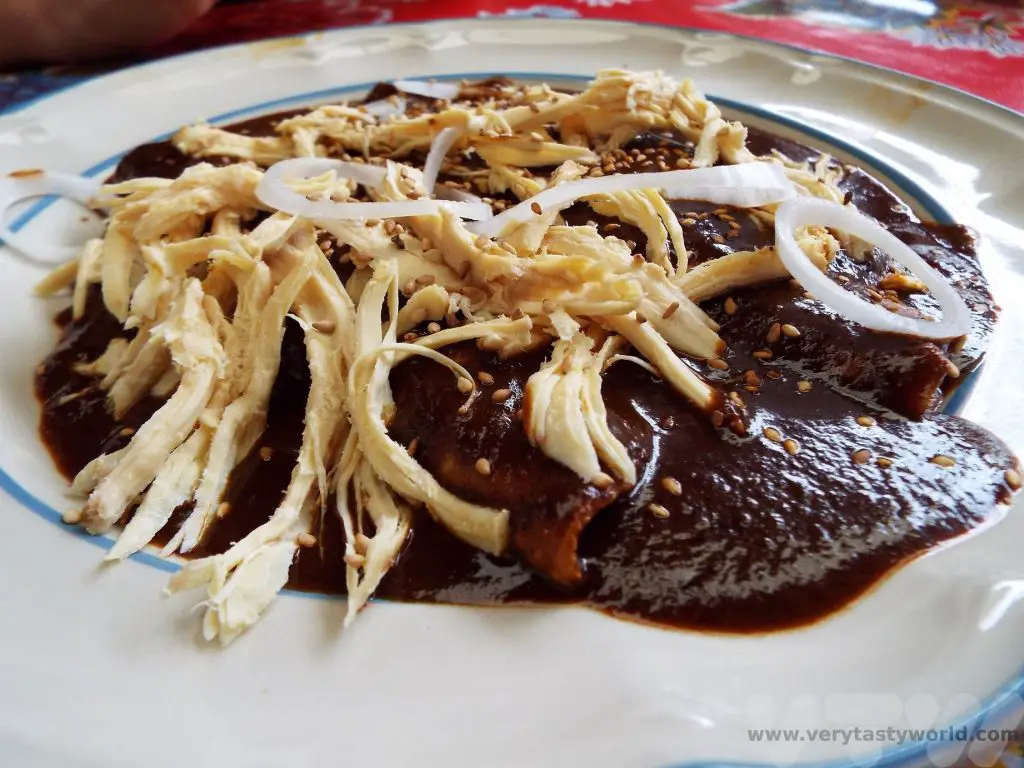
And finally, almost full to bursting point, we stopped off at a local cantina, actually inside an antique shop, where we indulged in a shot of pasita, a liqueur digestif made from raisins.
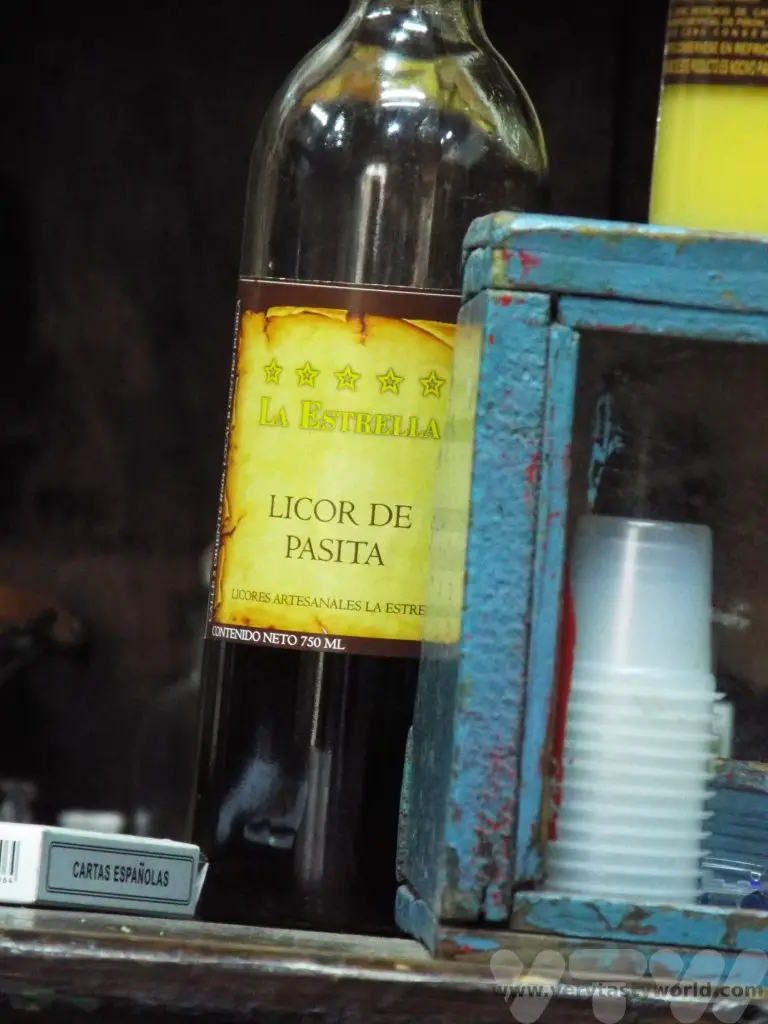
It’s sweet and boozy and rounded off an amazing tour.
Fine Dining
The street food tour of Puebla was a fantastic introduction to this city’s delectable, diverse and delicious cuisine. We also have a restaurant recommendation for local food in a fine dining context (which we visited on a different day to the foodie tour). El Mural de los Poblanos is on Calle 16 de Septiembre and offers typical Puebla food. Again, this mole was more authentic than some of the more touristy establishments.
It’s very popular so it’s definitely worth making a booking. Also, we made the mistake of ordering cemitas as our starters (before we knew what they were) which turned out to be so enormous that we knew we wouldn’t be able to eat our mains if we ate them all, so the staff were very kind and boxed up the extra food for later snacking.
There is also a craft beer emporium, the Bilderberg taproom on Av 5 Ote, which we felt was important to investigate. They offered pints of local draft beer as well as tasting flights. They had a stout which was extremely good indeed, although it was only after we’d quaffed a couple of pints and tried to stand up that we realised that it was 12%! Those leftover cemitas came in handy soaking up the booze later that night to try to mitigate the hangover.
We thoroughly enjoyed our time in Puebla – there was so much to see and do and taste. We’d consider it an essential stop on any Mexico tour. We can’t wait to return!
Related Posts You May Enjoy

- Best Time To Visit Machu Picchu 2024 Update
- A 2 Week Patagonia Itinerary
- Day of the Dead in Campeche
- A Galapagos Land Based Itinerary
- RECIPE: How to Make Costa Rica’s Gallo Pinto
- A Tasty Puebla Food Tour
- Costa Rica Wildlife Sanctuary – Caño Negro
- Visit Torres del Paine National Park in Patagonia
- Atacama Desert Itinerary
Costa Rica Wildlife Sanctuary – Caño Negro
Beautiful Costa Rica is well known for its amazing wildlife. This relatively small country in Central America has twenty-three national parks, three of which are UNESCO sites. We took a trip from the east coast to the west, visiting many wildlife parks. The tourism infrastructure is really well developed with easy transportation between locations and many tour operators that can offer trips to various attractions.
Please note that this post contains affiliate links. If you click through and decide to make a purchase we will make a small commission, at no extra cost to you, which will help towards the costs of running this site.
Having enjoyed Tortuguero, where we had been lucky to see a greenback turtle nesting, we moved onto La Fortuna de San Carlos, close the Arenal volcano, in the middle of the country. It is an ideal location to use as a base to explore this region and there are loads of exciting activities to undertake in the area, from caving to wildlife viewing.
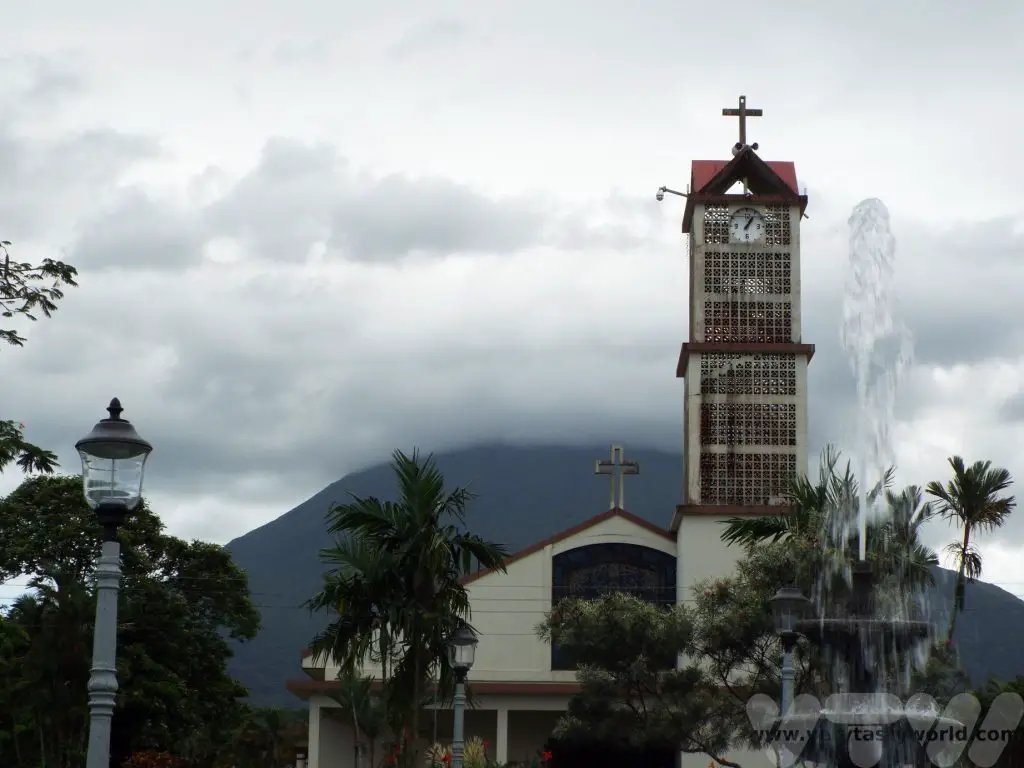
One of the trips we enjoyed was to the Caño Negro wildlife sanctuary. As with most tours in Costa Rica, there are companies in La Fortuna that can arrange the trip and will pick you up from your hotel or guest house.
It’ll take a couple of hours to get there from La Fortuna. Our guide was a naturalist who was not only knowledgeable about the local wildlife but was also really keen to tell us all about the fruit that grows in the region as well.
The Caño Negro, close to the Nicaraguan border, is a Costa Rica wildlife sanctuary which has the status of a national park, a Ramsar wetland of international importance, and one of the most biologically diverse areas in the country.
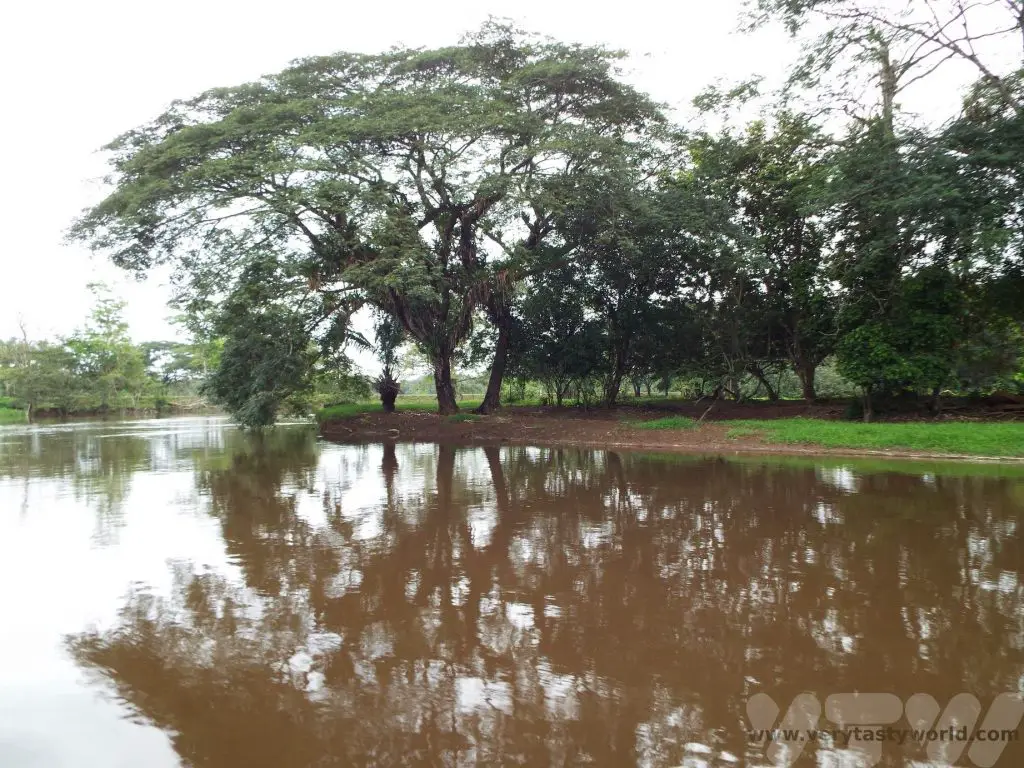
Boat Trip on the Río Frío
Once at the Caño Negro you can board a boat and enjoy a fascinating cruise up and down the Río Frío.
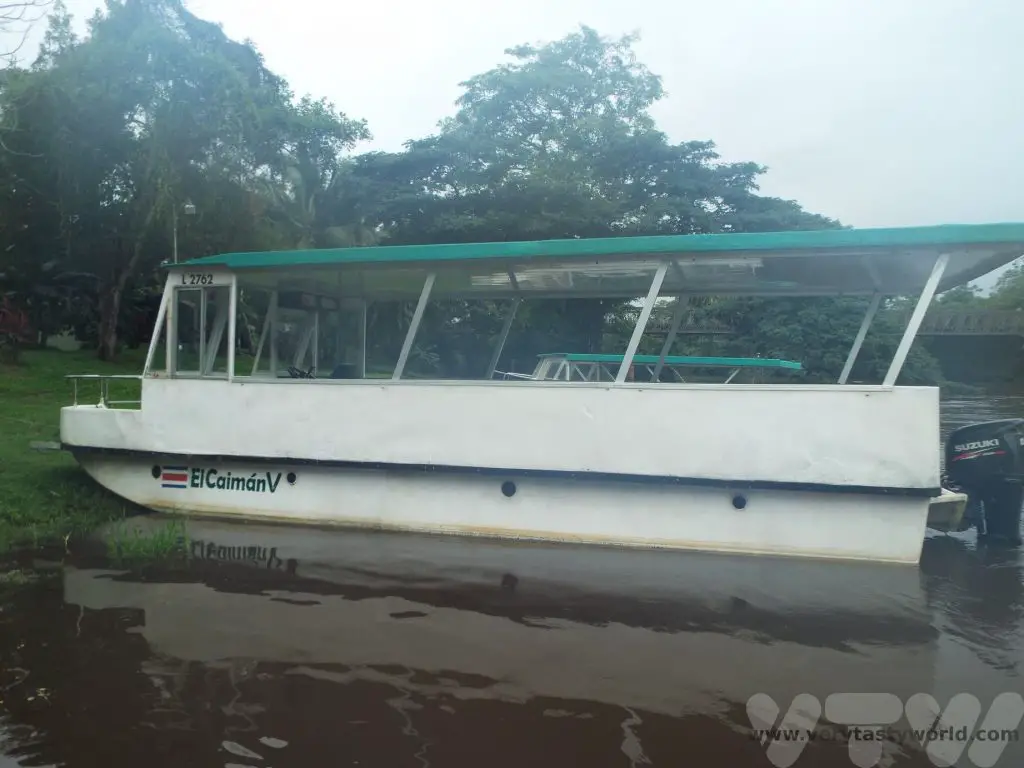
Wildlife viewings are pretty much guaranteed. Good guides will be able to spot plenty of birds, reptiles and mammals and, importantly, be able to point them out so that you can take pictures. Of course, you may not get to see the more elusive residents: the cougars, jaguars and ocelots, but there were plenty of monkeys, iguana, caiman, beautiful birds and, of course, sloths to see.
Howler monkeys are the loudest monkeys in the area. Their calls can travel 5km! They use the vocalisation to communicate with each other and establish territory.
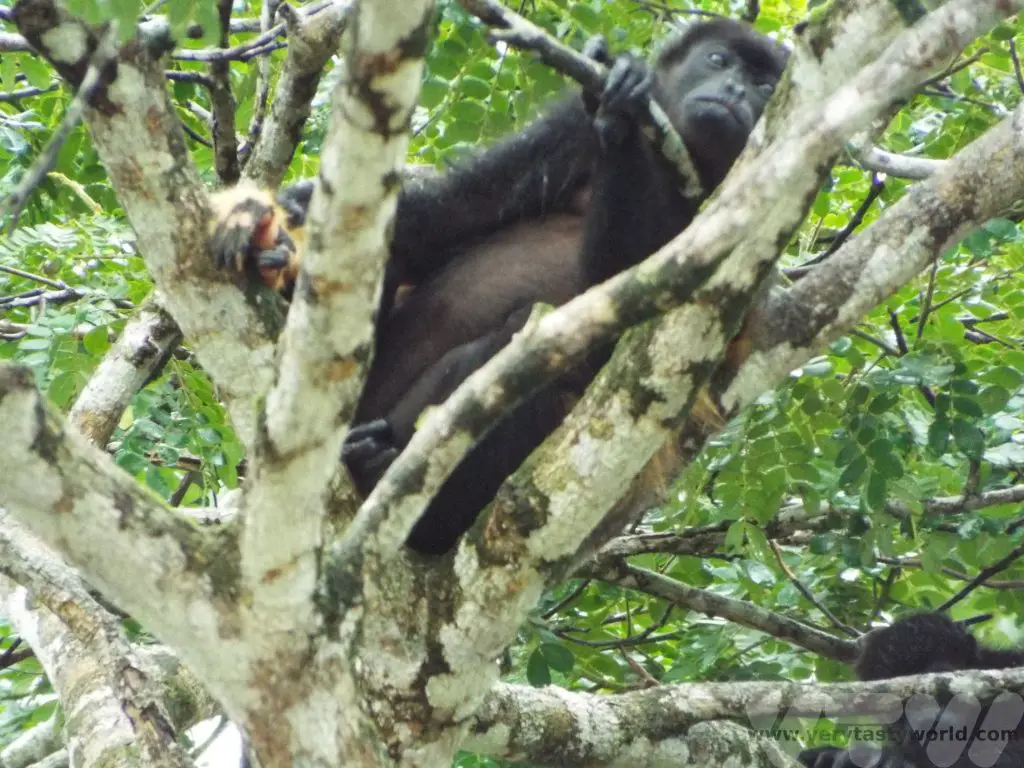
White faced monkeys, also known as capuchin monkeys, look adorable but are very naughty. They are regarded as the most intelligent of the monkeys in the region but can be quite vicious, fighting over the fruit in the trees and stealing from each other.
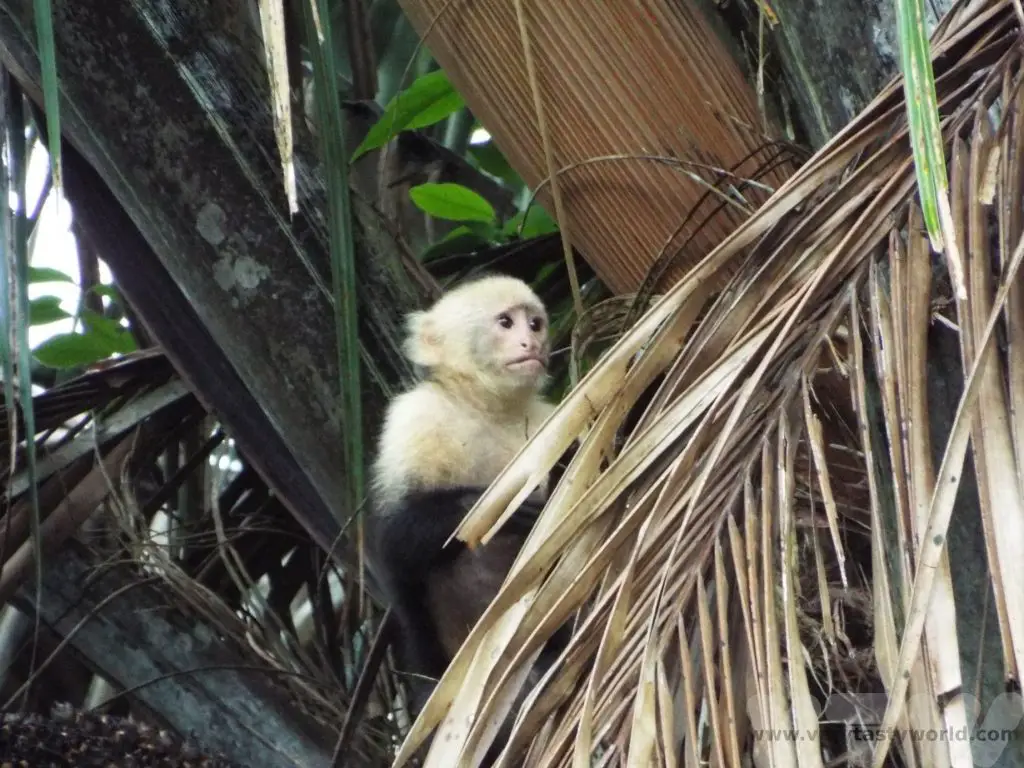
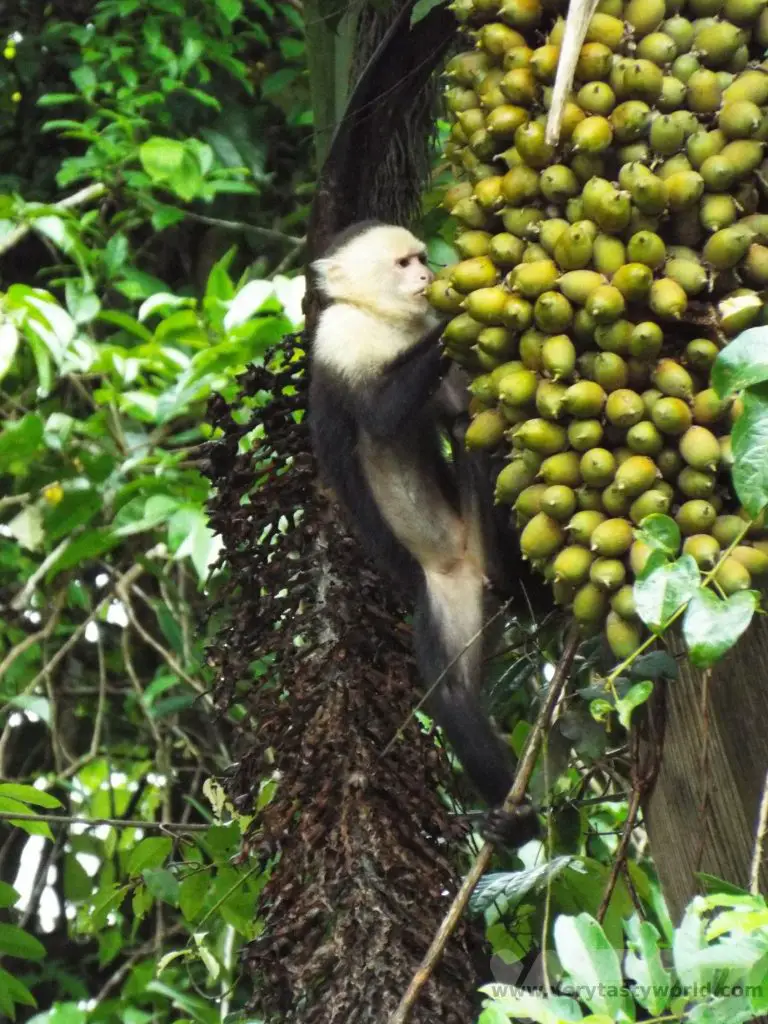
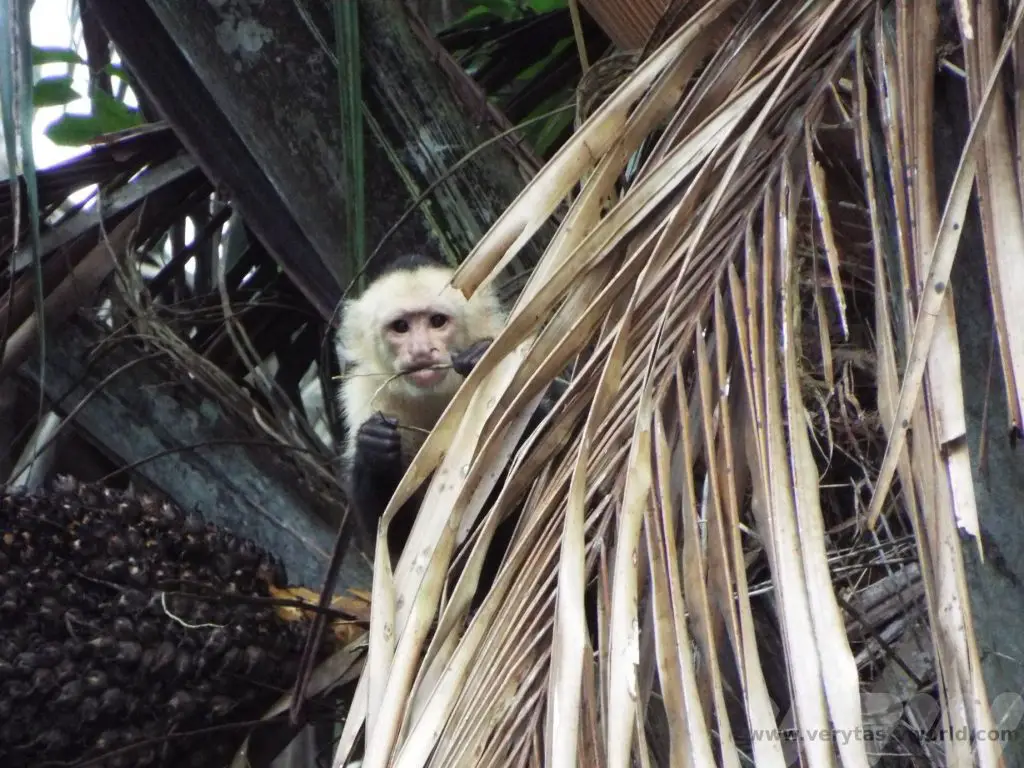
This beautiful kingfisher got lucky catching a fishy snack.
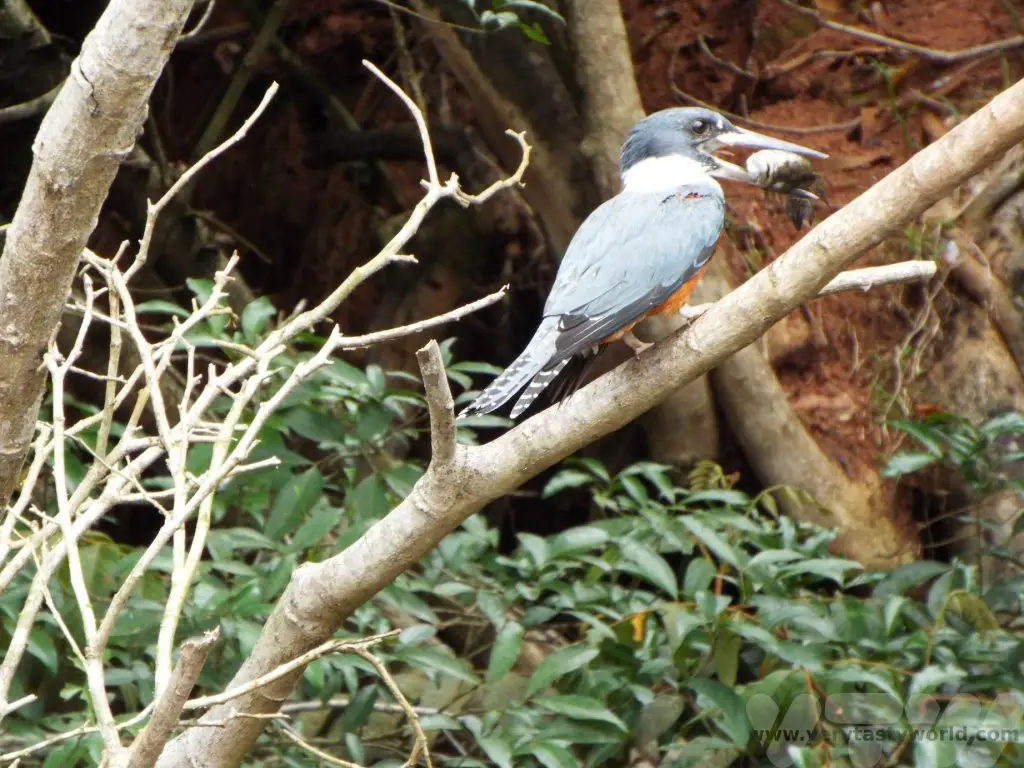
And this egret was having a good wade searching for food.
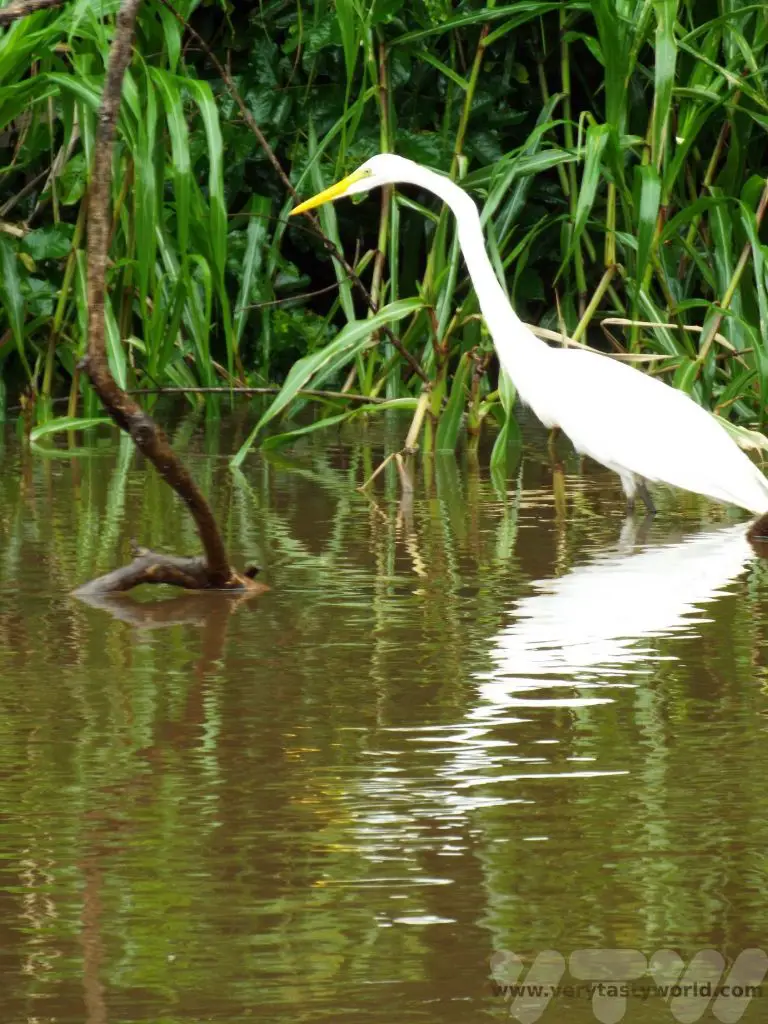
And there were plentiful iguana hanging around in trees and on the surrounding fields.
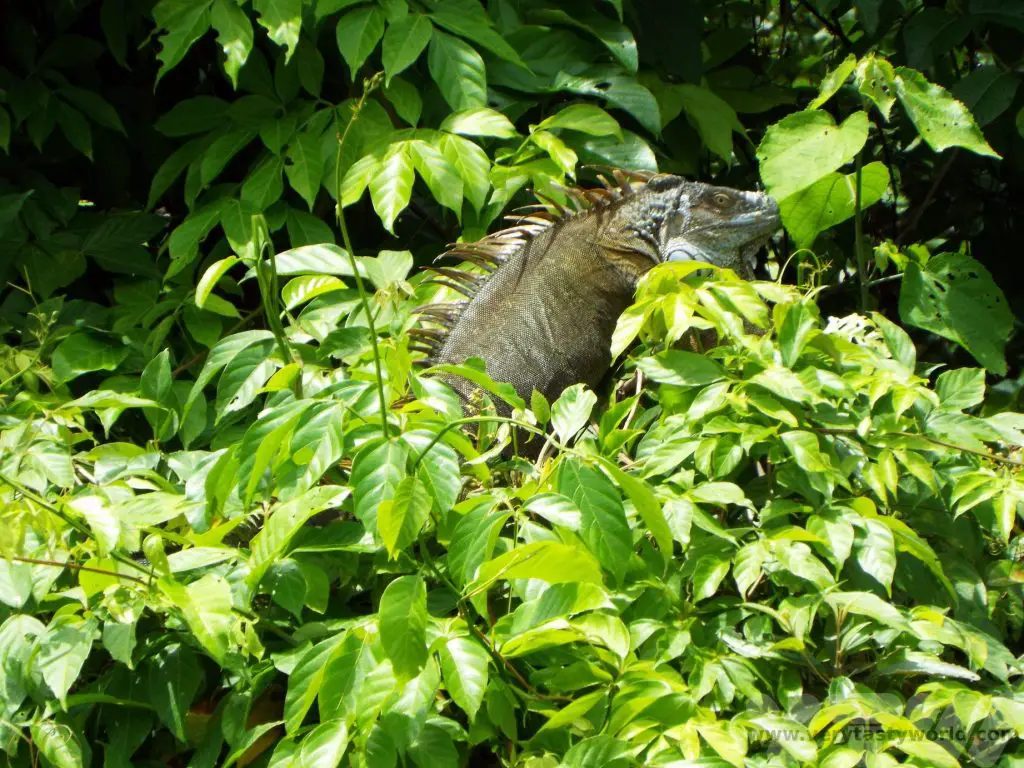
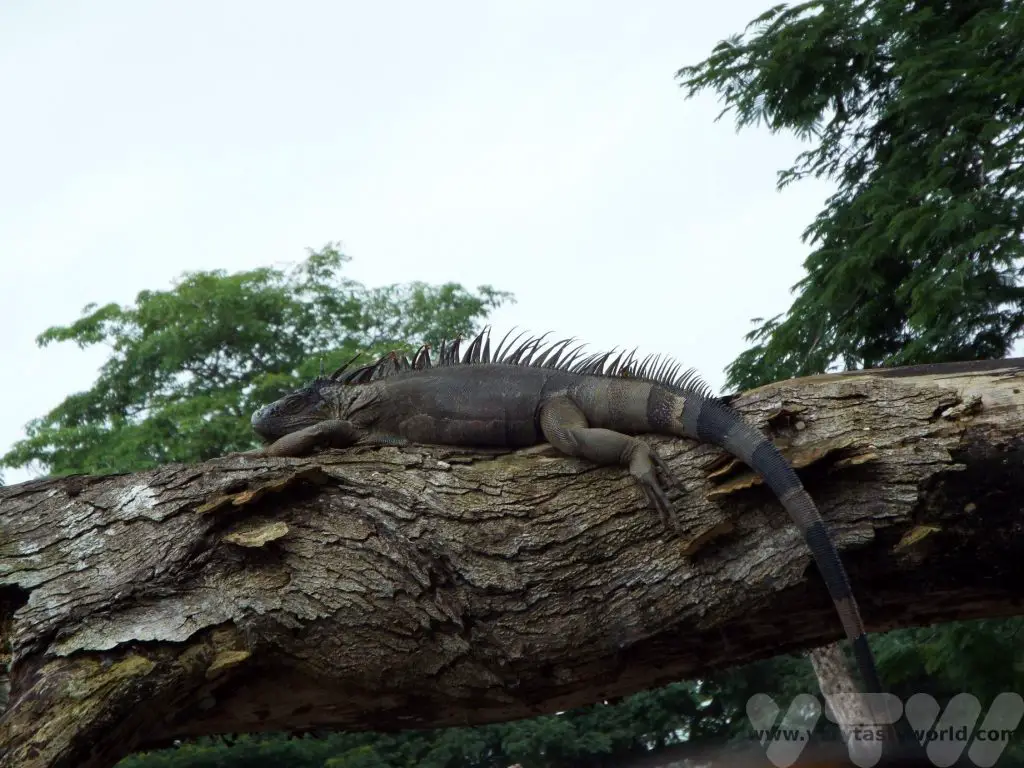
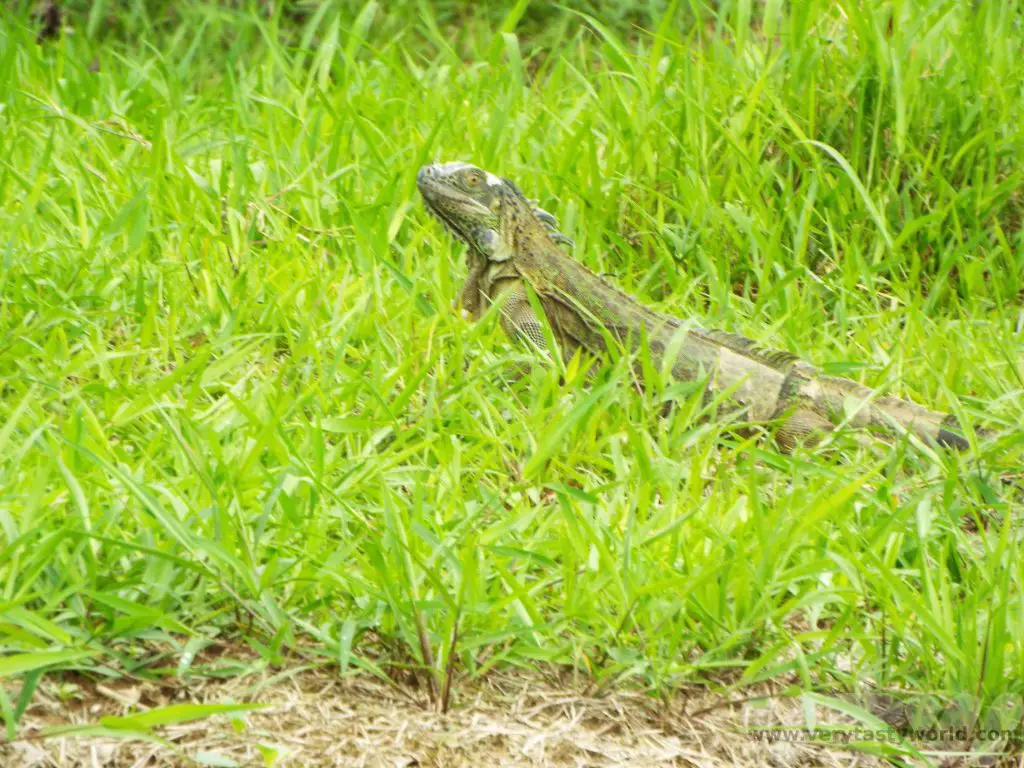
The anhinga is also known as the snake bird because when it swims in the water you can only see its elongated neck, which has the appearance of a snake gliding through the river.
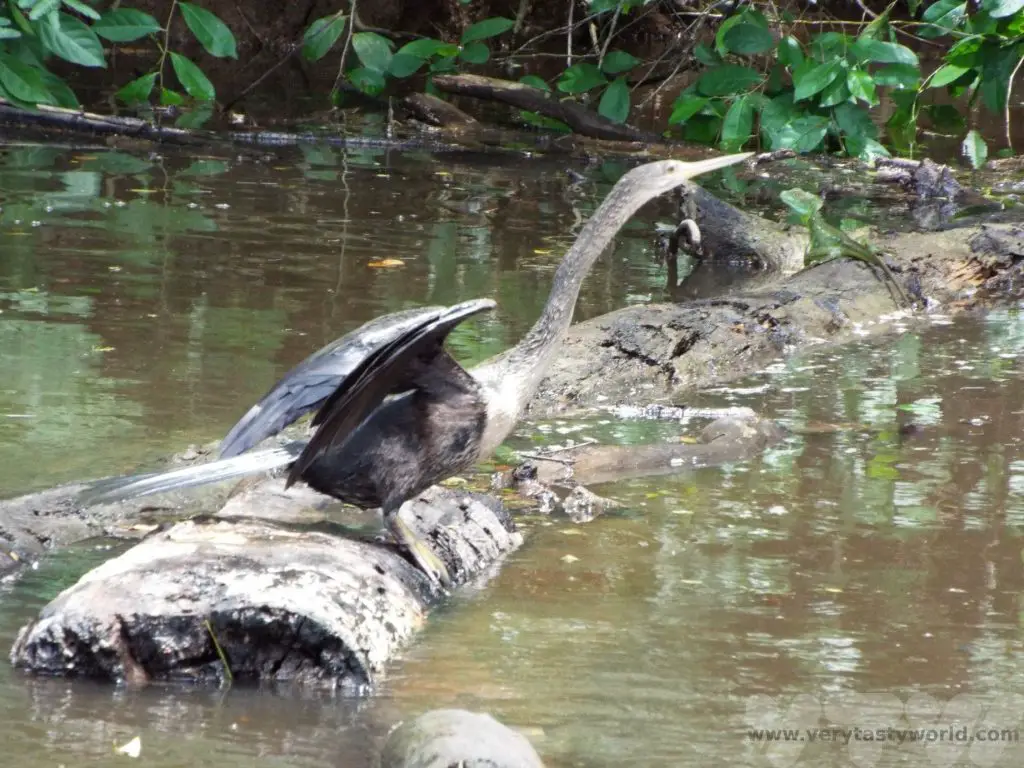
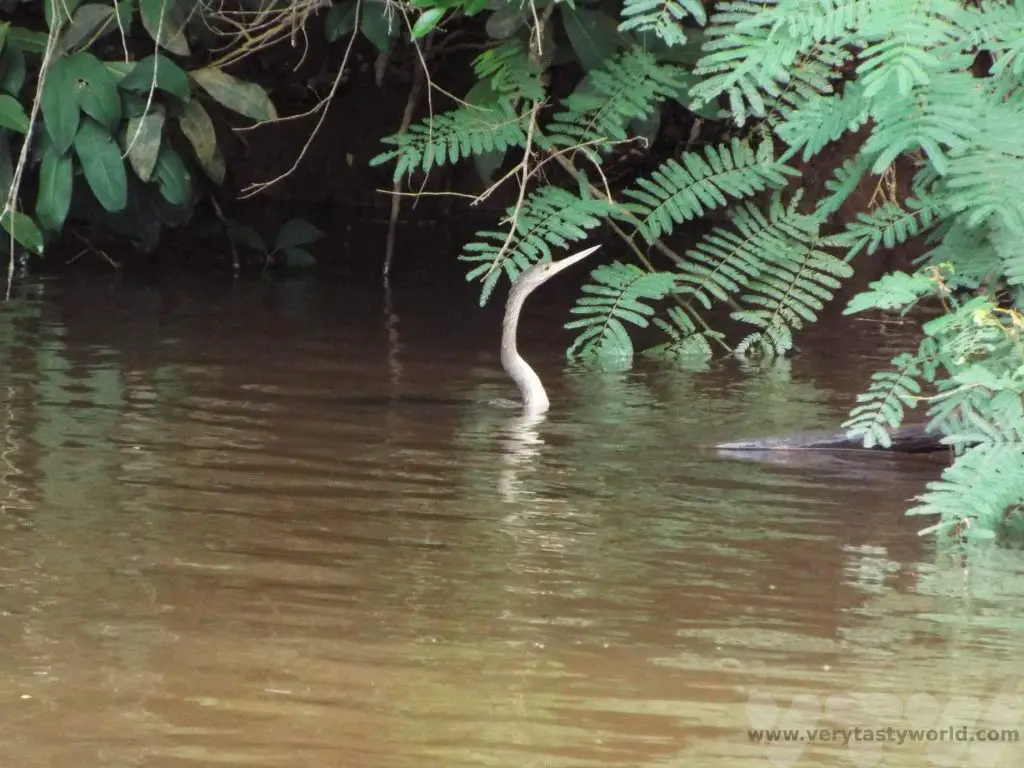
The Jesus lizard, or to give it its correct name, basilisk lizard, derives its moniker from being able to run across the water on its rear legs. It is possible for the species to do this because they have little scales on their back toes which form webs that trap water and air bubbles underneath them. If they run quickly enough the bubbles underneath these webs prevent them from sinking into the water. The lizards are able to swim if they go too slow.
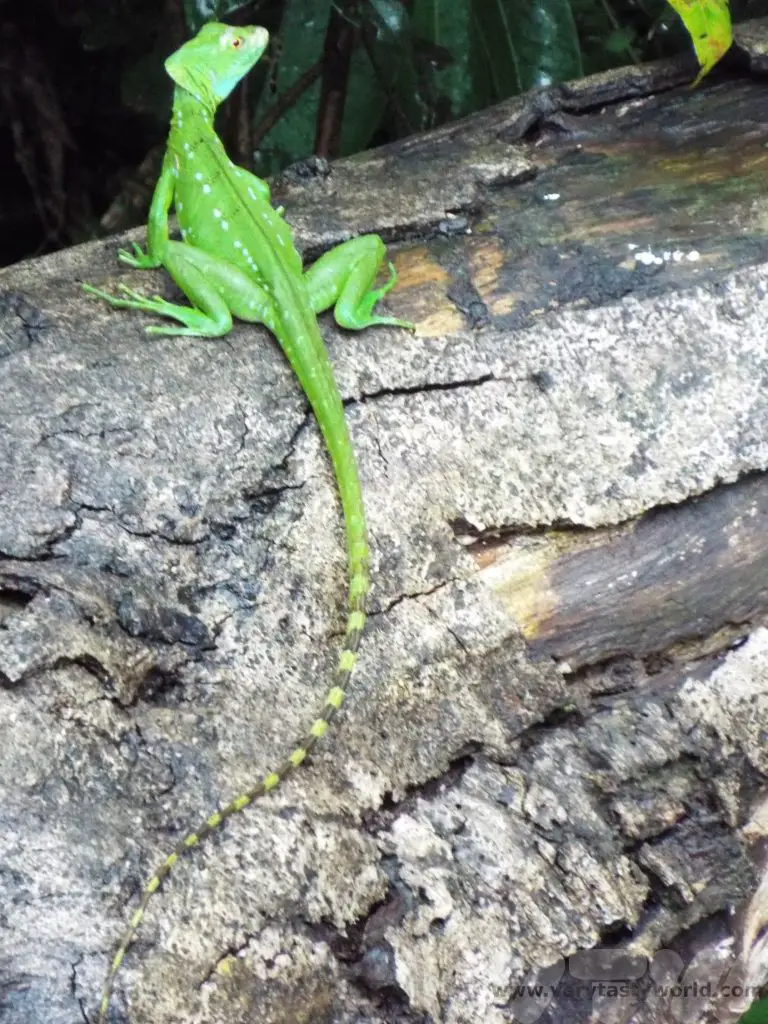
We sailed past a nonchalant caiman.

Sloths are probably the creature that most visitors to Costa Rica definitely want to see. On this excursion we saw a Two-Toed sloth, hanging around in the tree, which is what sloths do best.
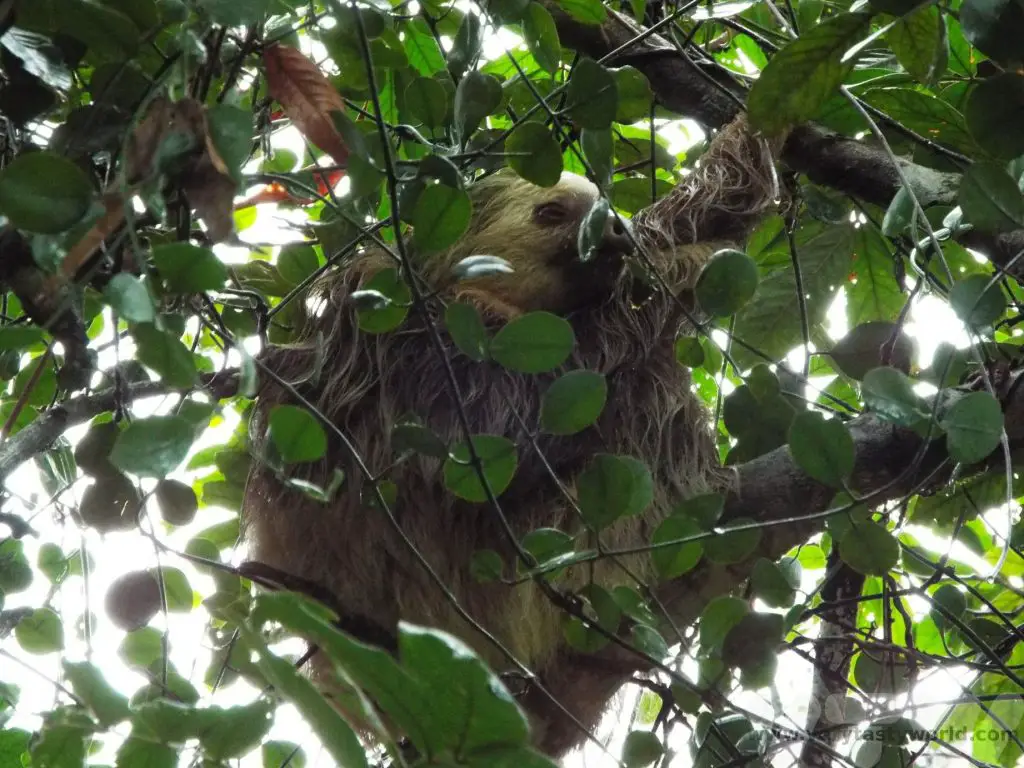
There are two species of sloth in Costa Rica: Two-Toed and Three-Toed. (We did see the Three-Toed Sloth, but on the Pacific coast, not on this river trip.) They are absolutely fascinating creatures – they appear to be incredibly lazy but this is largely because they have a very slow metabolism and most of their time is spent in the tree canopies. They have a multi-chambered stomach that is capable of digesting tough leaves but the digestion process takes a very long time. Once they are up a tree they will stay there for several days, only coming down for a poo, which happens once week. Pretty much everything else happens in the trees – eating, sleeping, mating, even giving birth.
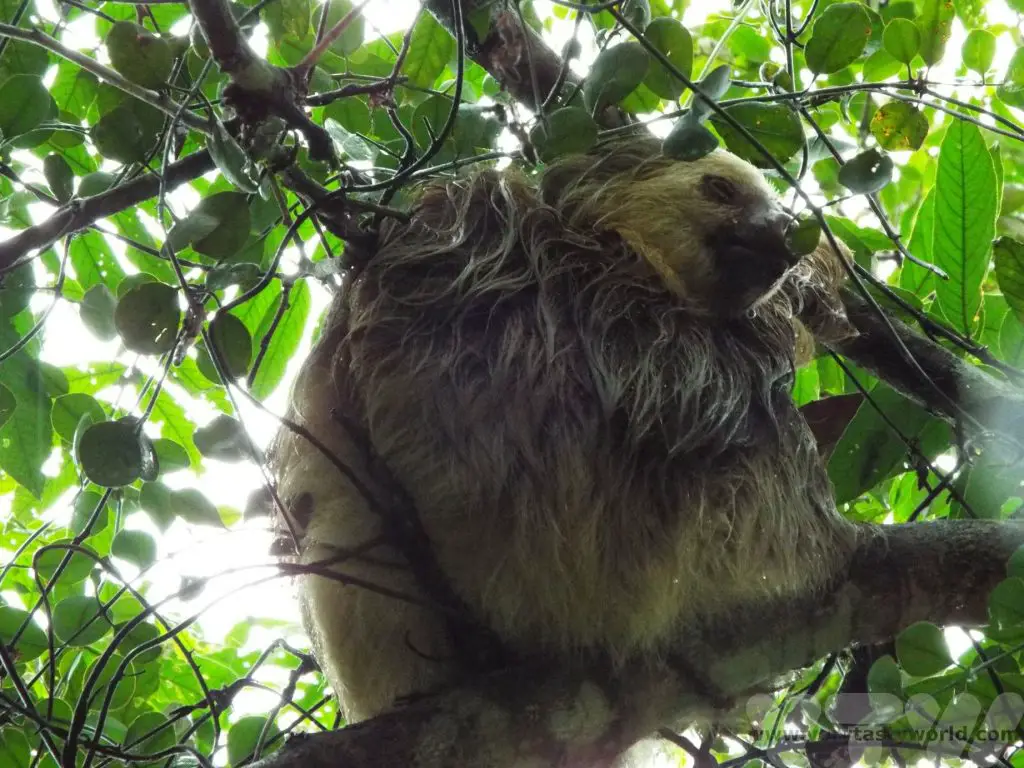
They are often covered in green algae, with which they have a symbiotic relationship, the algae providing them with some nutrition. In turn, the sloth’s fur, which retains water well, is an idea environment for the algae to thrive. It also helps provide camouflage – the sloth’s natural predators include ocelot and jaguar.
The species have been around for 65 million years, so there’s probably something to be said for taking things easy in life!
A Downpour
The river trip was hugely enjoyable but as we were travelling in the mid-season in June/July (it is rainy but not hurricane weather) we did experience something of a downpour. When it rains in Costa Rica, it rains! (Some areas we visited receive around 5000mm annually.) The showers at this time of year are extremely heavy but usually short-lived, lasting no more than twenty minutes to half an hour. The boat had a roof and our captain kindly rescued some kayakers who were enjoying their gentle paddle on the river until they got a complete soaking! They were hugely relieved when we picked them up and they stepped aboard looking somewhat bedraggled. We always recommend bringing wet weather gear if travelling at this time of year.
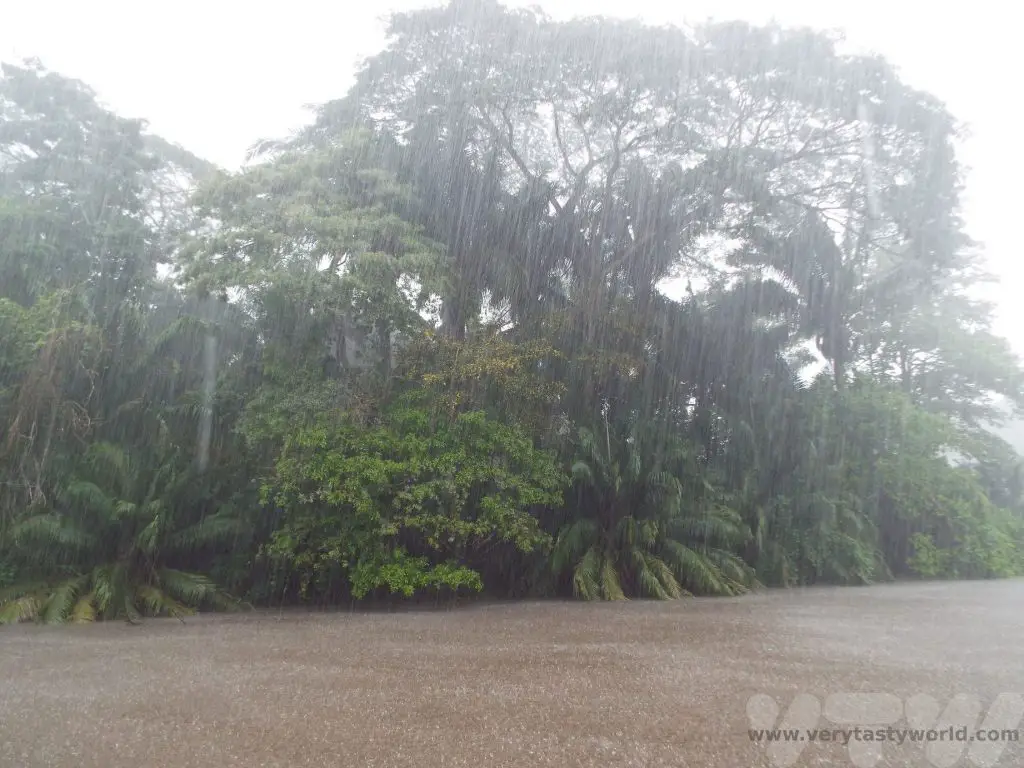
Feeling Fruity
After the boat trip through the wildlife sanctuary, lunch was provided. It was quite common at the end of most excursions we enjoyed in the country. We were treated to a fruit feast.
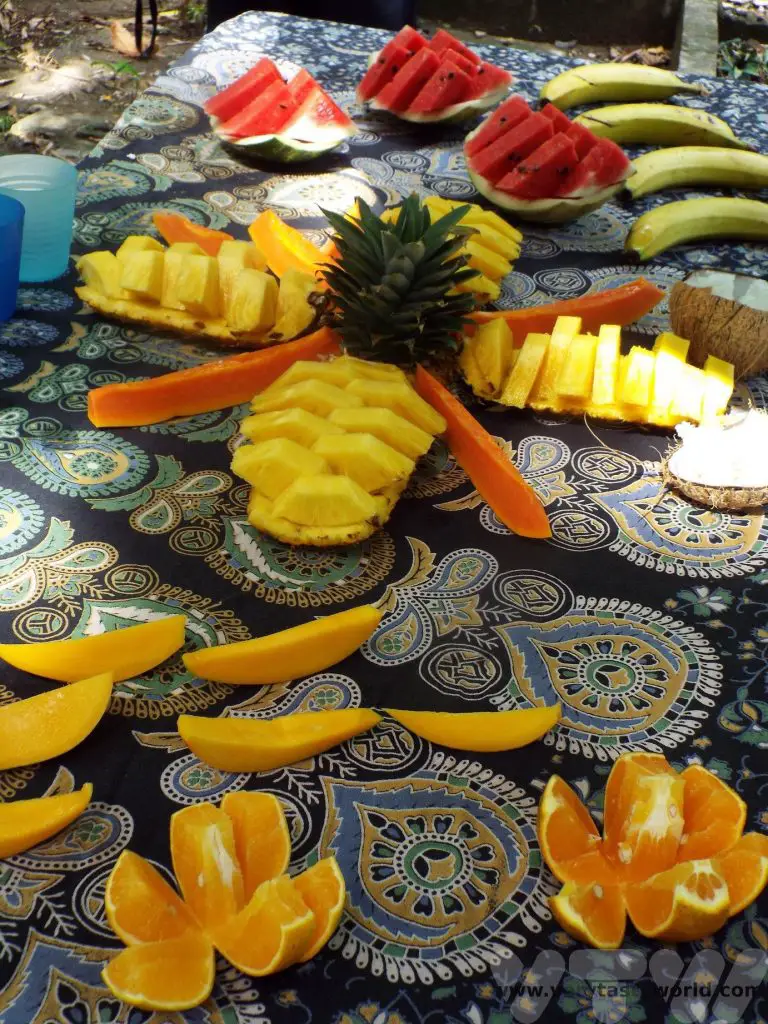
One of the wonderful things about Costa Rica is the utter deliciousness of the fruit. Around the Arenal Volcano area the soil is incredibly fertile and on our way to Caño Negro we saw vast plantations growing all sorts of fruit. In fact, the tour guide stopped the minibus a couple of times to buy some fruit from local sellers, so that he could offer us a taste. He also provided a running commentary throughout the journey telling us about the fruit industry in Costa Rica.
The pineapples were a revelation. Even the freshest pineapples we’ve ever eaten in the UK (often from Costa Rica!) were nothing compared to the organic local fruit. Most pineapples that are grown for export are treated chemically where they are stored (they can last up to a year) and ripened after they have arrived at their destination. It is such a shame that so many pineapples are grown this way – it isn’t good for the environment and the fruit’s flavour isn’t as good as it could be. Compare that to an organic pineapple and the taste is completely different. The local fruit had a really rich vibrant flavour, both sweet and tart.
The pineapple is actually a flowering plant. Only one flower grows each year per plant and it is only possible to gain a pineapple in three successive years. The first year’s is the biggest and these are the ones that are usually exported overseas. The second year’s pineapple is smaller and would generally be used for the local market or taken to a processing factory where it would likely end up in a tin. The third year’s fruit will be very small and will become juice.
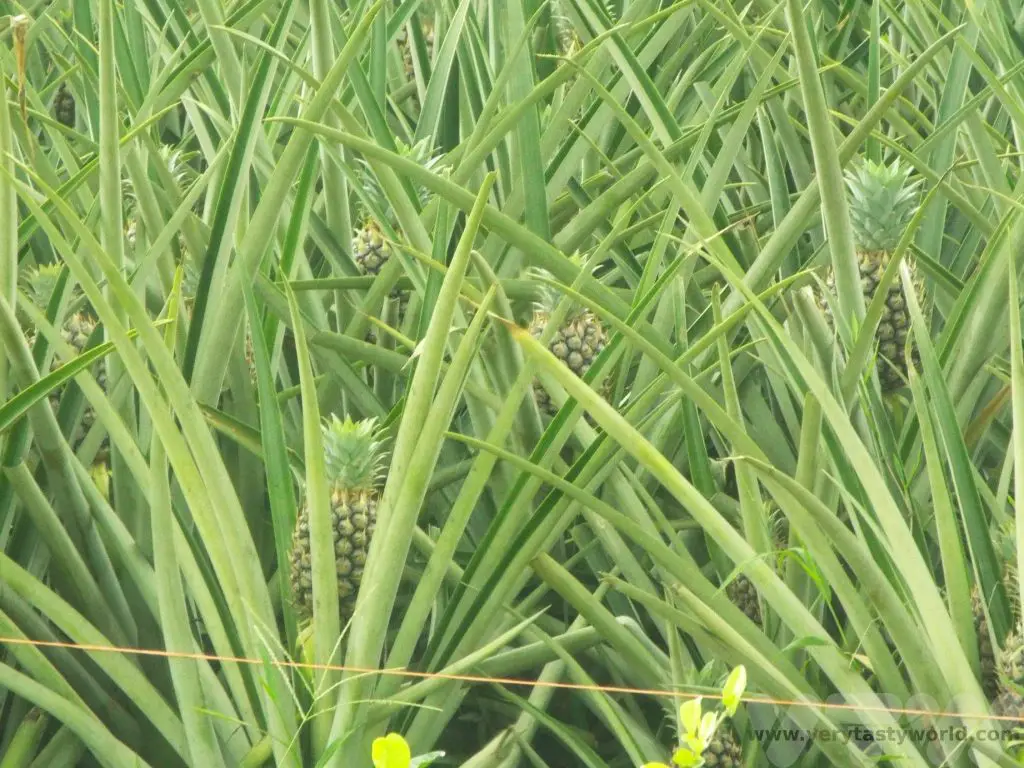
There’s a perception in many western countries that oranges should actually be orange. But many oranges aren’t as luridly orange as those classic fruit from Seville. The oranges in Costa Rica might not look the part but taste just fine. Bananas are another fruity staple of Costa Rica and plantations can be seen all over the country.
Many of the fruits grown in the country are familiar as they are exported around the world. However, there are some more unusual offerings which we were delighted to discover. Rambutan, also known as Mamon Chino, which apparently translates to Chinese Sucker, is a bizarre looking tropical fruit. You have to peel the pretty and colourful soft spikes to reveal the clear coloured flesh. They look similar to grapes or lychees and have a comparable texture although the flavour is very different, sweet and slightly sour, and nowhere near as perfumed as a lychee. There’s a seed inside that you need to be aware of – don’t bite too hard!
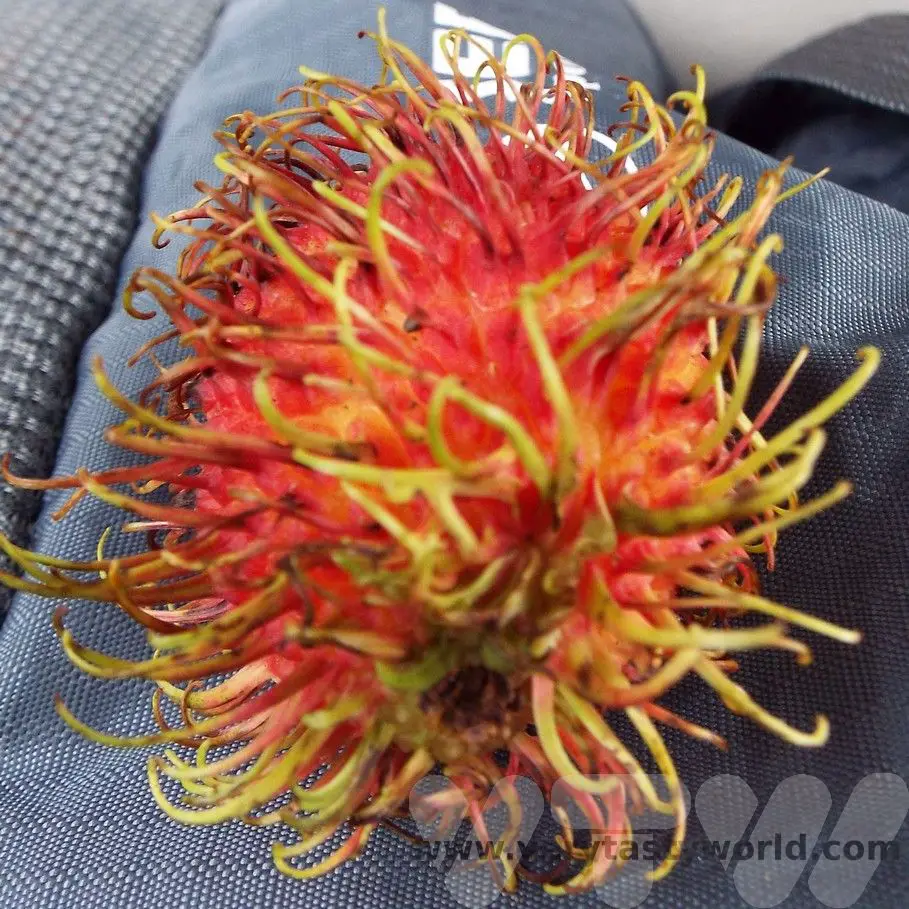
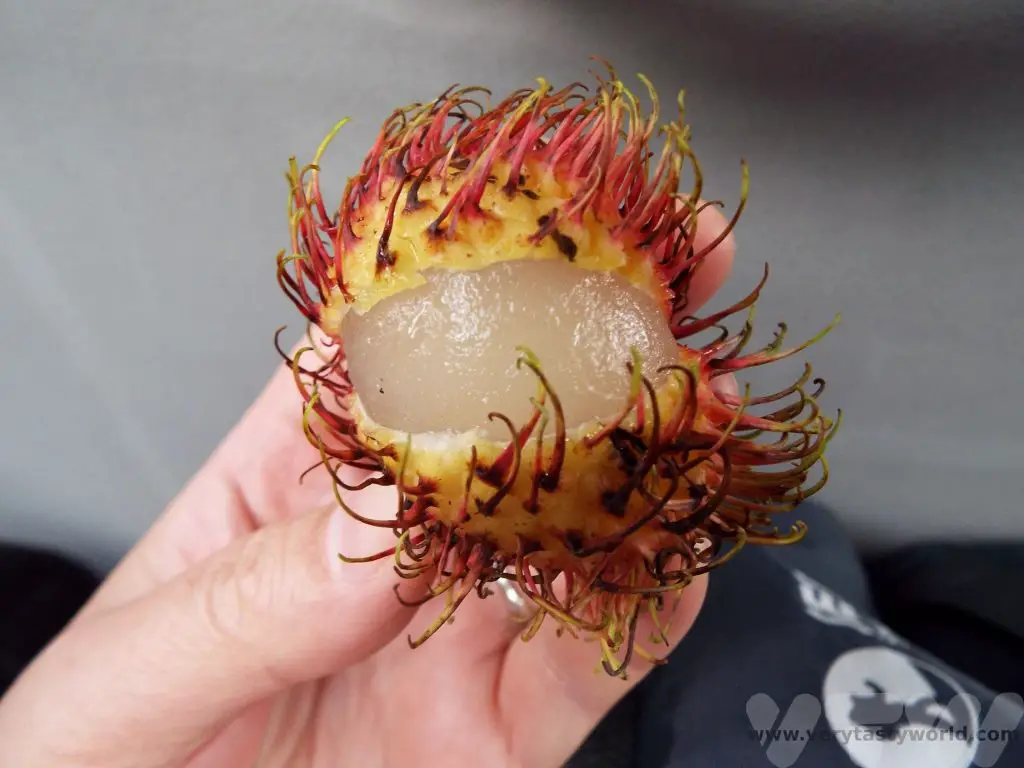
Noni is smelly and tastes bitter but apparently has health benefits. It’s not a fruit you would eat for pleasure. Some people mix it with other fruits in smoothies to disguise its flavour.
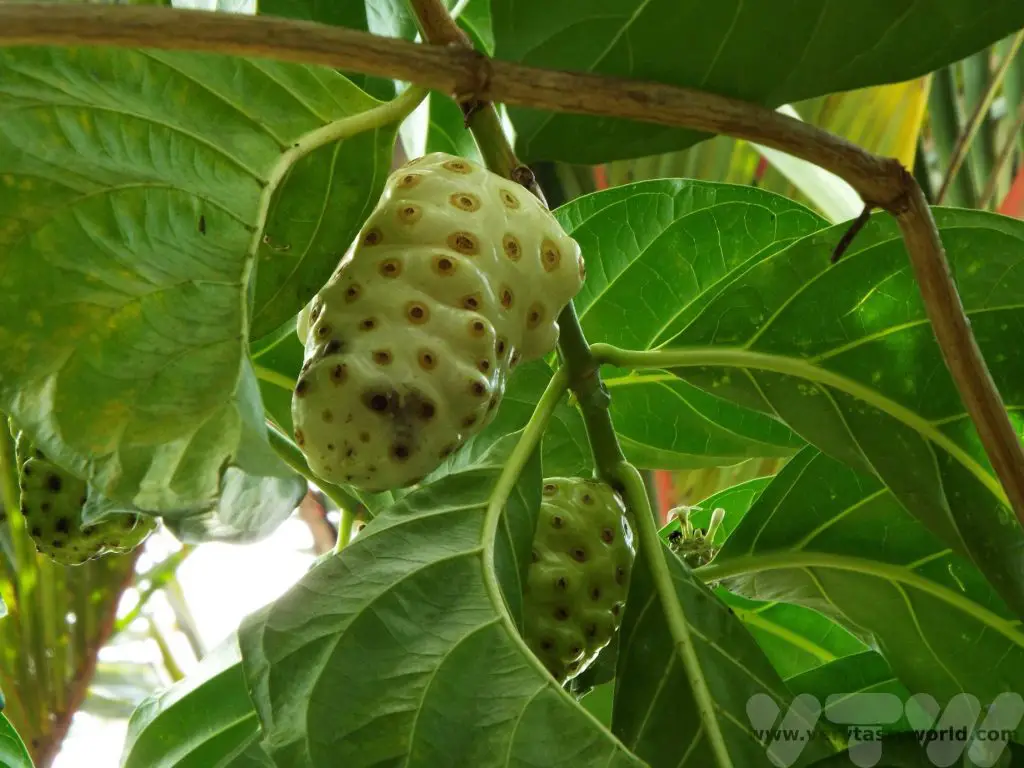
In Costa Rica you are guaranteed to enjoy at least ten of your ‘five a day’.
Related Posts You May Enjoy

- Best Time To Visit Machu Picchu 2024 Update
- A 2 Week Patagonia Itinerary
- Day of the Dead in Campeche
- A Galapagos Land Based Itinerary
- RECIPE: How to Make Costa Rica’s Gallo Pinto
- A Tasty Puebla Food Tour
- Costa Rica Wildlife Sanctuary – Caño Negro
- Visit Torres del Paine National Park in Patagonia
- Atacama Desert Itinerary
